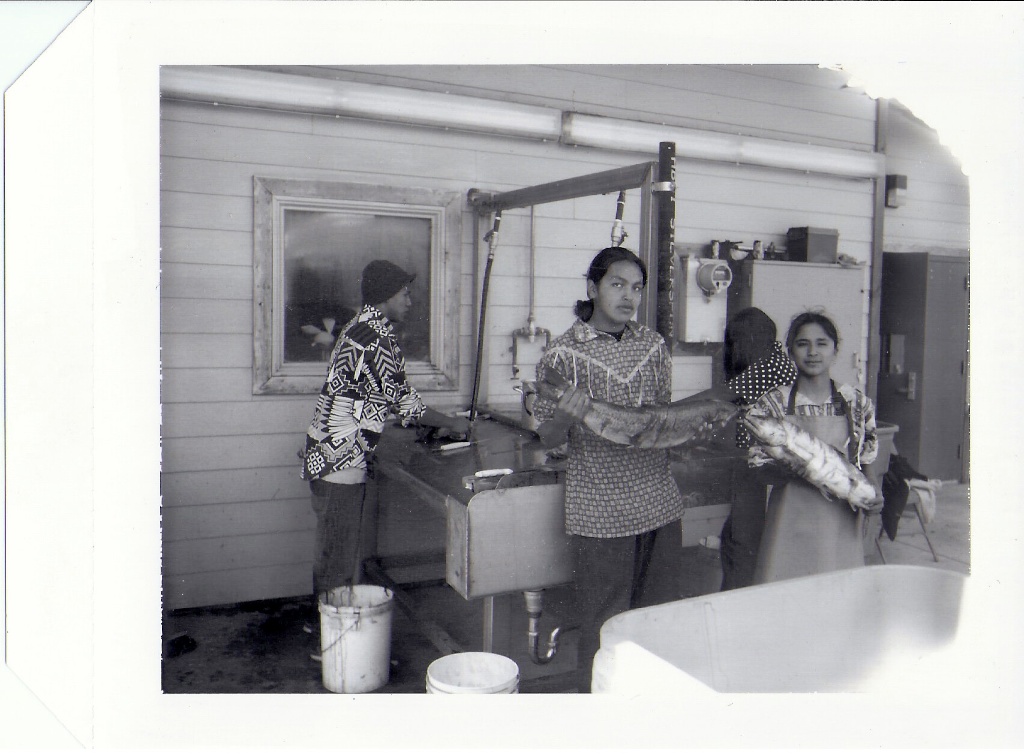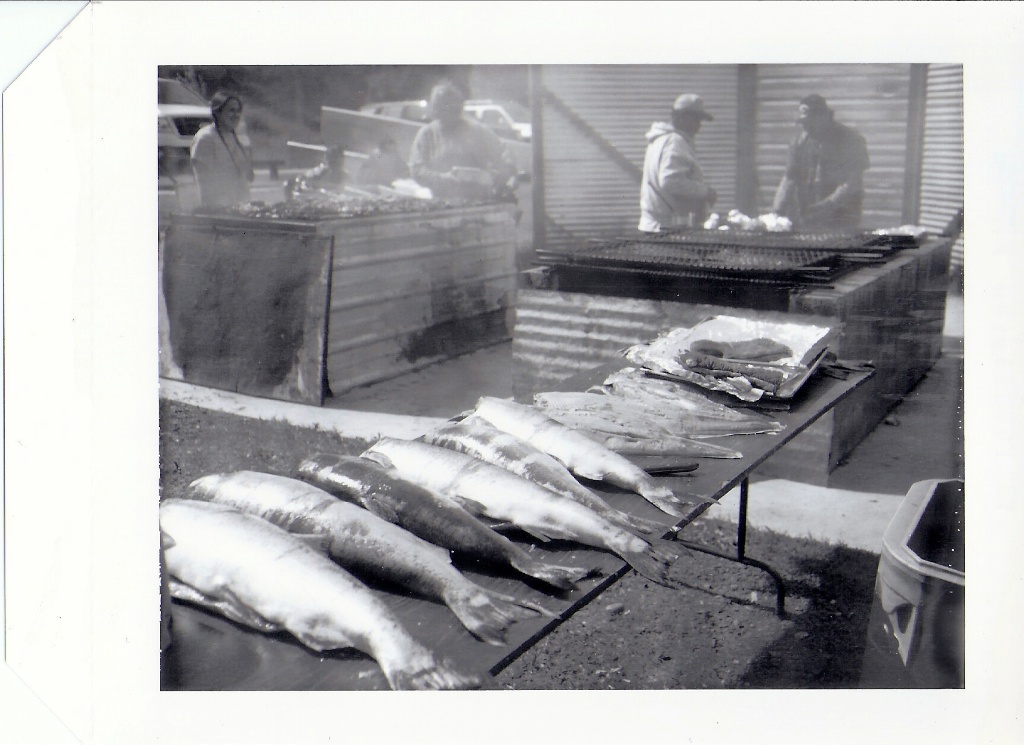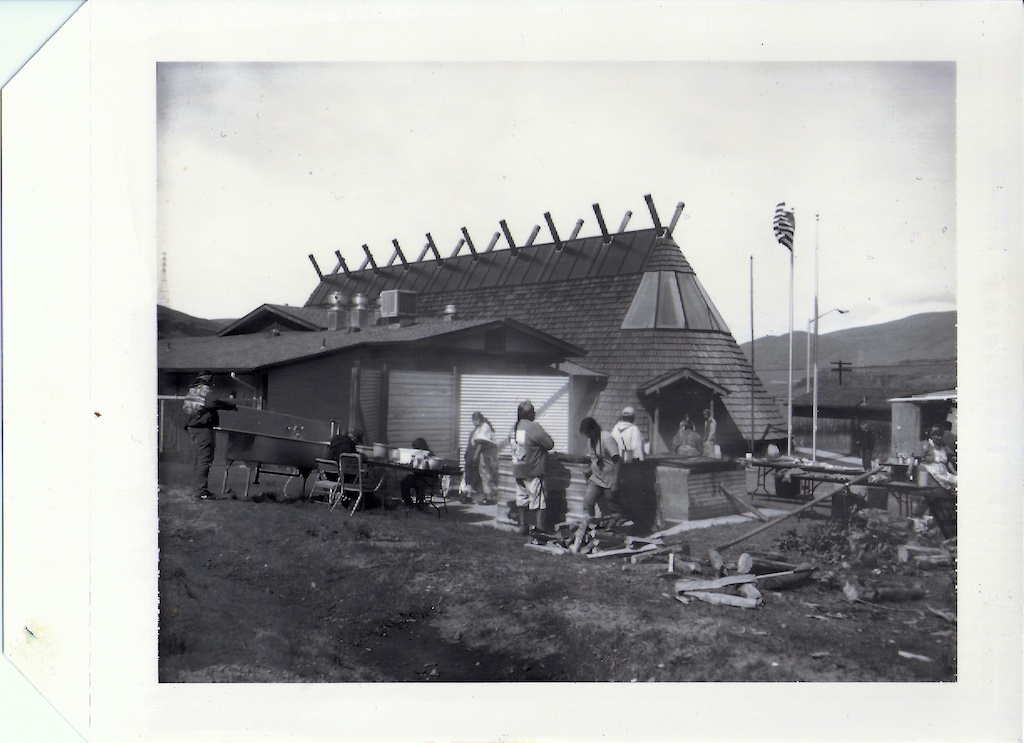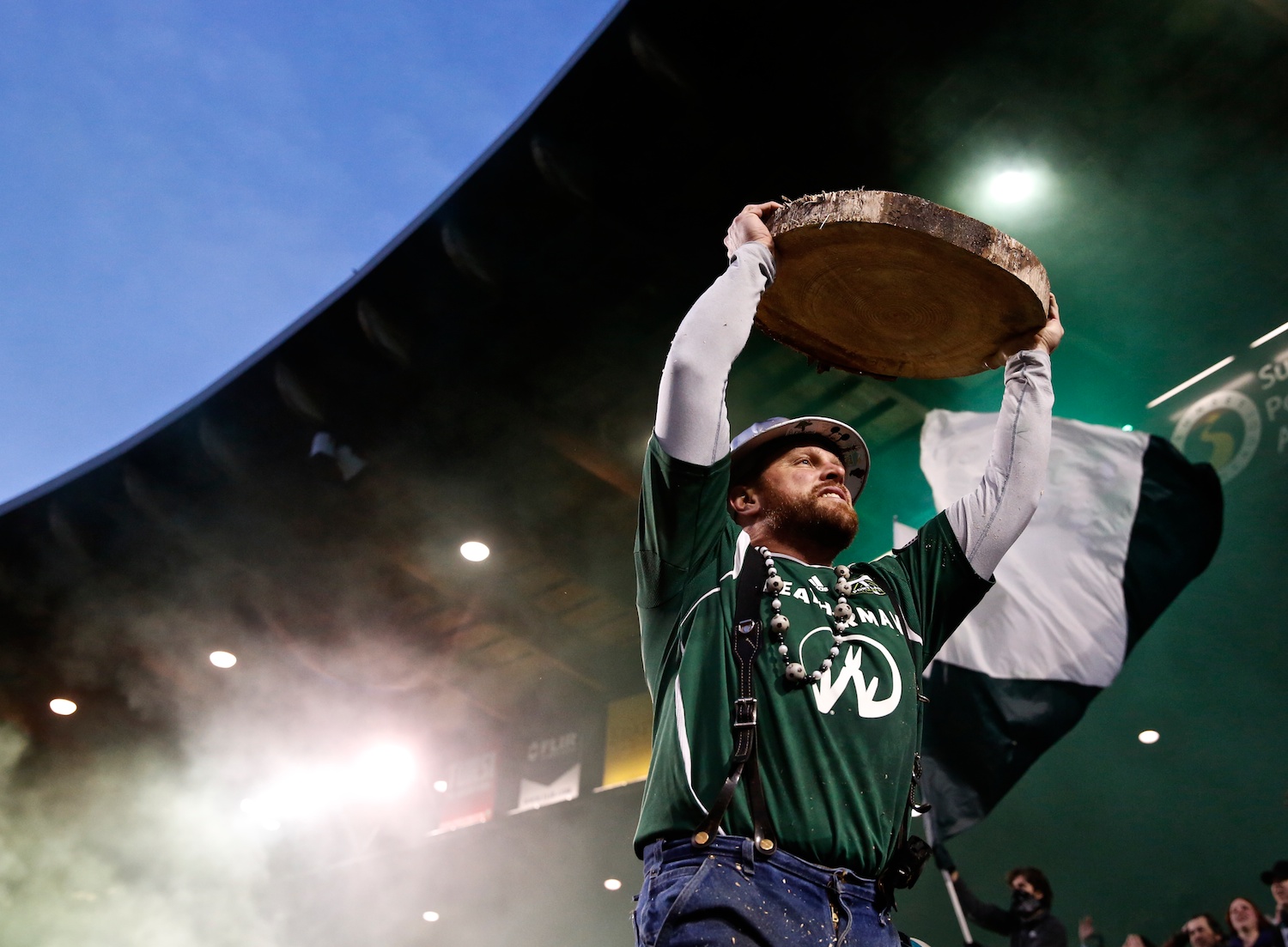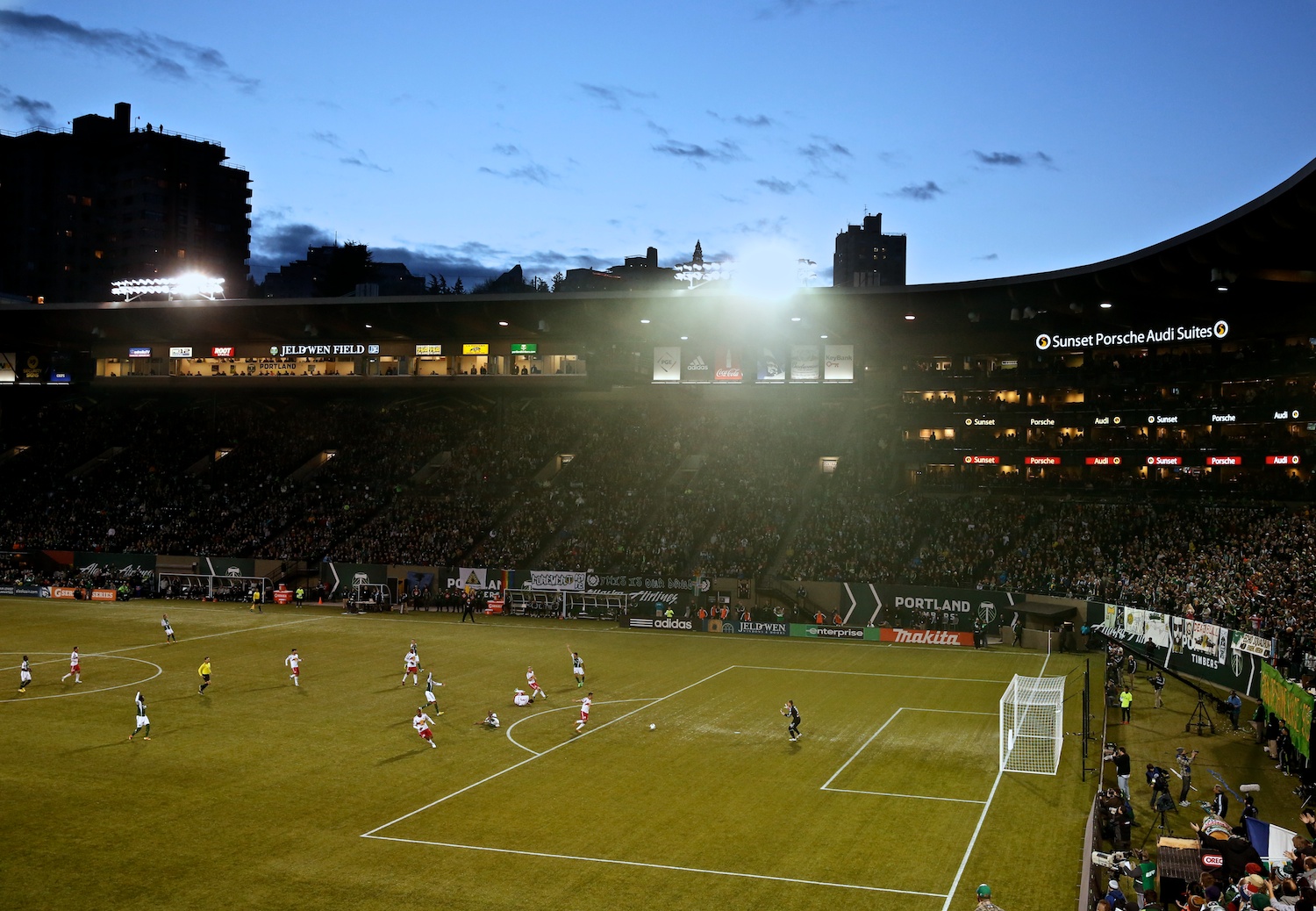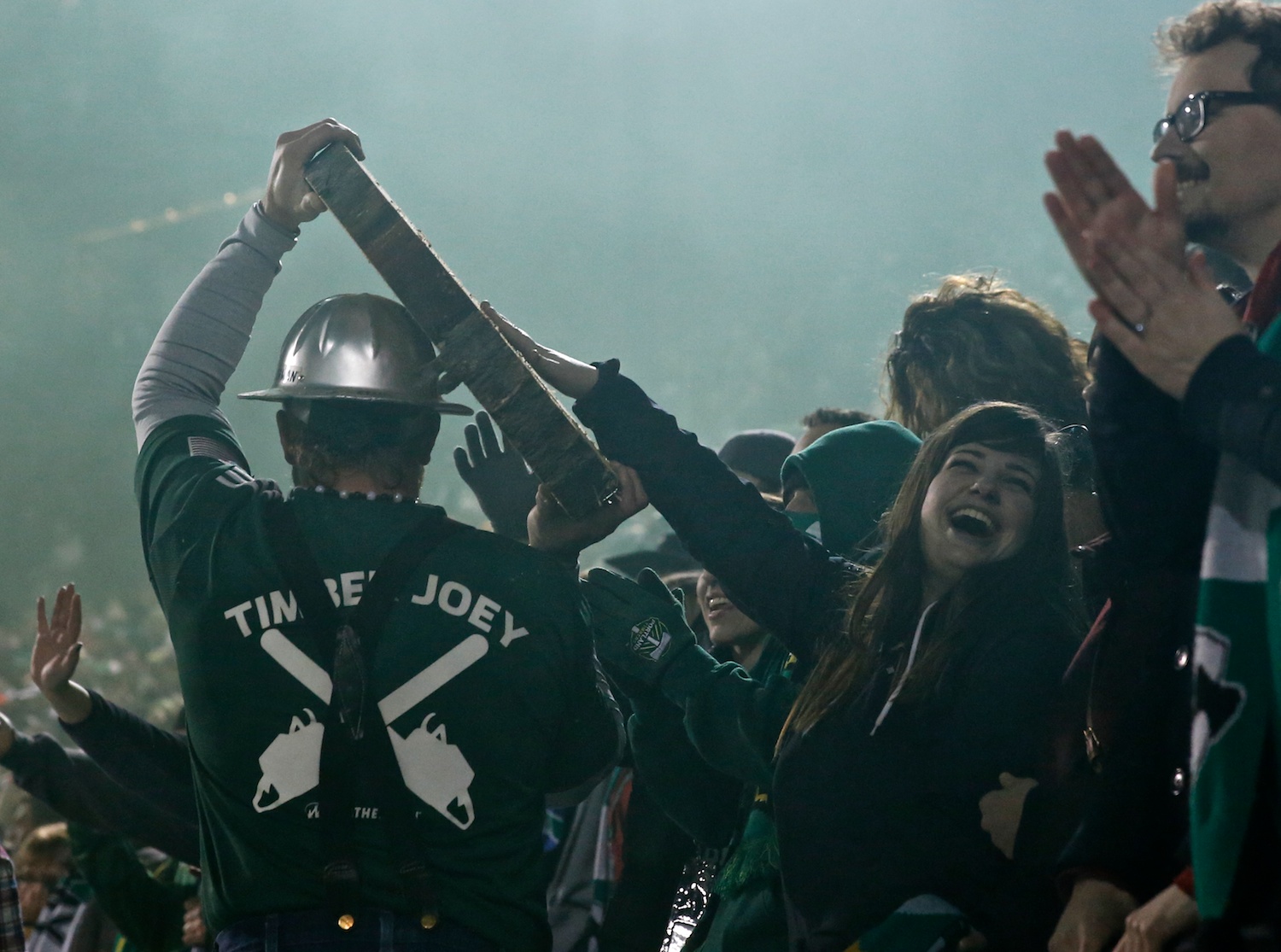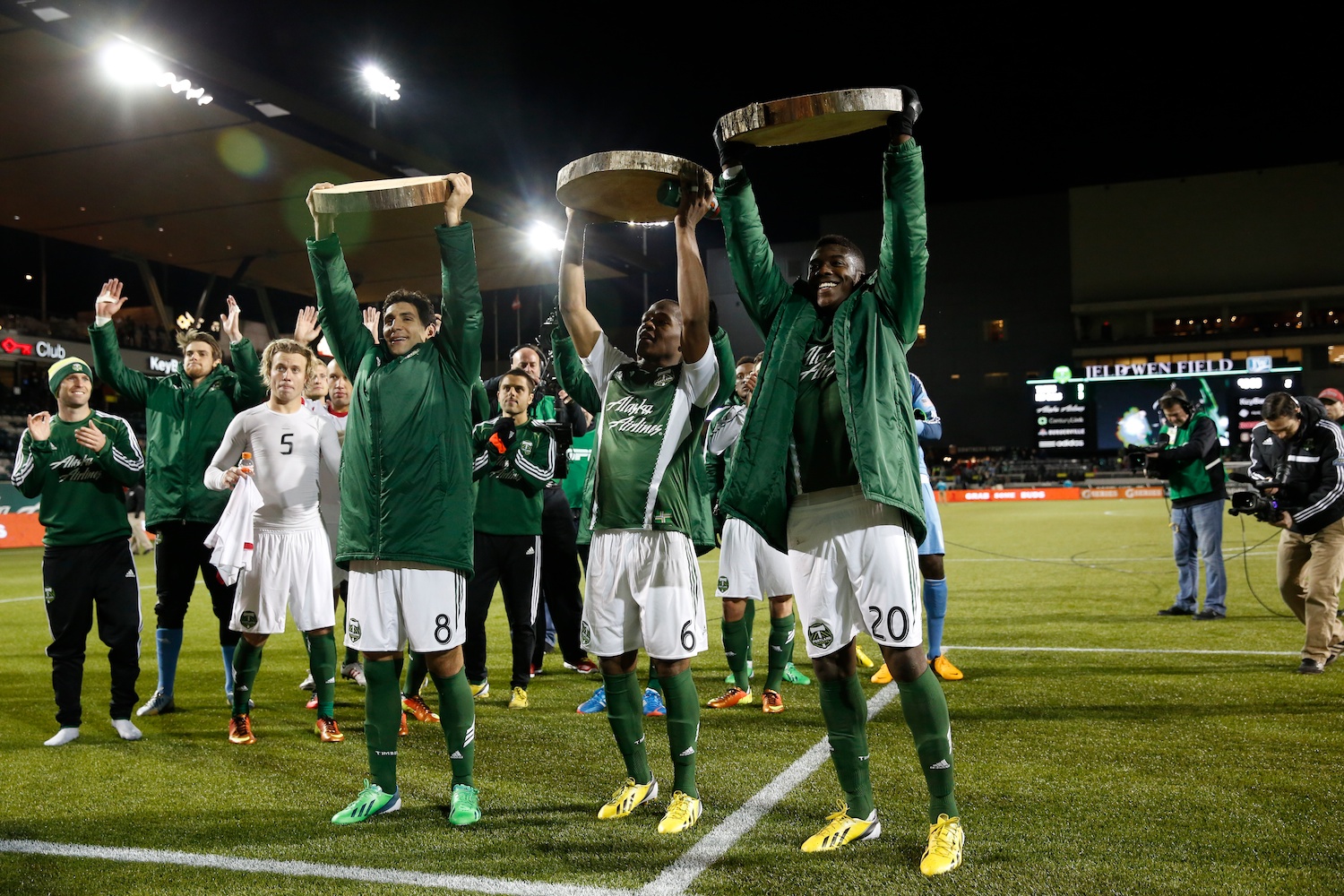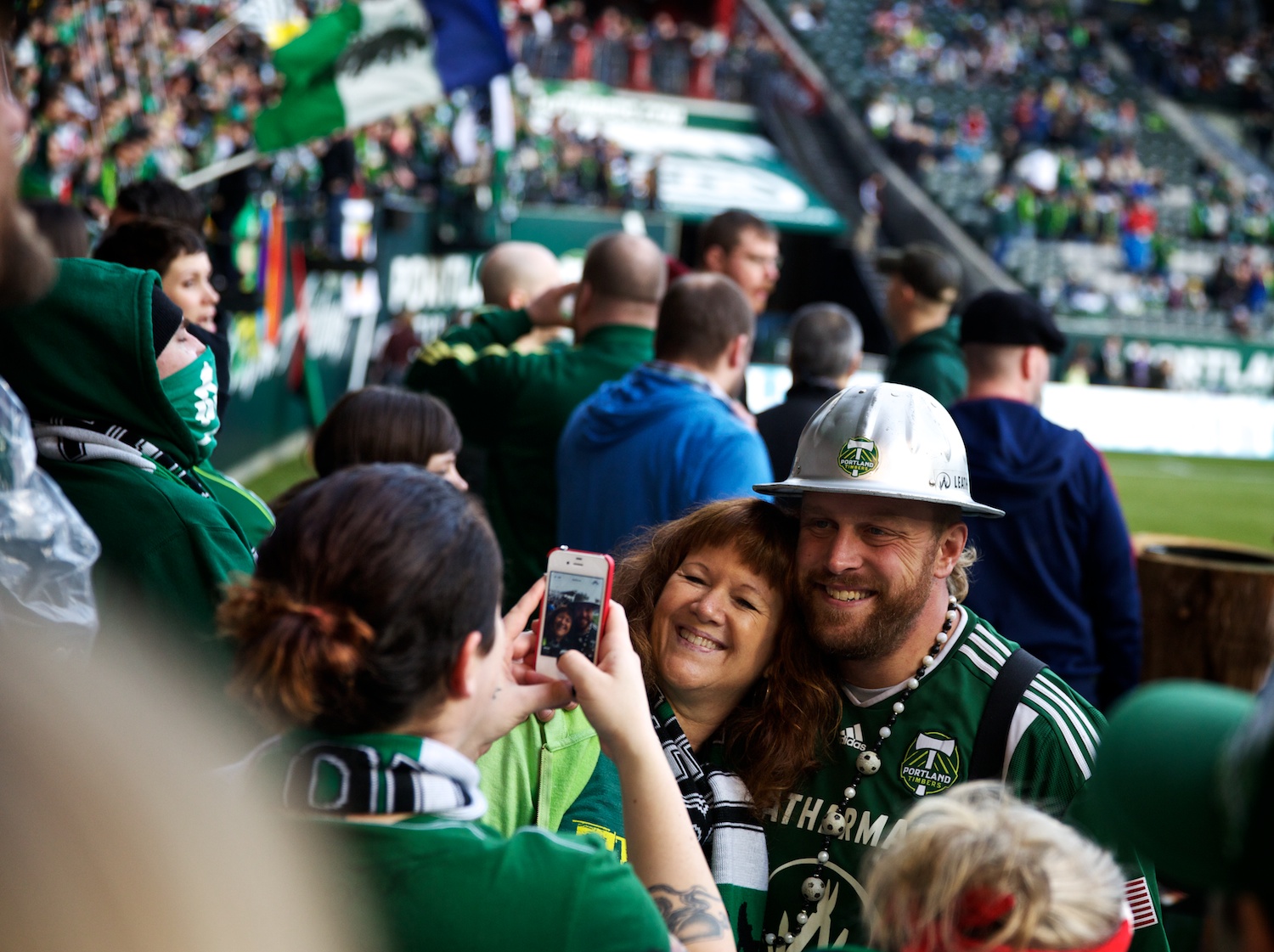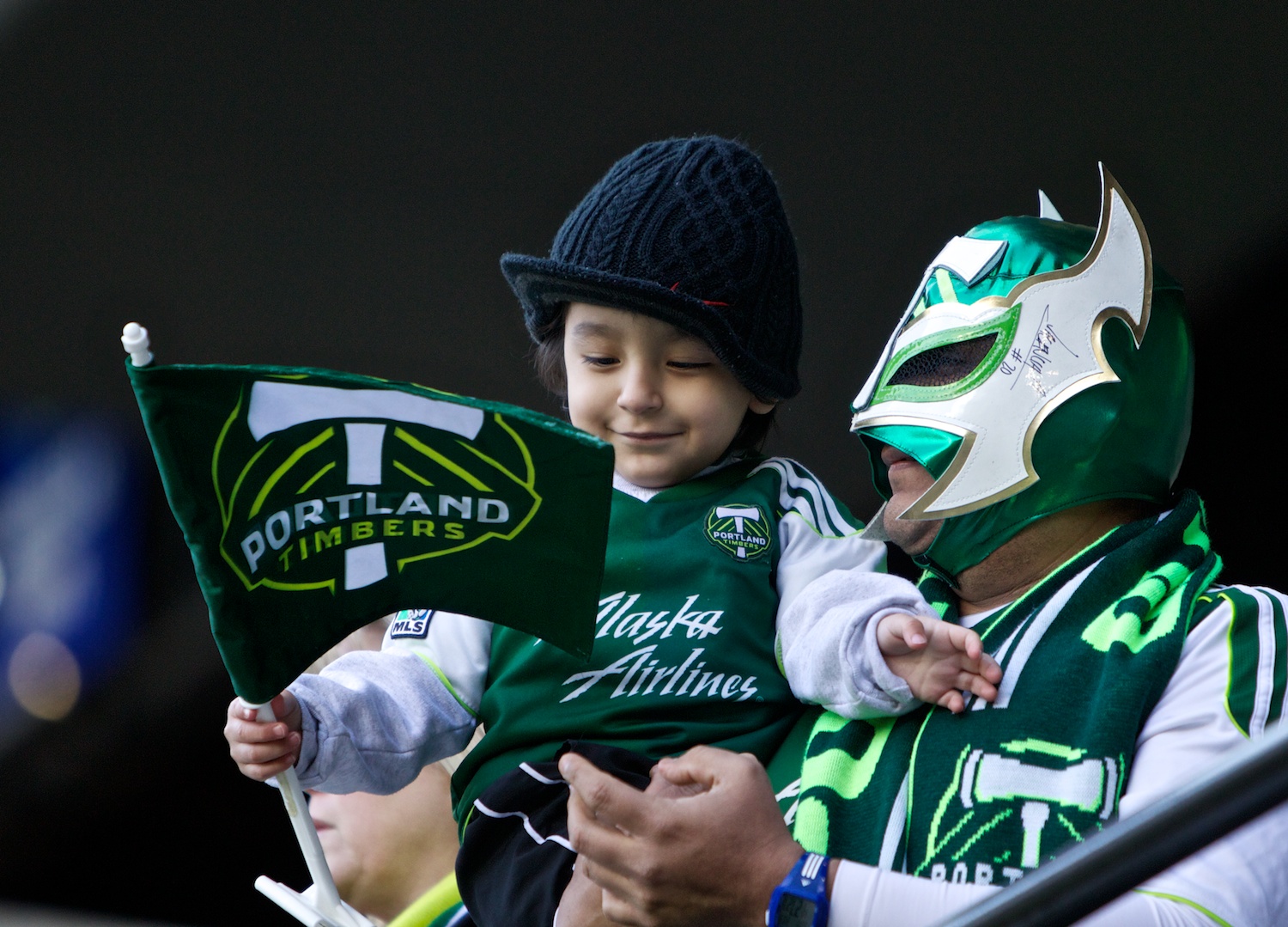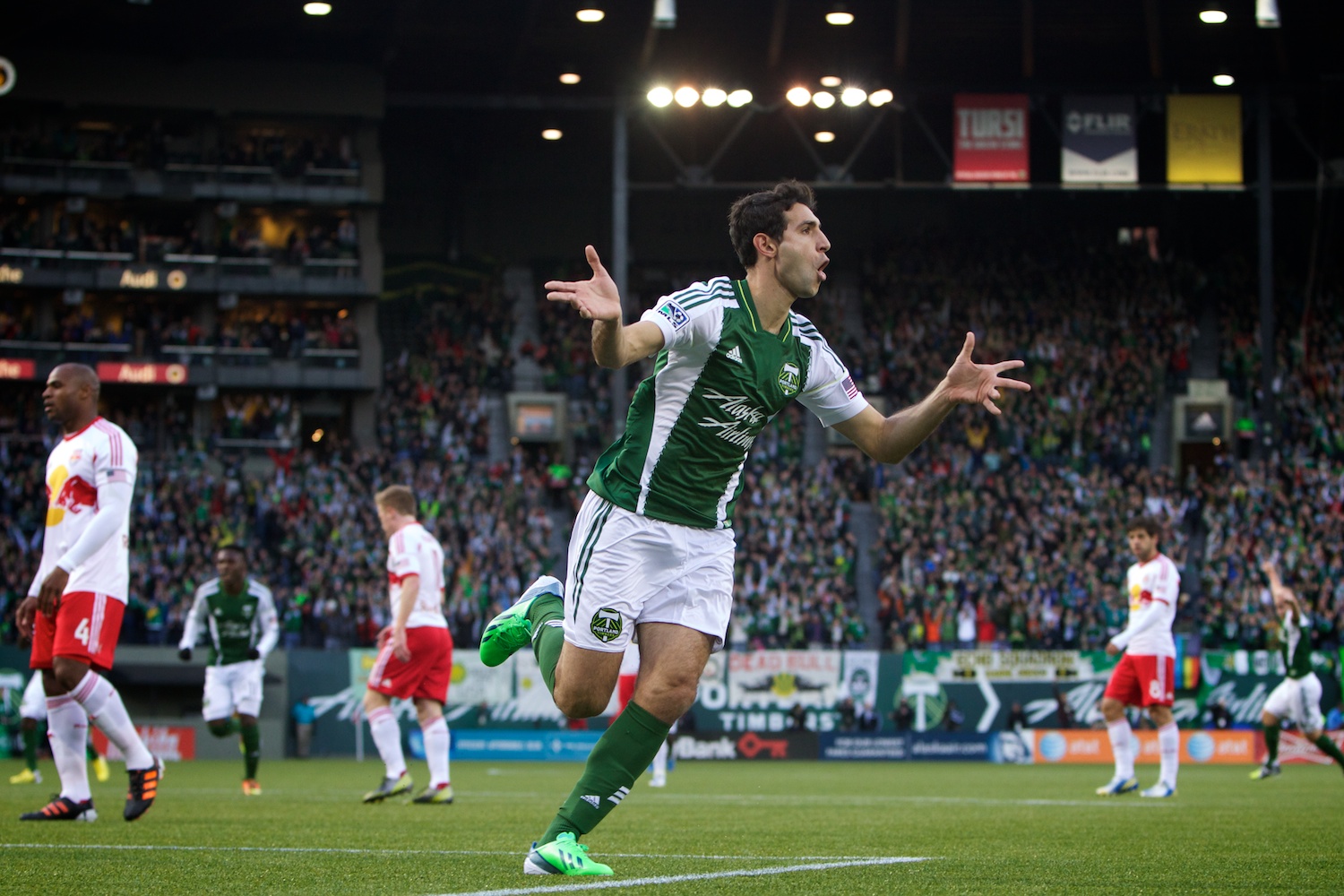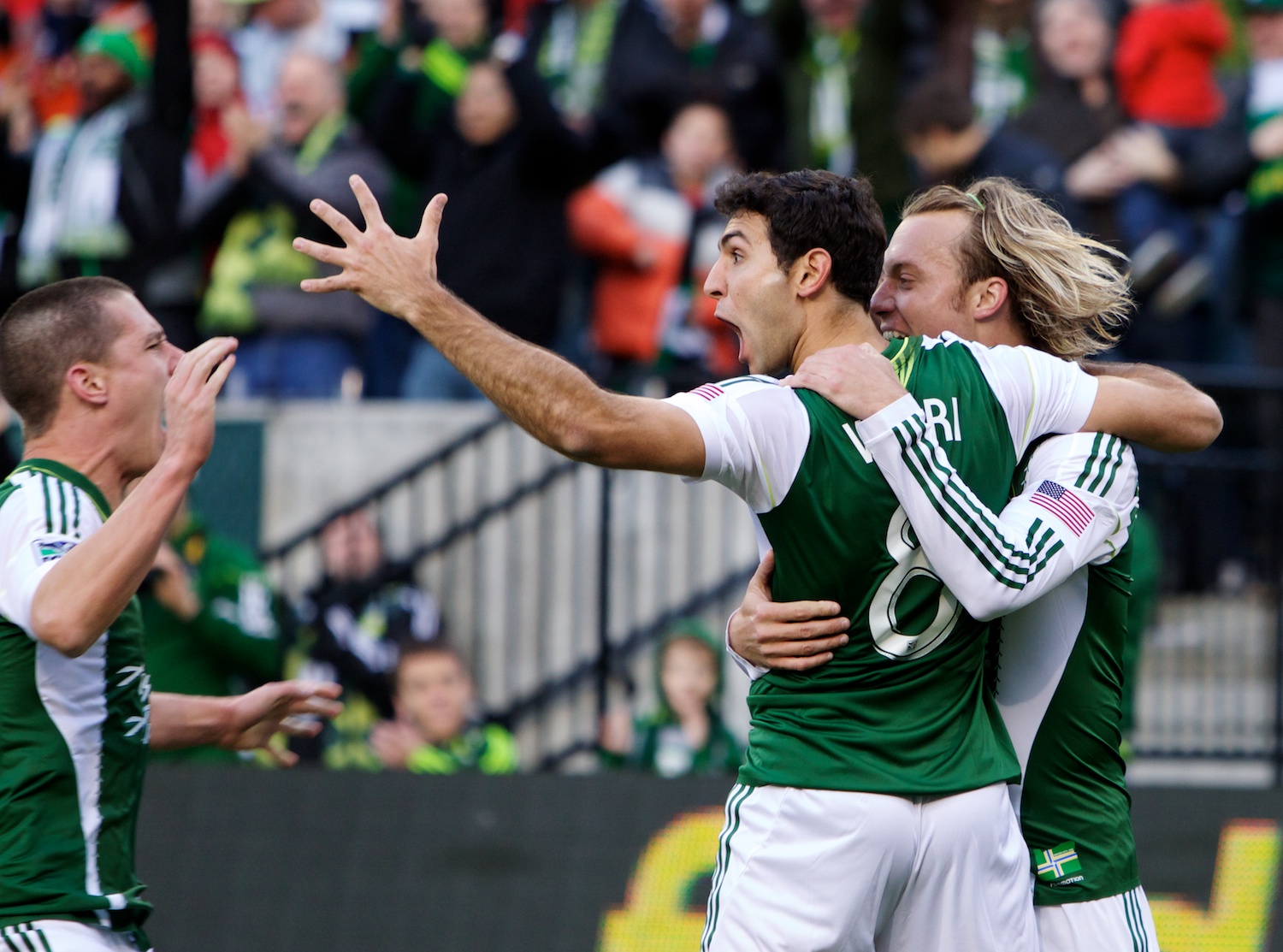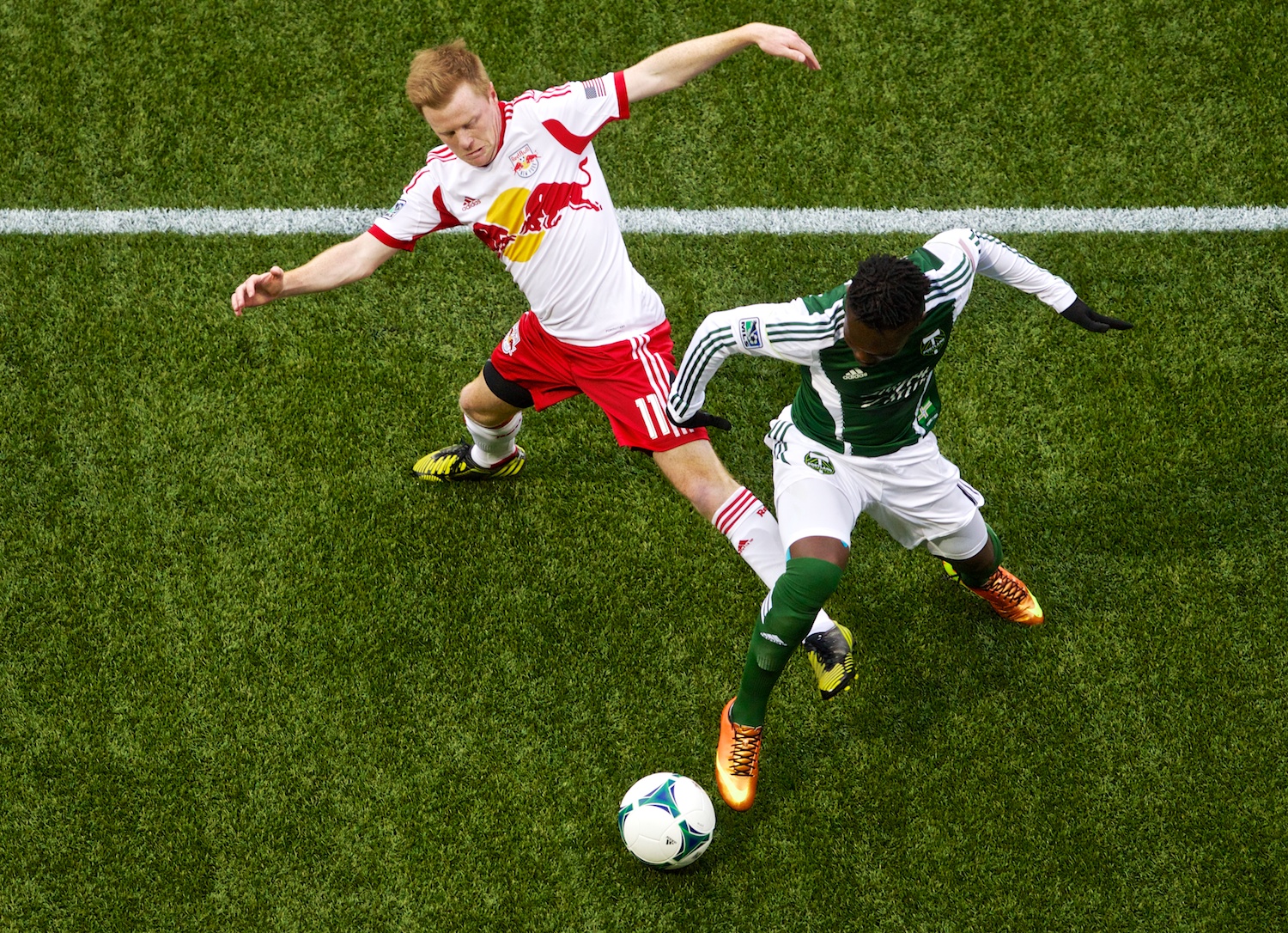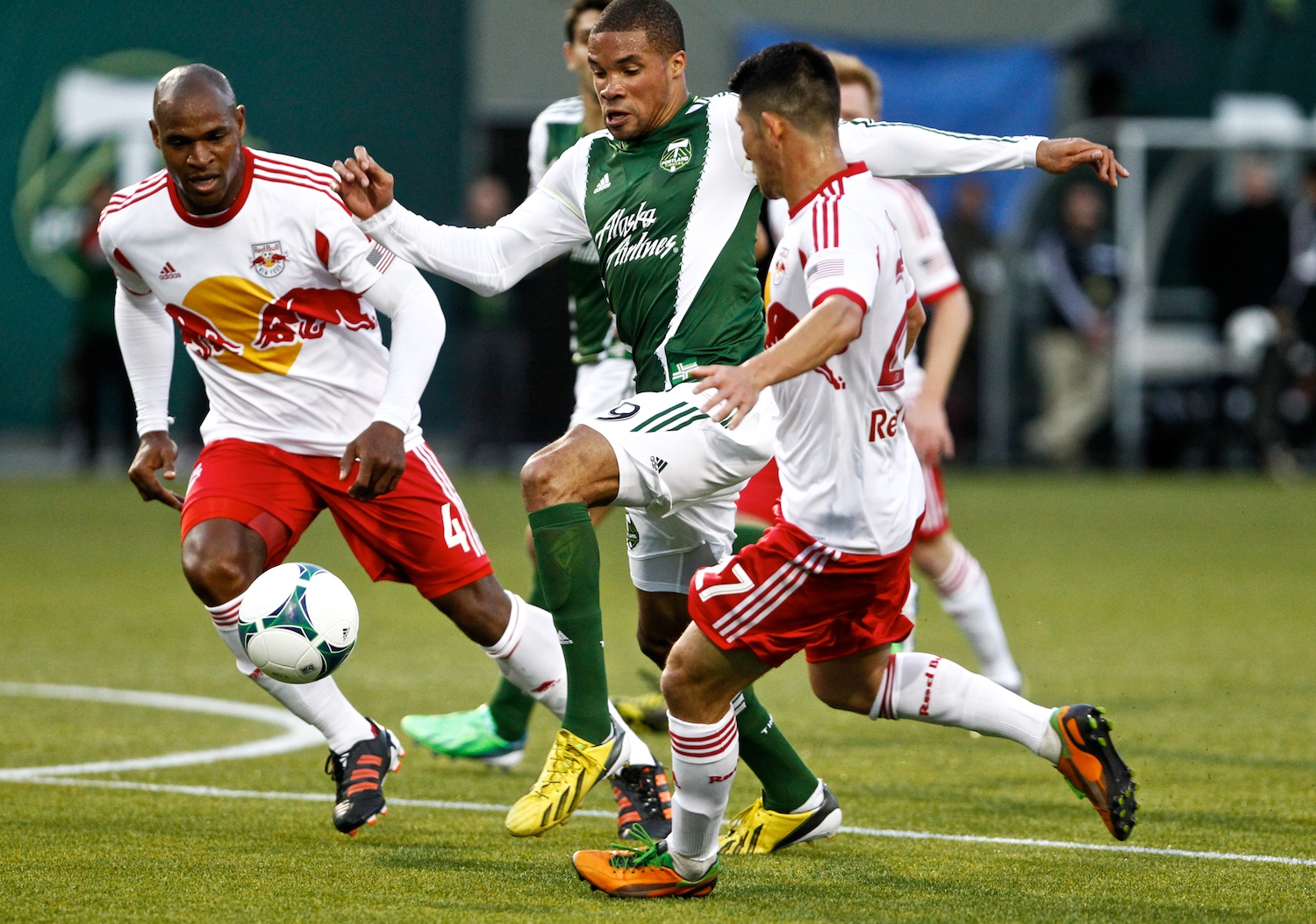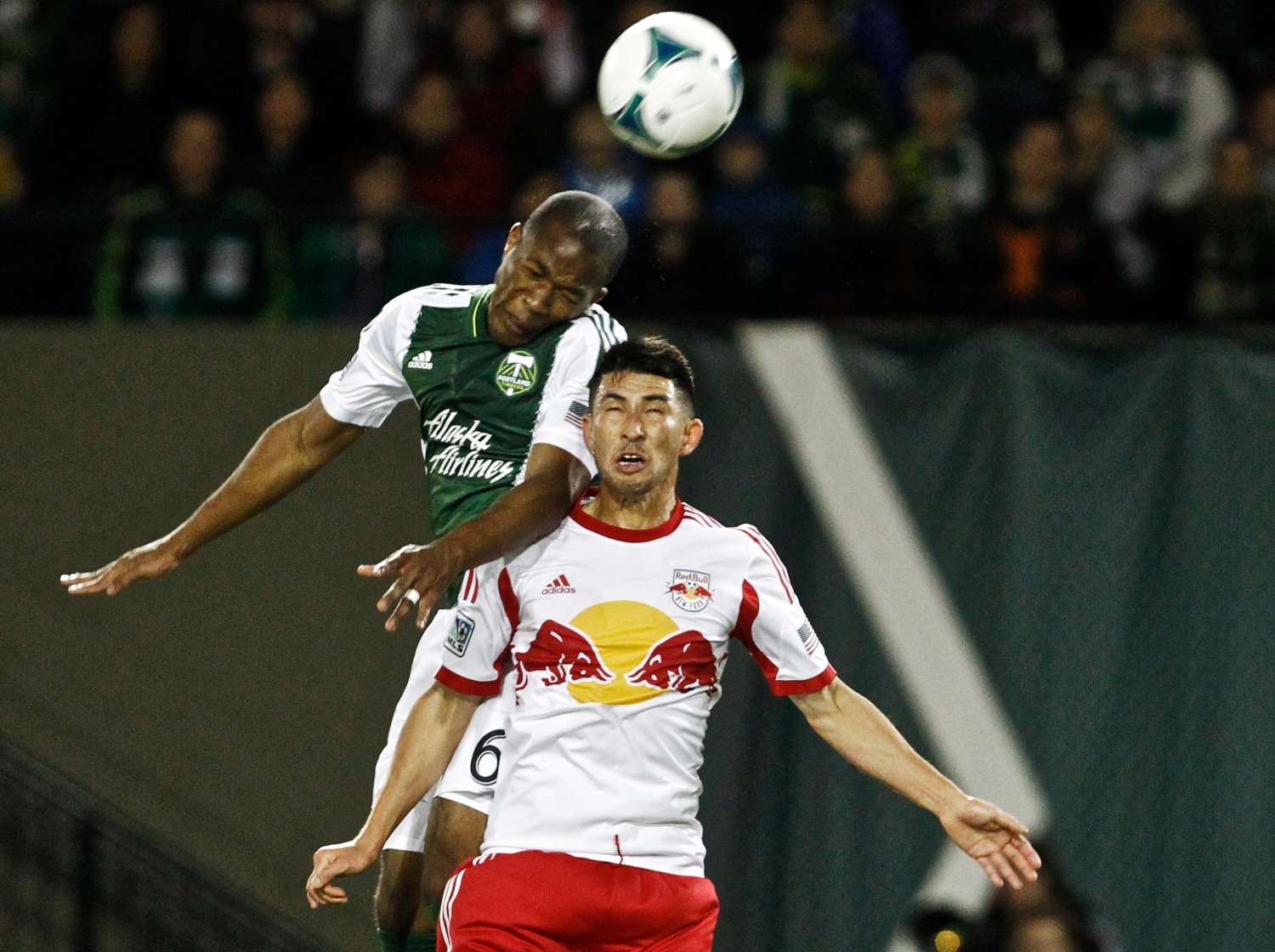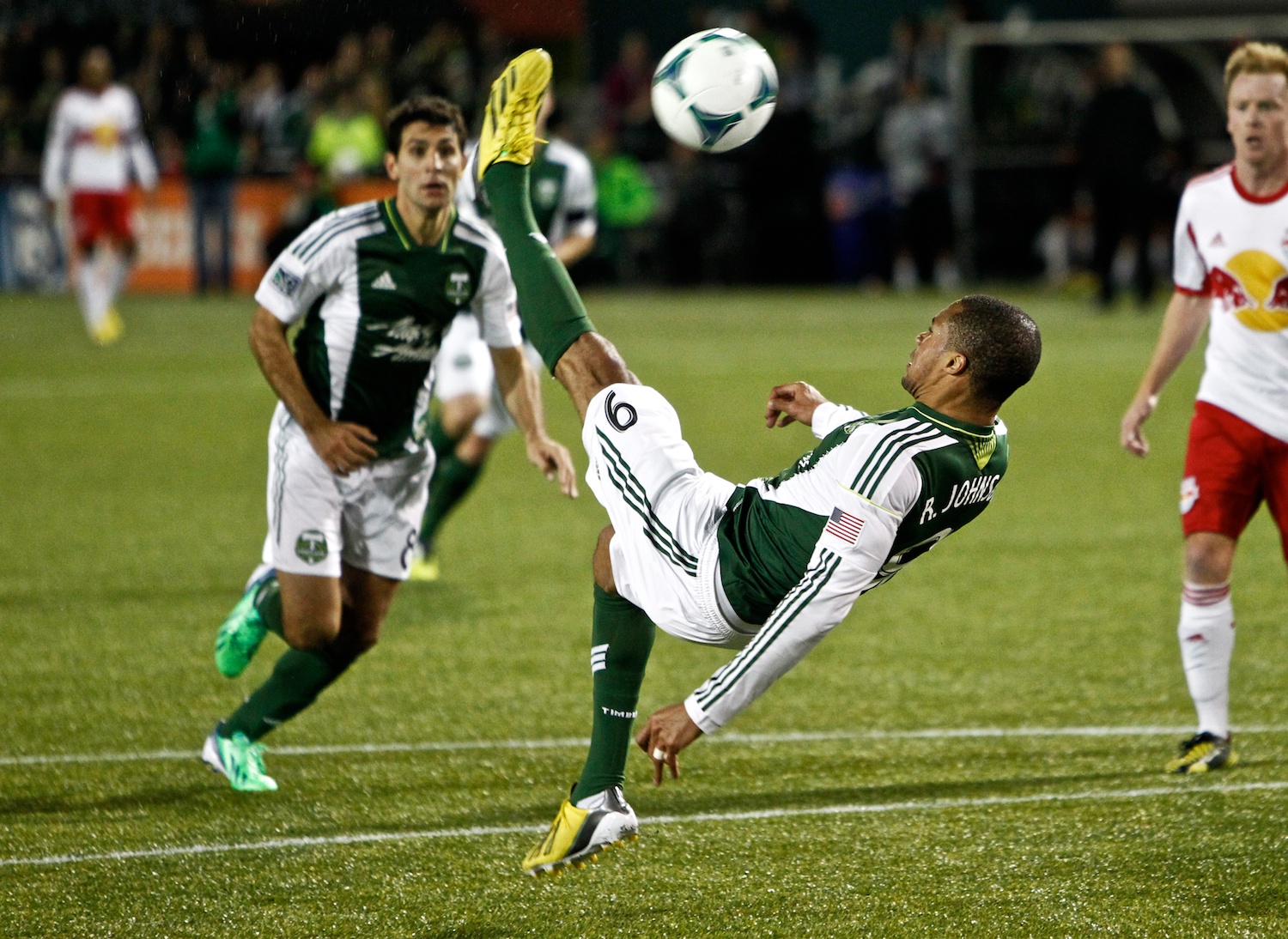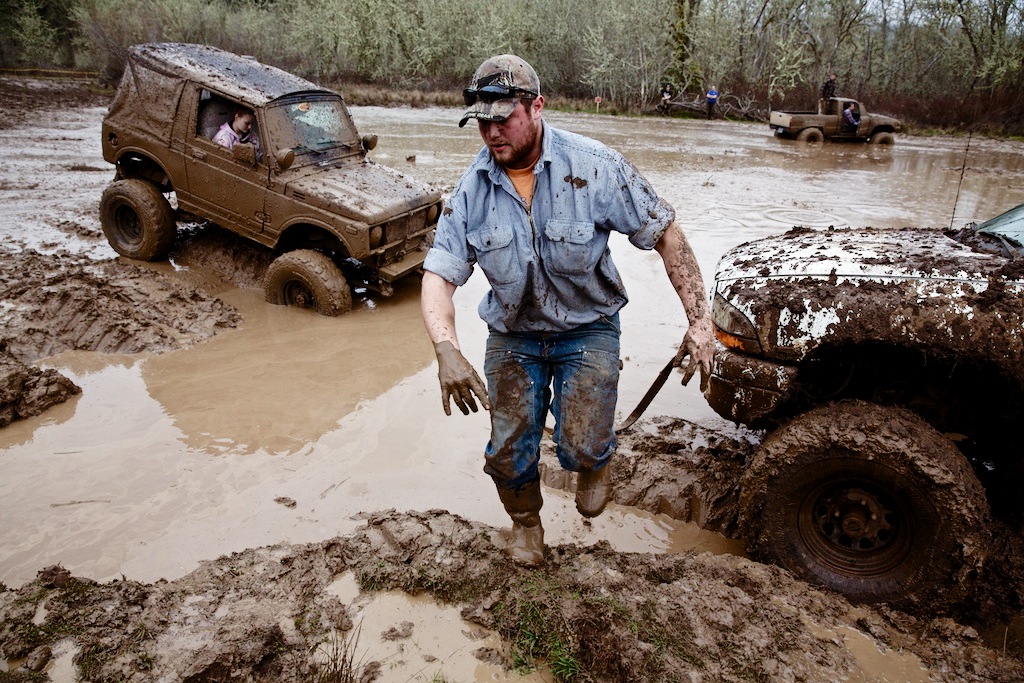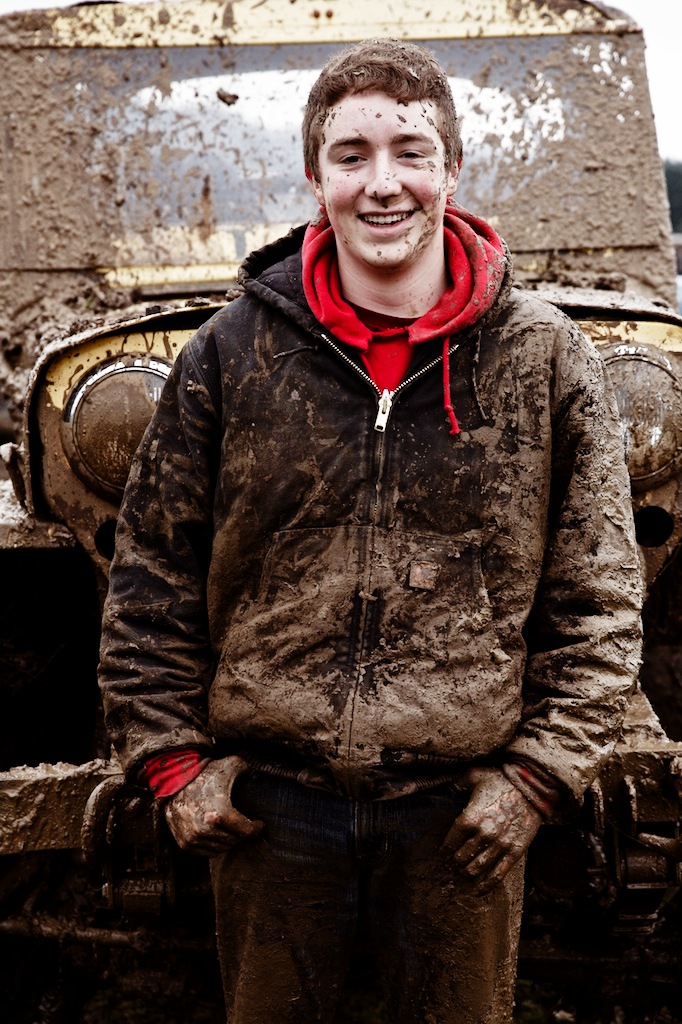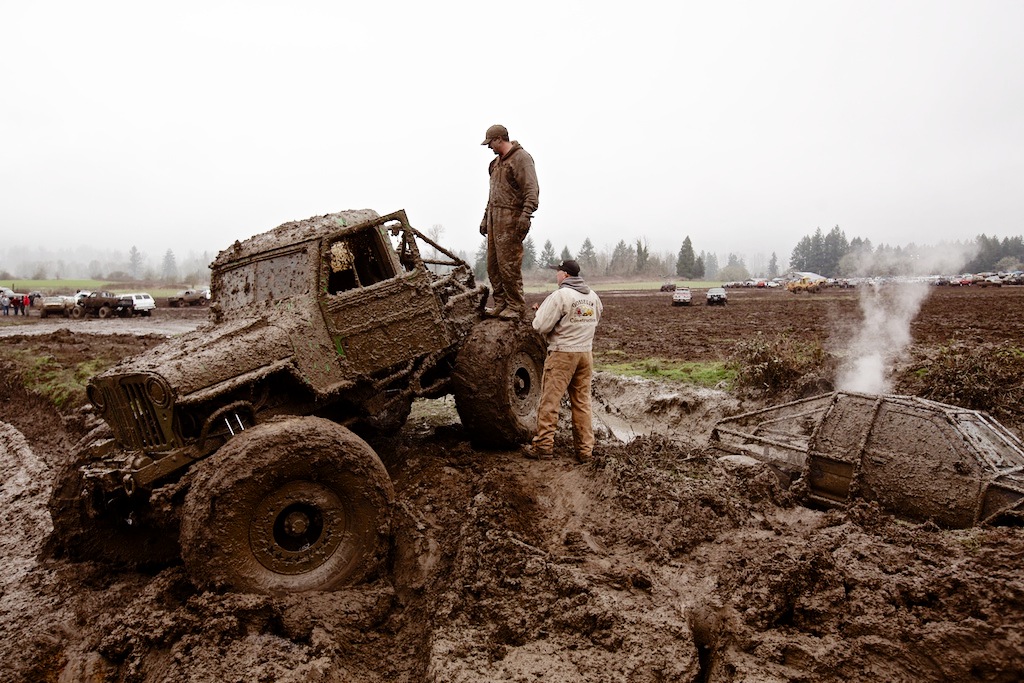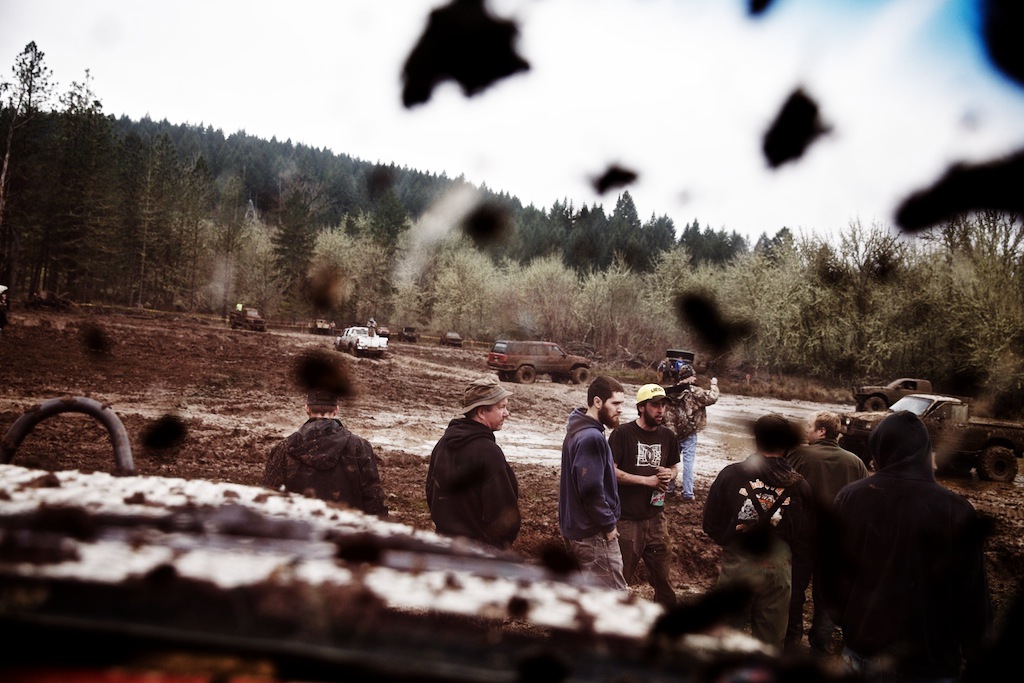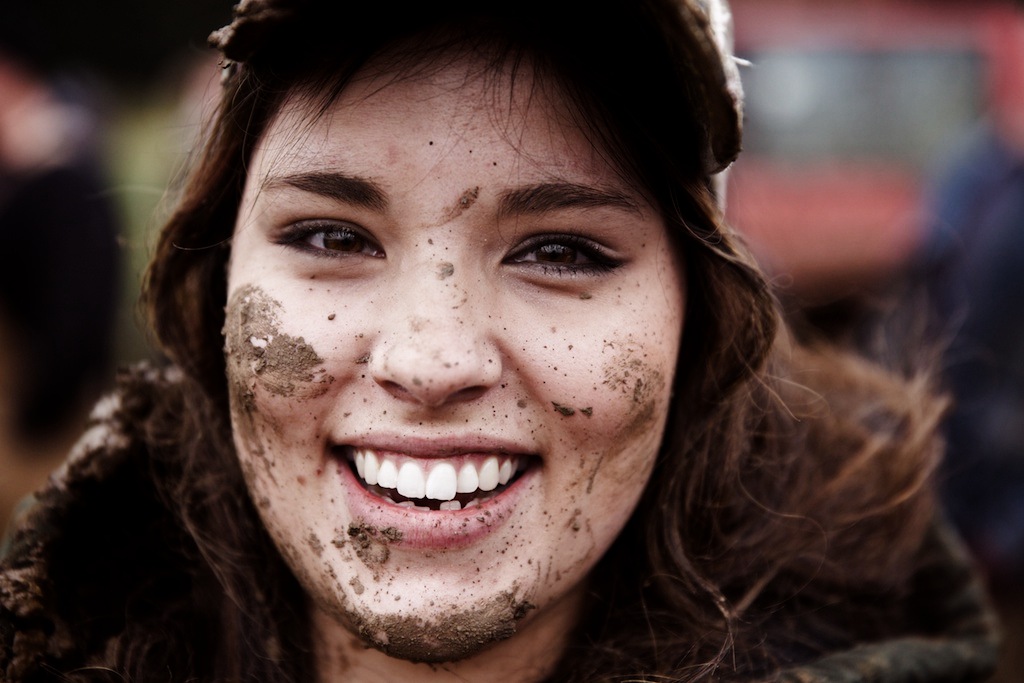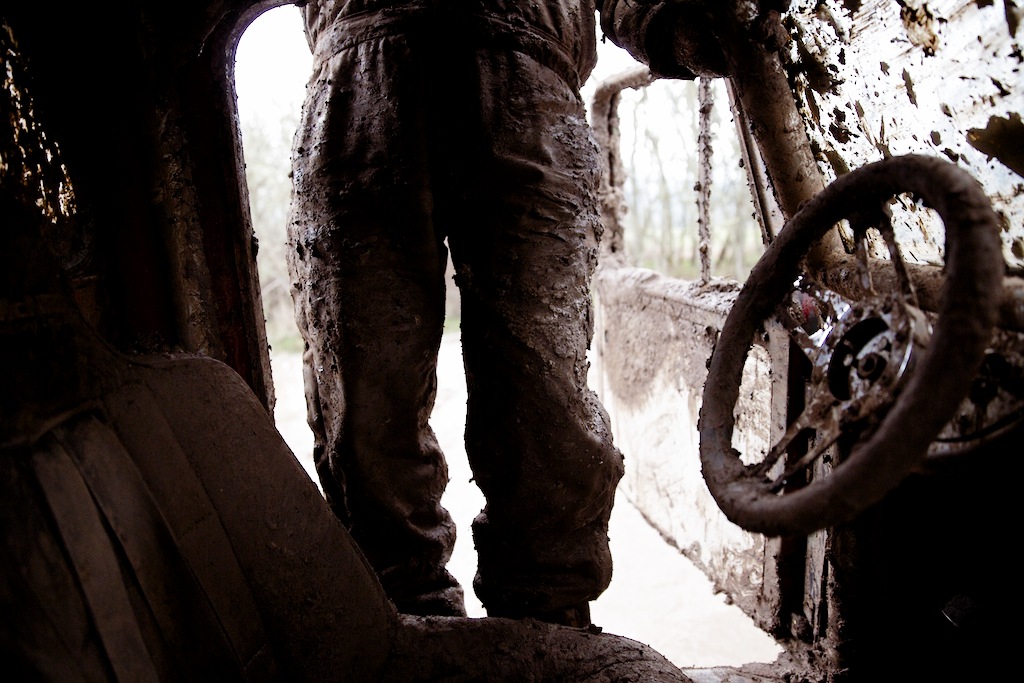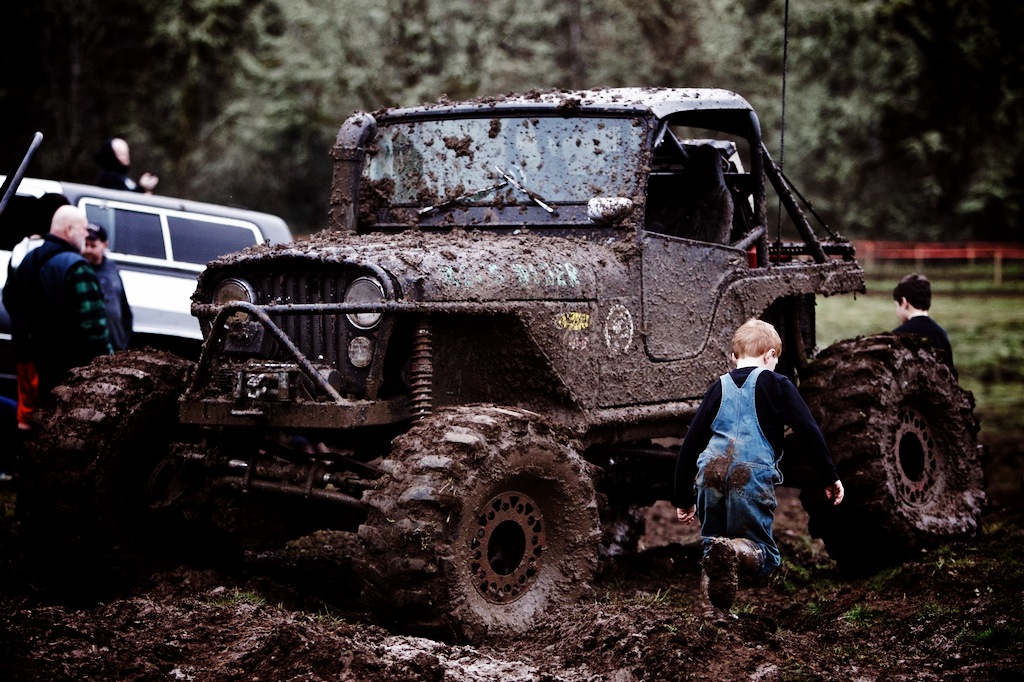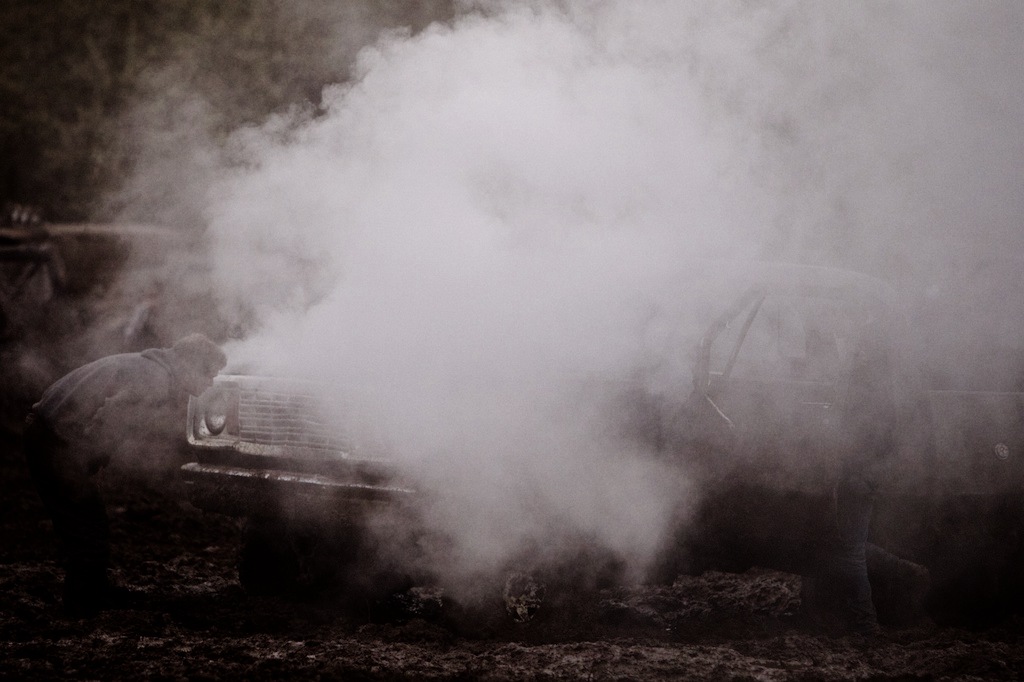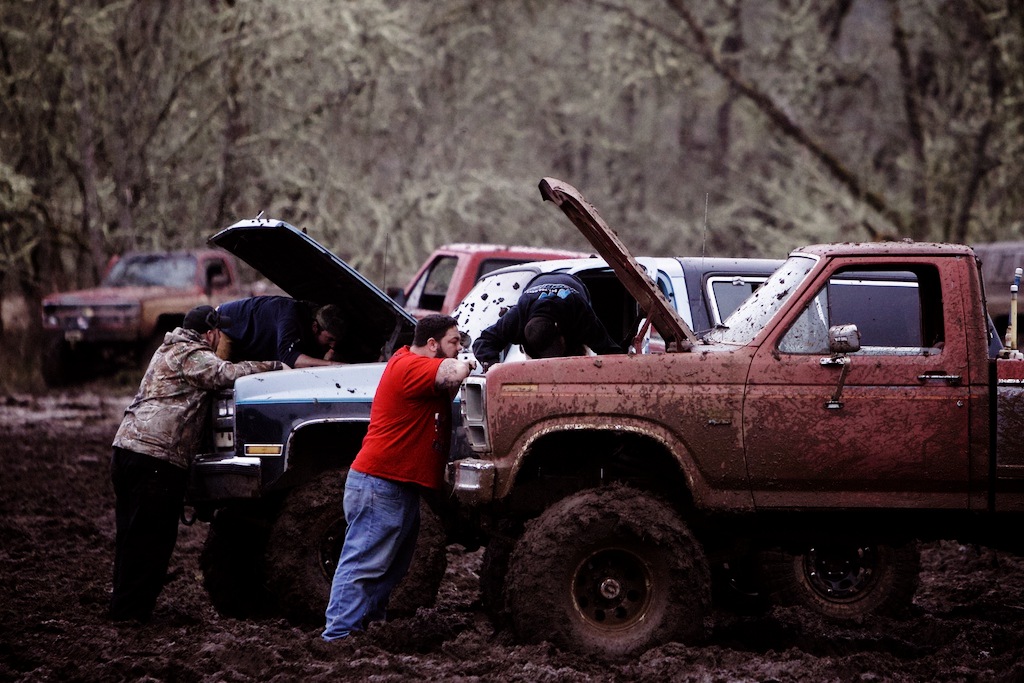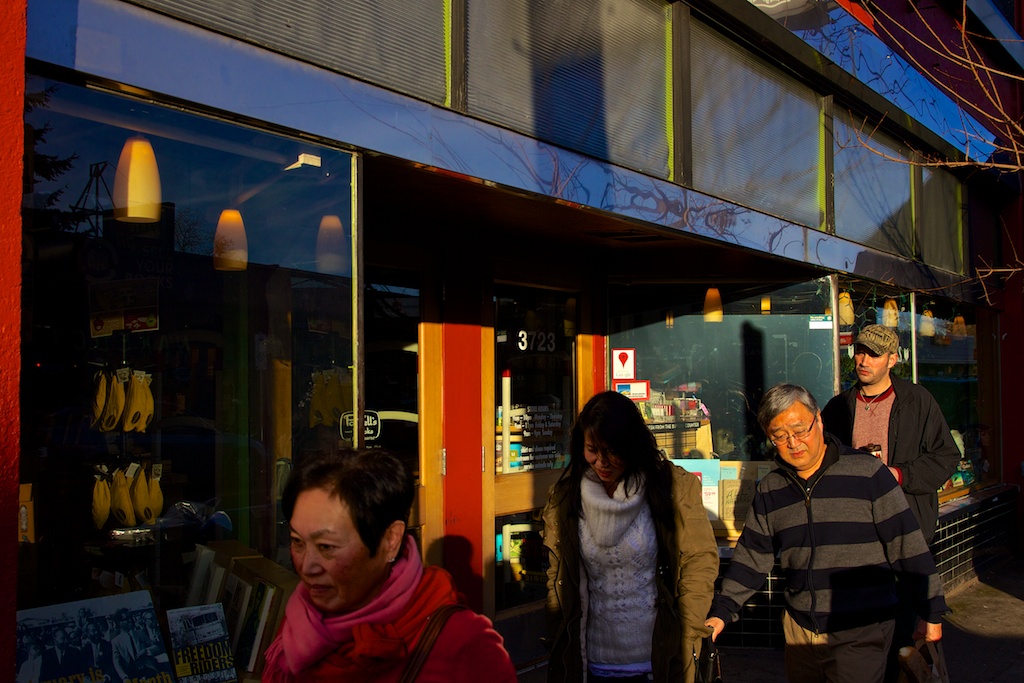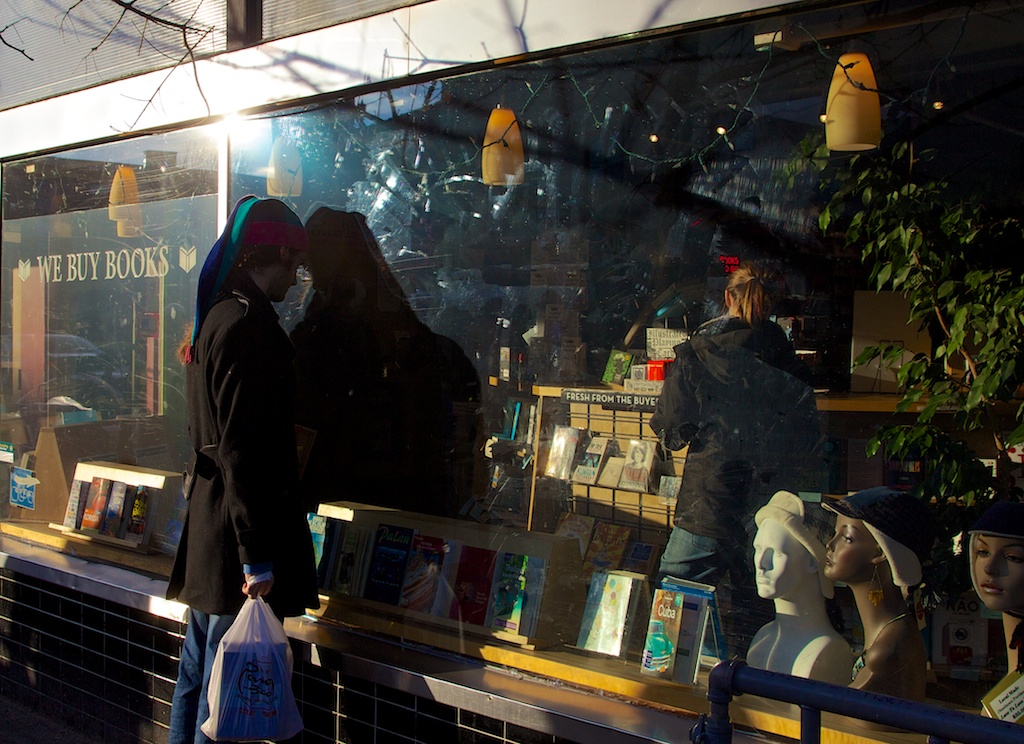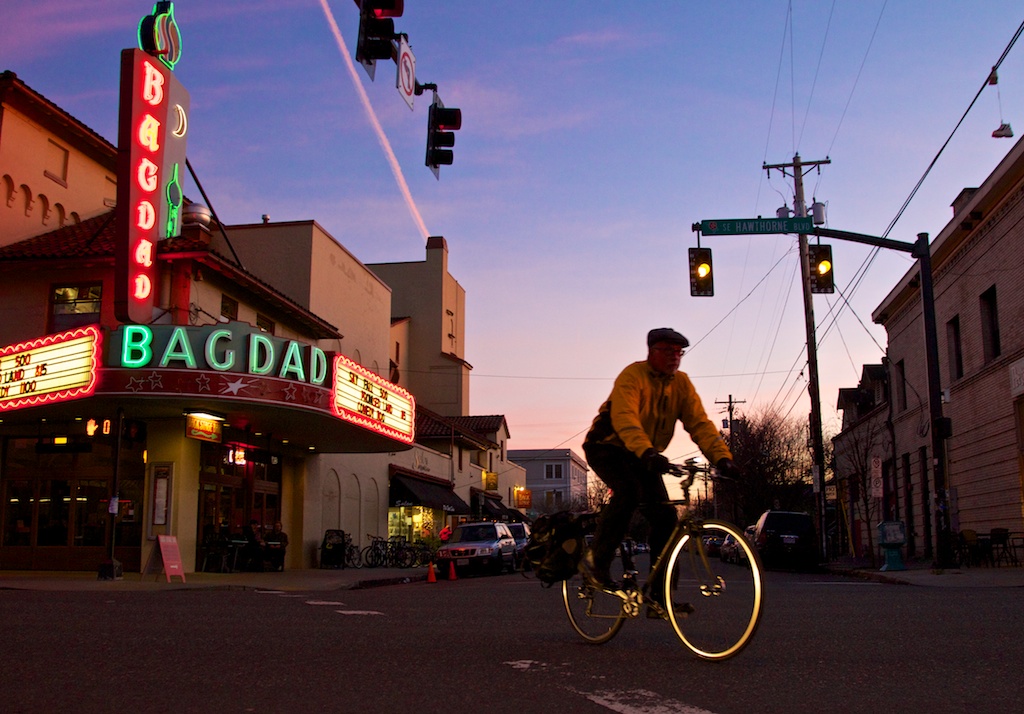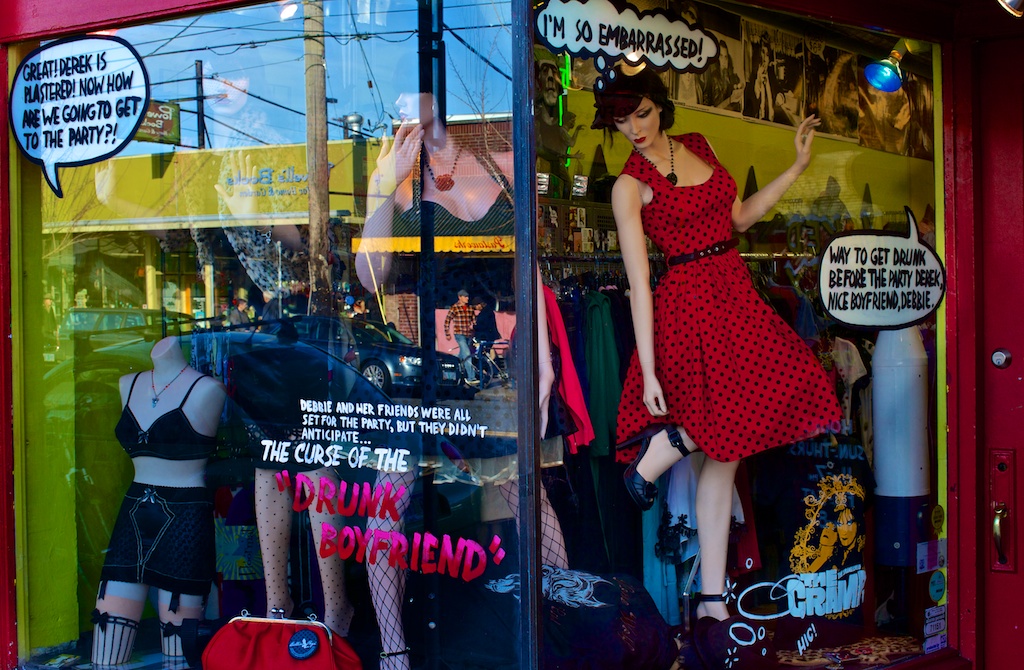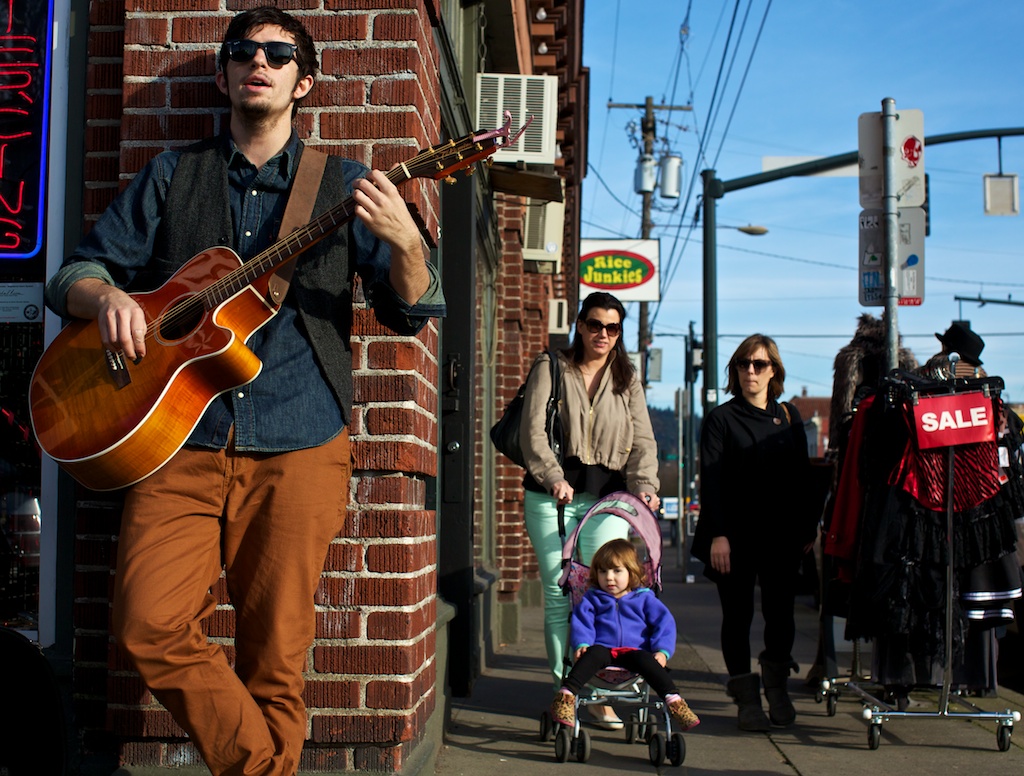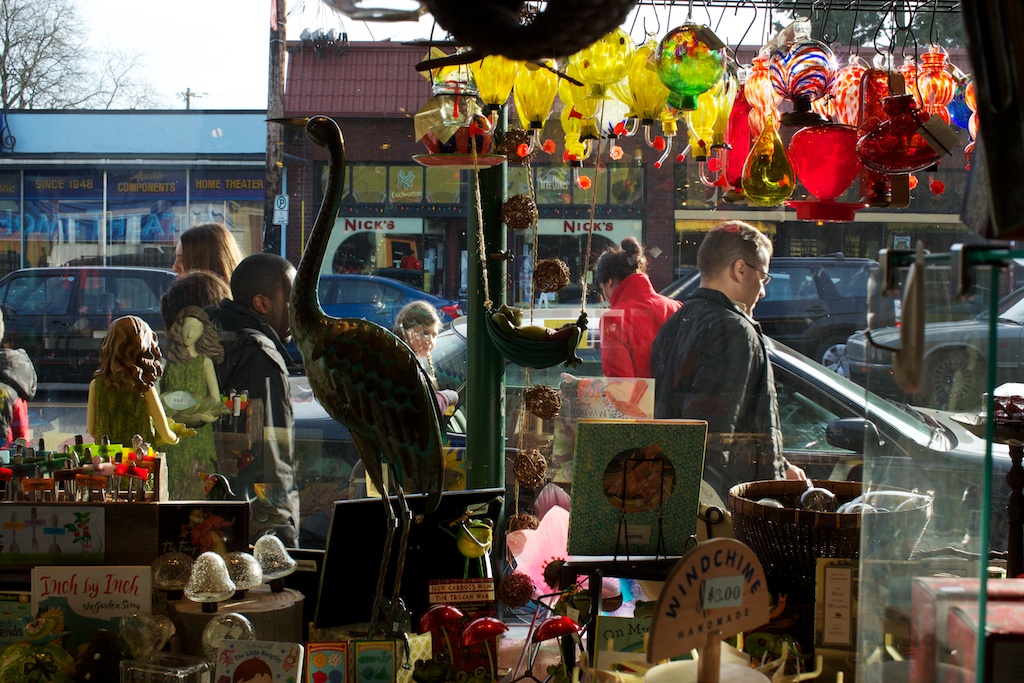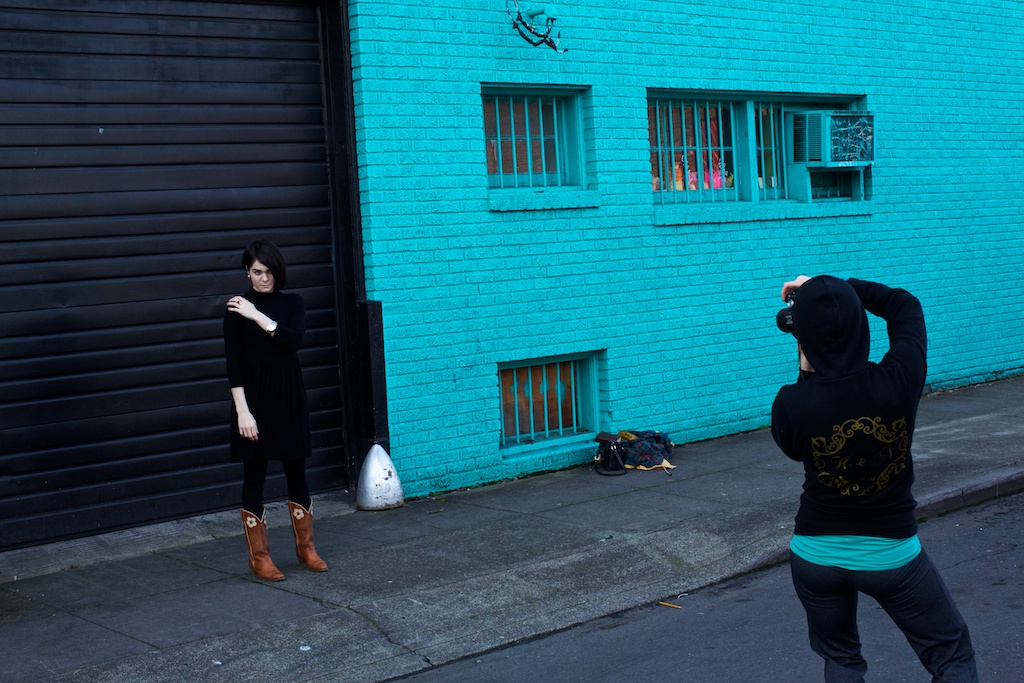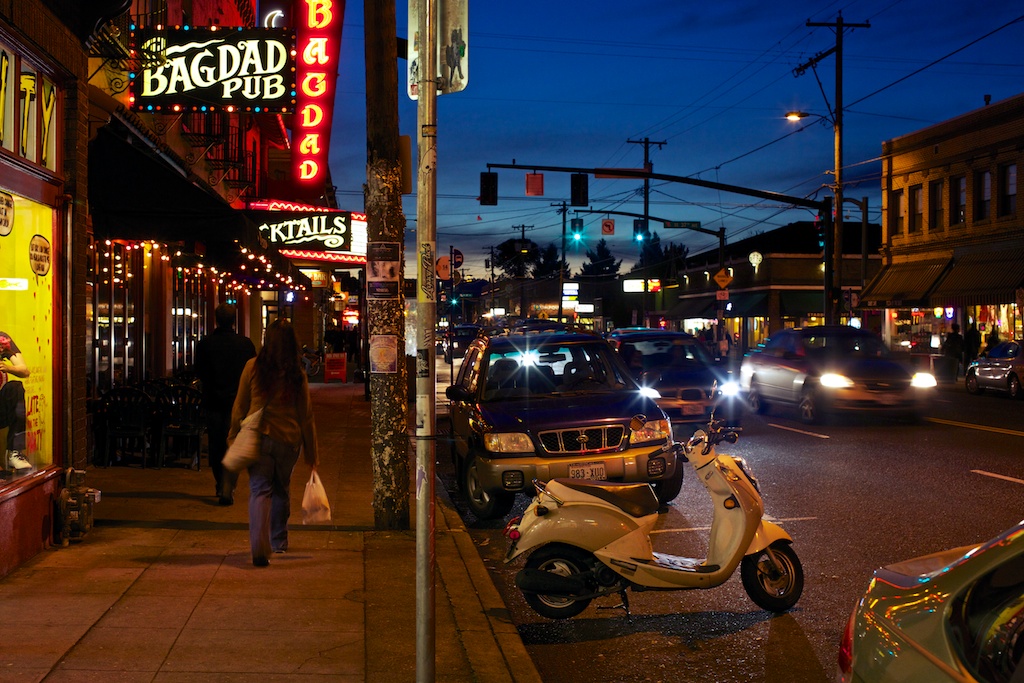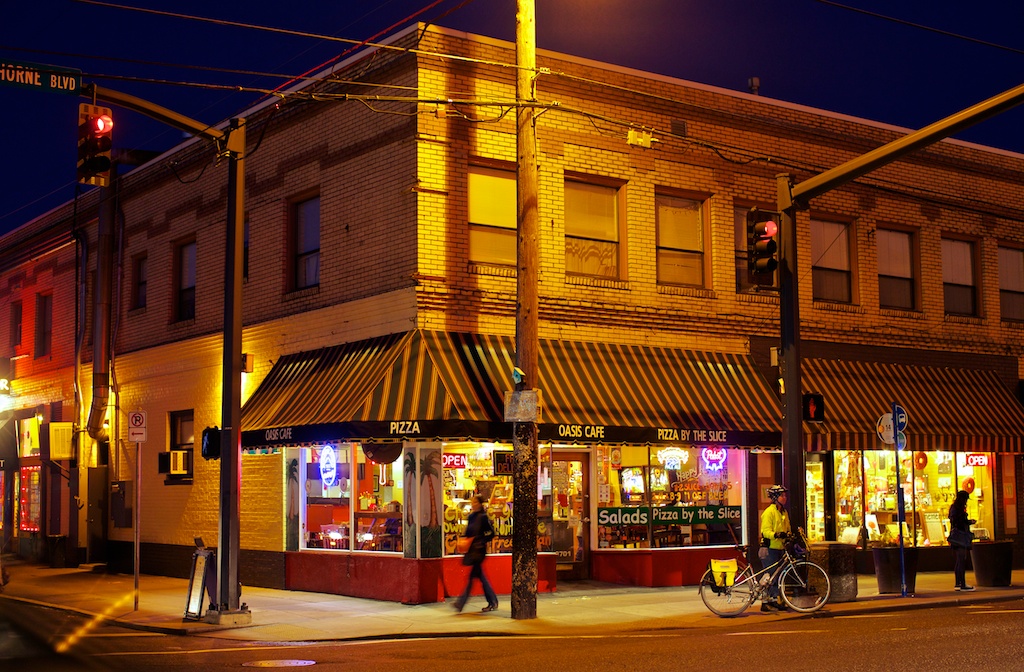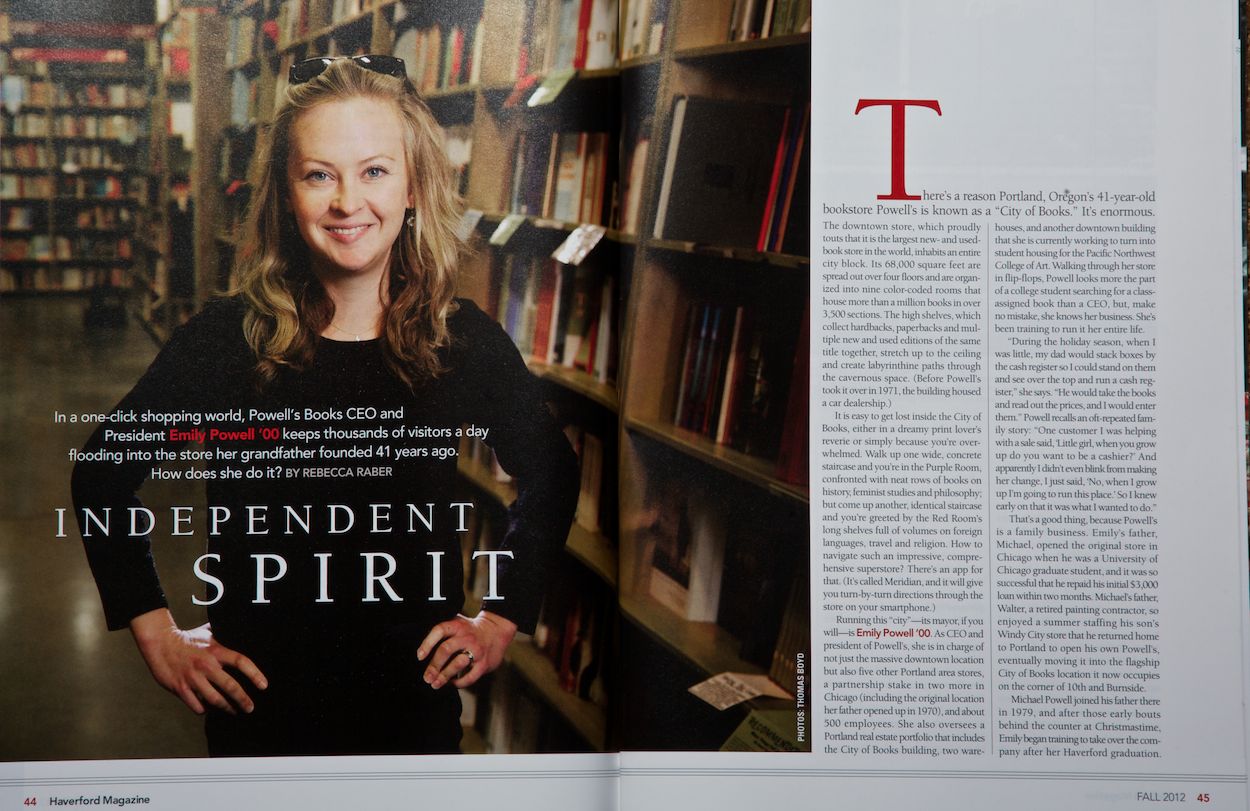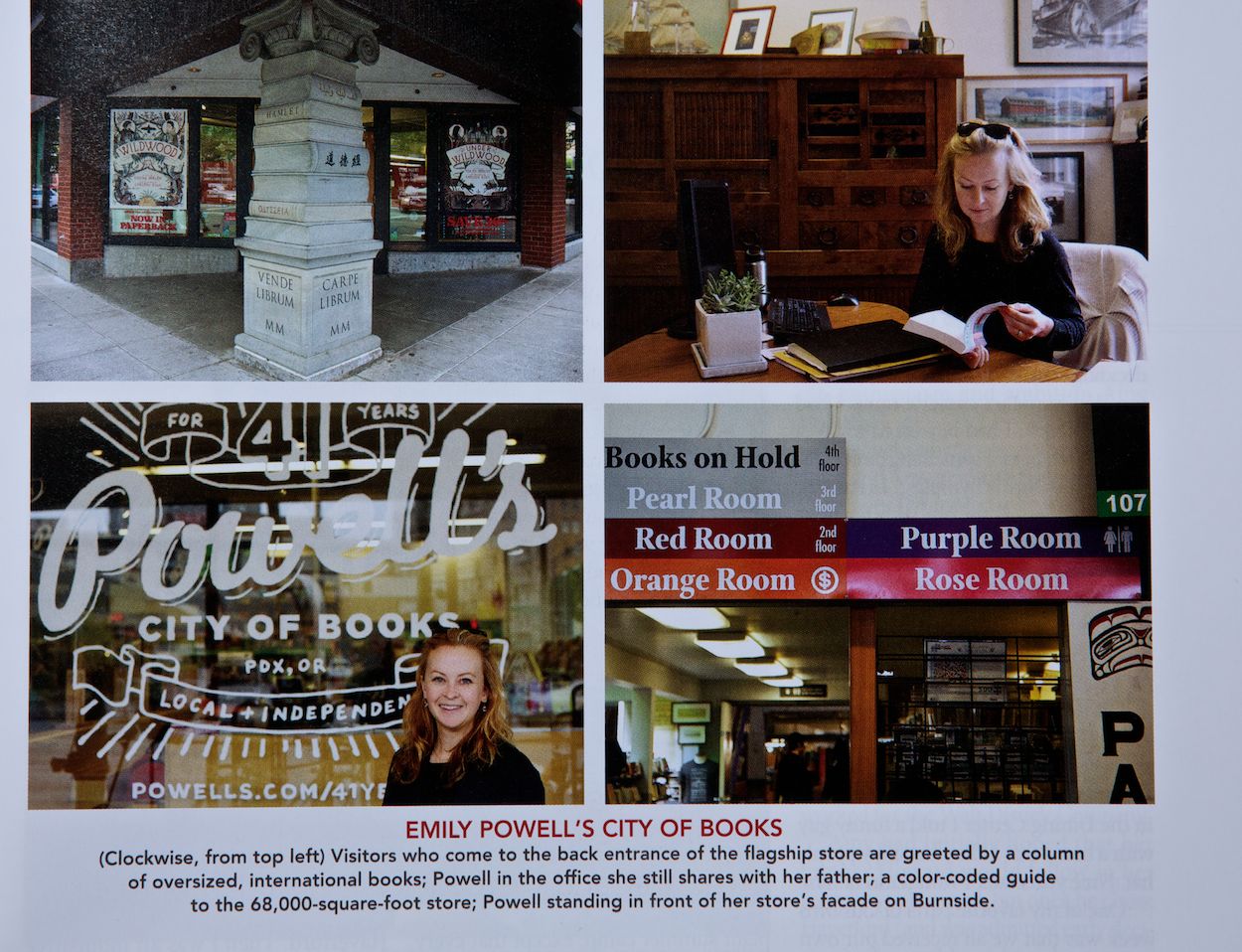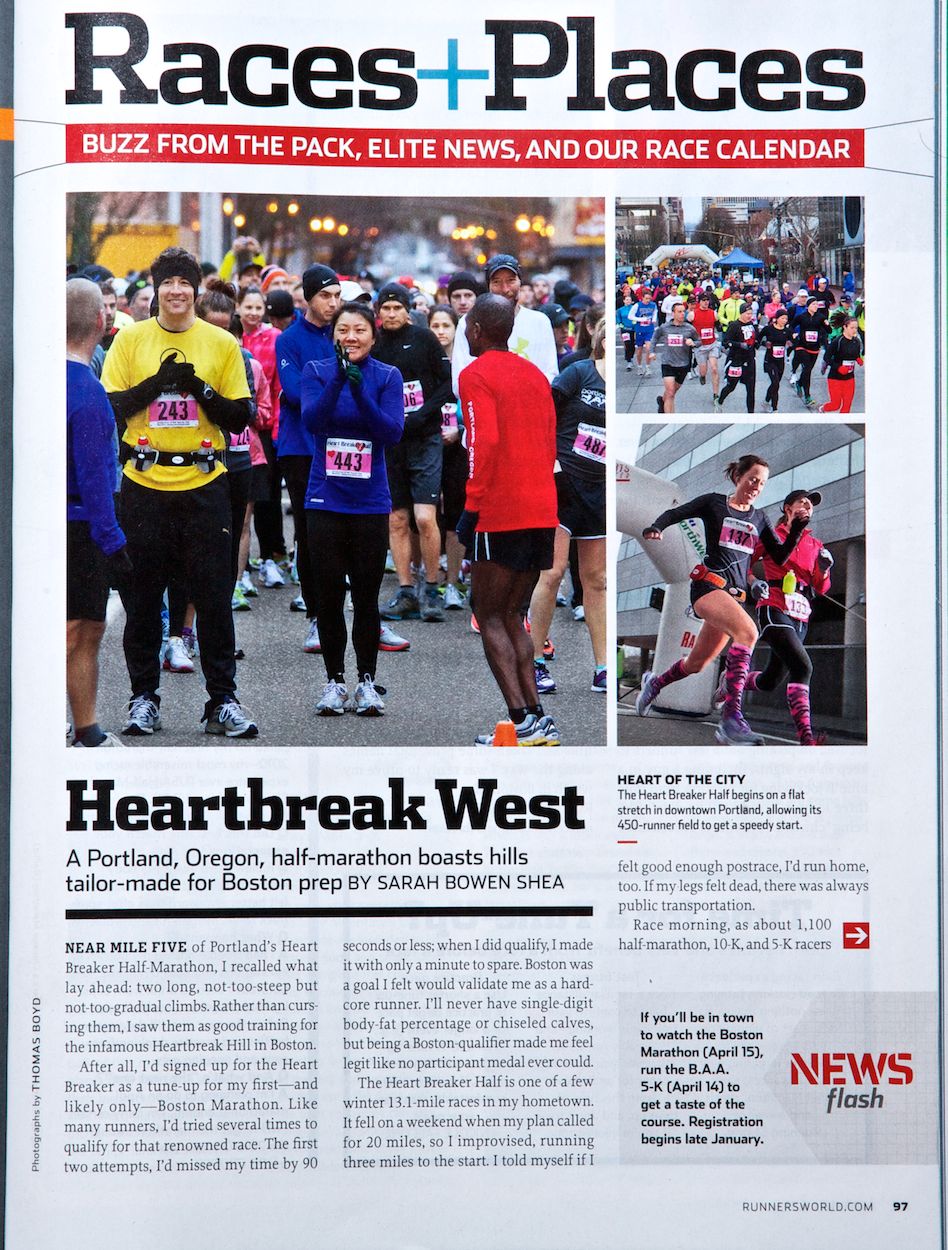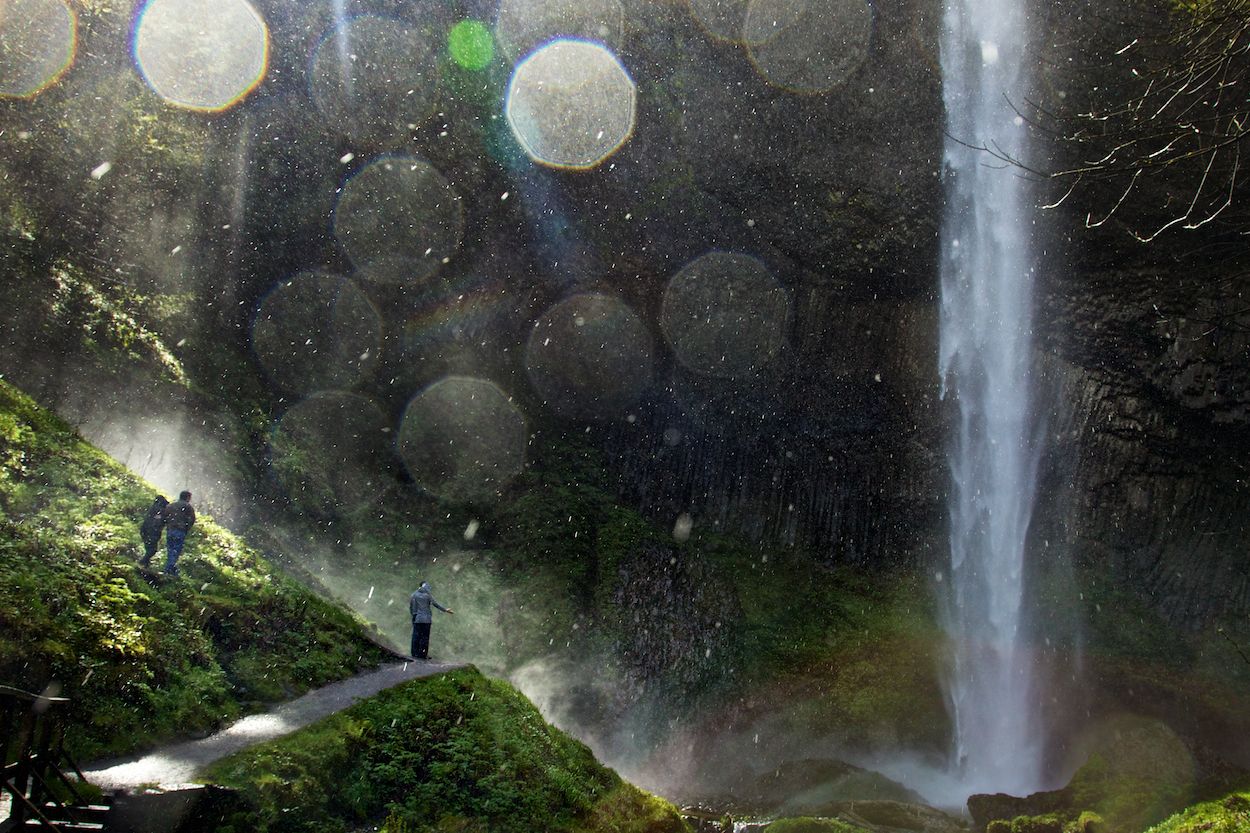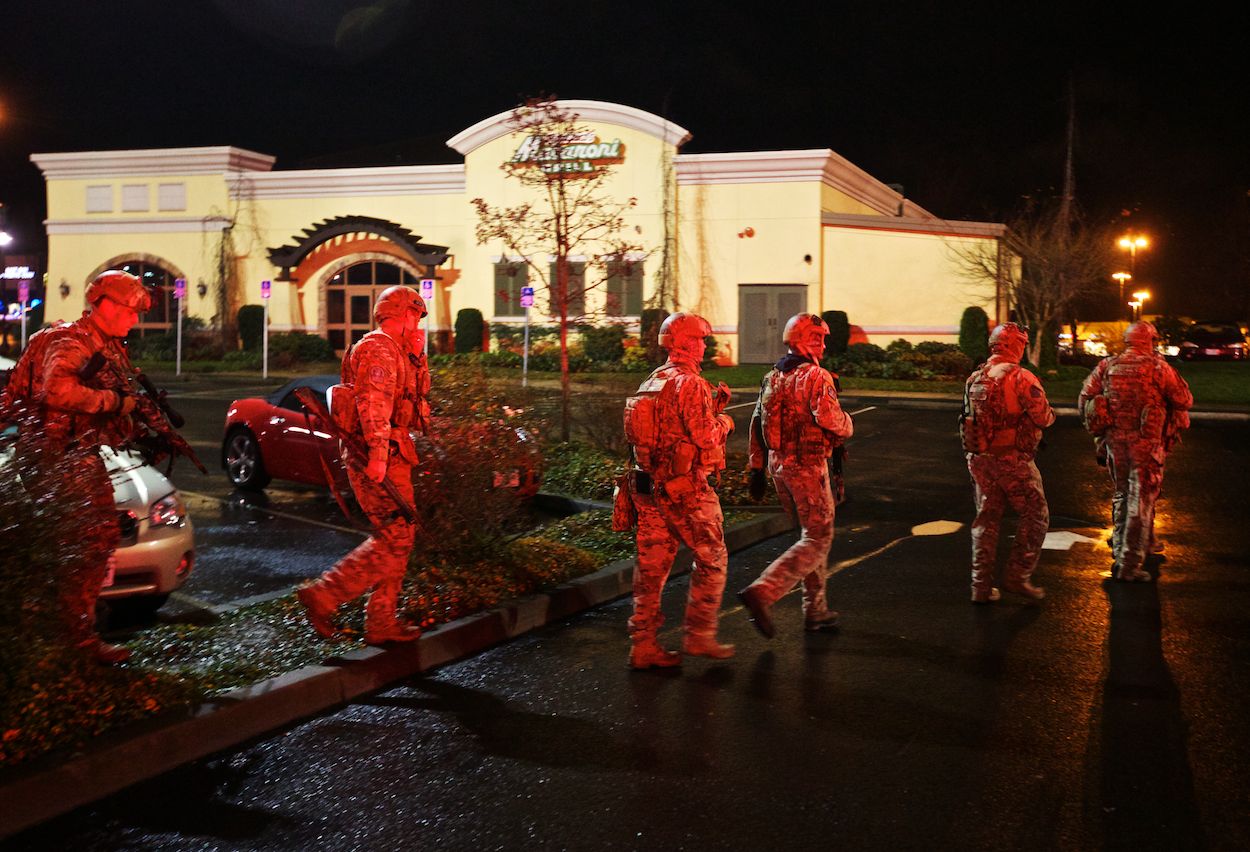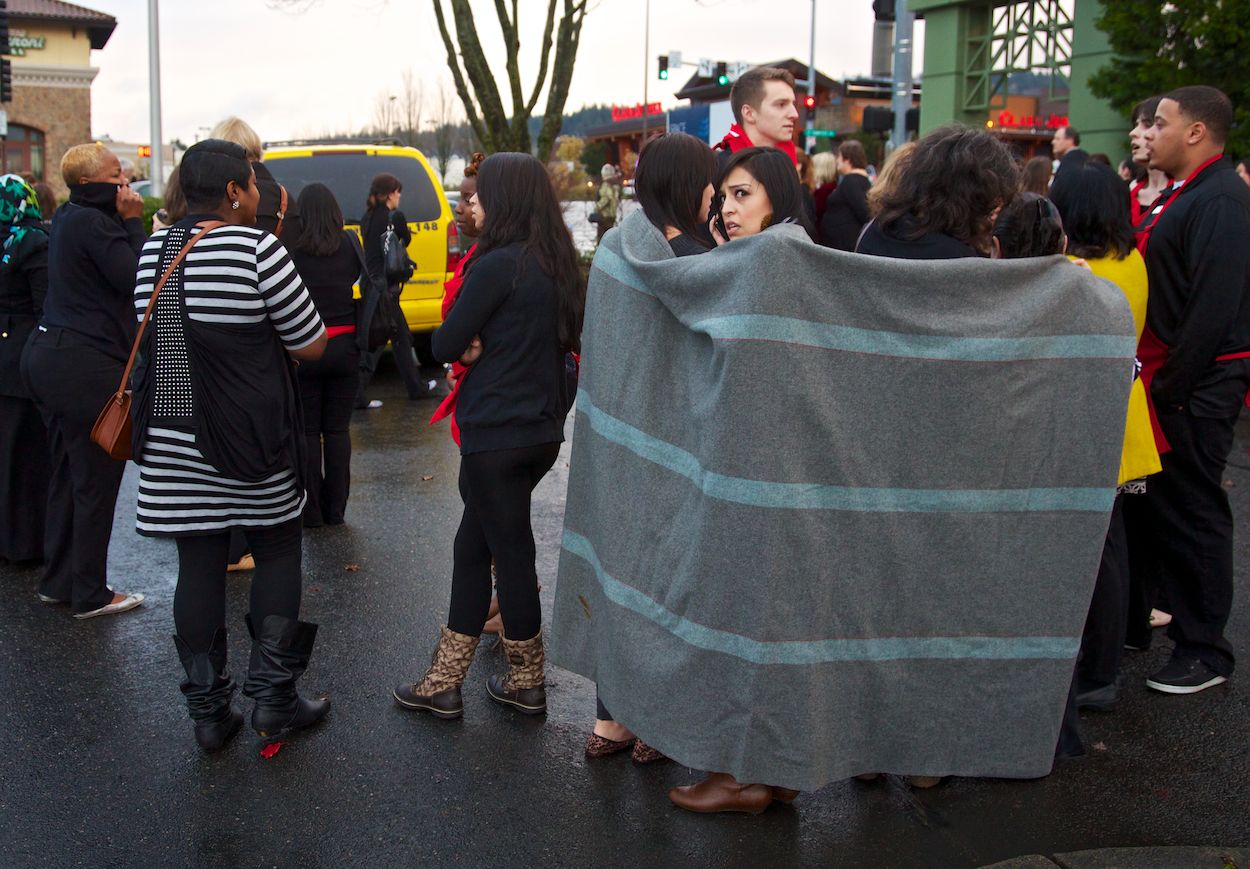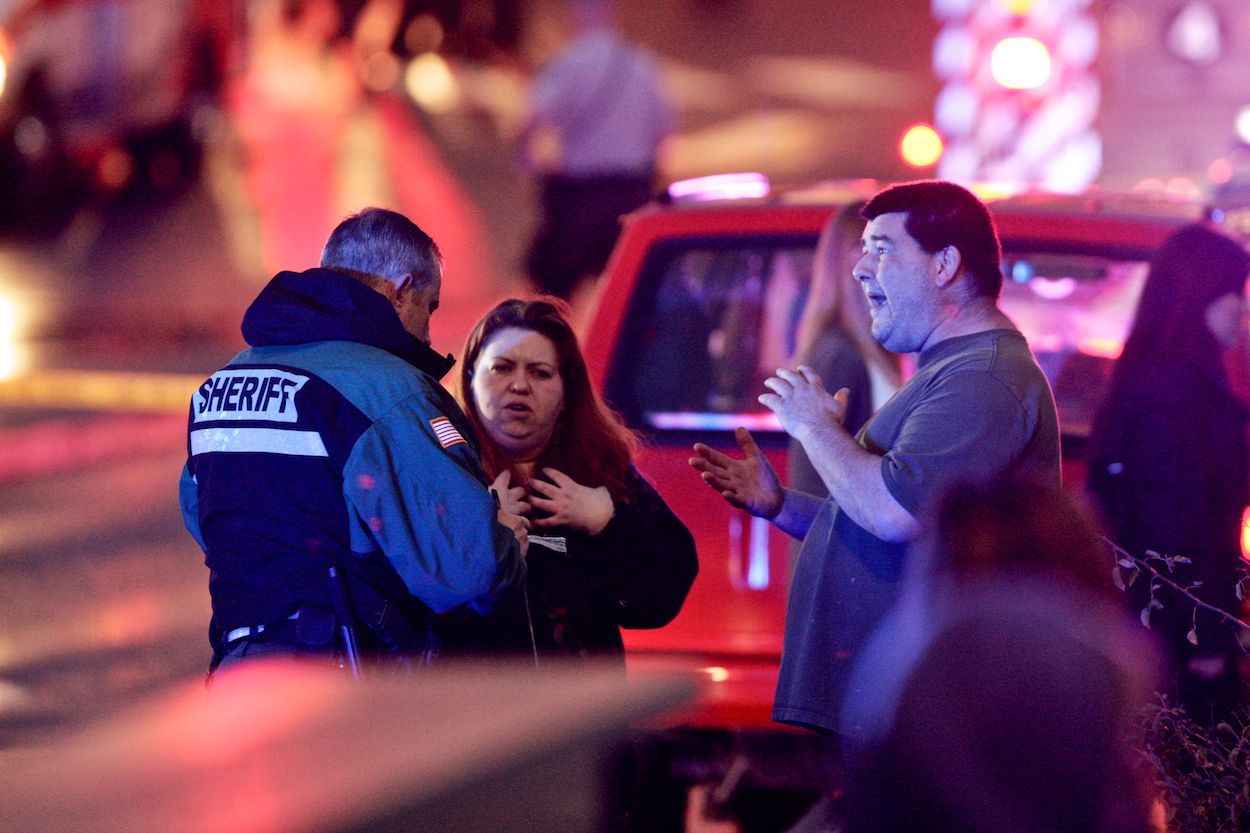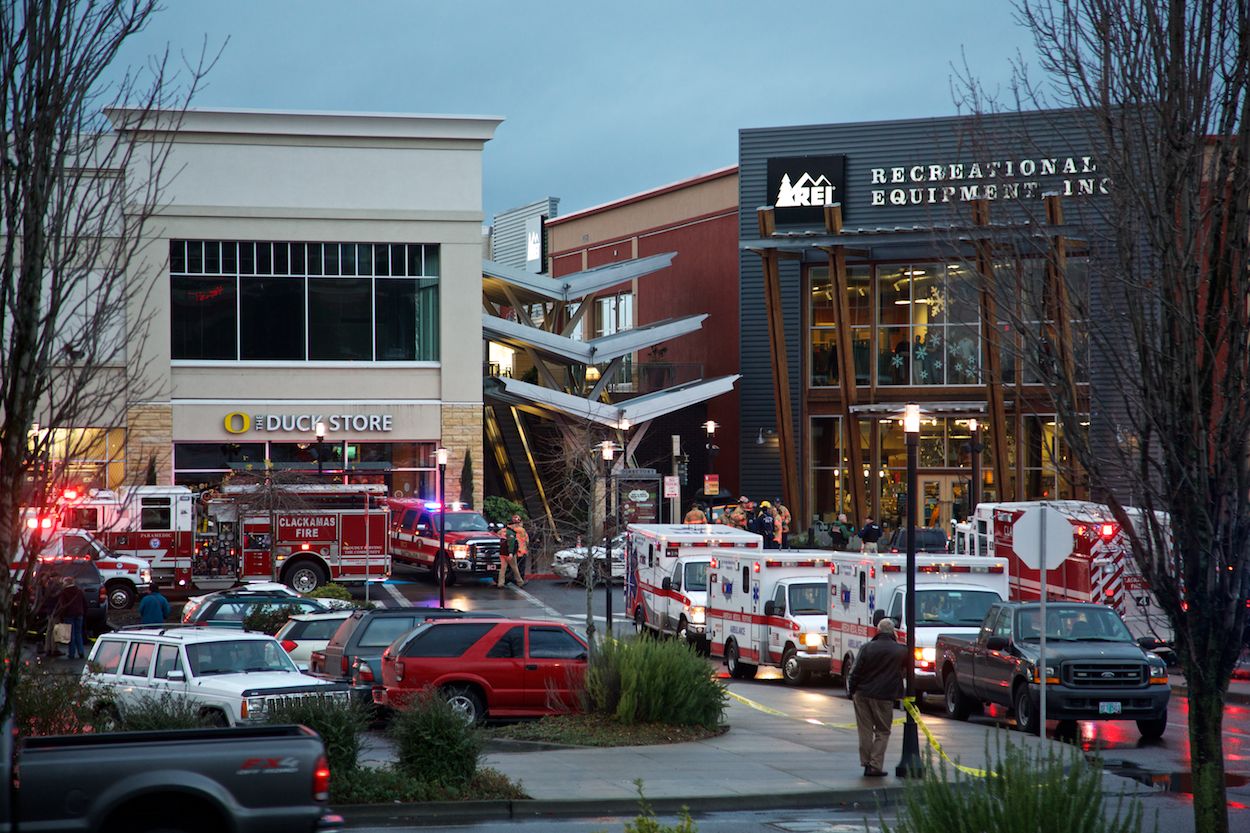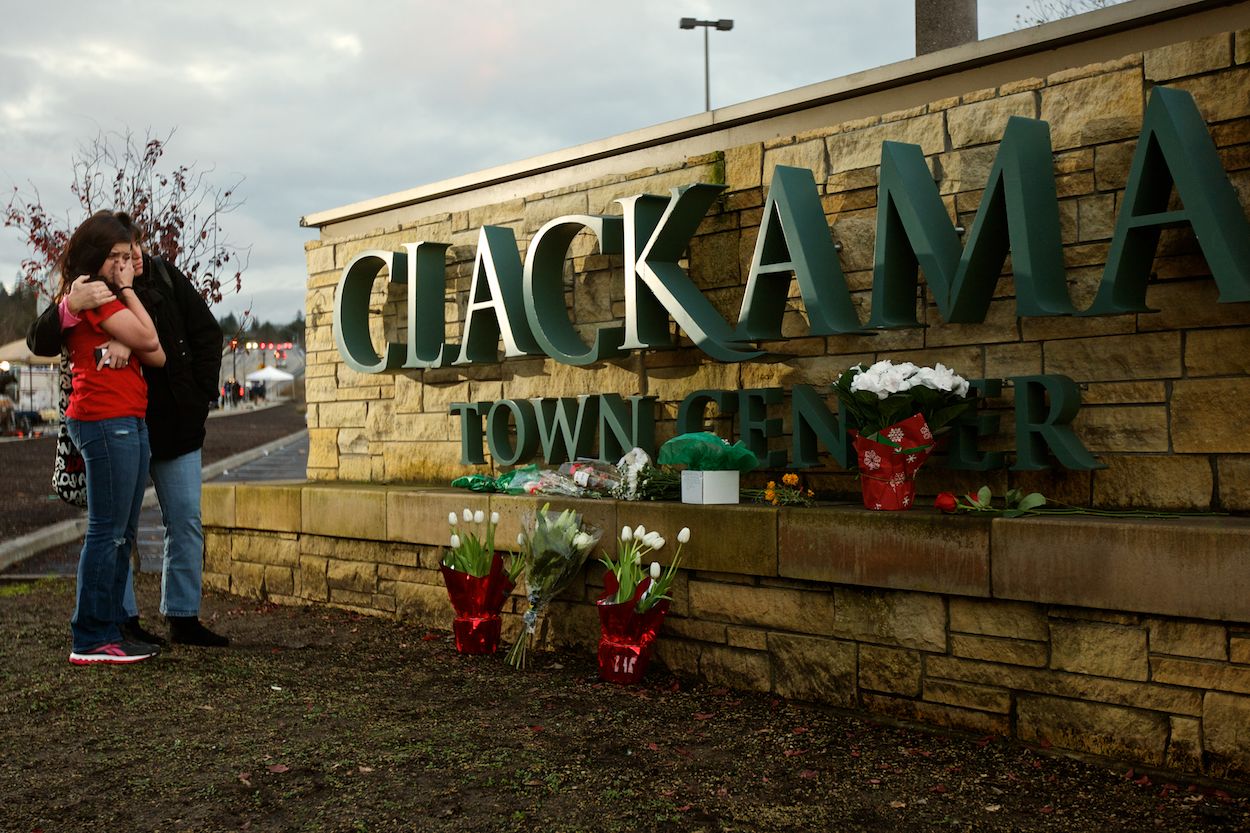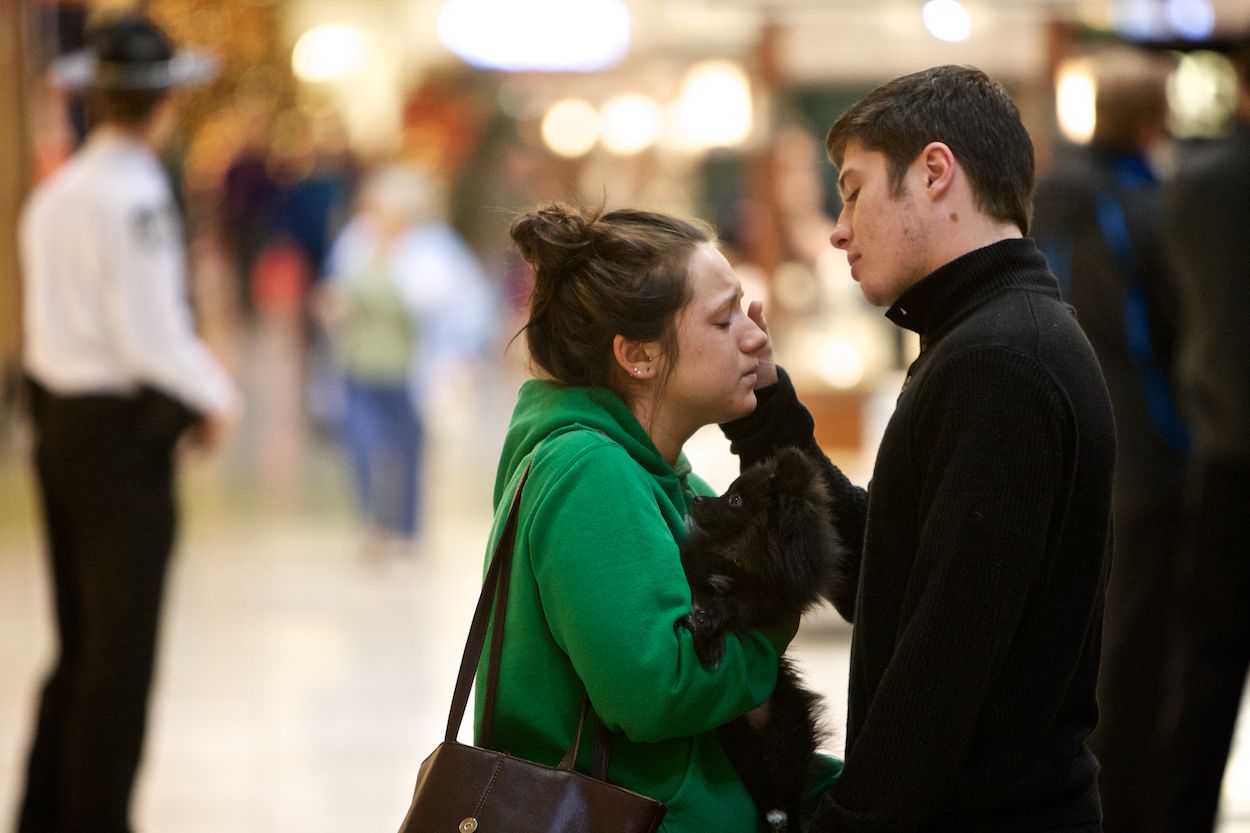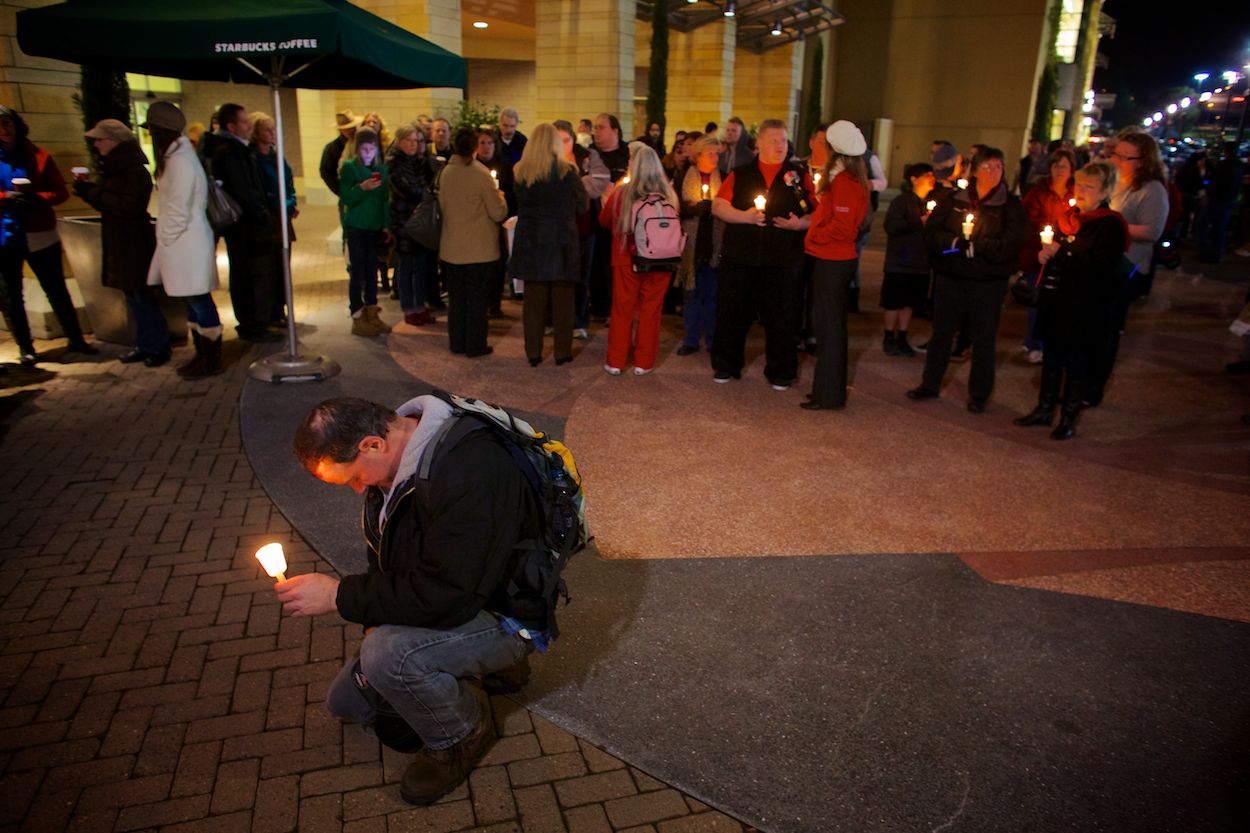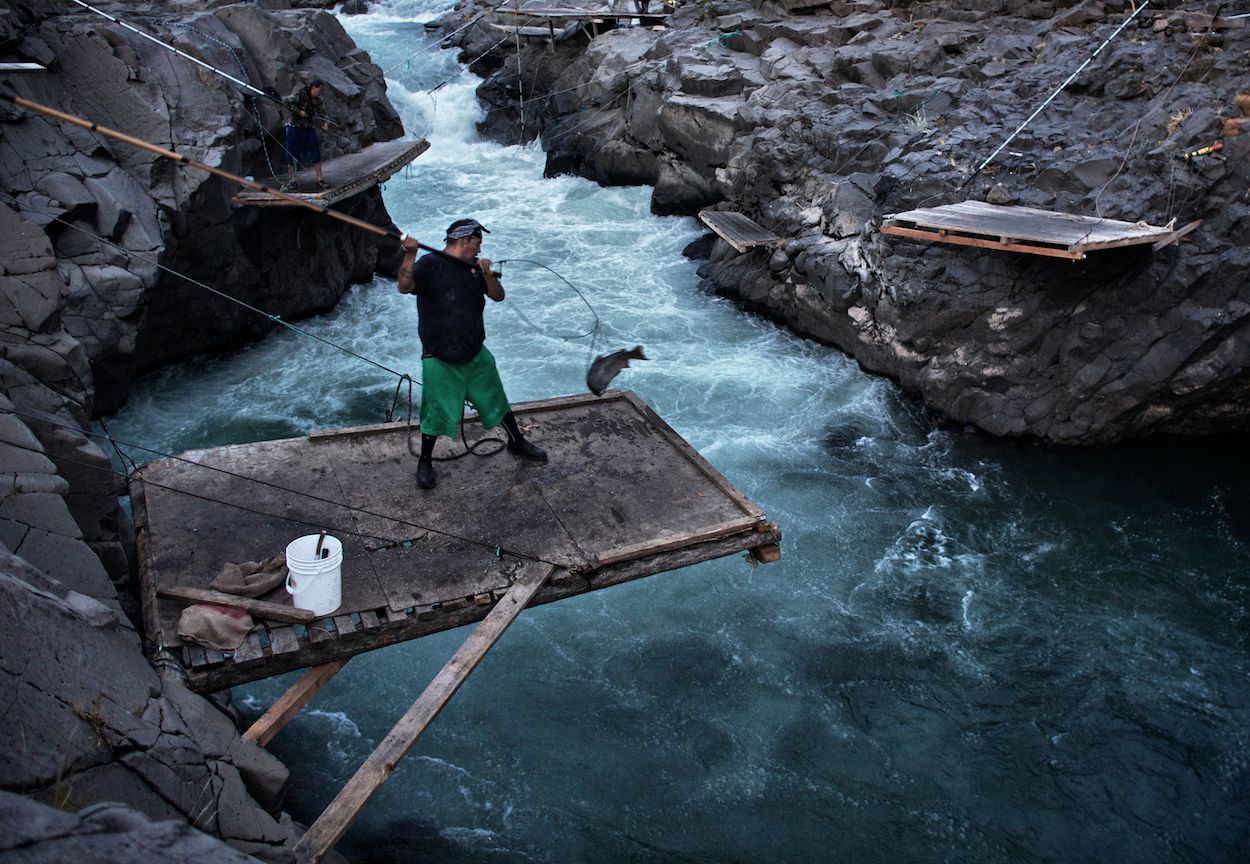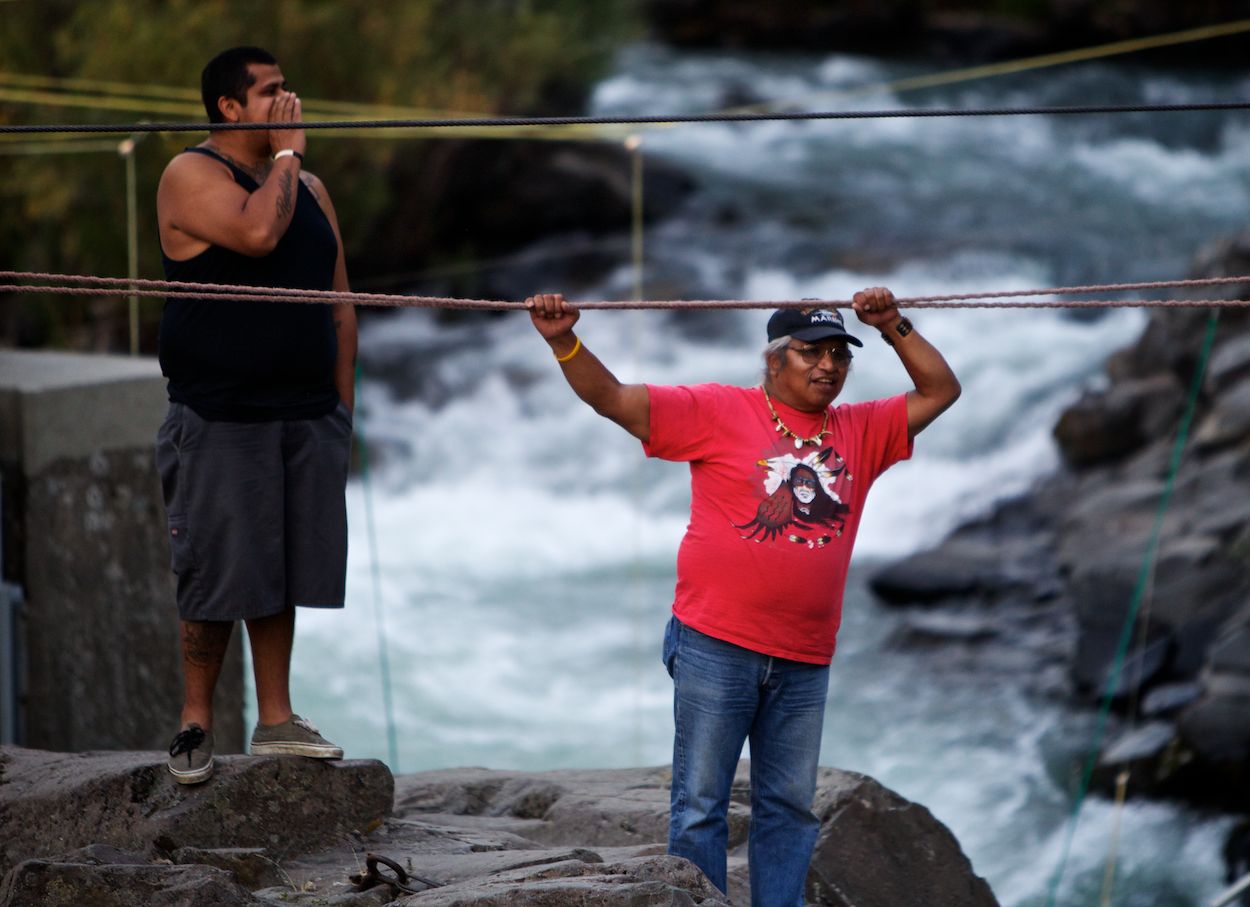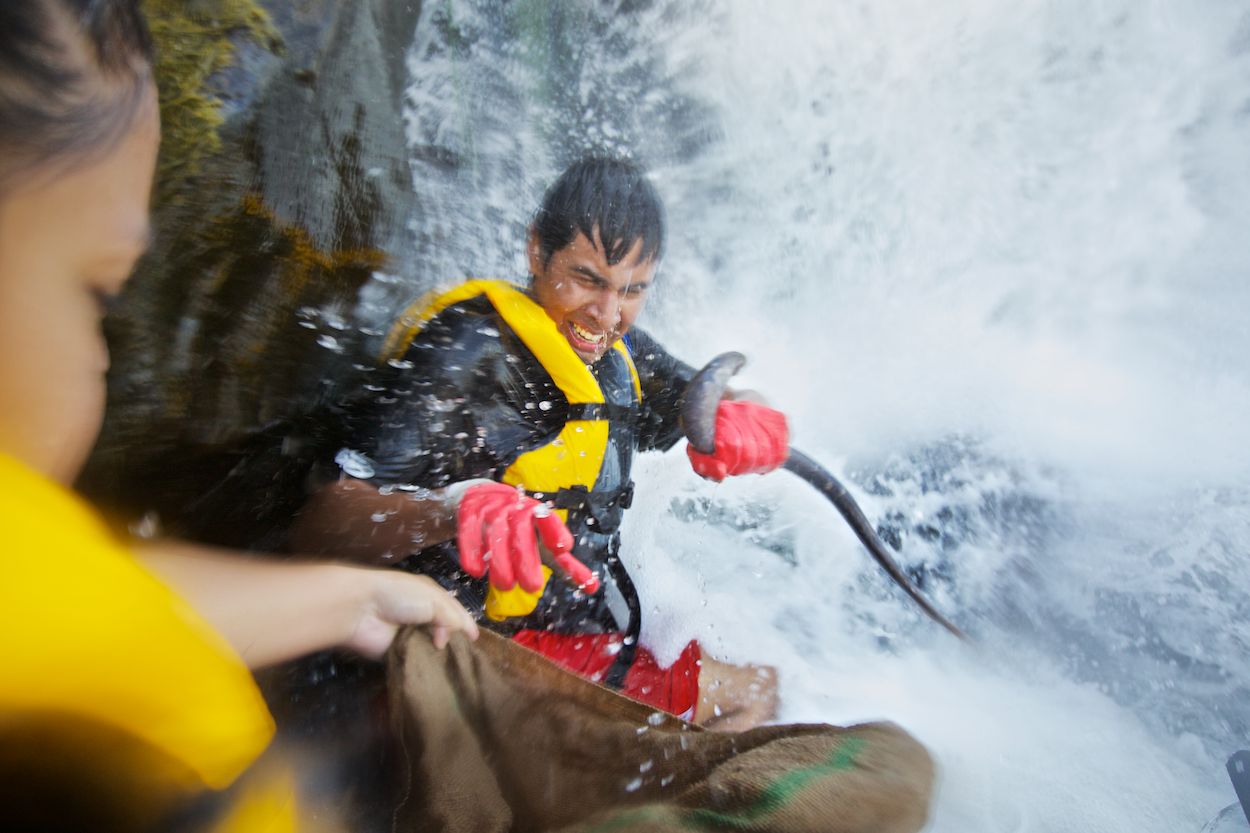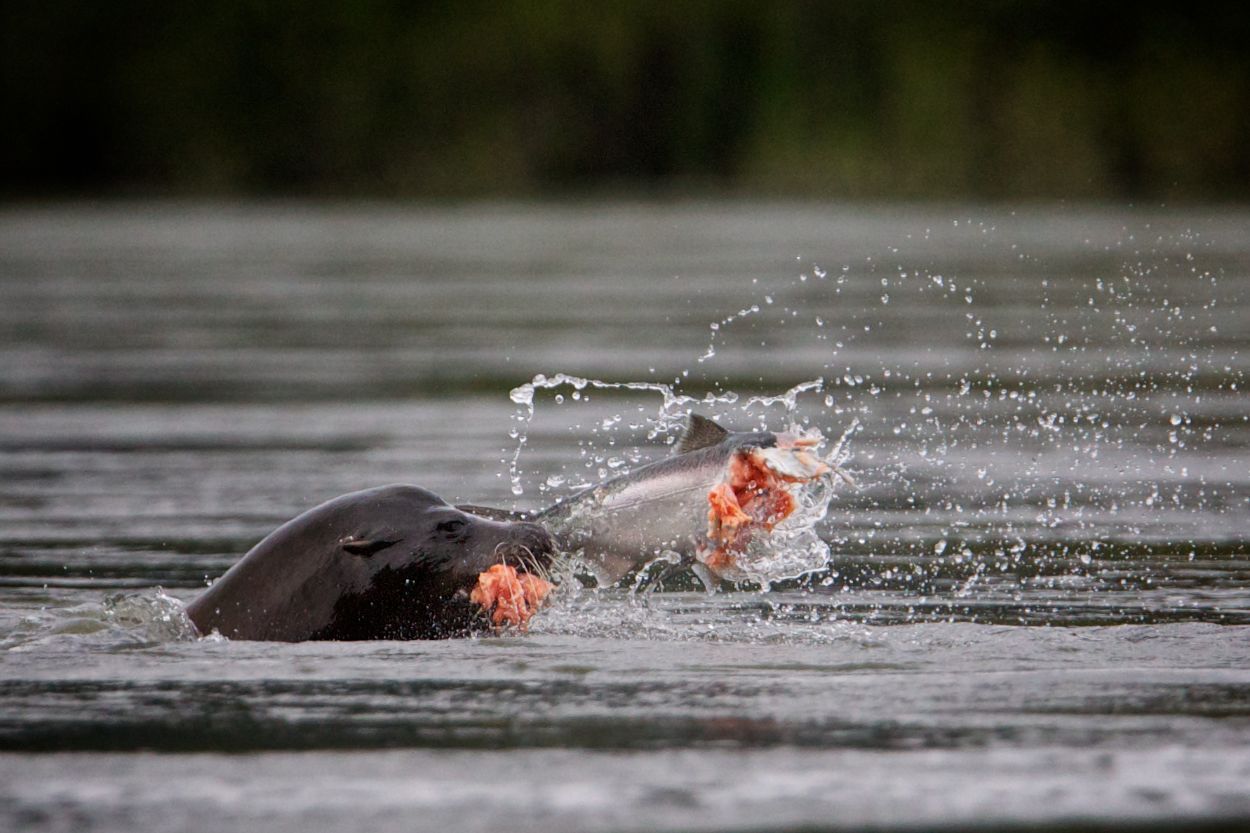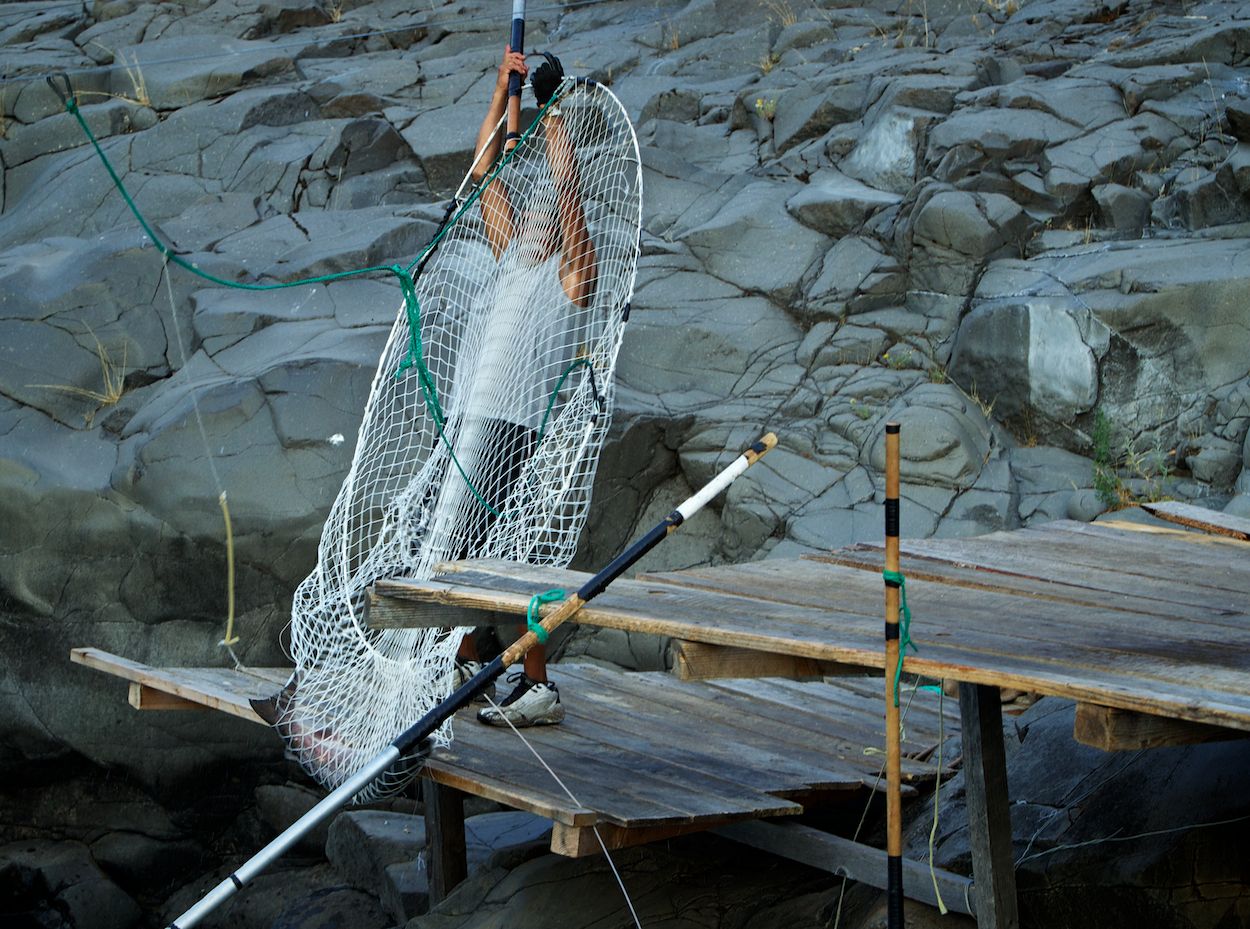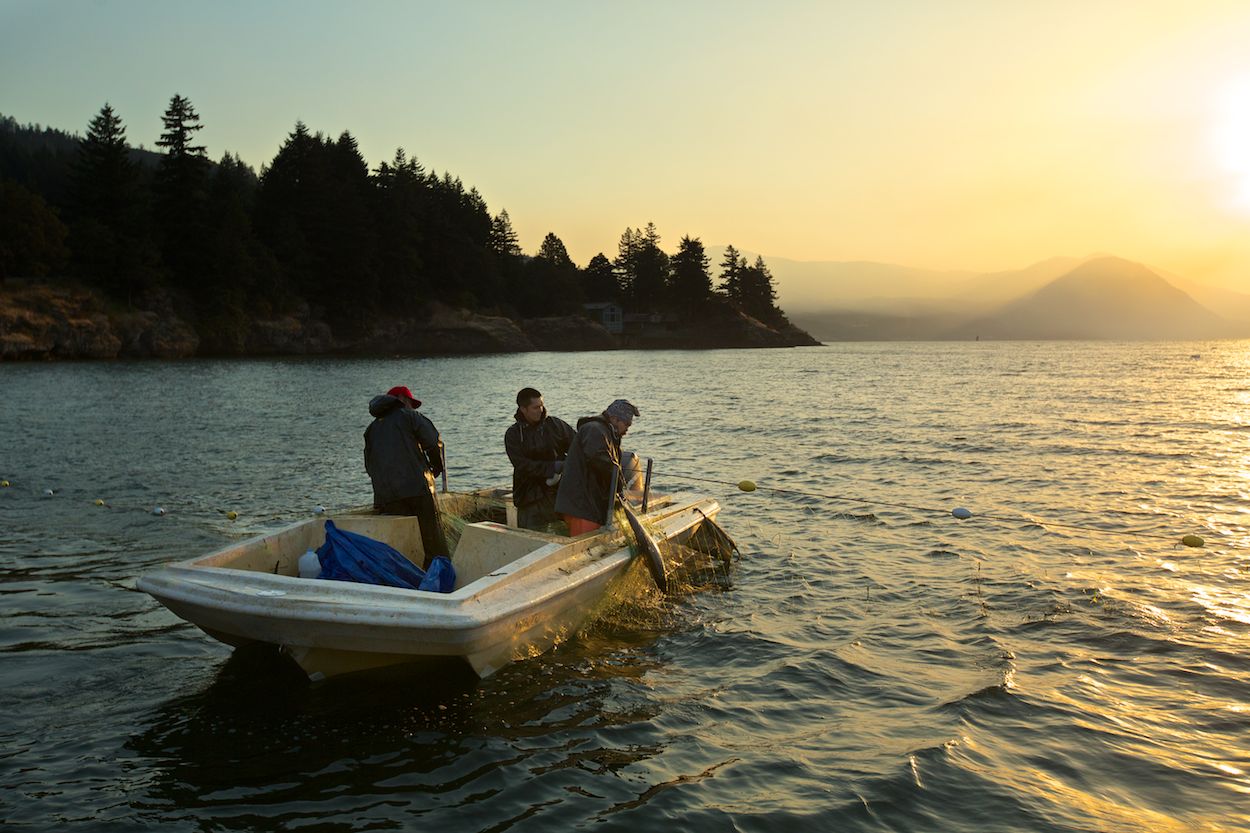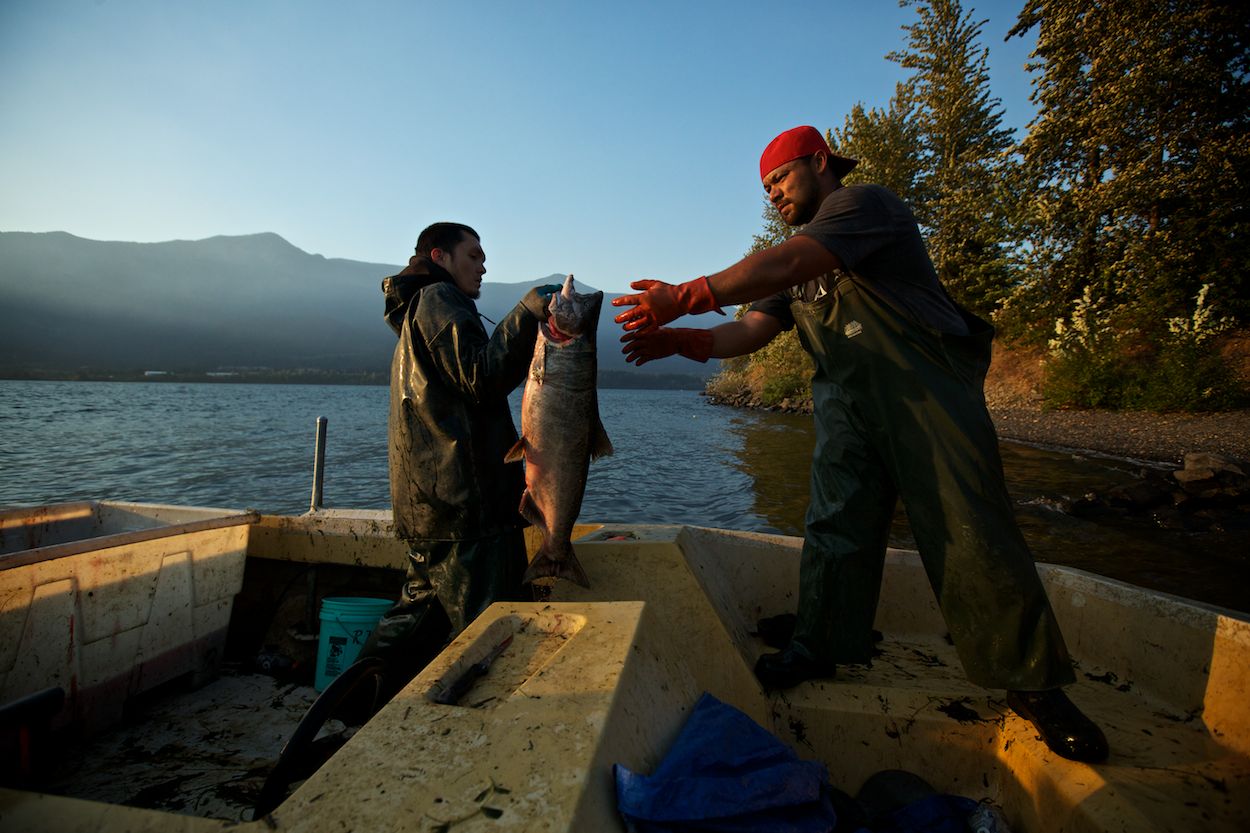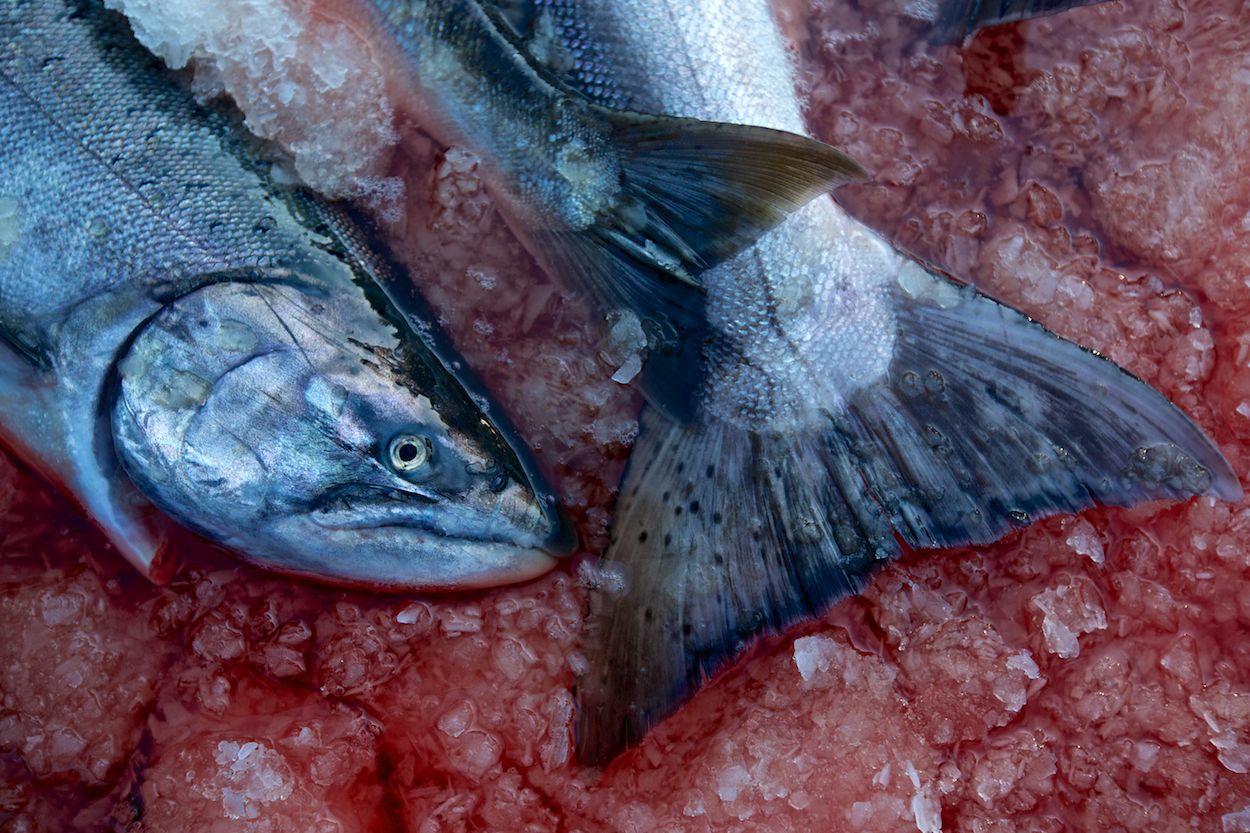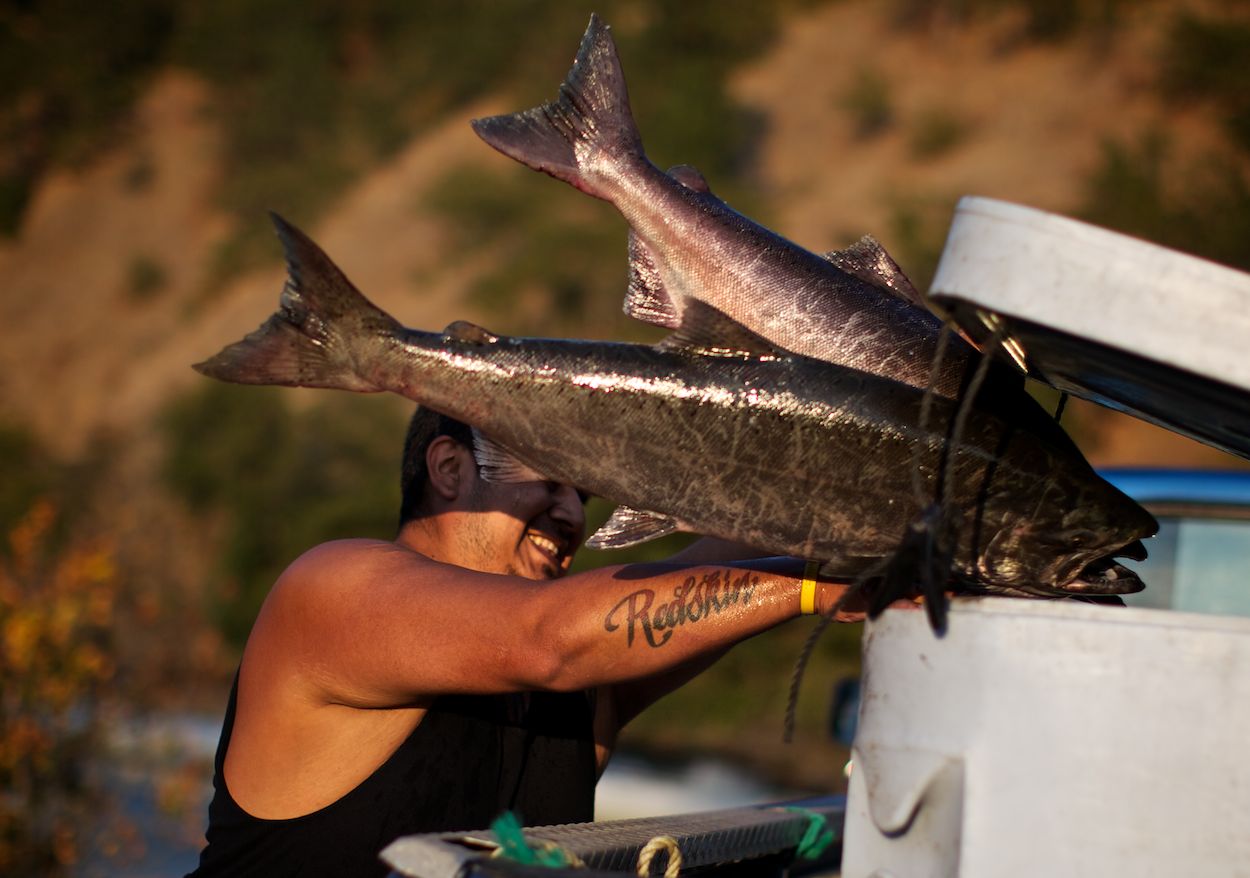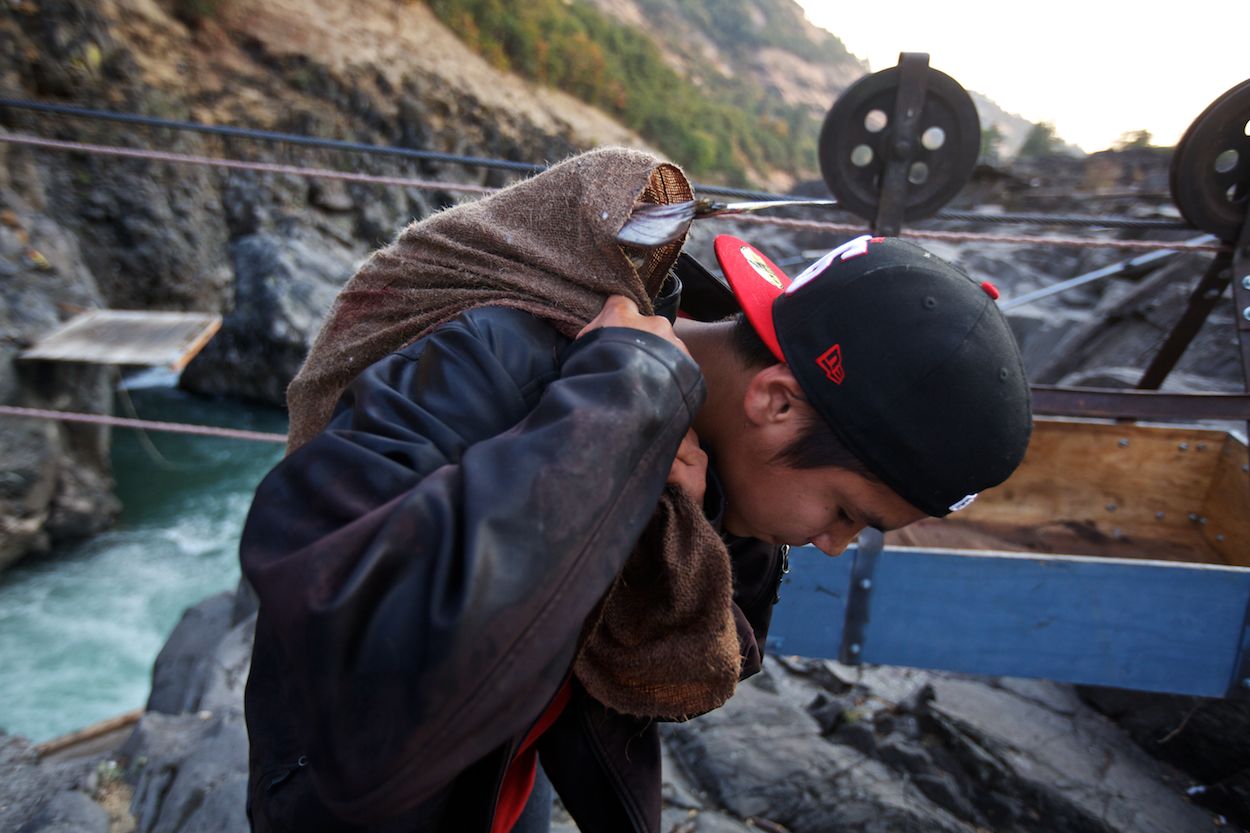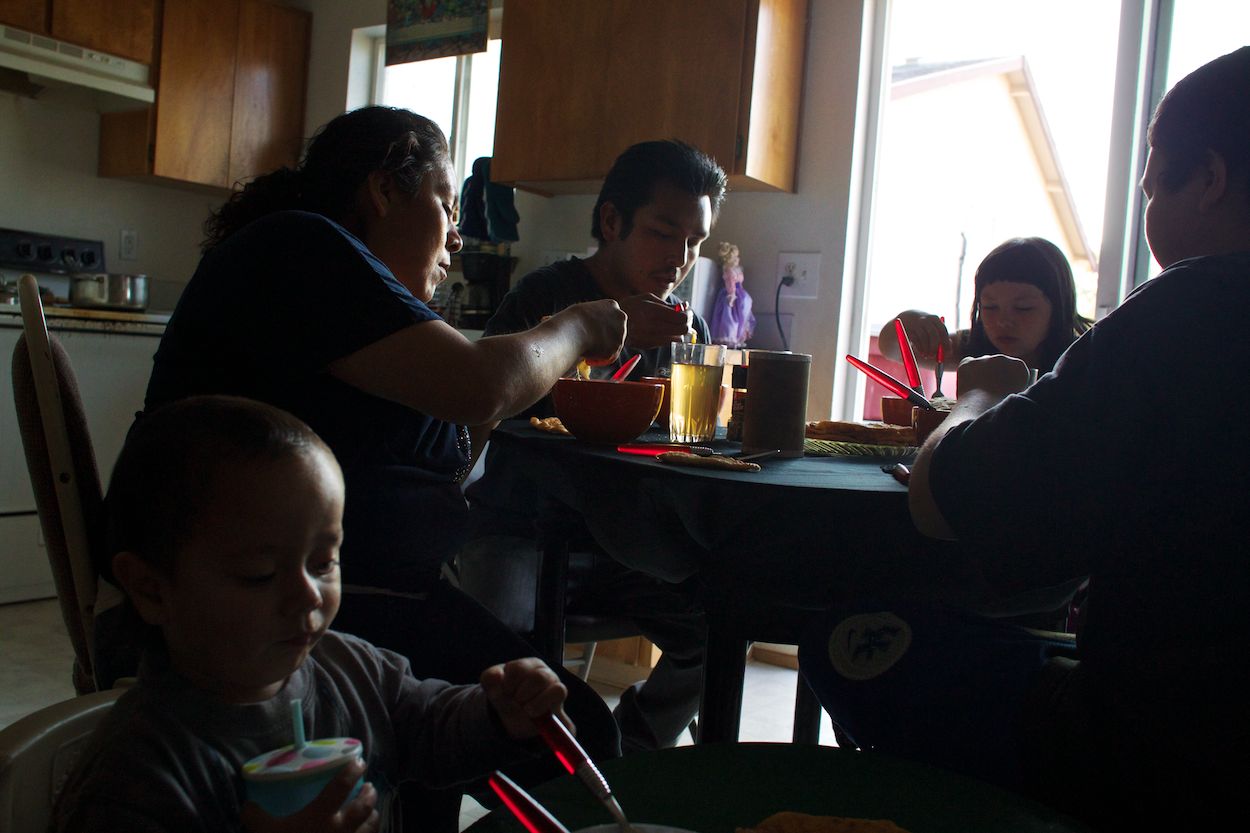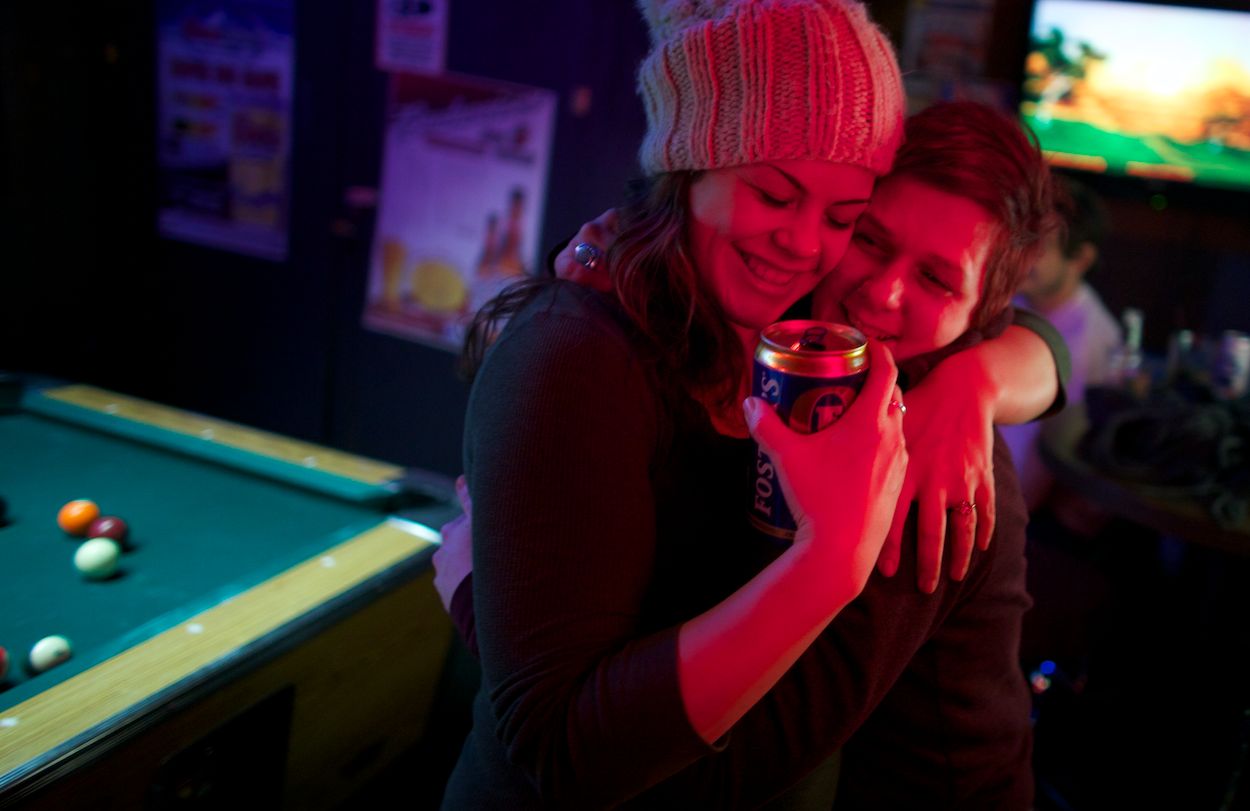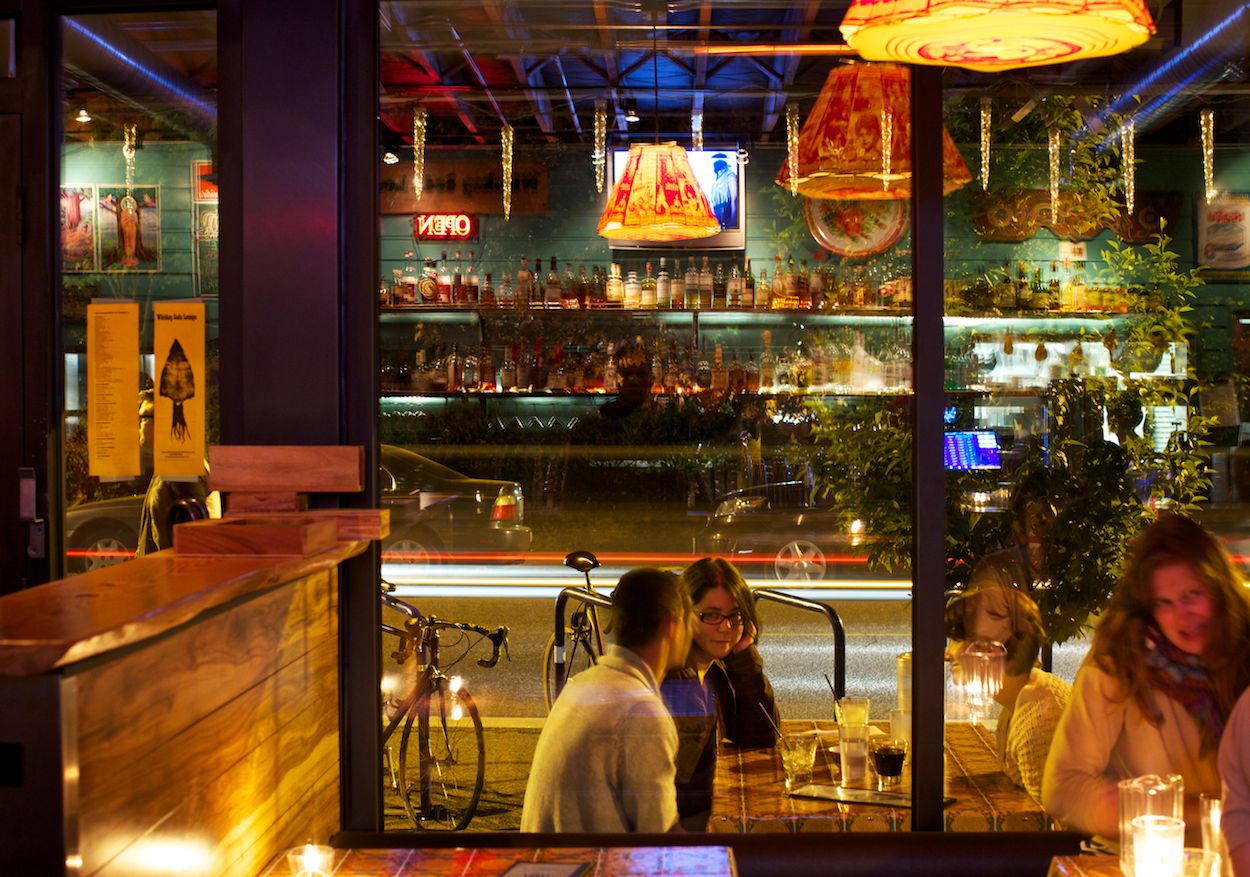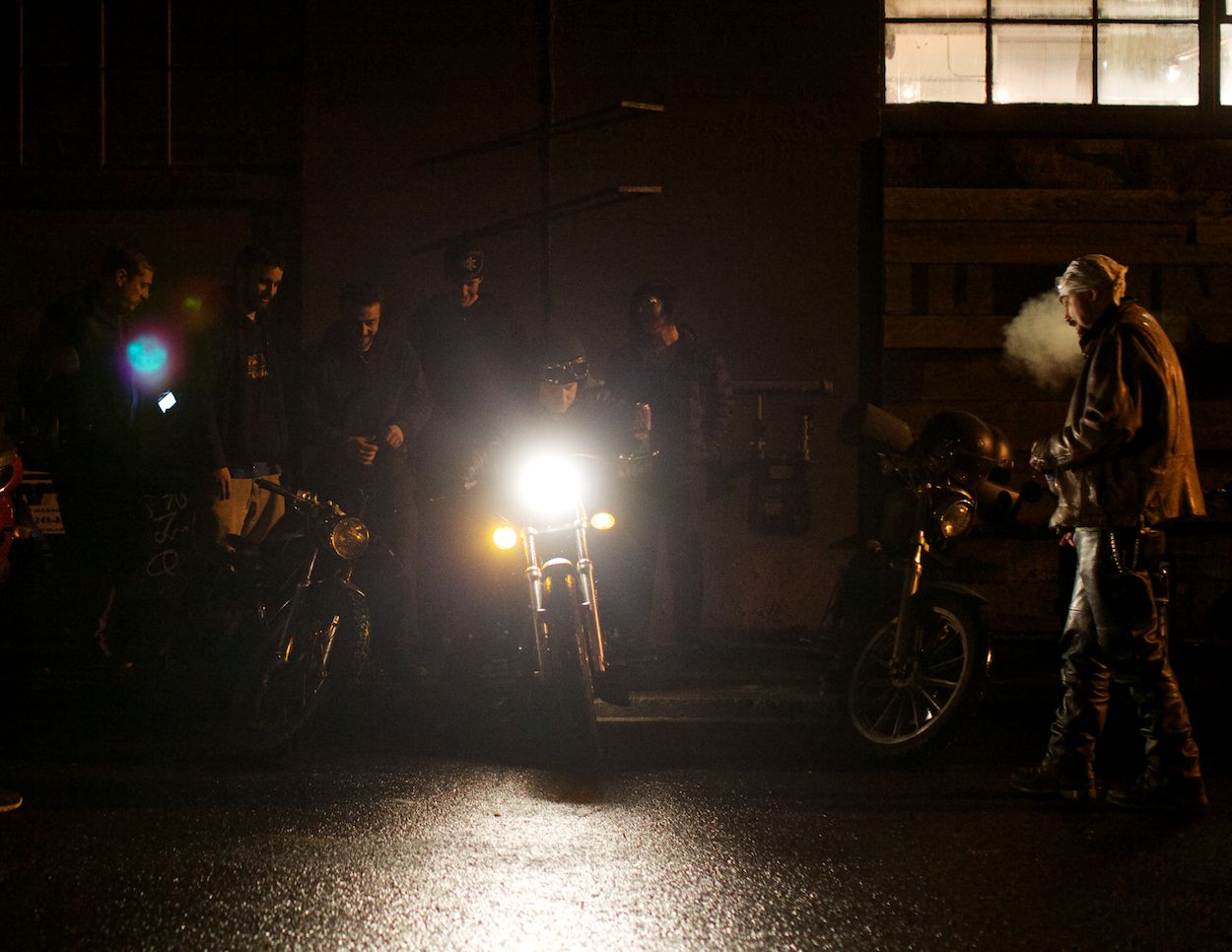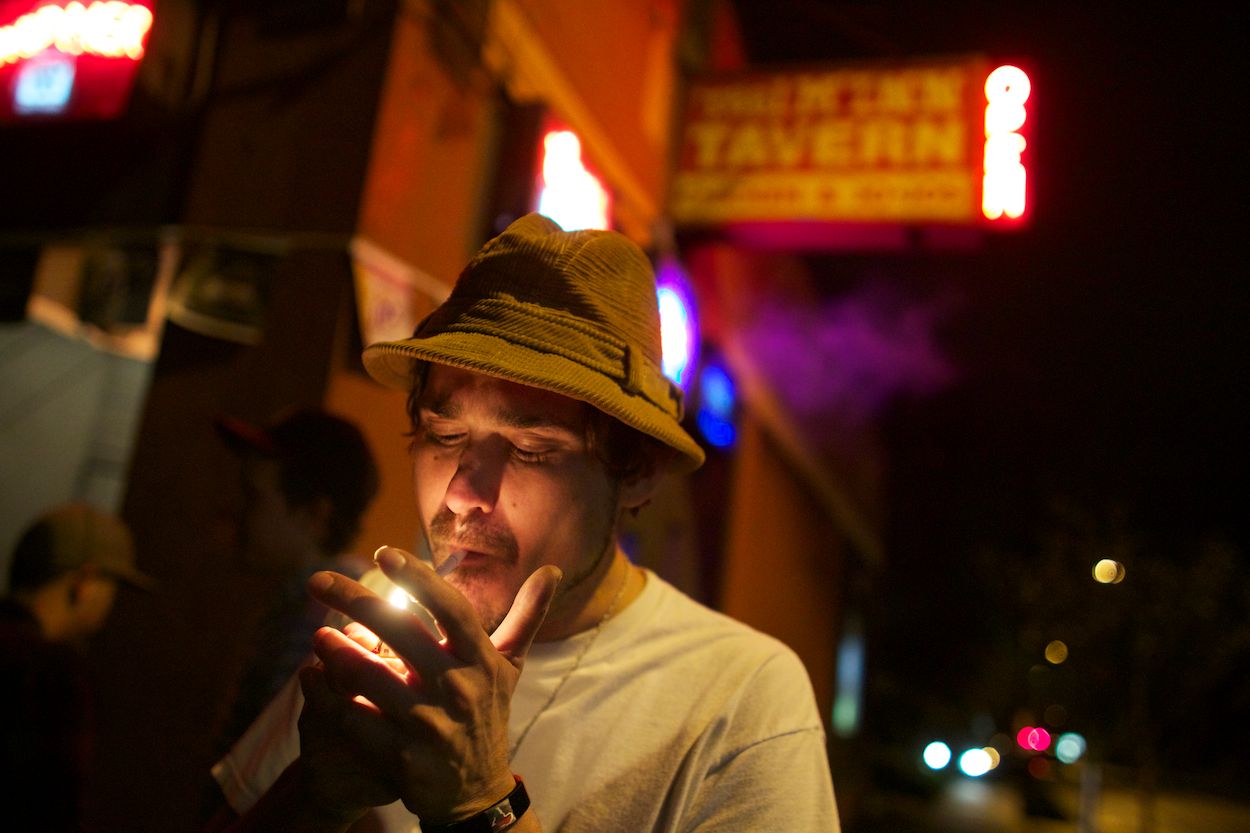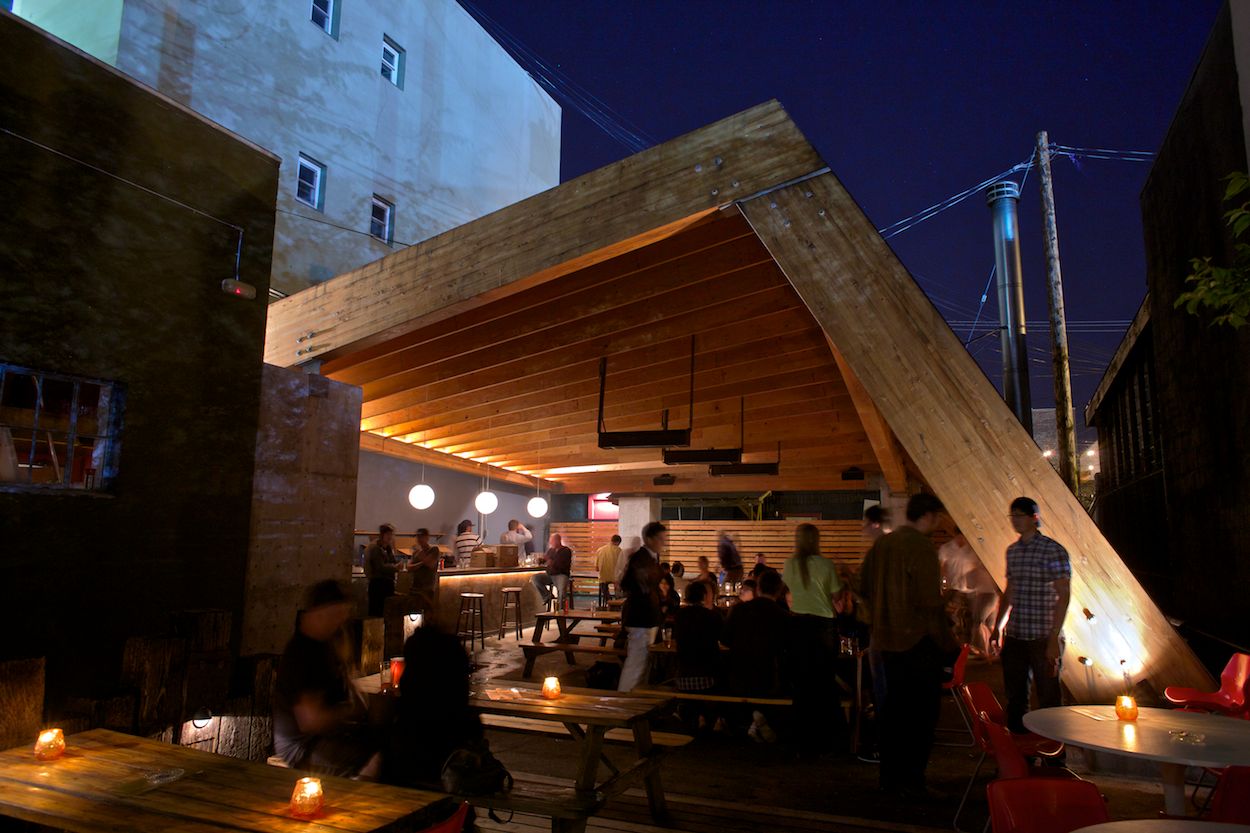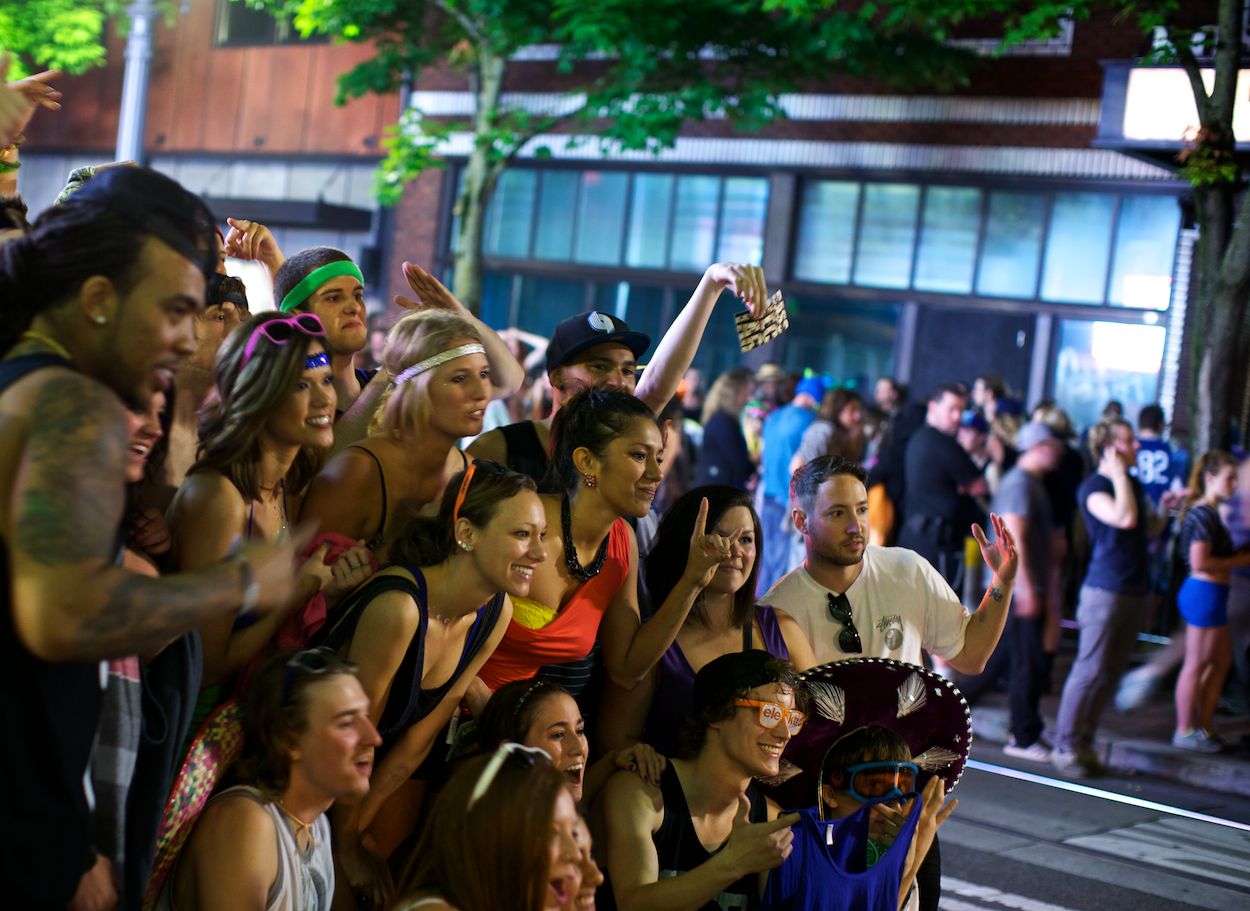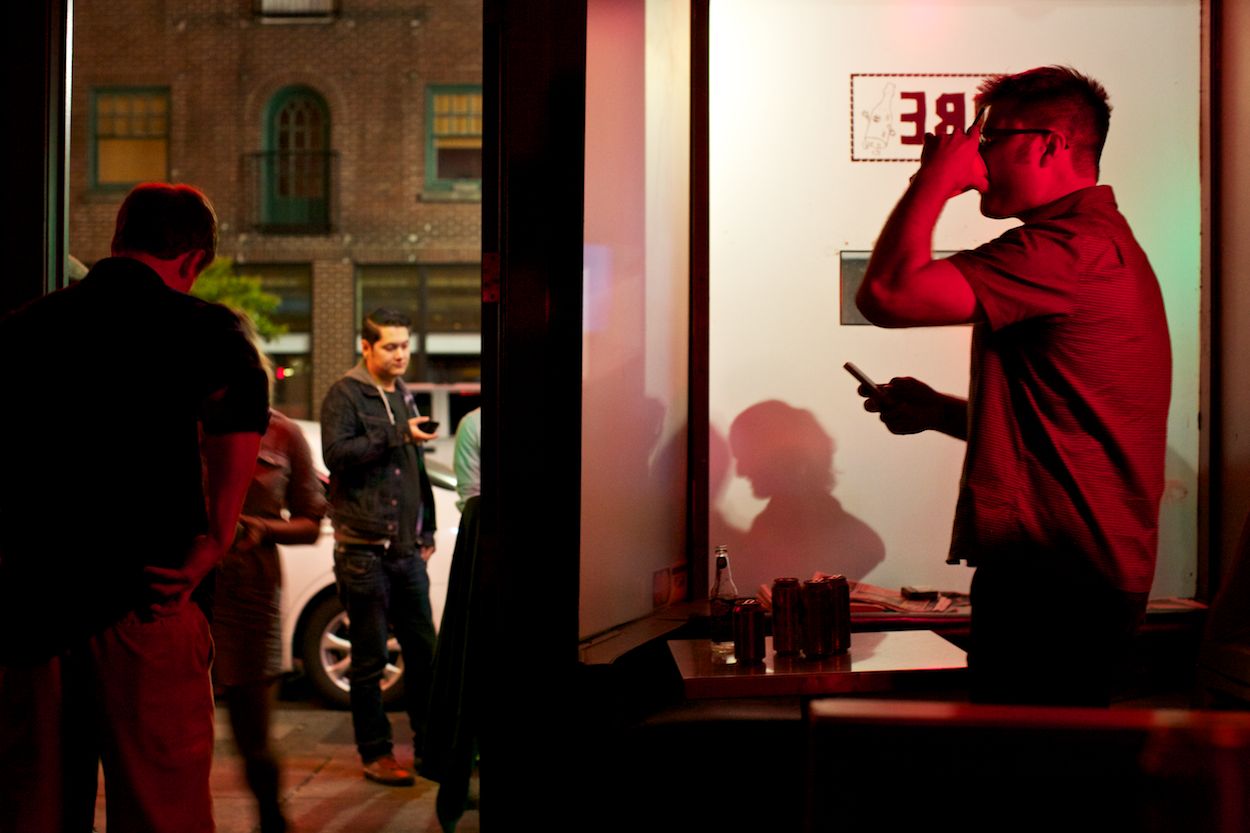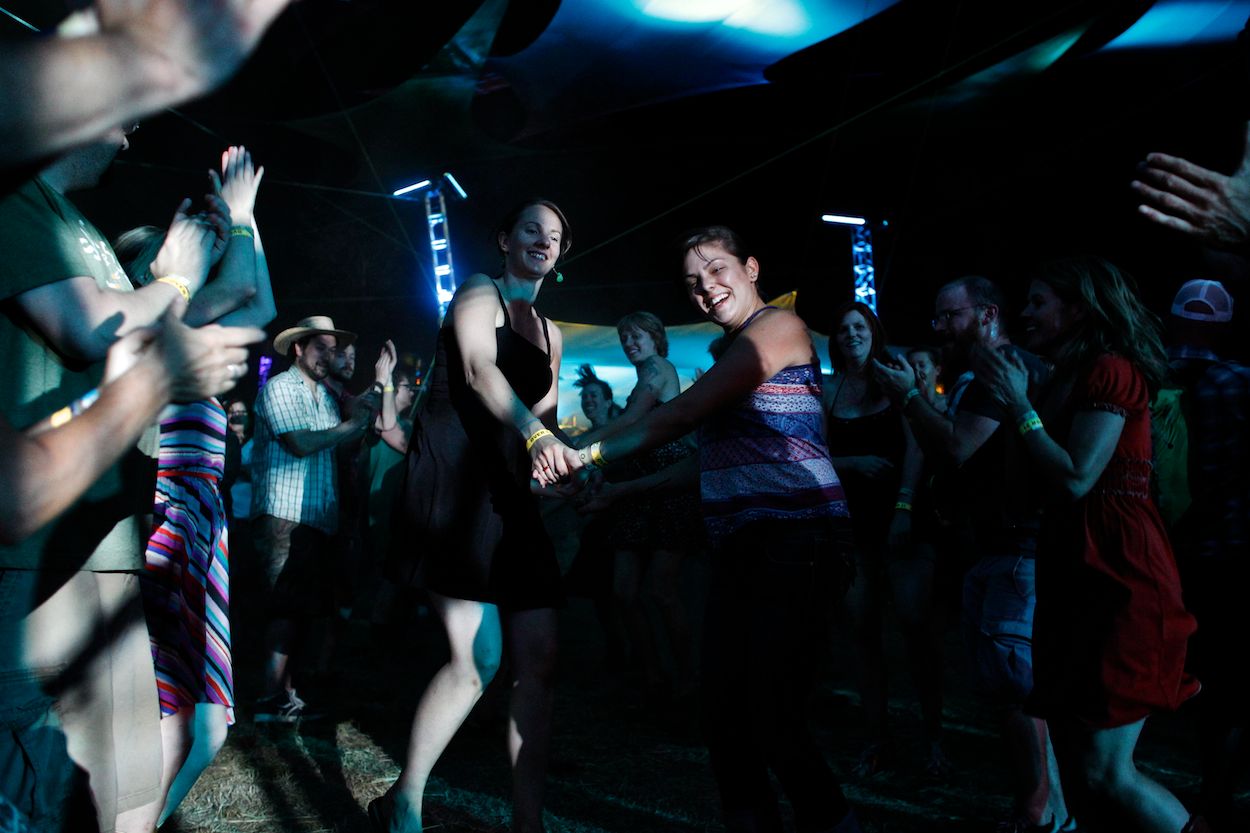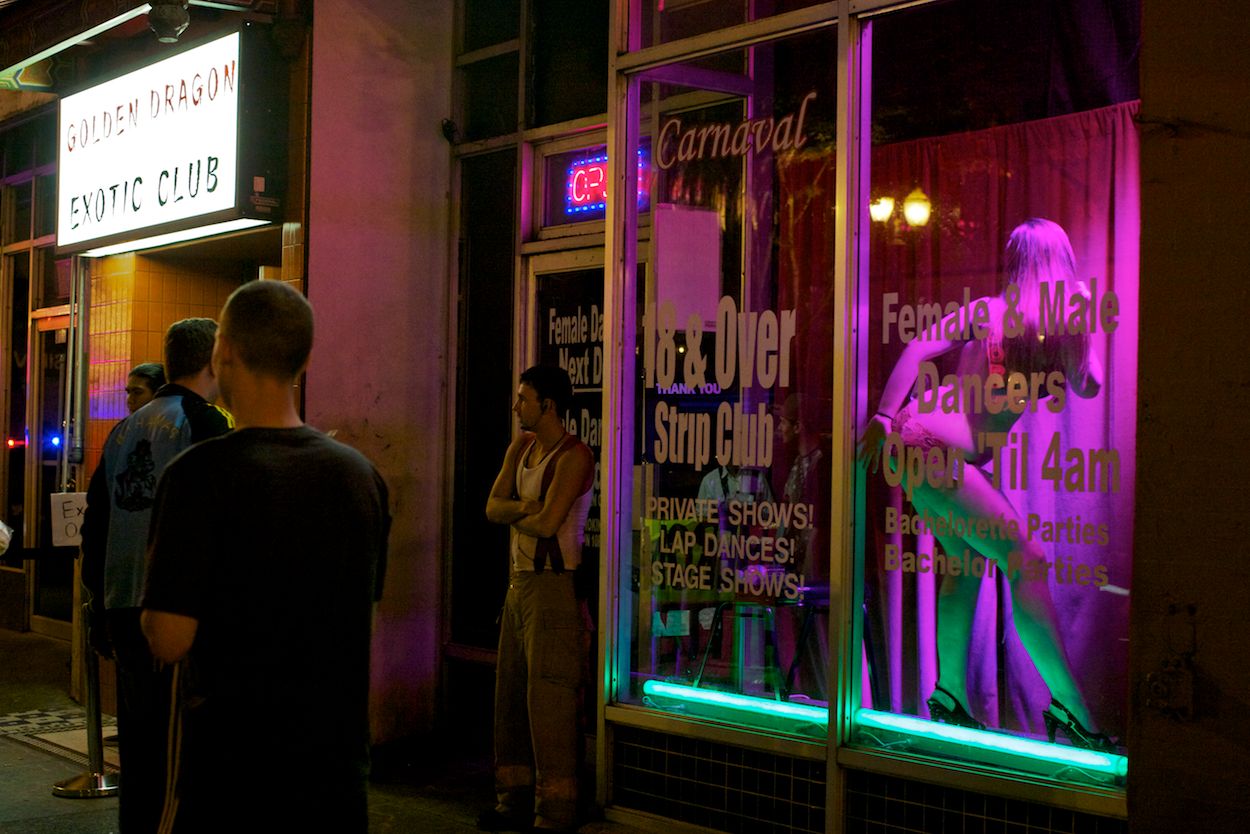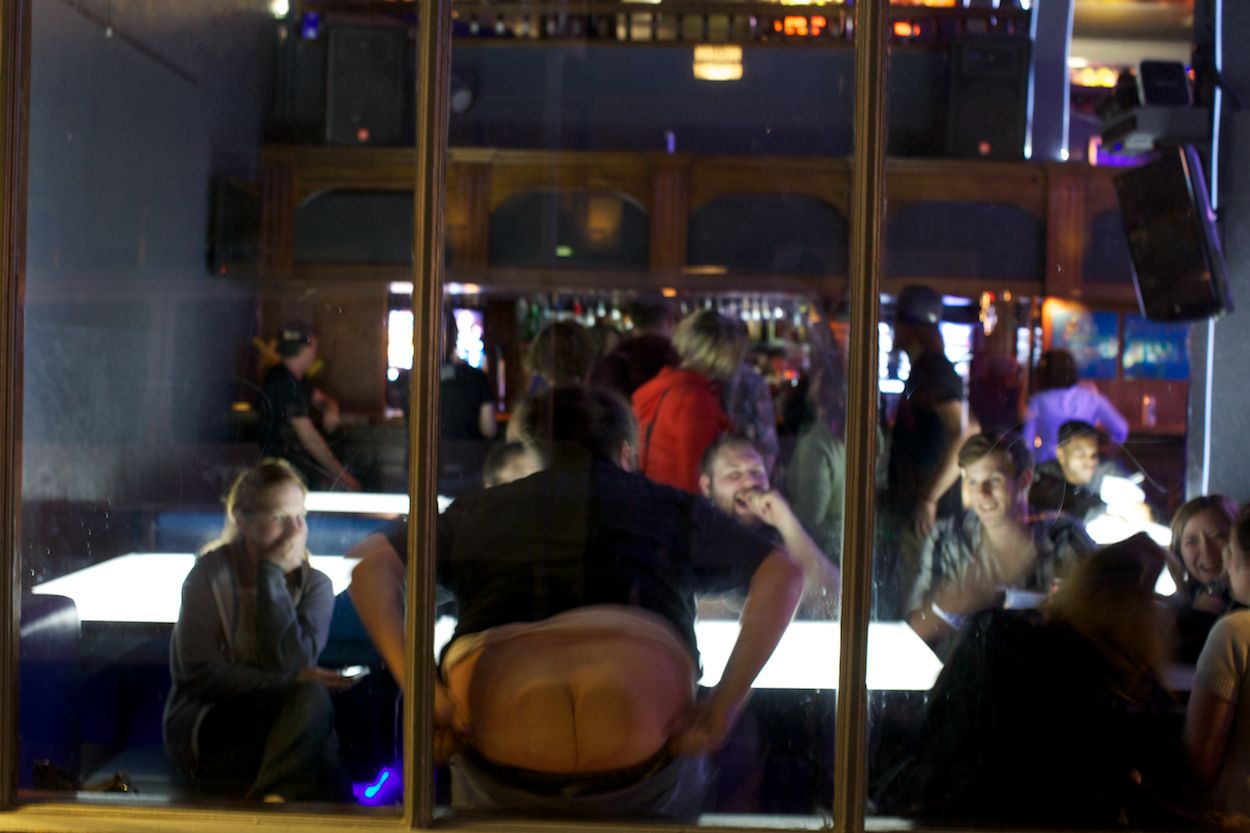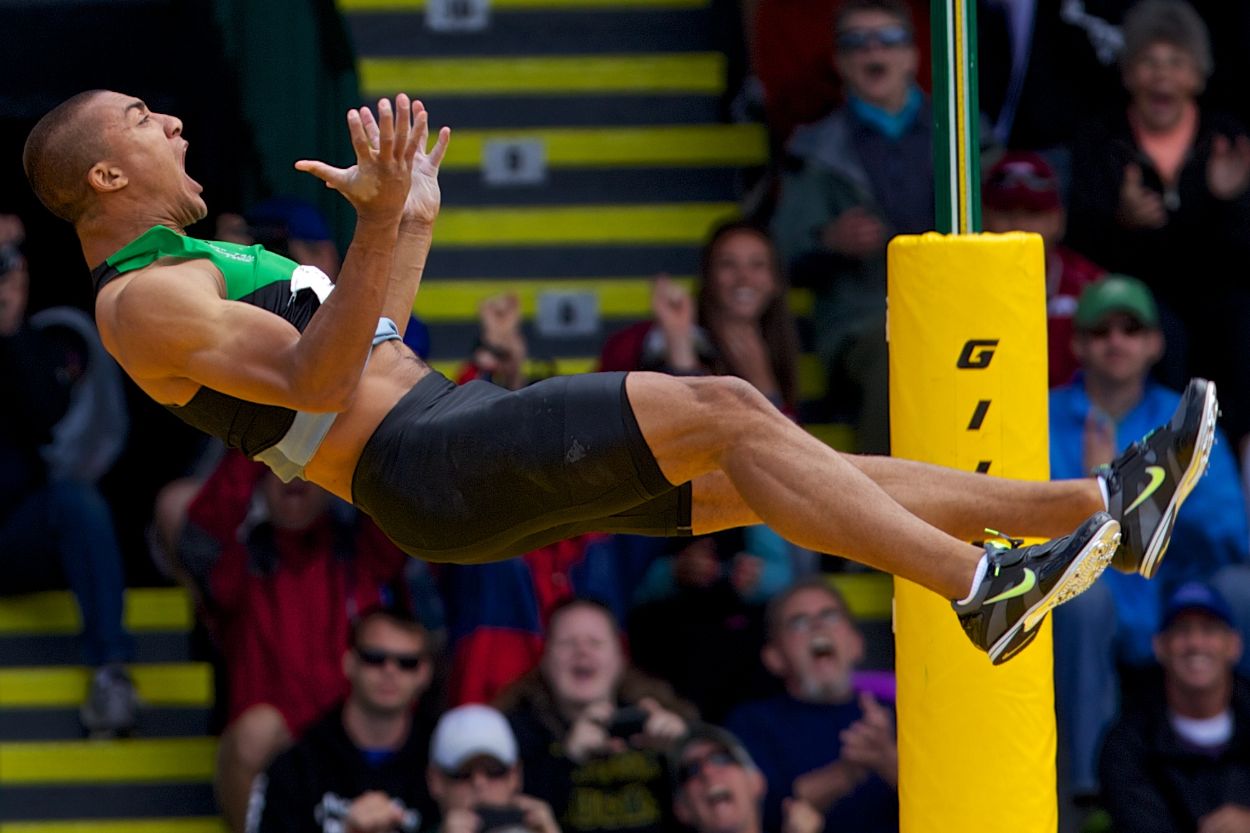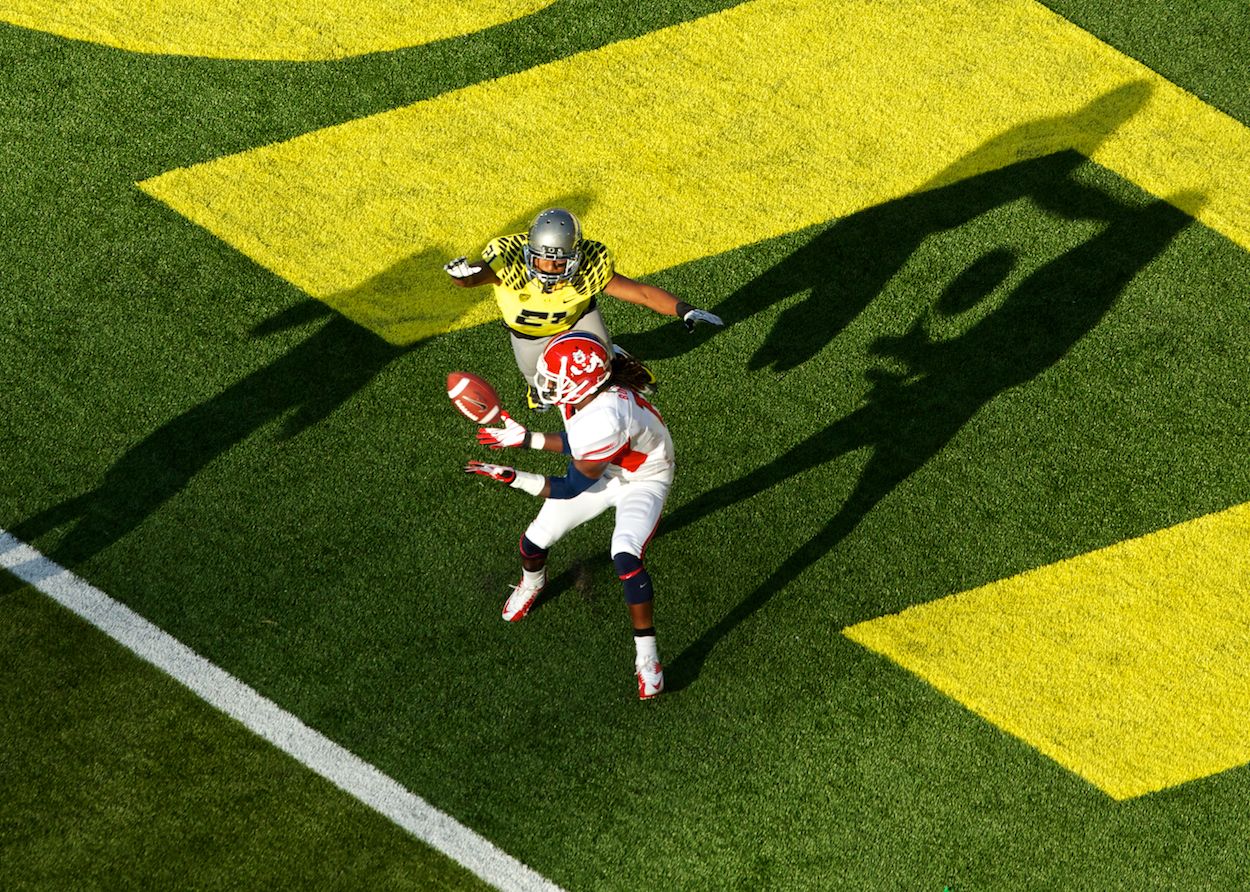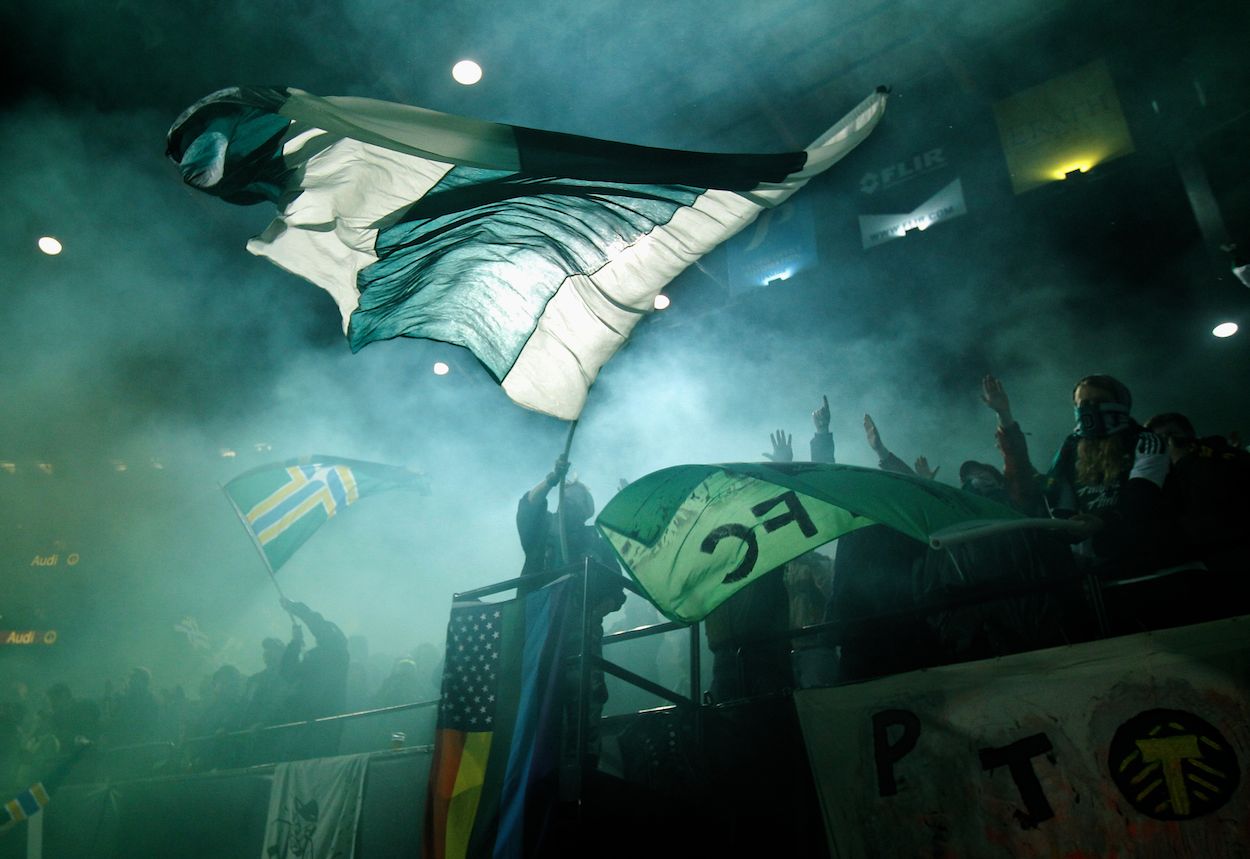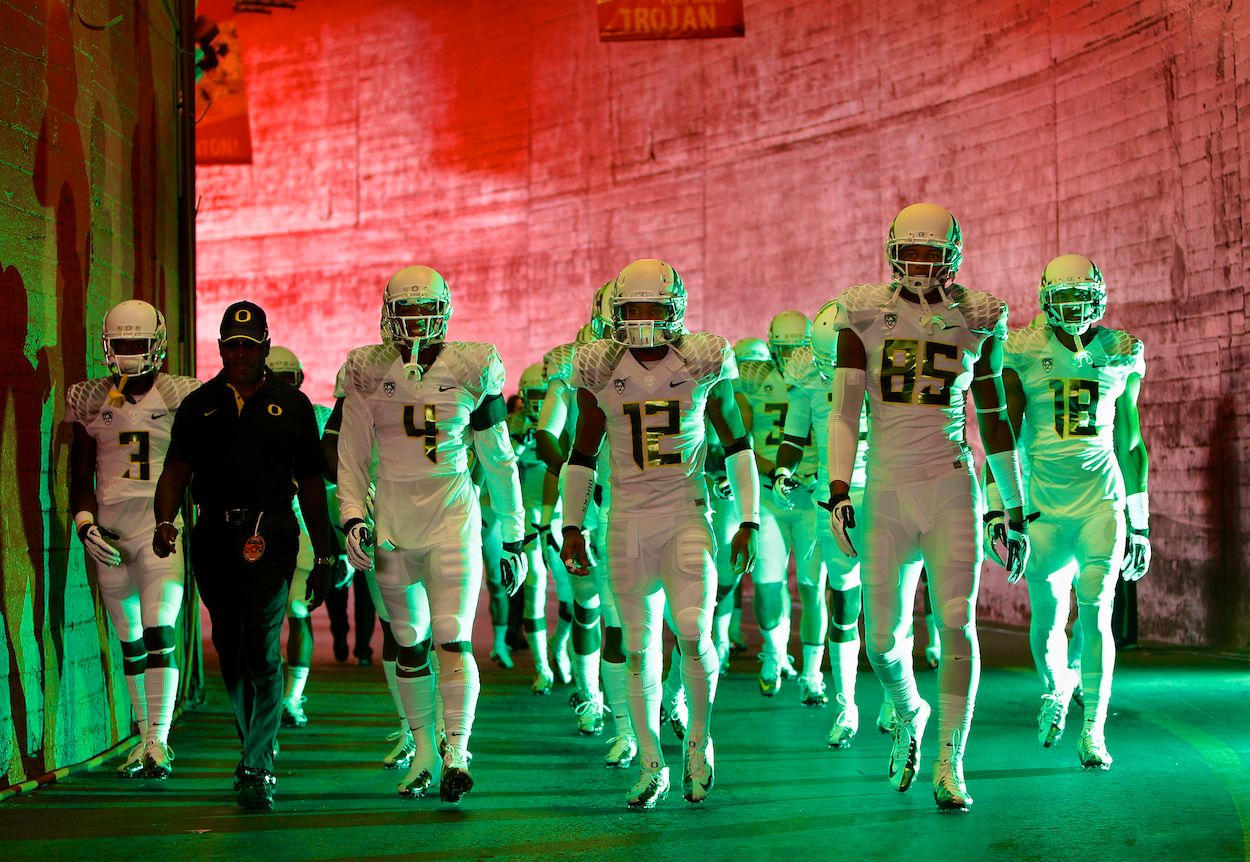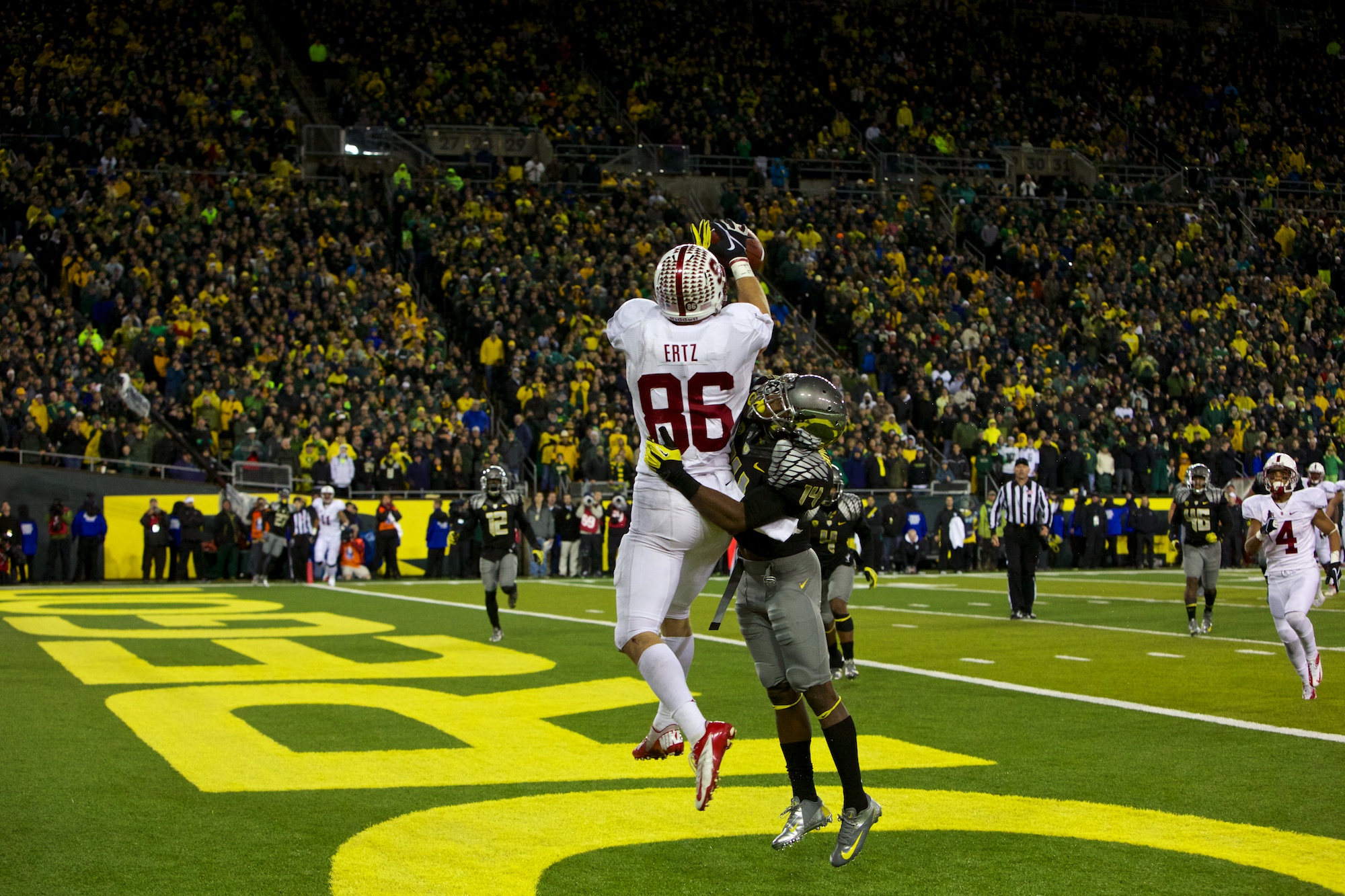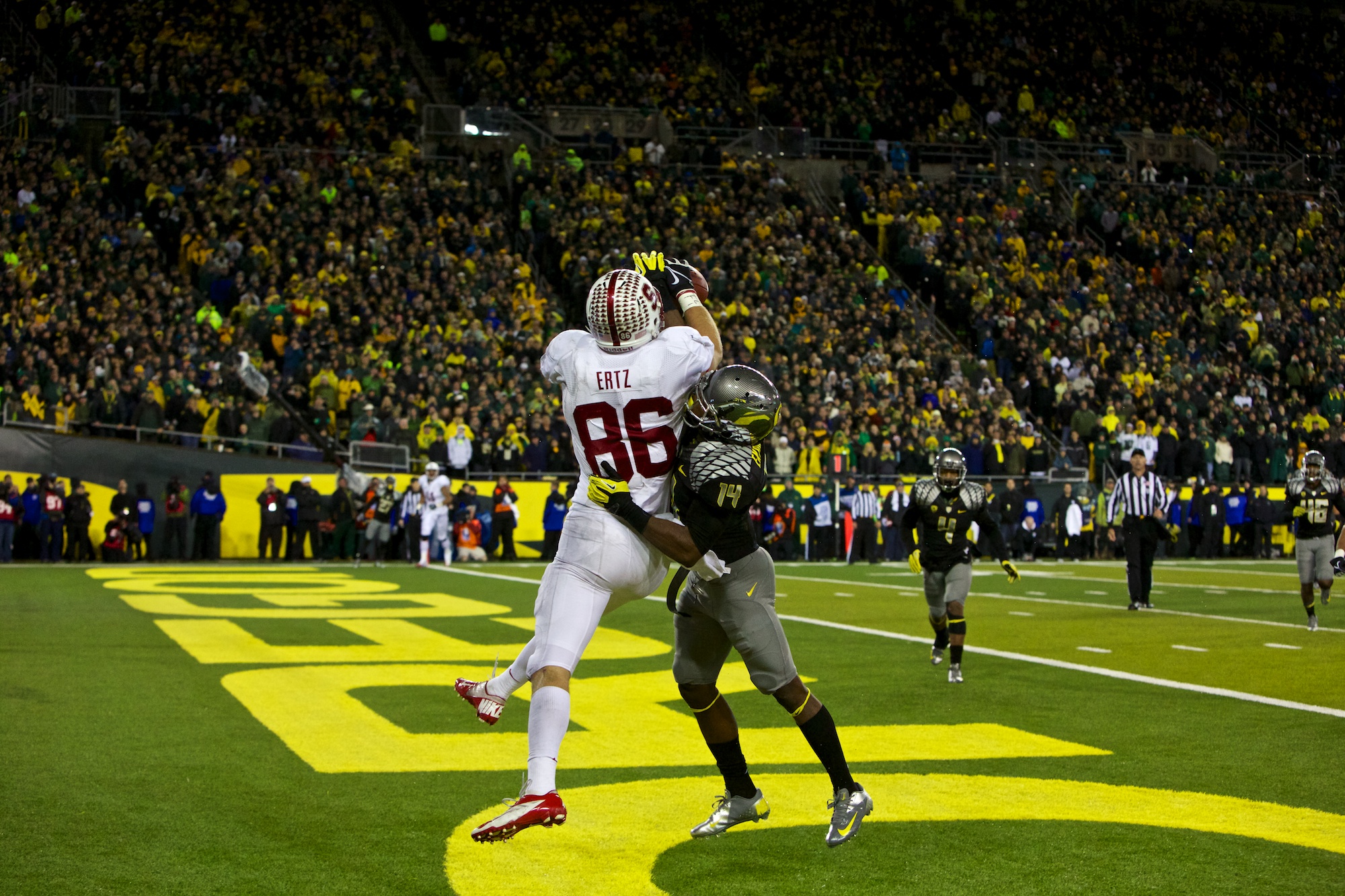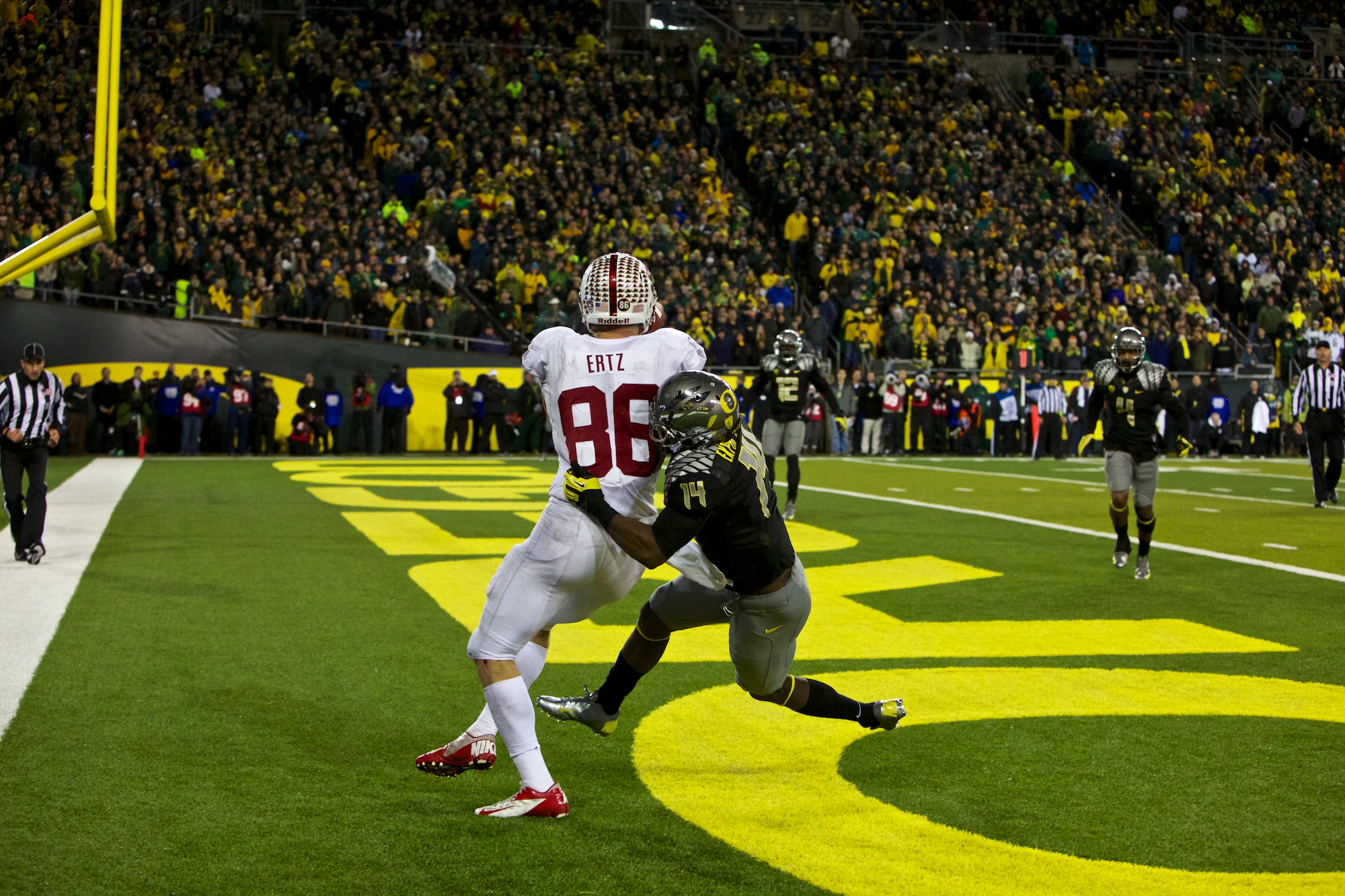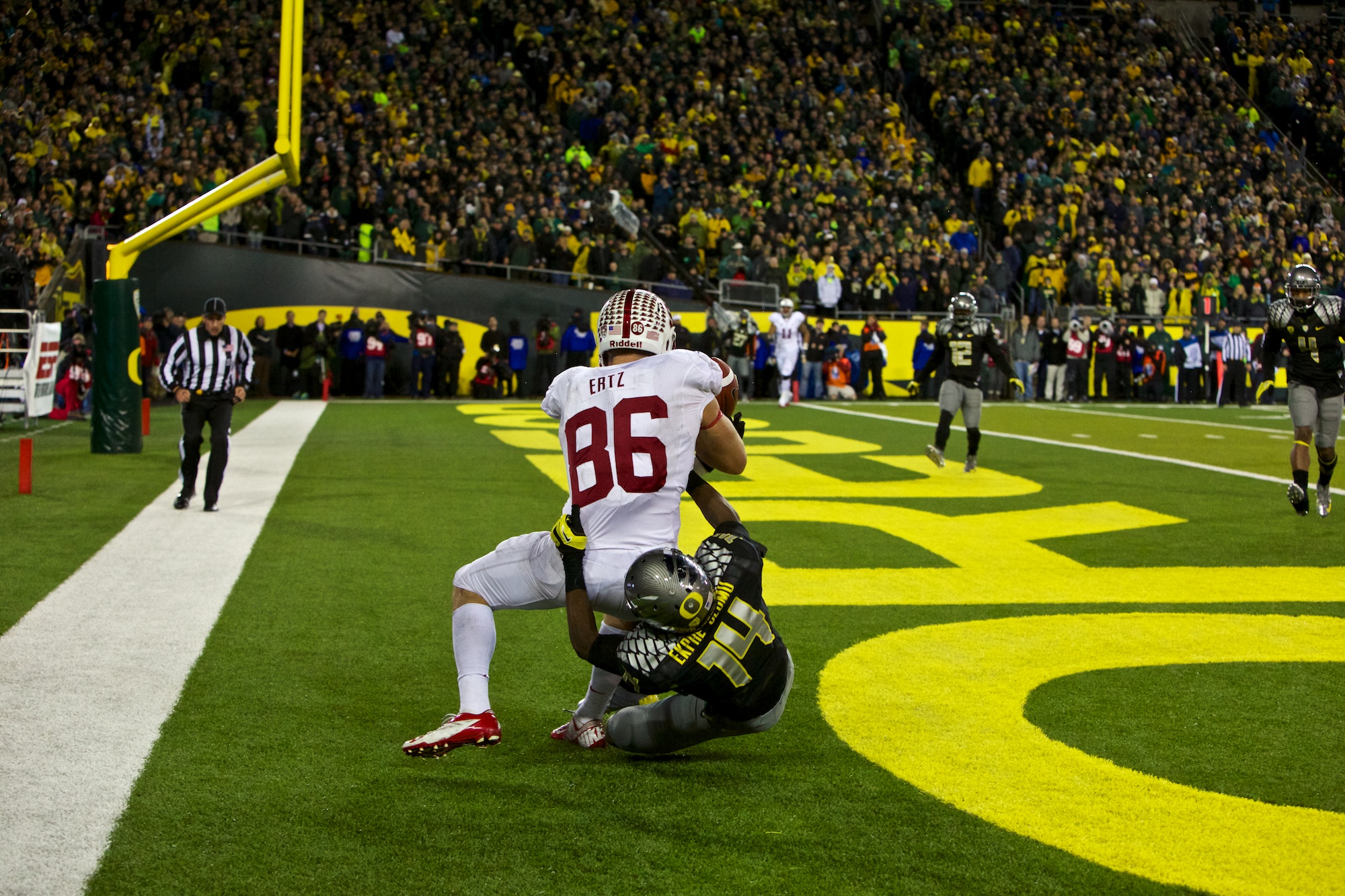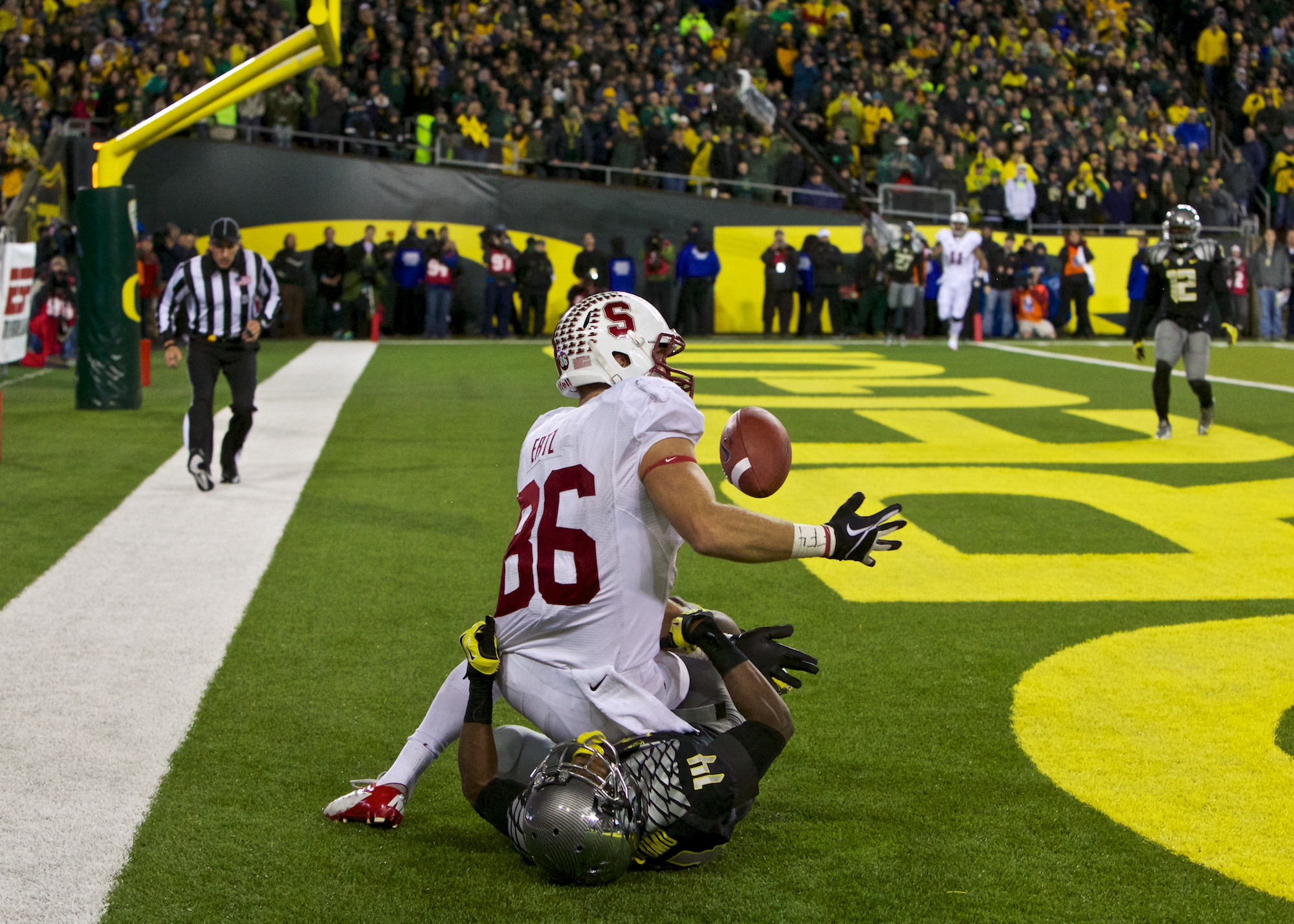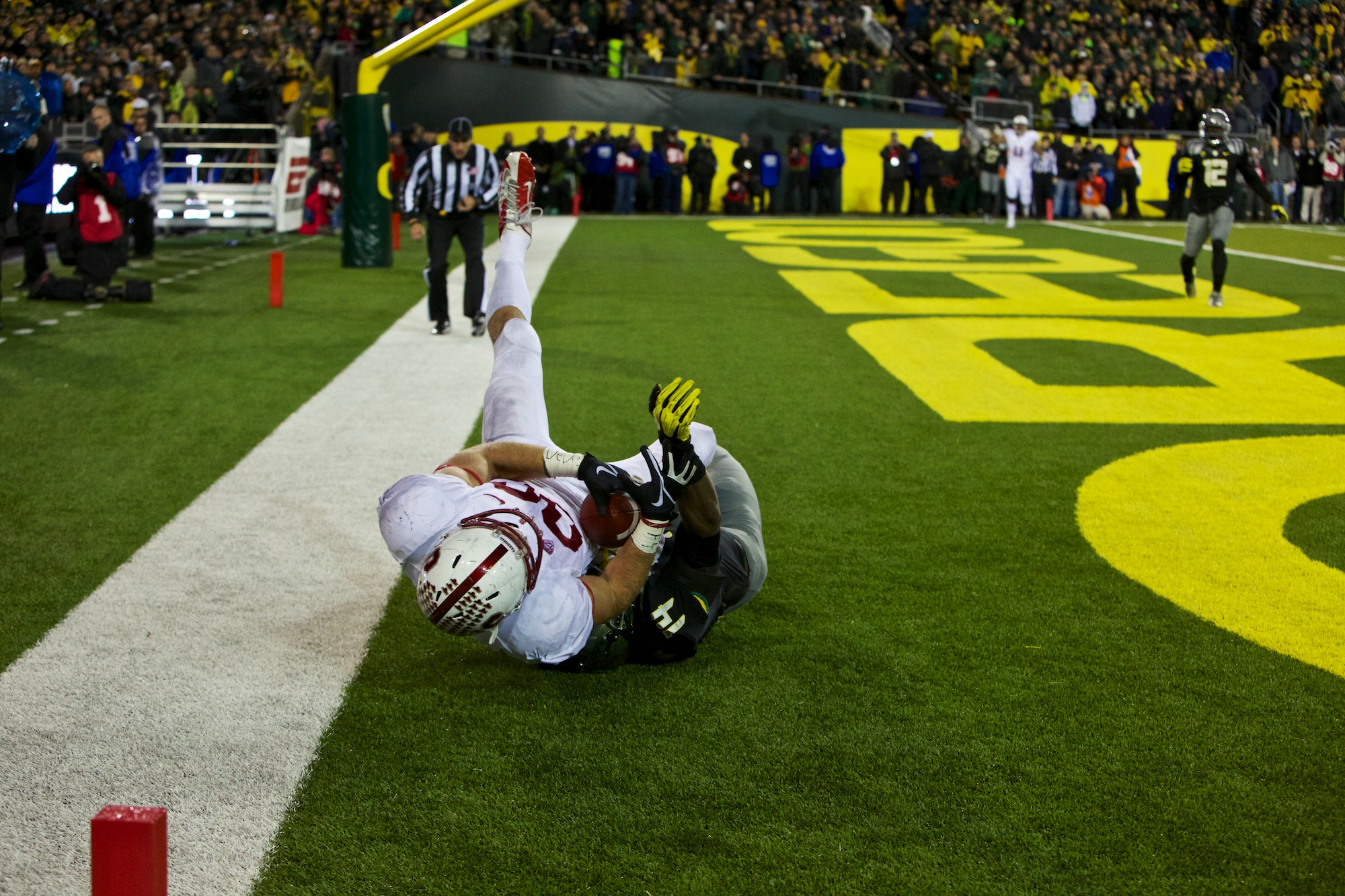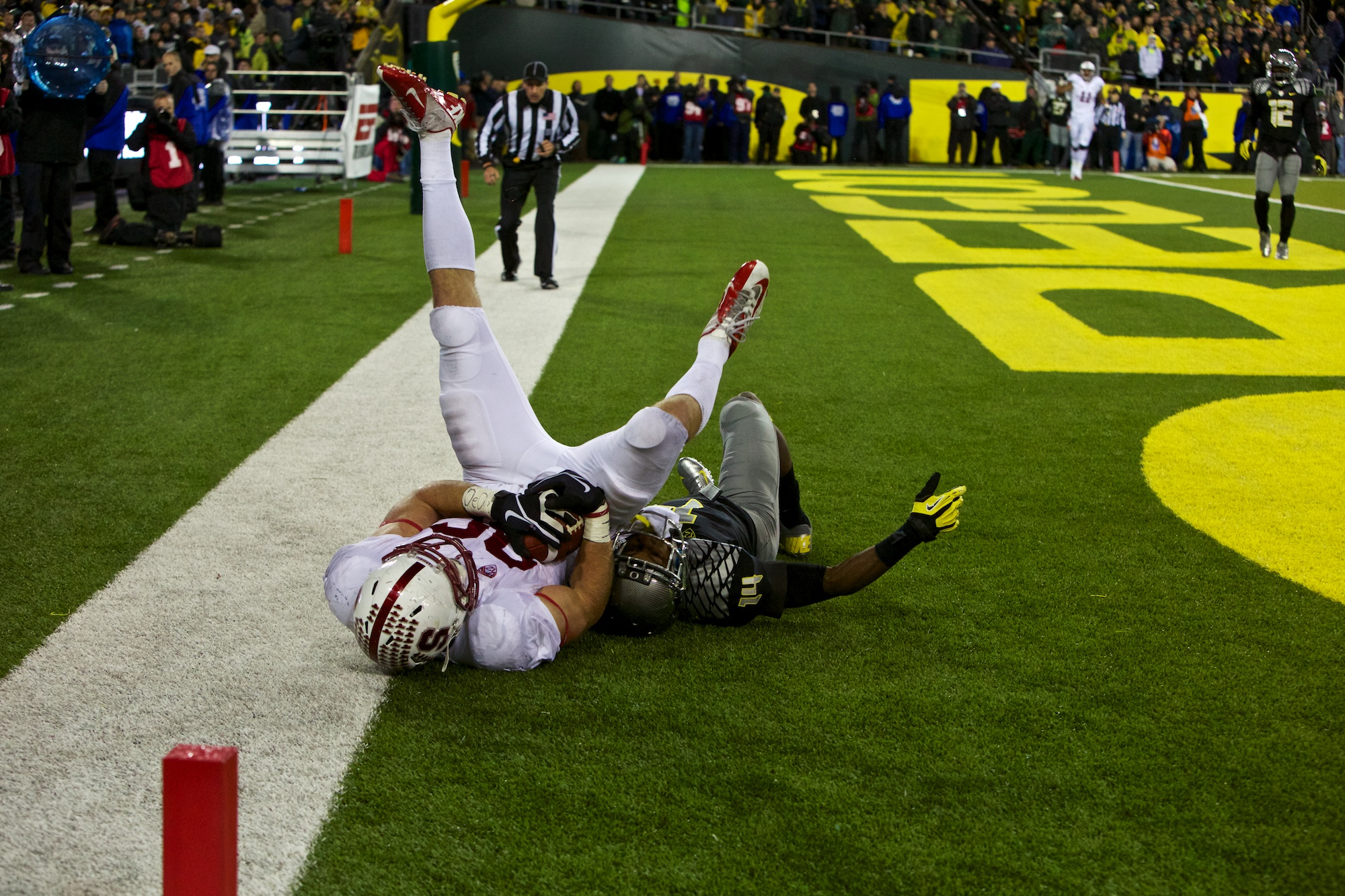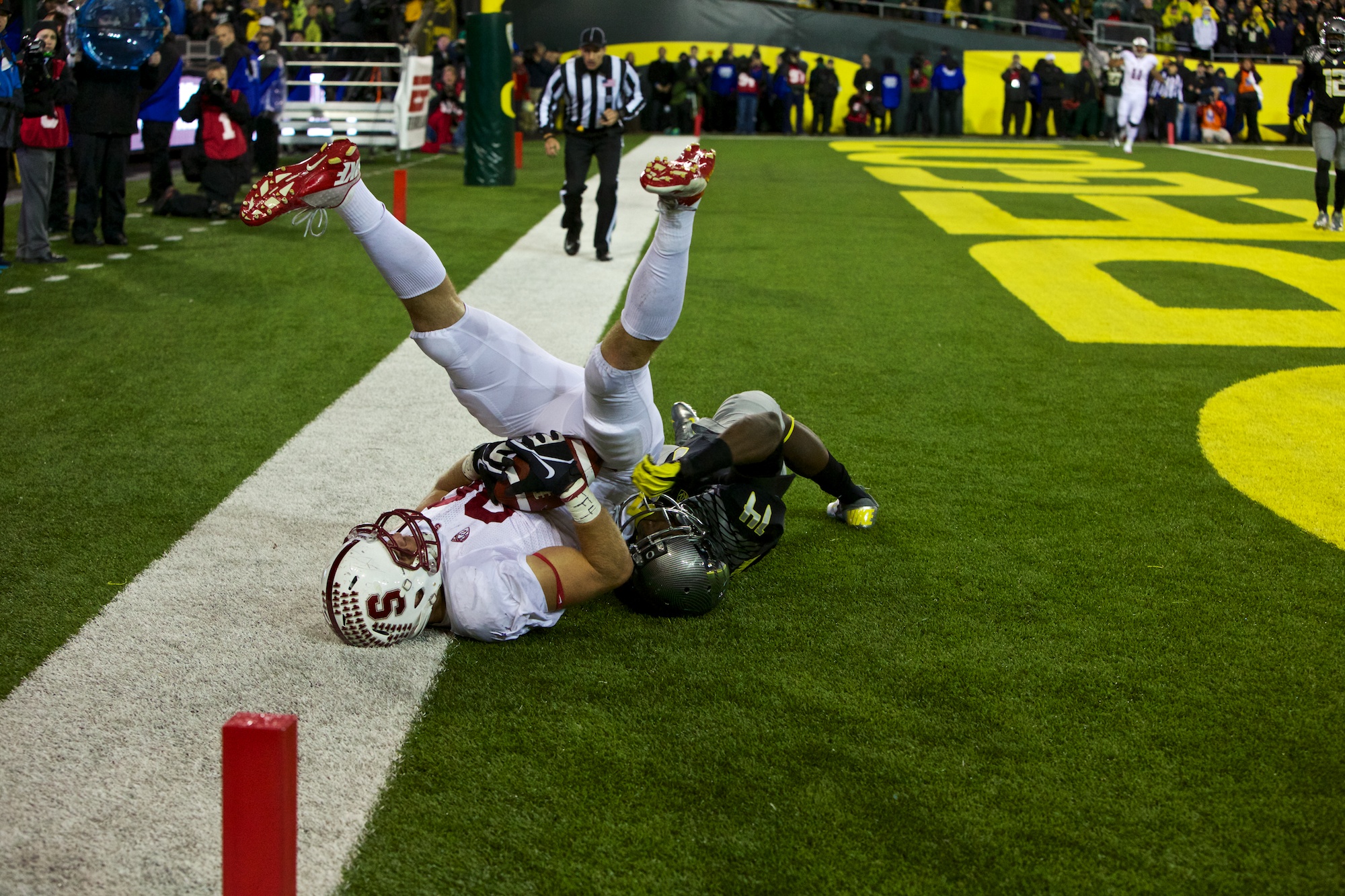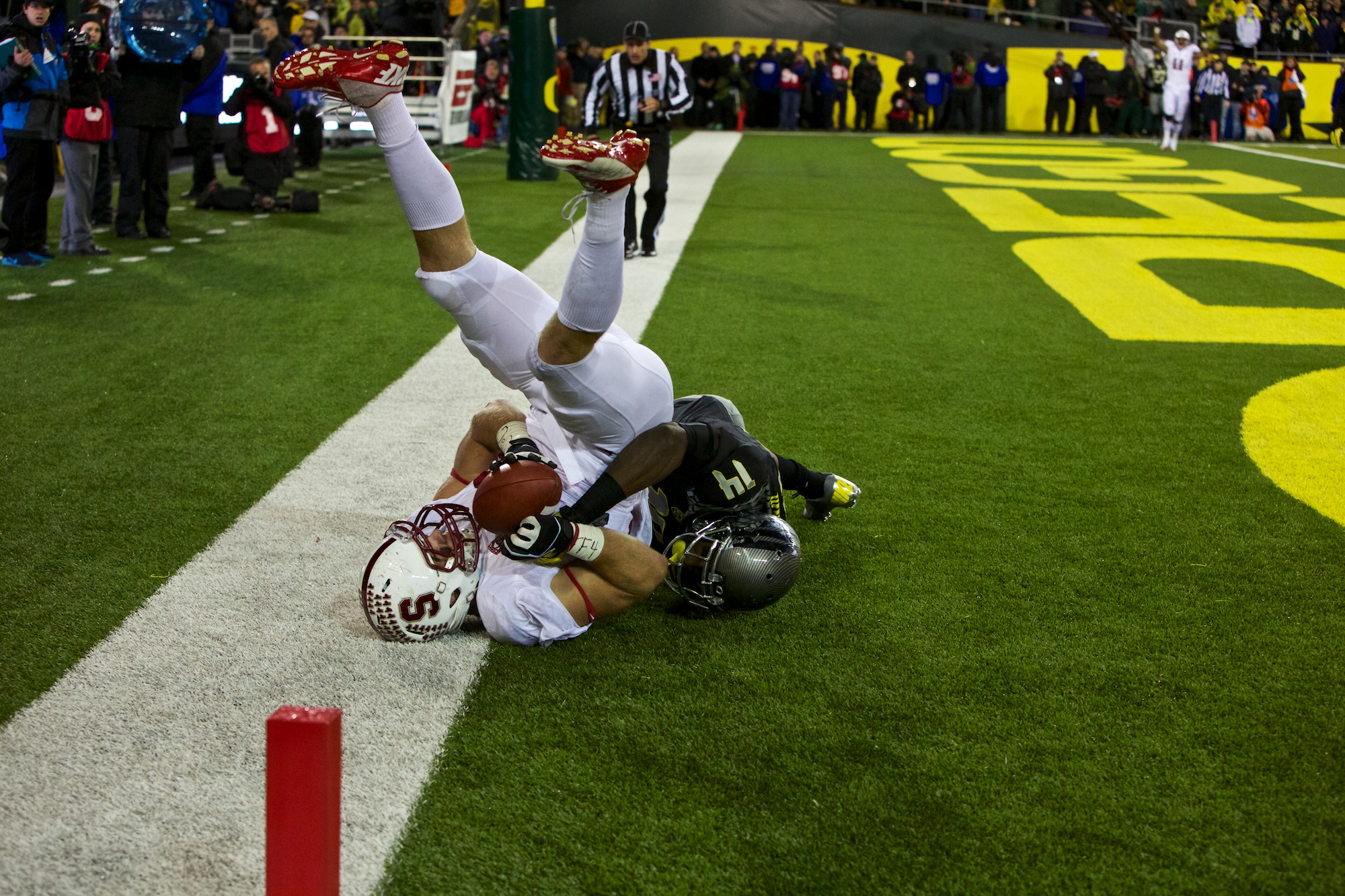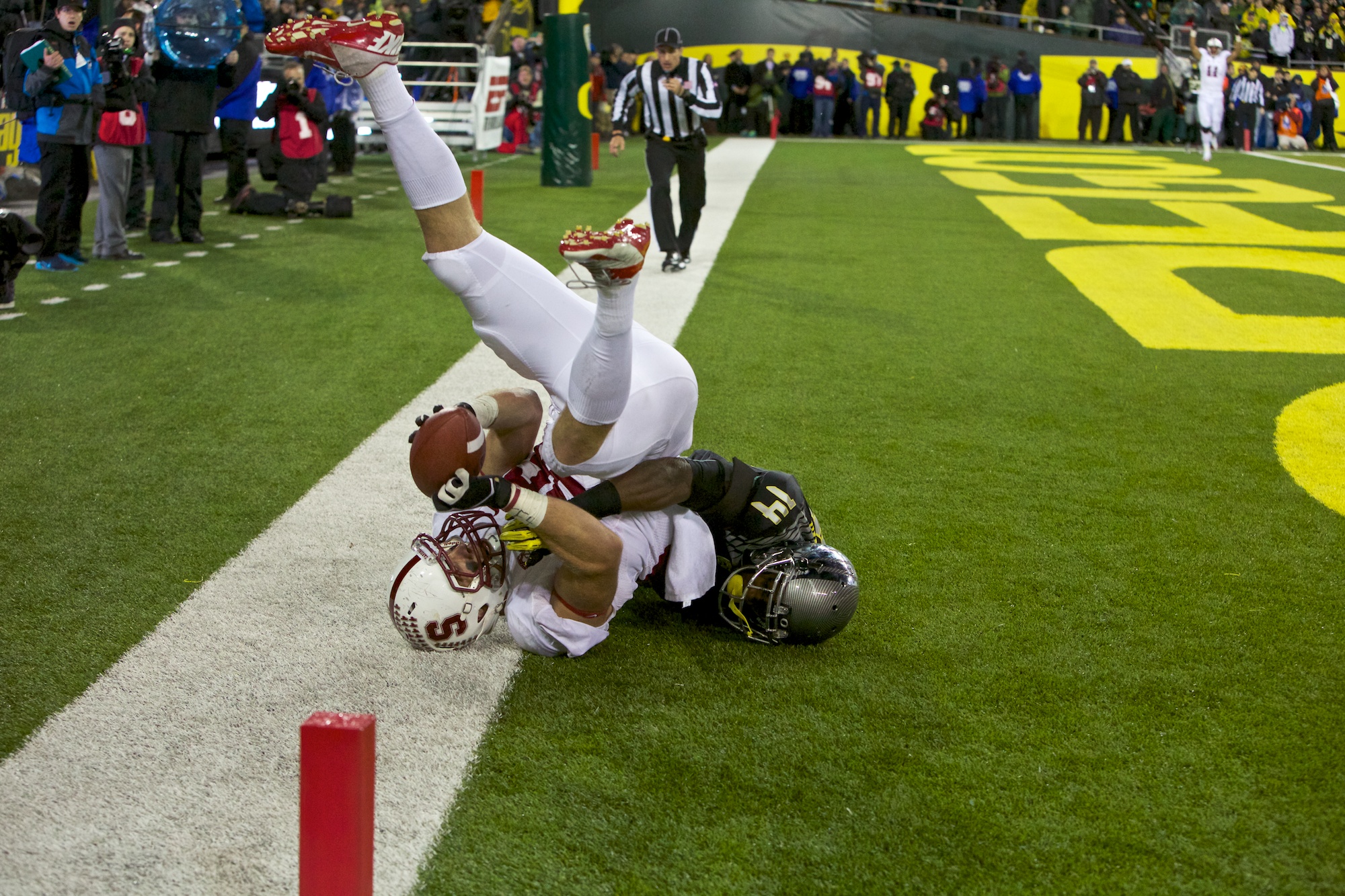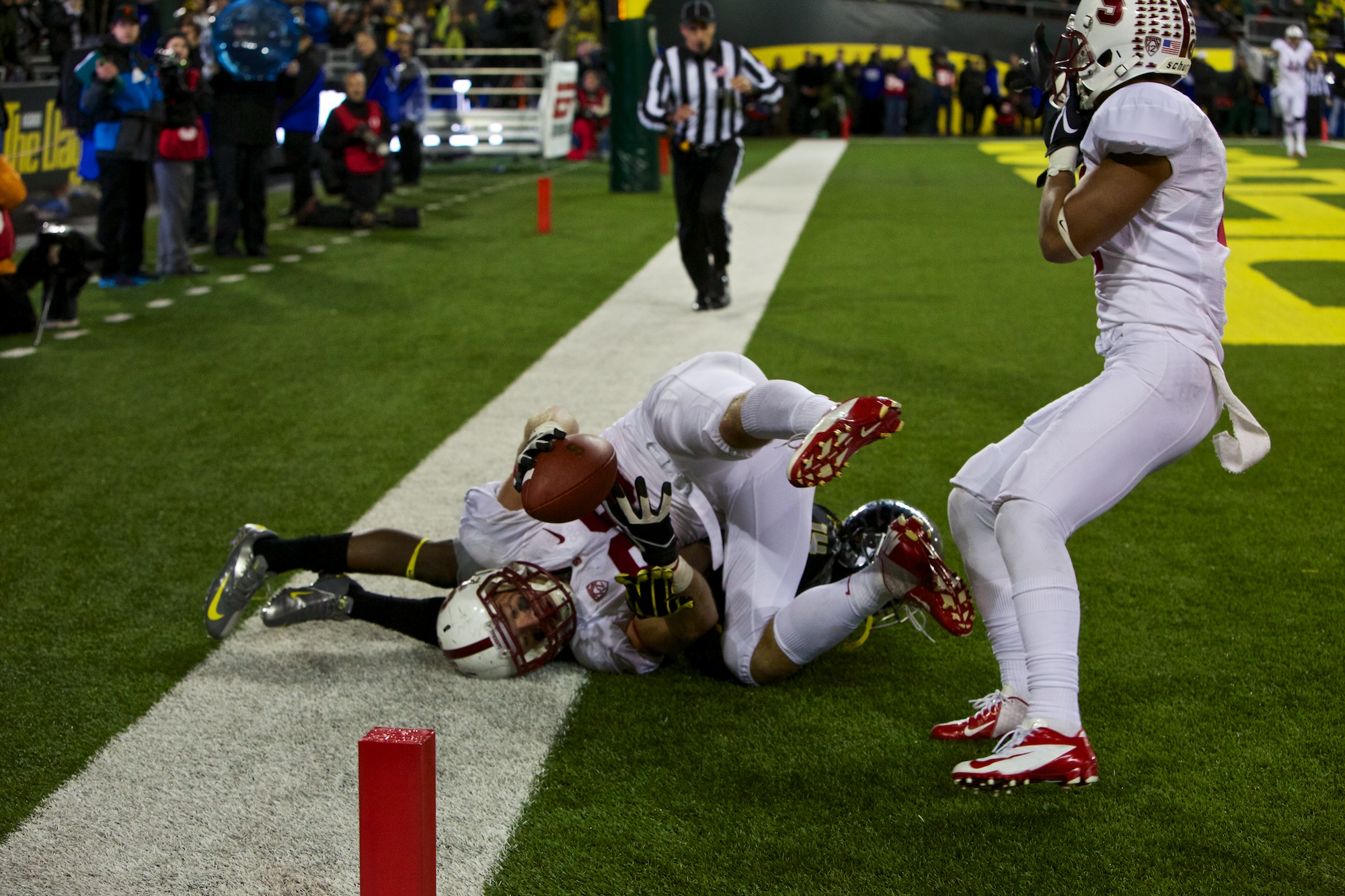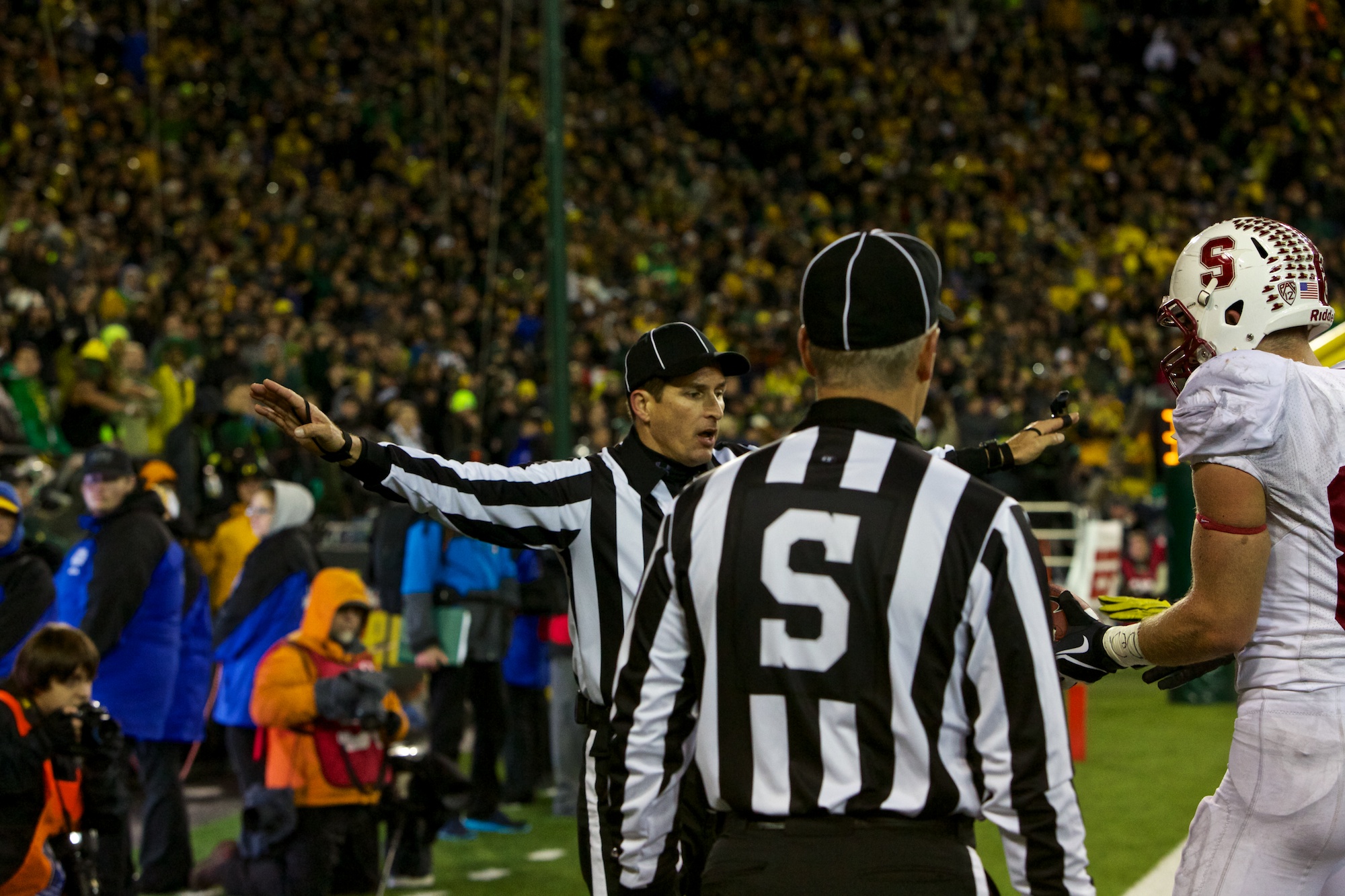During some down time, I pulled out my trusty 1941 Speed Graphic and loaded some out-of-date Polaroid Type 55 black and white film. It was really optimum conditions to shoot this film. I had direct sunlight and in the case of the portrait, some very bright shade. I wasn't equipped to wash the negative so just kept the print and scanned it.
Timbers Tie Red Bulls in Season Openers
The Portland Timbers rallied from a 3-1 deficit and managed to scrape out a wild 3-3 draw against the New York Red Bulls in front of a sellout crowd of 20,674 at Jeld-Wen Field Sunday night.
The second half was brilliant. Ryan Johnson nearly made a bicycle kick in stoppage time and I'm pretty sure the photographers (namely me) were as disappointed as he was it didn't go in. It would have been epic and, more importantly, I had a good photo of it. It's insanely rare to see a goal on bicycle kick and even more so for it to be the game winning goal in stoppage. I'm pretty sure the Timbers Army would have stormed the field.
©The Oregonian
Mud Fest 2013 in Sweet Home, Ore.
I've been wanting to shoot Mud Fest for a long time and today I finally made it to one. I learned one thing. They don't call it Mud Fest for nothing. I cannot overstate how muddy it was. It made shooting very difficult. In fact, the mud actually shut me down after I went for a ride in Steven Montpas' 51 Willys. My rain gear and hands were so muddy I would have damaged my cameras if I were to continue.
But, I'm always up for a good ride and this was one of the best.
©The Oregonian
Hawthorne Blvd. in Portland, Ore.
Excerpt from The Oregonian:
Before there were densely packed, redeveloped shopping hubs along North Mississippi Avenue, Alberta Street or Division Street, there was the Hawthorne district.
The four-lane, heavily trafficked Southeast Hawthorne Boulevard was the first inner-Portland street to be transformed from its blue-collar roots into a foot traffic-friendly blend of boutiques, specialty shops, bookstores and restaurants, setting a pattern that has since been followed across the city.
Where the changes that have come to Alberta and Mississippi, for example, have raised concerns about gentrification as longtime, lower-income residents find themselves priced out of their neighborhoods, the evolution of Hawthorne has been more gradual and more organic.
Though the more affluent Mount Tabor neighborhood anchors the far east end of Hawthorne, the central core of the Hawthorne district is historically a working-class area. For decades, the businesses on the boulevard served Sunnyside and Buckman residents. A Bureau of Planning 2003 study of the area's history noted that the 1940s and 1950s saw a major change in "the growth of local bars and taverns ... This type of commerce, especially abundant between Southeast 34th and Southeast 37th, catered to the increasing working-class residents during and immediately after World War II."
By the 1980s, Hawthorne was beginning to see a few changes, as blue-collar taverns began giving way to specialty stores. Barbara Tom, co-owner of Murder by the Book, recalls Hawthorne's grittier days, back when the bookstore opened in 1983.
"I remember that very clearly," Tom says of the divey watering holes that used to populate the boulevard. Her store, which specializes in mysteries, was first located near 37th Avenue, and later moved closer to 32nd.
Since then, Tom says, "it's gotten more upscale, but not too upscale, as far as I'm concerned."
Read more here: http://www.oregonlive.com/living/index.ssf/2013/02/the_heart_of_hawthorne.html
©The Oregonian
The Day I Turned "Pro"
It's interesting how much stuff I've rediscovered after moving into a new house. I was going through boxes and found a receipt from the first professional camera and lenses I bought.
At first I extended my arm toward the trash can and then froze. I realized it signified the day I became a professional photographer. At that moment, on June 9, 1990, at least in my mind, I turned pro.
It was the moment when I was all in. There was no turning back. It was that..or failure... and failure wasn't an option. I had been out the Marine Corps for two years enrolled at Portland State University. I was getting assignments from The Oregonian and the Associated Press at the time. I was using an Olympus OM-4 and OM-1, which were somewhat acceptable for a pro, but not quite. Especially since the Nikon F4 was out. It was autofocus and everyone was moving in that direction. I decided that's what I needed if I were to work as photojournalist.
I see from the receipt, that Citizen's Photo gave me $655 for all the Olympus gear I traded in. That may seem like a lot but I had at least five lenses including a 180/2.8. With that, I owed them $2350 for the F4, an 80-200/2.8, 24/2.8 and a 35/2.
I sold my banjo, my shotgun, my hunting rifle and other stuff to come up with the money and I still didn't have enough.
I remembered I had just received my student grant check in the mail for about $1600. It was meant to pay my tuition. I didn't think that through very well. I was dead broke walking out of that store. I had no money for tuition. In one of the very few times in my life, I went to may Dad for money. He didn't give me too much grief and wrote a check. If not for that, I would have had to drop out of Portland State University. He must have been expecting it sooner and was pleased it took me two years to hit him up! I'll have to ask him about that.
Getting this equipment did change a lot for me. It gave me confidence. It made me feel serious and it put pressure on me to move forward and work as hard as I could. I began to pick a good deal more freelance work while working on the student paper at PSU. Two years after that, I scored a great job at The Columbian with a one year temporary full-time position. I was there for five years. I upgraded all of that equipment in the following years, but I used the same 35/2 until 2005.
Check out the price of a 80-200/2.8. The newest version of that lens is $2400. Oddly, the short primes haven't increased in price nearly as much.
Interview with prisonphotography.org blogger Pete Brook
TB: You use words I've never heard before like "Sniffy". I see from your bio, you are from England. How did you land in Portland and what do you think of it? What have you learned about Oregonians?
I've lived in the states permanently for 7 years. First came over as a year-abroad student in 2001. Lived always on the west coast - Santa Cruz, San Francisco, Seattle and now Portland.
I've been in Portland for a year.
I had to leave Seattle for personal reasons and there was a list of one. Portland.
The place is great. I'm not an evangelist or anything. I'll just say it has been a very friendly, easy-to-get-to-know, engaging 12 months.
TB: You write and blog about Prison Photography. That's obscure. How'd you get interested in that?
I know that Oregon has the same rural/urban differences. I've been to the coast a couple of times and cruised up and down I-5, been to the eastern side of the moutnains a couple times, but I've barely scratched the surface.
It does. But few politicians are awarded for speaking sense.
I take holiday snaps.
I just got a smartphone, so I make images and share them.
I've got two series going that are hastagged on Instagram - which is the laziest way anyone would wish to put images out there.
#PETESNEWFRIENDS is a game of invention and jinx.
Each day, I publish a photo of a found photo I own and attach a fanciful story to the individual.
#PORTLANDPAINTEDGREEN is photos of stuff (mainly houses) painted green.
You may laugh, but you're going to see green houses EVERYWHERE, now!
I am not a photographer. Period.
I use Instagram in this way because, of course the majority of smart phone photography is total bollocks. I have rules: No dogs, no cats, no babies, no beers, no cocktails, no frothy coffees, no feet, no plates of food, no shots out of the window of the flight you just disembarked.
I'm not a fascist. If others want to make these things fine. I just probably won't be interested because I see these things ALL THE FUCKING TIME.
TB: The world would be a better place if everyone followed those rules. Of course, I would break the rules regularly.
I expect more and more people will get bored of these common things and look for the crafty, the involved, the cunning.
Imagine if people didn't make photos of those things just for one day?
They might make a photo of something different and it could be brilliant. Everyone is capable.
I love smartphone photography. It's unfettered. The issue for me is to filter it in a way I enjoy it and be able to say at the end of the day, I'm happy with what I put out into the world.
In conclusion, I am not a photographer.
TB: If you had advice for photographers wanting to photograph inside prisons, what would it be? What are photographers missing? What would you like to see them do? What story needs to be told?
Prisons are like the military; they operate on a chain of command. The only way any visitor gains access is by winning the approval of the warden/superintendent.
You need to strike up relationships with the administrations and wardens of each and every prison you hope to visit. This means drafting a very professional letter and in it stating clearly the nature and purpose of your project. Have references at hand to back up your proposal (media groups, teachers, politicians, people you've worked with in the past; folk with a name who'll vouch for your photography.)
Persistence as well as professionalism is the key. It takes a lot of work and phone calls to find a responsive prison authority.
There's no magic phrase to get your inside a prison as each and every facility is its own culture. It depends entirely on whether the warden wants his staff to accommodate you as a guest.
Try to think of a way of proposing your work as a benefit to the prison administration. What do they get out of your being there? Sometimes it helps if you work through and with an organization already established in a prison - an educational, religious, yoga, sports, mental health, veterans program.
You'll be in the prison as a guest and with a job to do. For the duration of the project, maintain a professional, respectful and friendly distance.
ON WHAT PHOTOGS ARE MISSING
There's three things that spring to mind.
1. There's a lot of image making that occurs in prisons that doesn't get correlated. IDs, medical photography, drawing and painting, surveillance, visiting room portraits, images made on the outside and sent in, illicit cellphone photographs. None of these things are easy (or even necessarily worthwhile to acquire), but they are in many ways as rich in narrative as an visiting photographer - documentary or otherwise.
2. Which leads on to my second point. A photographer who visits a prison for a day or a week is probably going to miss the story. Prisons are places of sporadic extreme violence and constant boredom. Have you ever seen those in a documentary project? Rarely.
How about we put the cameras in the hands of the prisoner?
How about we stop privileging the photographer and the image and think about what empowerment comes about through a) self-representation and b) supplementary materials, testimony and context?
I'm talking here about photography workshops. There are issue with security; the camera causes problems that the pen and the paintbrush do not, but I firmly belive photography can p[lay a more active role in education, rehabilitation and therapy of prisoners.
The workshop just has to be well conceived, well run and built on a respect between instructors, students and prison staff/administration. I'm hoping to run some classes in Pennsylvanian prisons in 2014.
3. People think I'm a thug-hugger. I am not. I think people should be responsible for their actions. One of the biggest problems with prison is that they lock people up and freeze them in the moment of their worst act. People need to be given options to improve, to step up and acknowledge the faults within themselves, the faults within society - that may or may not have exacerbated their problems prior to incarceration - and the problems within the system itself. That said, much of prison photography focuses on prisoners. I'd like to see some in depth work on the lives of prison workers.
Prison staff, although extremely well paid, are still derided. It's an incredibly stressful job. Alcohol and drug abuse is high as compared to other state employees. Marriage and relationship failure is more common.
Prison guard work is statistically safe in terms of the chances of physical harm, but the mental toll the pressurised prison environment takes is huge.
A lot of prison staff want to leave their work behind; they'd probably have no interest in having a photographer follow them home. But some correctional officers might be open to it.
TB: I think most of them are afraid of revealing too much information about themselves for fear of retribution from former prisoners.
Exactly, there's a security element to it. Correctional officers at some institutions absolutely do not want the faces of their family and friends, cars and house, recreation and home town published. I understand that.
But journalists have always faced confidentiality hurdles. It could be done.
And if it was, it'd be a service to the public.
Prisons are toxic and damage everyone who comes into contact with them - prisoners, staff, management, volunteers, family.
TB: You sound busy, what are you working on right now?
I continue publishing work on Prison Photography. I'm doing less analysis than I used to because I have less time these days. I'll happily expand my focus beyond U.S. borders, for example I've recently featured work from Switzerland, Spain, Israel, France.
But the development is interesting. I have more and more photographers contacting me these days (I presume because of the reach of PP) with some phenomenal work. It is my pleasure to feature more of others' images and less of my words.
The trade off is necessary right now, as I have two big projects in the works.
I'm writing a substantial essay for the Prison Photography photobook, which will be published by Silas Finch later this year. It features 40 photographers, the majority of whom I have met during my years of research and many of them have gone on the record with stories behind the pictures previously never told.
I've also just agreed to do my first solo curating gig.
Last year, I co-curated 'Cruel and Unusual' at Noorderlicht Gallery in the Netherlands, but this show in January 2014 will be all my own and will have a totally different curatorial aim. It'll feature more vernacular works.
So, I'm juggling those two things.
Day to day, I write part time for Wired.com's RAW FILE and I get to feature and profile photographers I respect - Dave Jordano, Eirik Johnson, Trevor Paglen, David Galjaard, Richard Ross, Jehad Nga, Matt Lutton, Brett Gundlock, Robert Burley, Jonas Bendiksen, David Chancellor, Monica Haller, John Faier, Cristina De MIddel ... the list goes on and on.
I've got big ideas for 2015 but I need to take care of what's right here, right now first.
Photography is more alive than it has ever been. If there is one problem it is that there is so much out there to see.
TB: Thank you so much for talking to us.
In a first, VA approves request by Oregon woman to bury same-sex spouse in national cemetery
Nancy Lynchild's grave at Willamette National Cemetery, when it is dug, will seal a marriage while setting a national first. And it will provide a public expression of a life that retired Air Force Lt. Col. Linda Campbell once had to live in secret.
The burial of Lynchild's ashes at the military cemetery will be the nation's first of a veteran's same-sex spouse.
Read more here: http://blog.oregonlive.com/oregonatwar/2013/02/in_a_first_va_approves_request.html
See more photos here: http://photos.oregonlive.com/photo-essay/2013/02/air_force_veteran_gets_waiver.html
©The Oregonian
Linda Campbell, an Air Force veteran, has been granted a waiver by the Secretary of the Dept. of Veterans Affairs, Eric Shinseki, to have the ashes of her spouse, Nancy Lynchild, buried at Willamette National Cemetery. It is the first such waiver granted in the nation. Nancy Lynchild died of metastatic breast cancer in Eugene on Dec. 22, 2012. Campbell applied for the waiver with the support of Oregon Commissioner of the Bureau of Labor and Industries Brad Avakian and Sen. Jeff Merkley, D-Ore. Copyright: The Oregonian/Thomas Boyd
Oscar Pistorius competed at the Pre Classic in Eugene, Ore.
I was as shocked as anyone upon learning Paralympic runner Oscar Pistorius was arrested for killing his girlfriend. I photographed him competing at the Pre Classic meet in Eugene, Ore., back on June 2, 2012. He went on to compete in London Olympics.
Read more here: http://www.oregonlive.com/today/index.ssf/2013/02/oscar_pistorius_charged_with_m.html
©The Oregonian
Oscar Pistorius, a Paralympic runner who blazed new terrain by competing in last summer's Olympics, is accused of killing his girlfriend, Reeva Steenkamp. A shooting took place inside his upscale home in Pretoria, South Africa, early Thursday, and only the two of them were there at the time, police said. Copyright: The Oregonian/Thomas Boyd
Pete Brook Featured me on his Prison Photography blog
Pete Brook posted a question and answer session on his influential Prison Photography blog. He also writes for Wired.com here.
I was a little worried my answers were too negative and critical. It must not have too bad though, my words struck a cord with quite a few photographers who commented on Facebook. It's always scary to put yourself out there like this, but I think it's an interesting process and the feedback, positive or negative, is really insightful.
I'm glad Pete asked me to do. It's been lot of fun tracking who's read it and what they think.
Tearsheet Update
Everyone now and then I get magazines in the mail from assignments I did months before. In the case of the Runner's World, it was published an entire year after I shot it. Other assignments are for very small run magazines that I would otherwise never see. The Haverford College alumni magazine had me shoot Emily Powell, who runs Powell's Books with her father. She went to Haverford.
I wish it were more complete, but here's a link to the rest of my tear sheets.
The Fat Cop Horse Slims Down
Did I just write that? Yes I did. The Portland Police are testing and training a new horse for their stables. They found Murphy. But he has a problem many of us humans have: he's fat.
Portland police horse trainer Jennifer Mack has Murphy on a fitness program. Here's a link to Tom Hallman Jr.'s story: http://www.oregonlive.com/portland/index.ssf/2013/01/horse_named_after_murphys_law.html (the video posted with the story is not mine.)
To see the photos and video I shot go to this link: http://photos.oregonlive.com/photo-essay/2013/01/murphy_is_trained_to_join_the.html
©The Oregonian
My POYi Entries
Since POYi is so difficult to win (for me anyway) I thought I might was well put all that hard work building the entry to good use here on this blog. Even though the chances of winning are slim, the process of going looking through my work from the year is really important. Not only do you get to reflect on what you could have done better or wish you could have done, you also find opportunities to follow-up on those stories. It helps me direct my energies for the following year.
I added the Feature Story to this post but I did not enter it as a single entry, but I did enter it in the final Newspaper Photographer of the Year portfolio.
©The Oregonian
Here's the my entries:
Science and Natural History
General News
Spot News
Feature Single
News Picture Story - Clackamas Mall Shooting
Issue Reporting Picture Story - Tribal Fishing
Feature Picture Story - Portlandia
Sports Action
Sports Feature
Tribal Fisheries
In 2012 I photographed several aspects of the tribal fishery on the Columbia River system and plan on doing more this year.
I had been wanting to shoot lamprey fishing at the Willamette Falls for years and I was finally able to line it up with my schedule. It's no small matter either. Lamprey harvesting lasts only a short time in the summer and it takes a boat ride to get there.
The rocks at the base of falls are as slippery as ice and learned the hard way when fell and hit my head, got knocked out and bruised a rib. It was worth it though, it's probably one of the most interesting things I've ever photographed. The lamprey are boiling at the base of the falls and I could feel them hitting my legs. The Native American kids harvesting the lamprey did a great job and learned quickly.
Here are a few photos from my efforts in 2012:
©The Oregonian
Lamprey harvesting at the Willamette Falls. Thomas Boyd/The Oregonian
Thomas Boyd/The Oregonian
Unloading chinook salmon on the Columbia River.
Thomas Boyd/The Oregonian
Iced chinook salmon.
Thomas Boyd/The Oregonian
On the Klickitat River.
Thomas Boyd/The Oregonian
Sea lion hazing on the Columbia River.
Thomas Boyd/The Oregonian
A sea-lion feasts on a salmon.
Thomas Boyd/The Oregonian
Dip-netting on the Klickitat River.
Thomas Boyd/The Oregonian
My Favorite Oregon Duck Football Photos from the 2012-13 Season
I shot every game except Arkansas State, Tennessee Tech and Cal. I traveled with the Ducks to University of Washington, Stanford, Arizona State, and USC. I only shot one Oregon State Beaver game besides the Civil War, which was at Stanford.
My favorite photo came when the Ducks walked through the tunnel at USC for warmups. Another photographer had some green-gelled lights set up and I just happen to have shot a photo at the exact same moment he did. It made the players look like storm-troopers.
I also loved seeing the Ducks beat USC on the road. The USC fans were not pleased.
Overall, it was a great year to be the Ducks beat photographer for The Oregonian.
©The Oregonian/2012
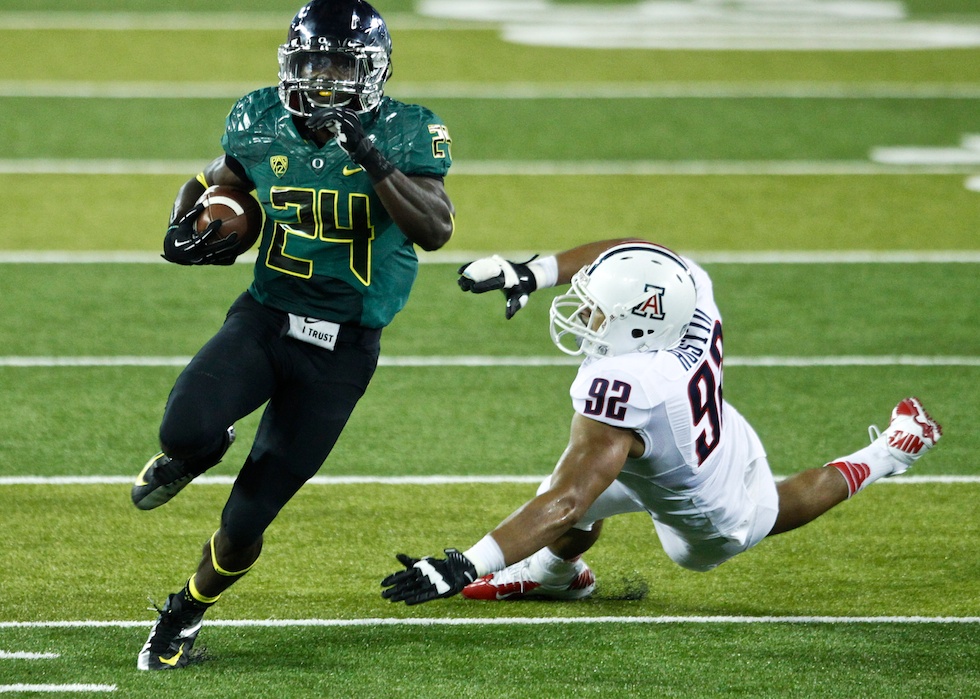
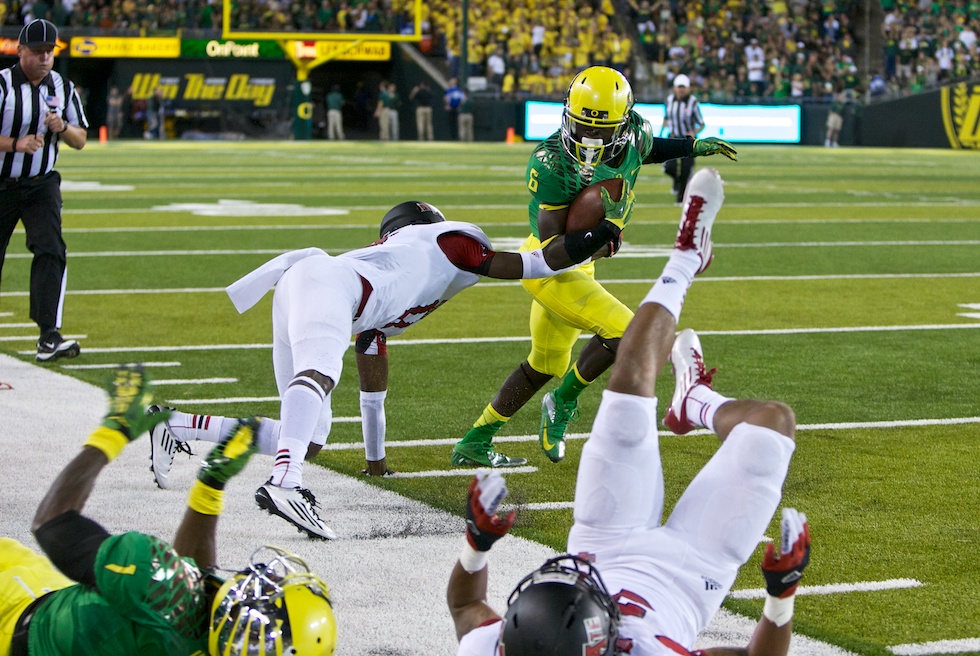
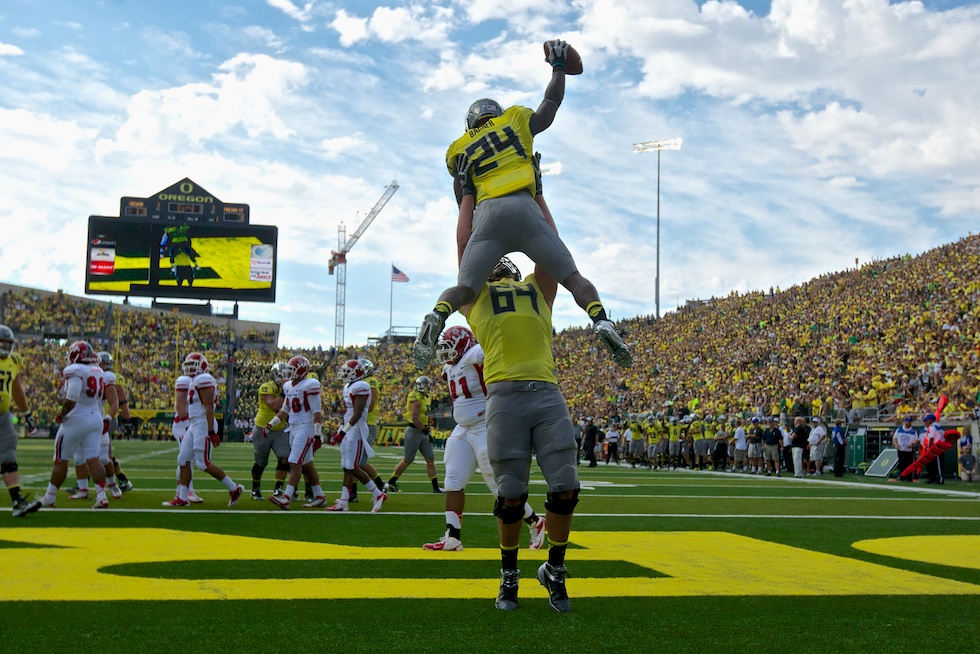
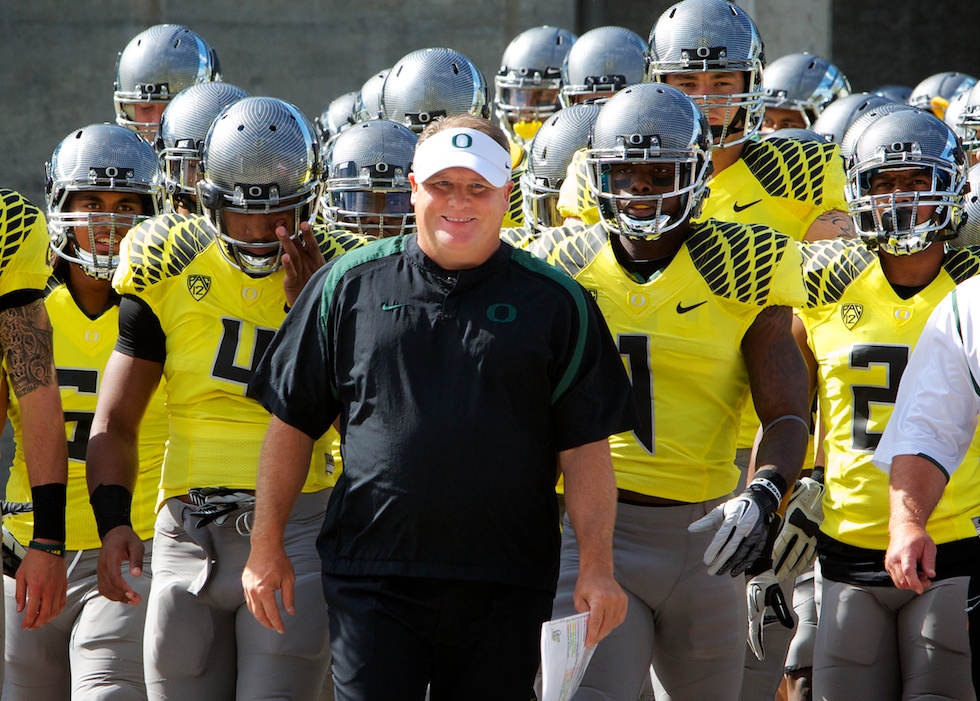
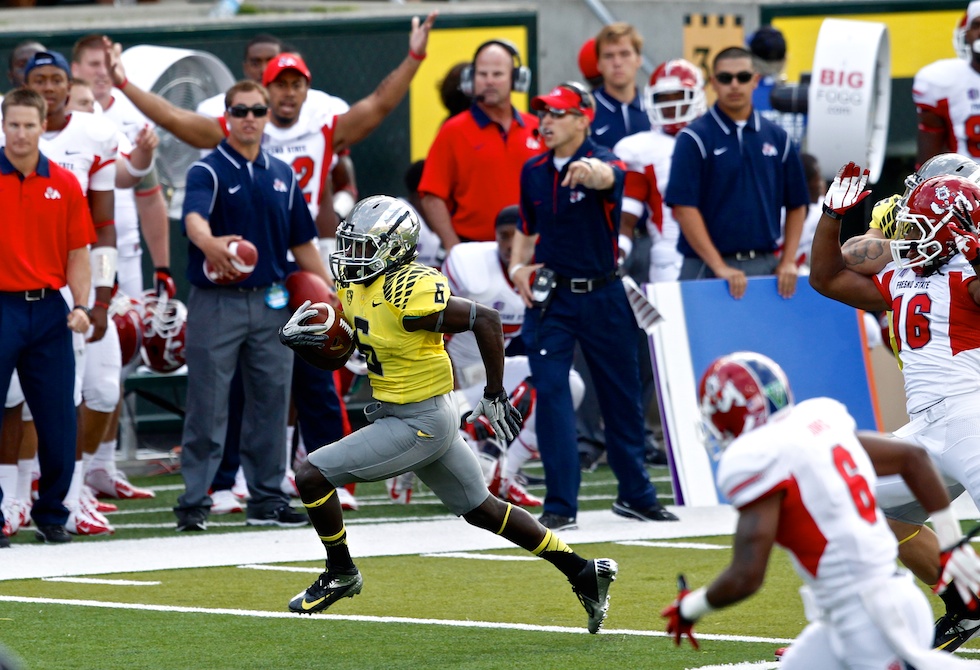
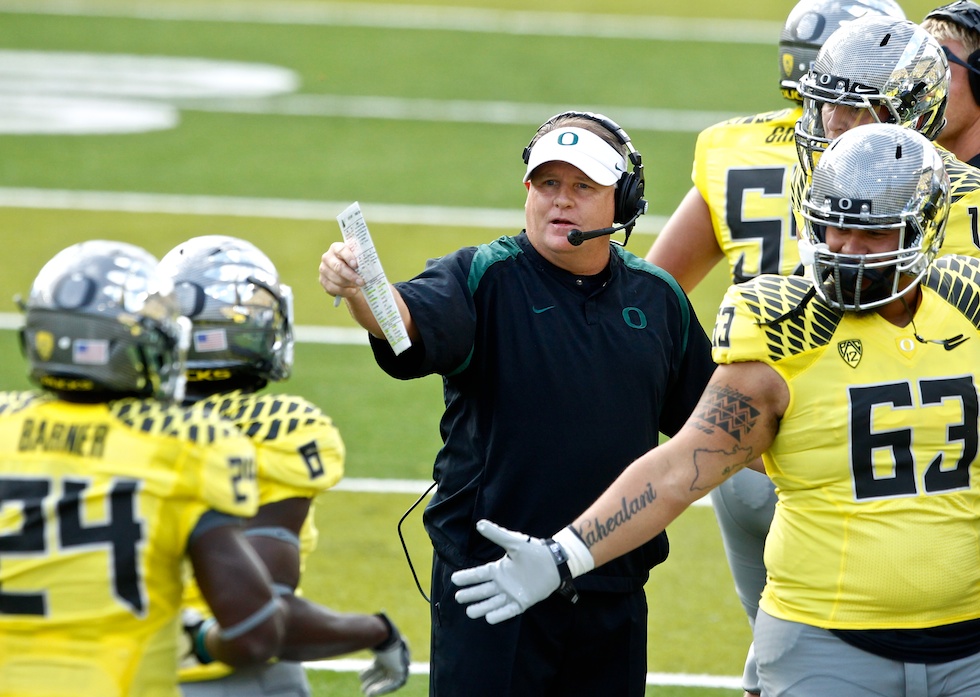
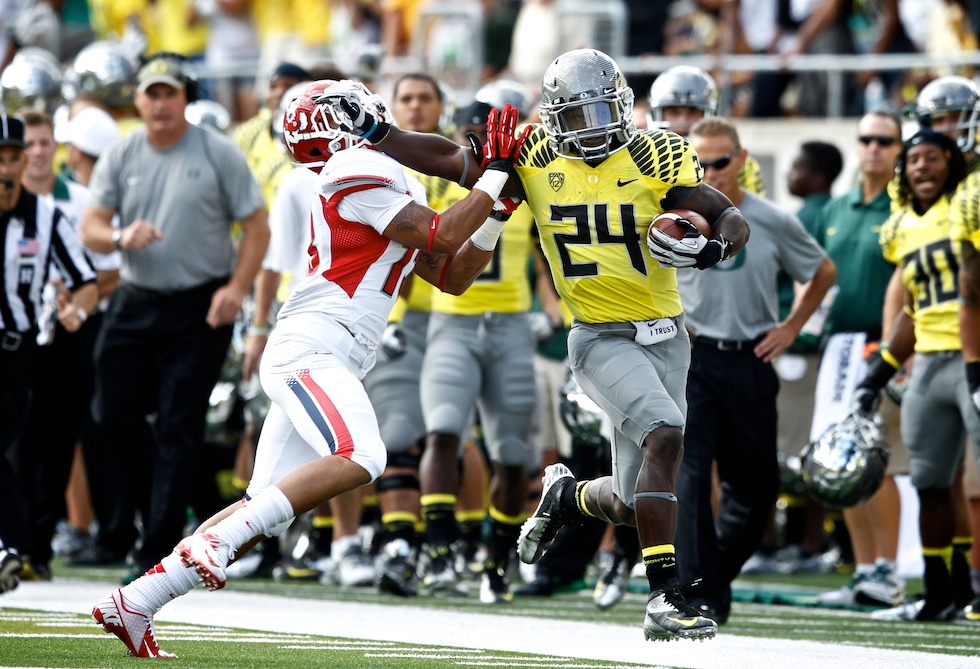
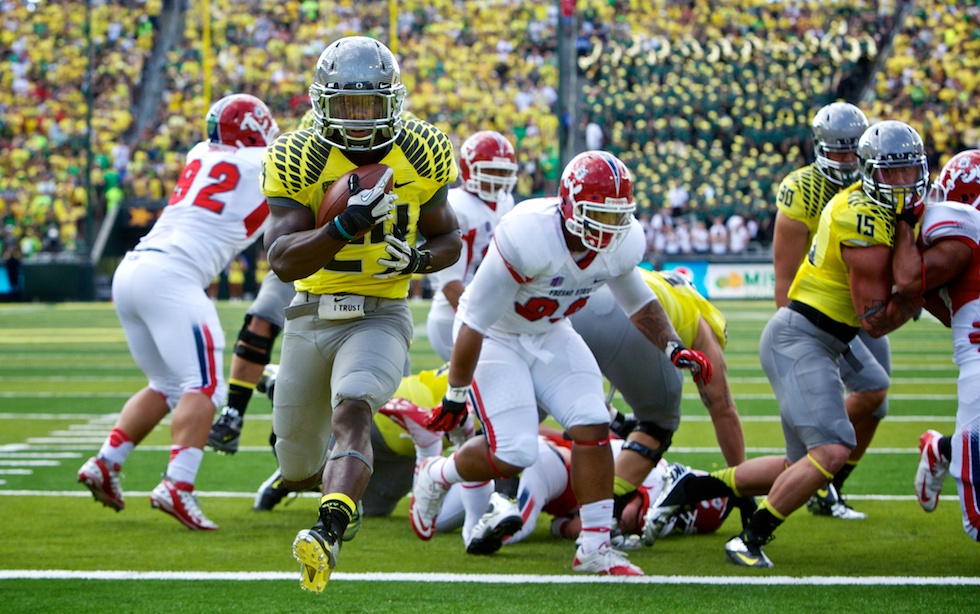
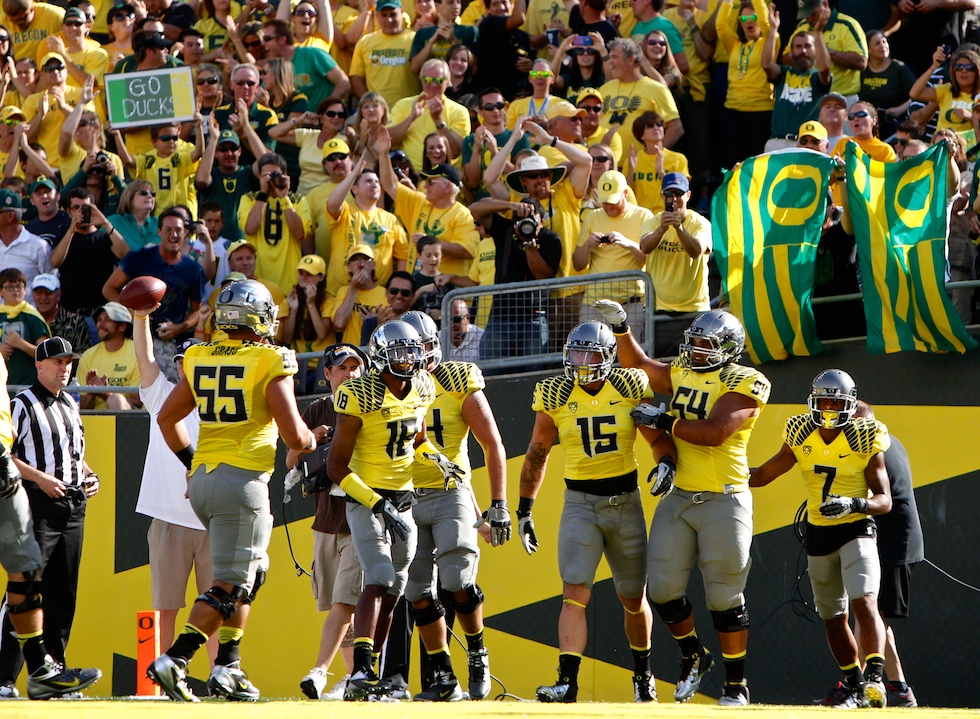

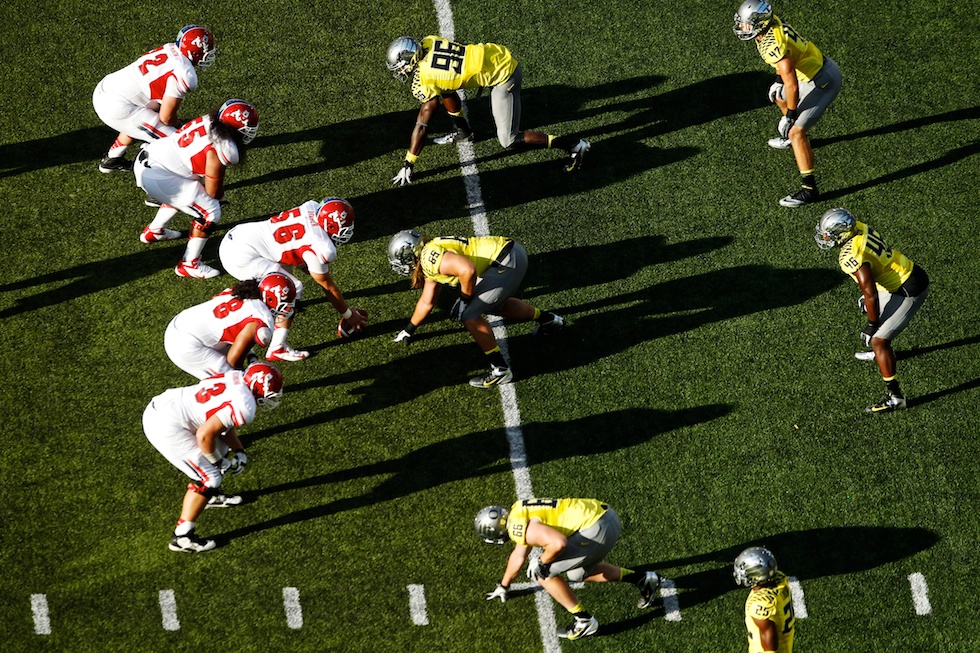
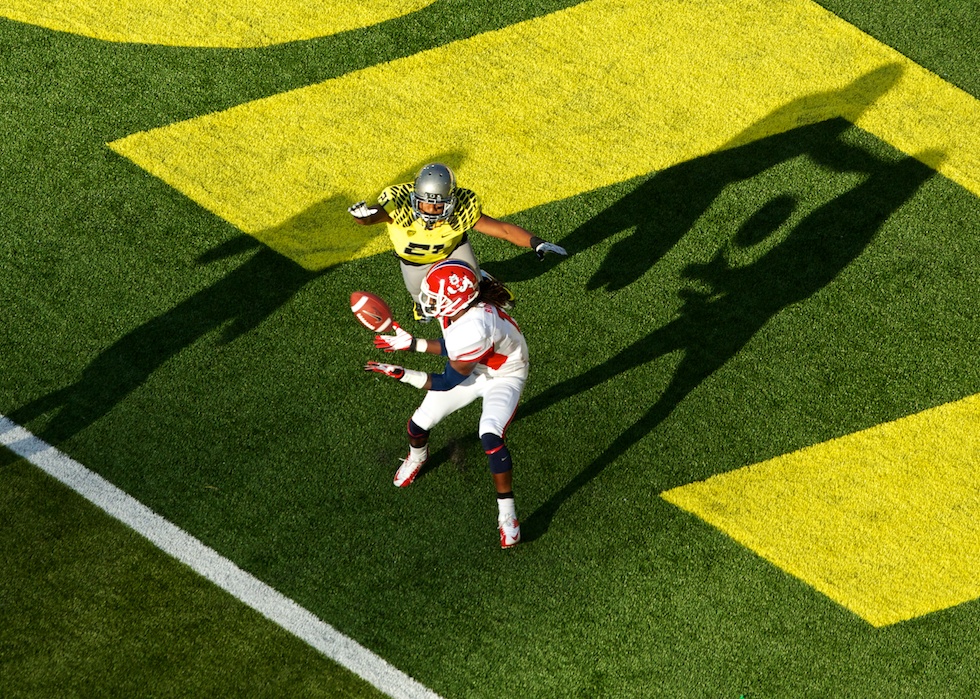
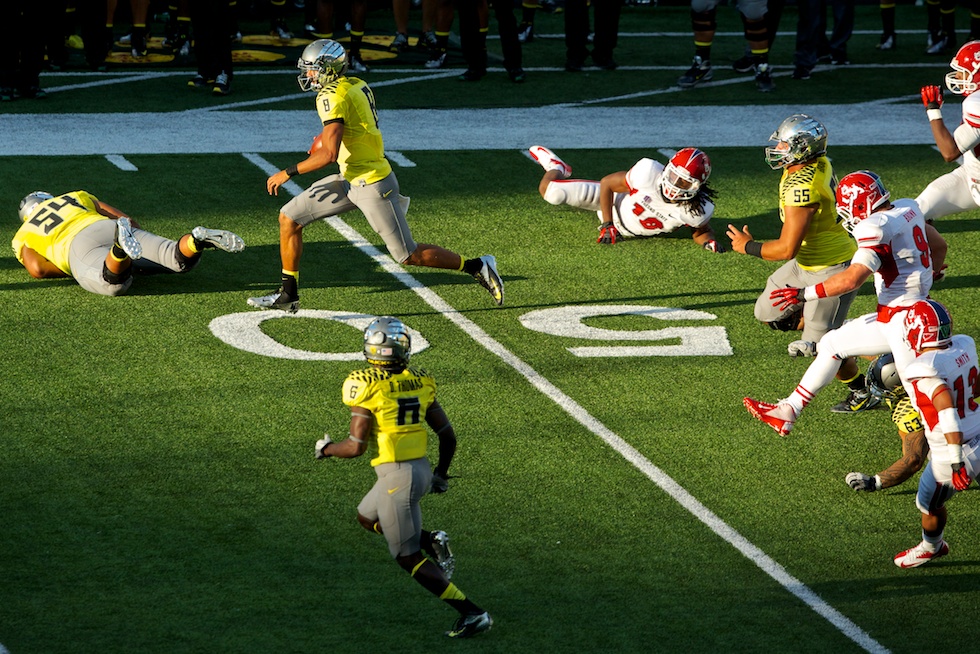
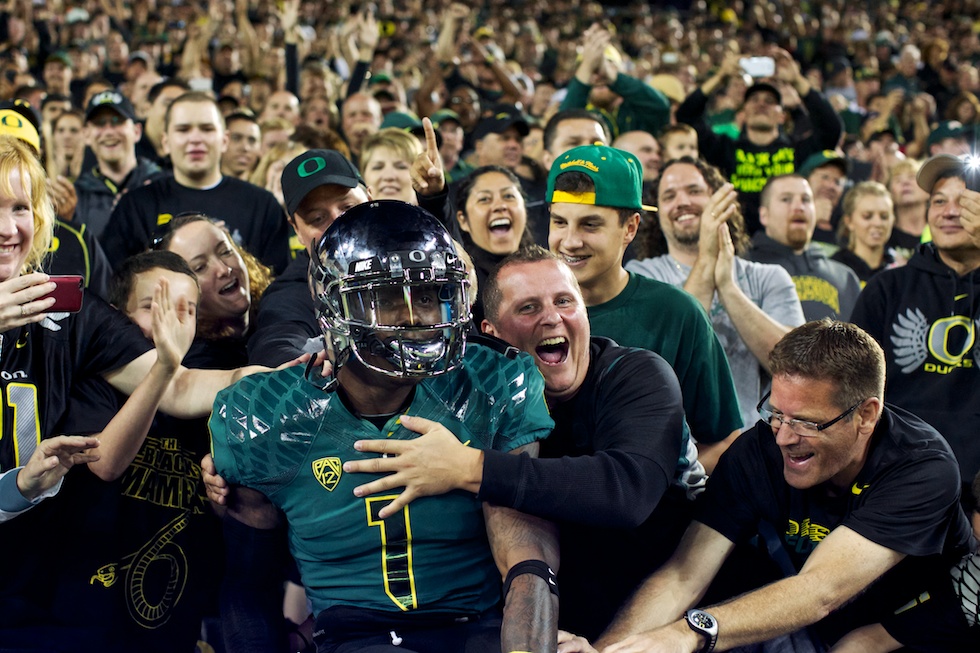
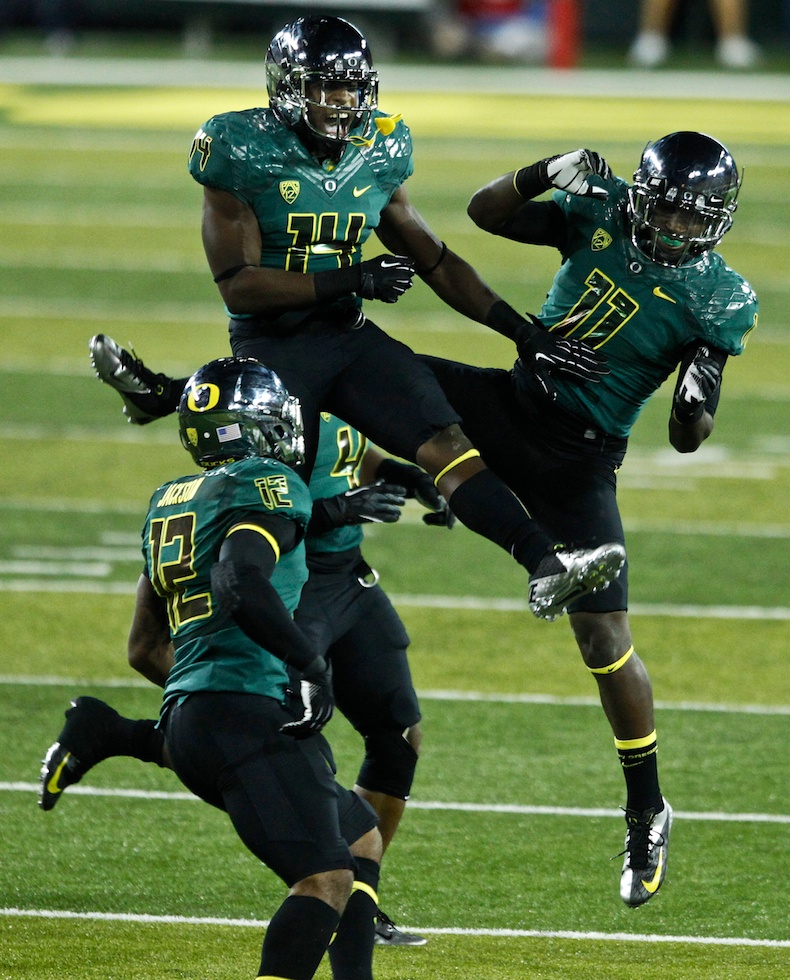
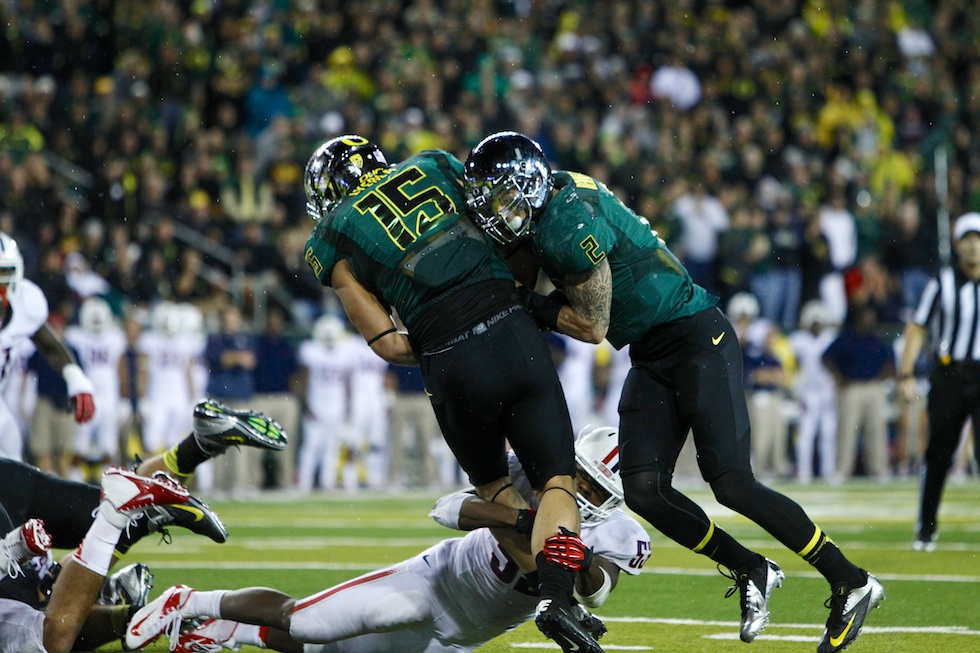
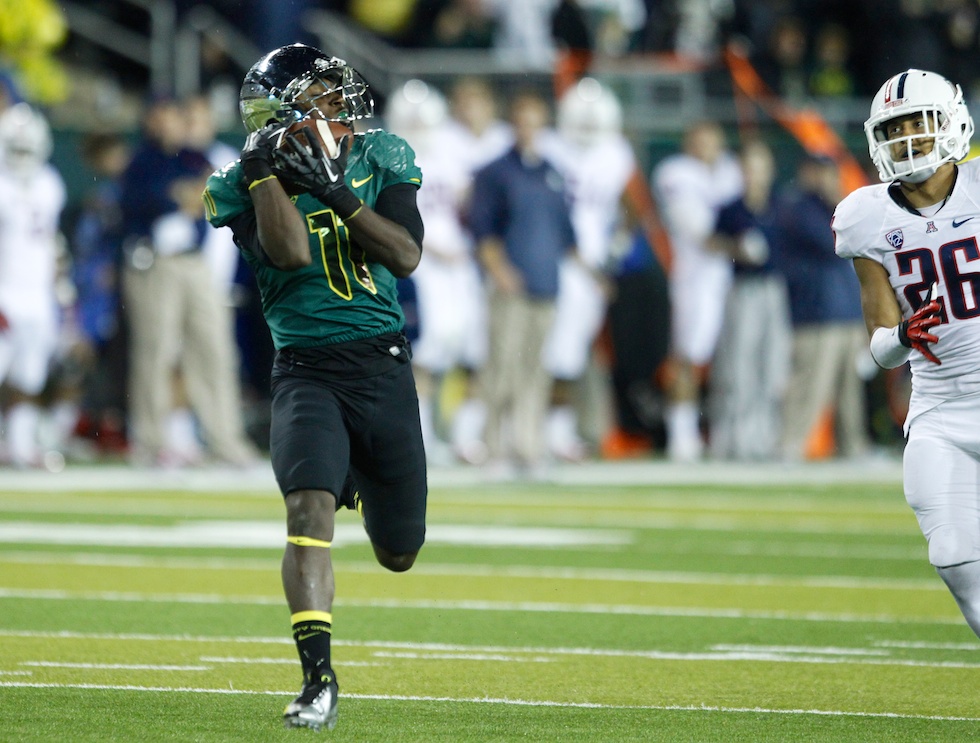
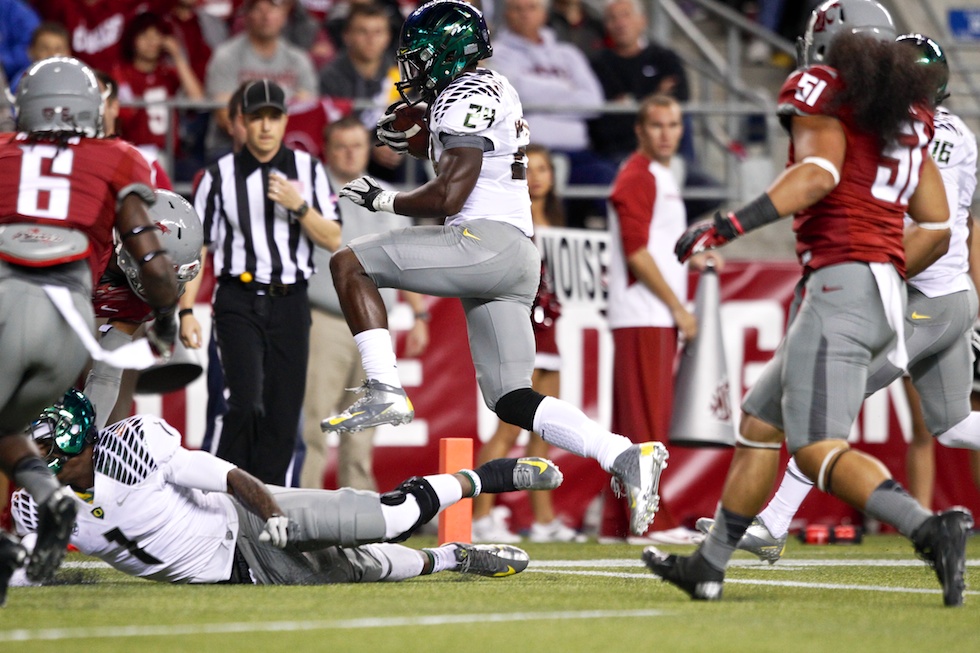


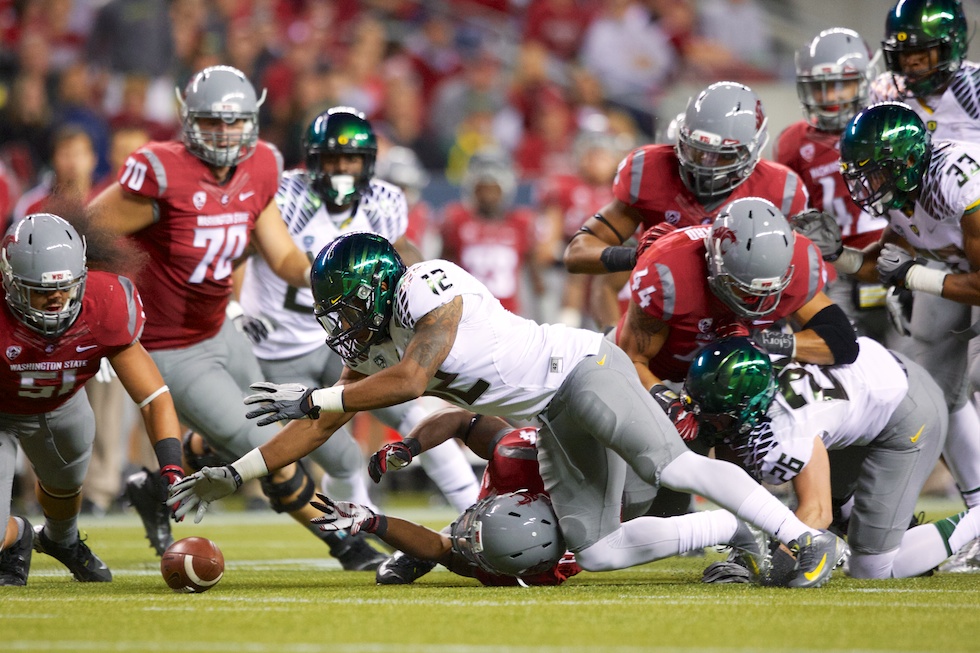
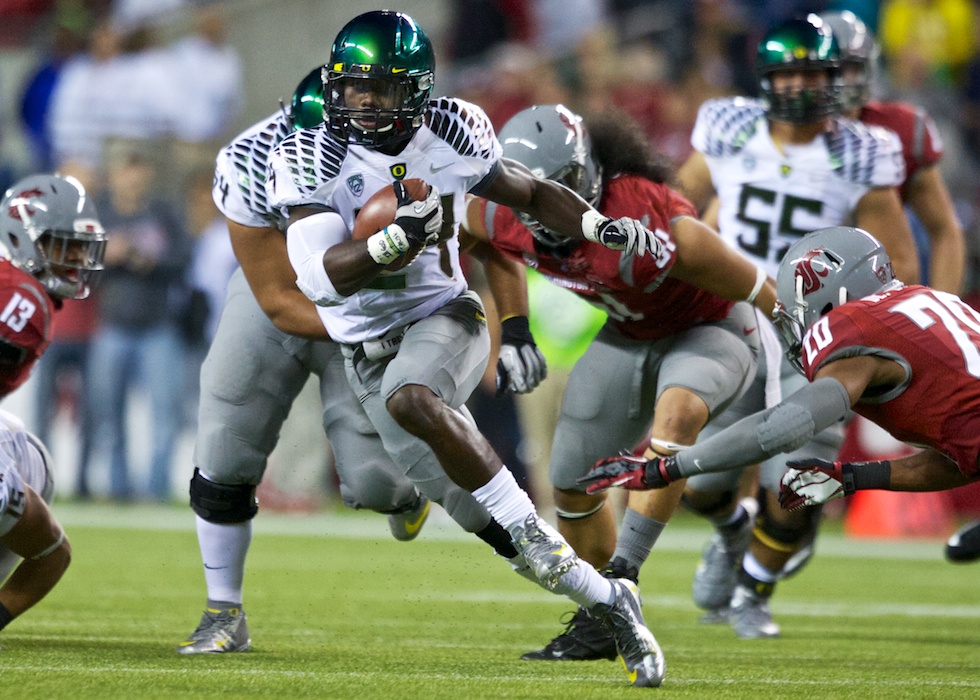
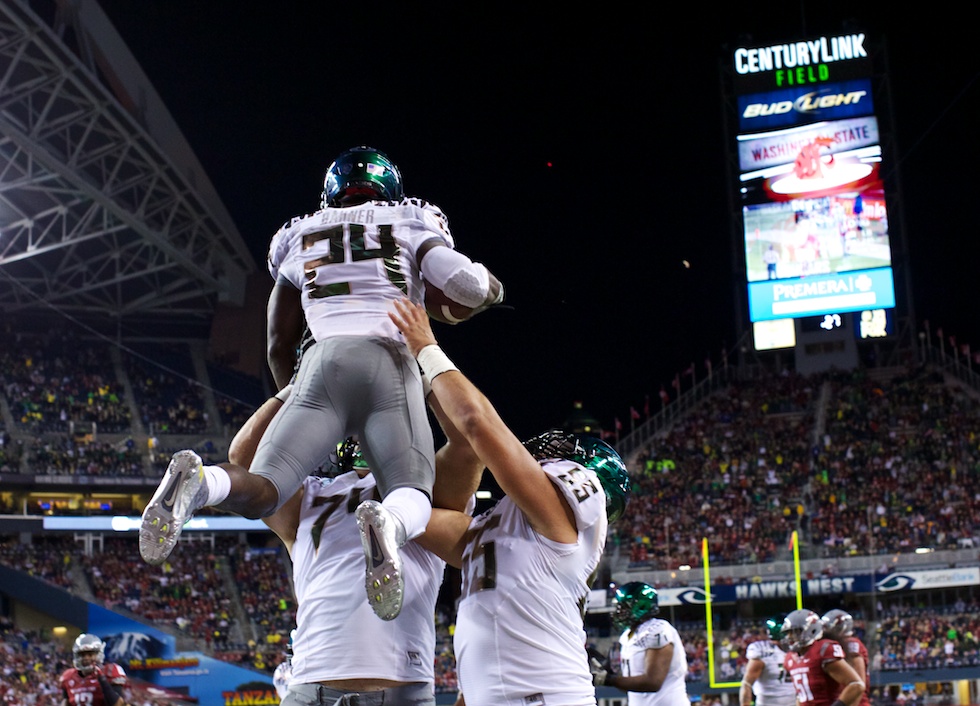
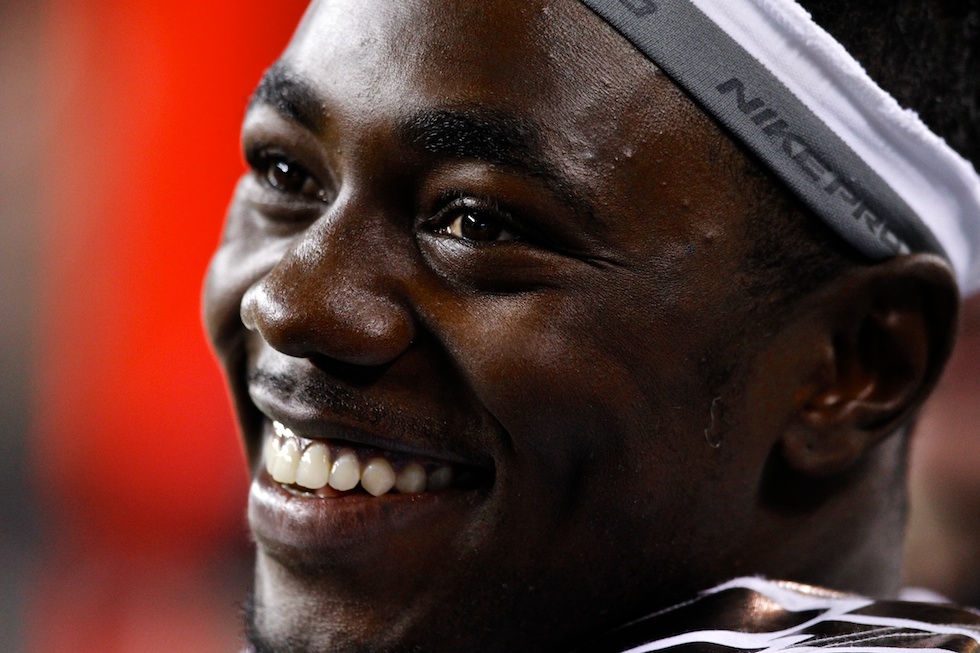
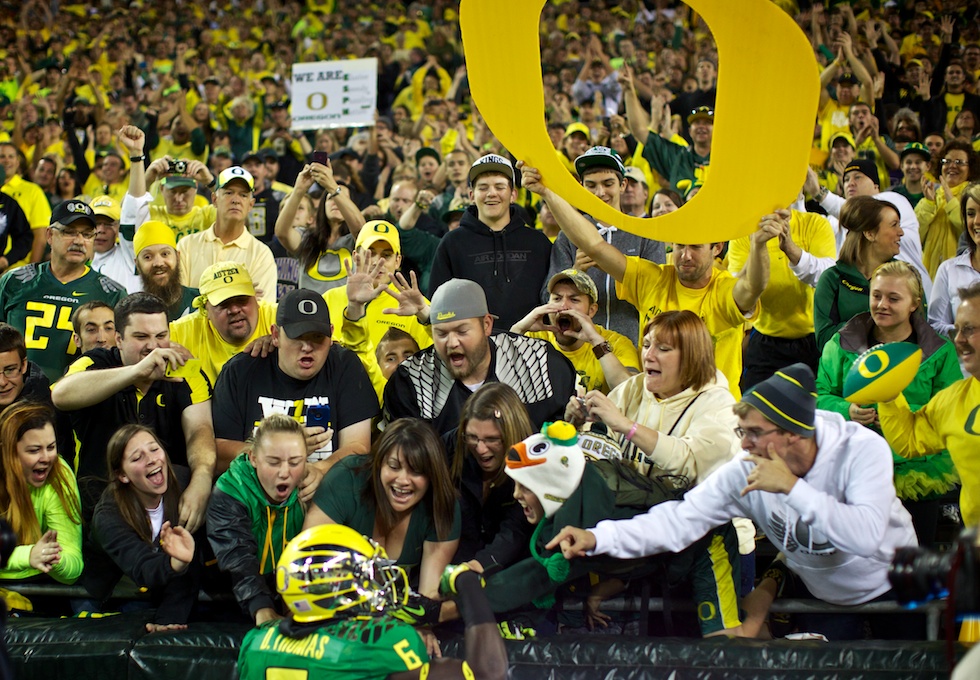
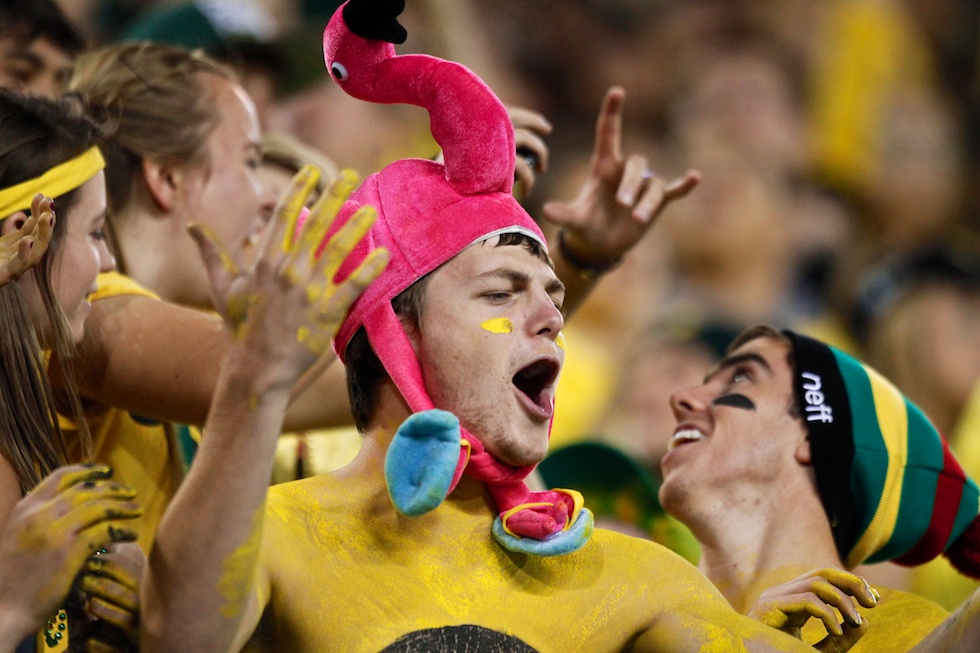
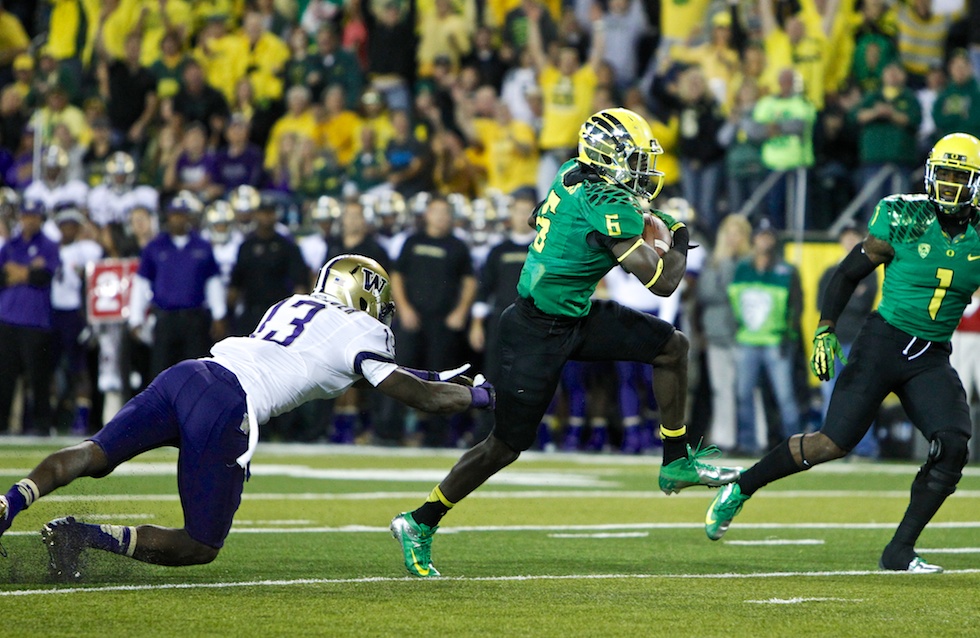
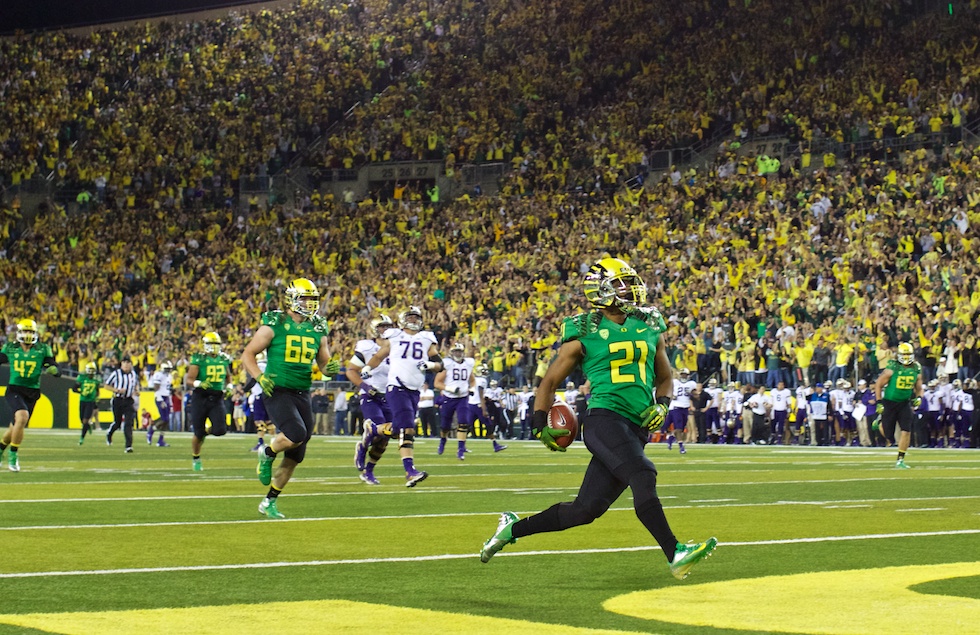
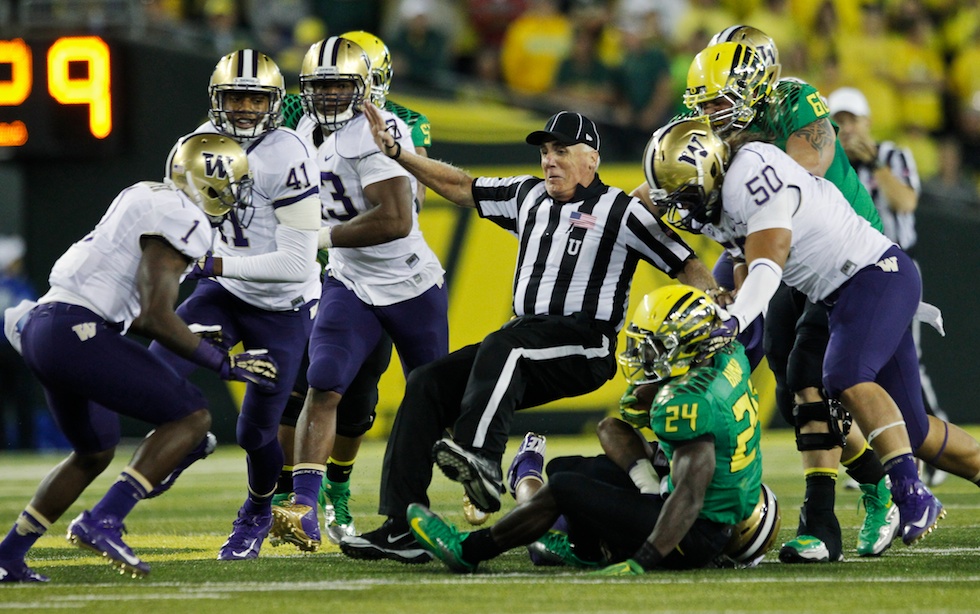
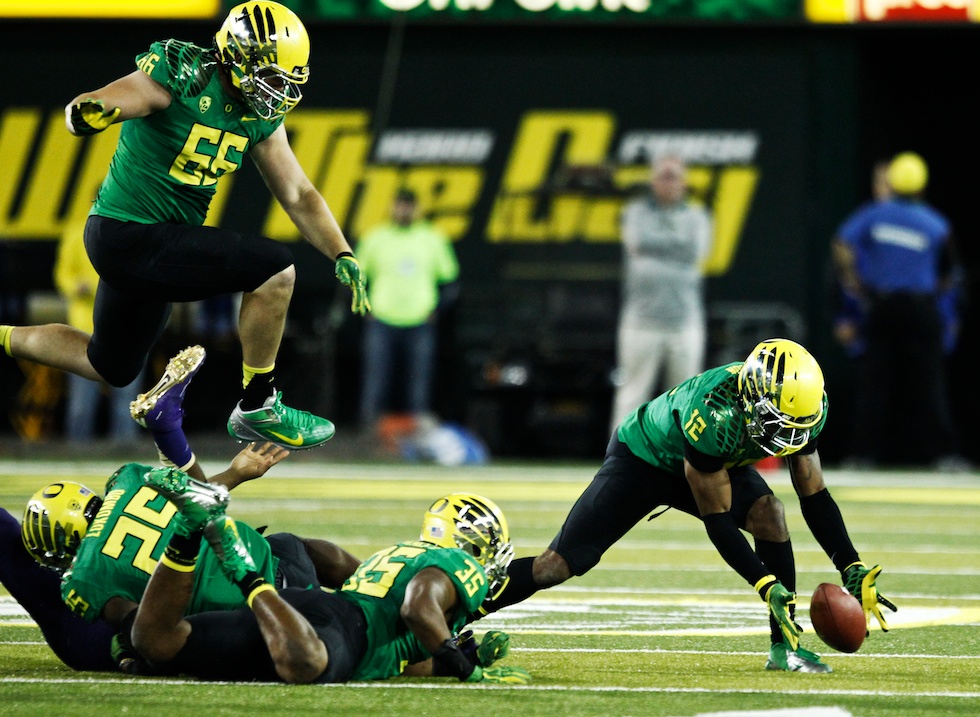
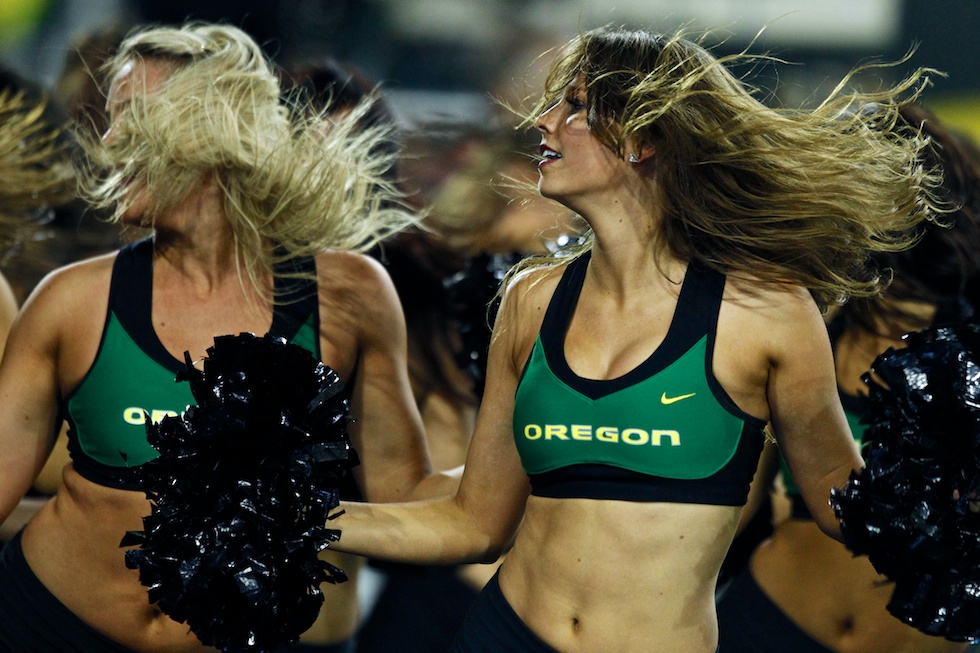
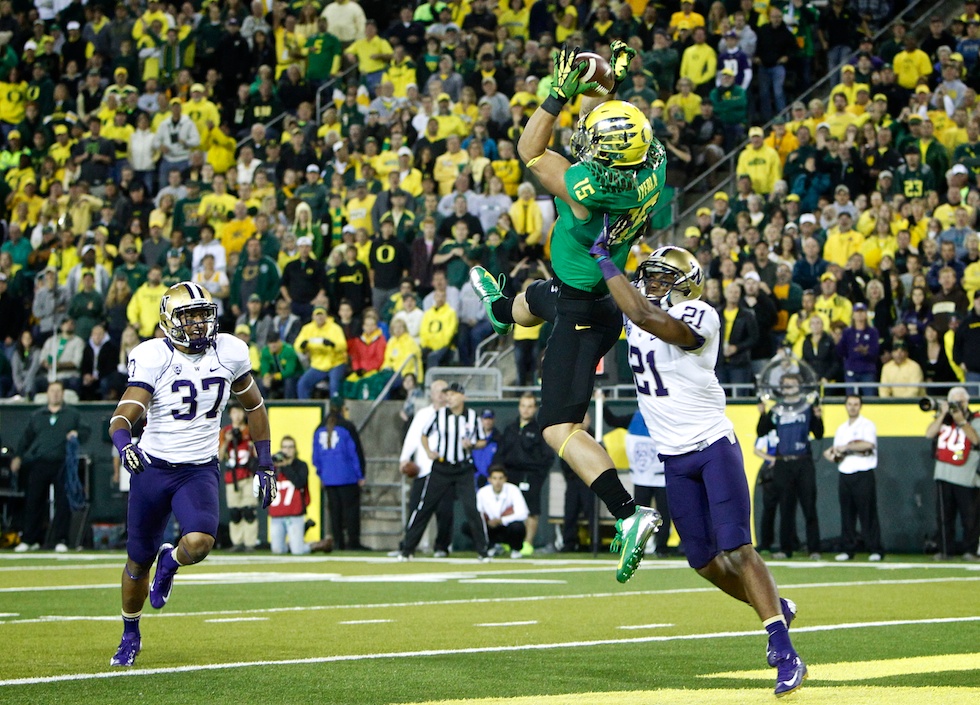
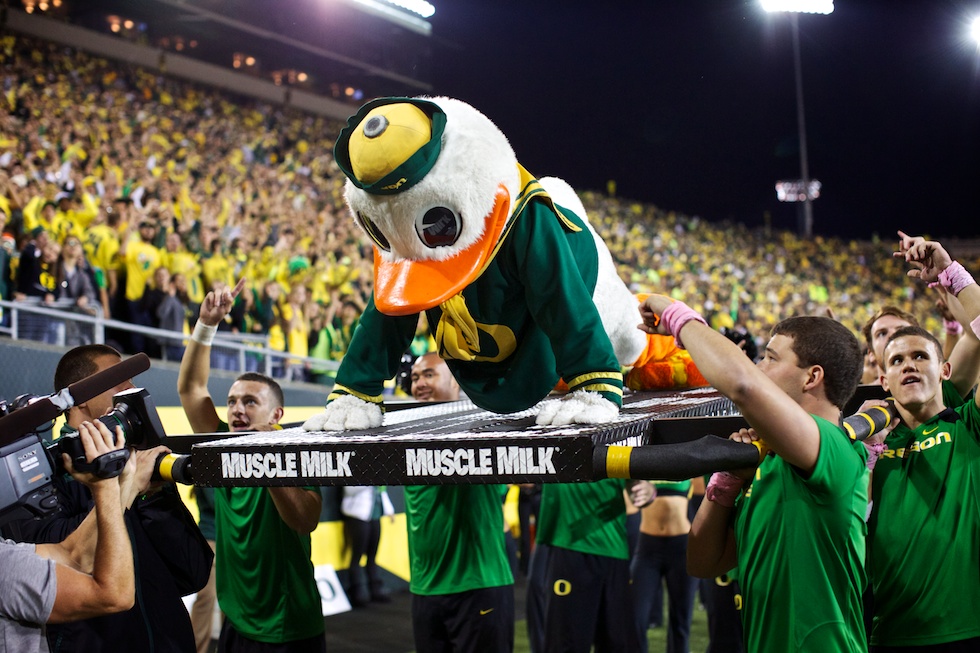
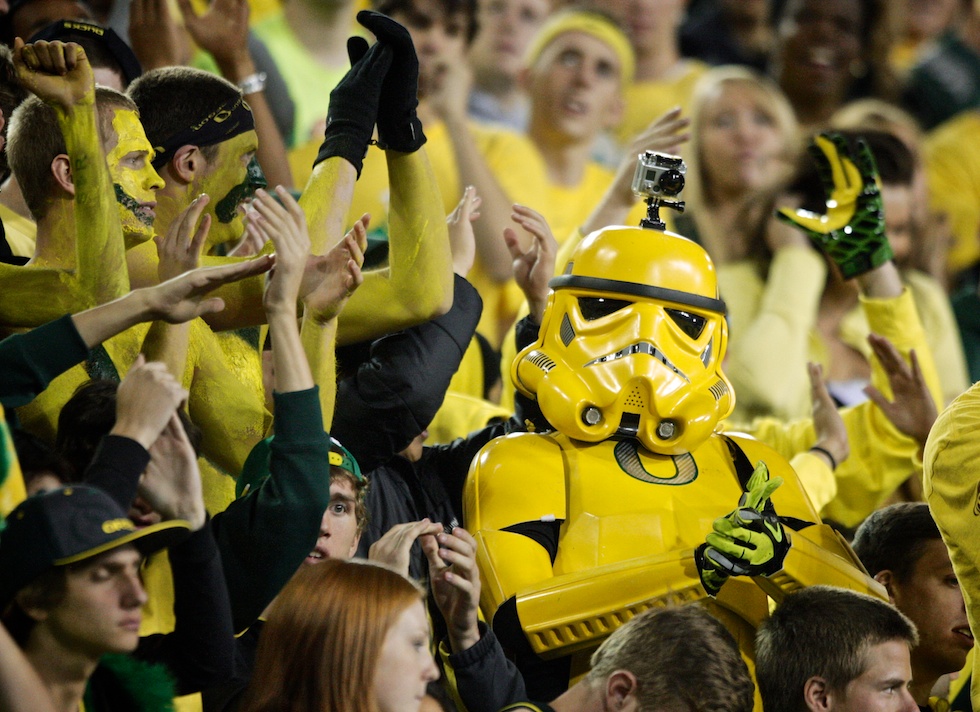
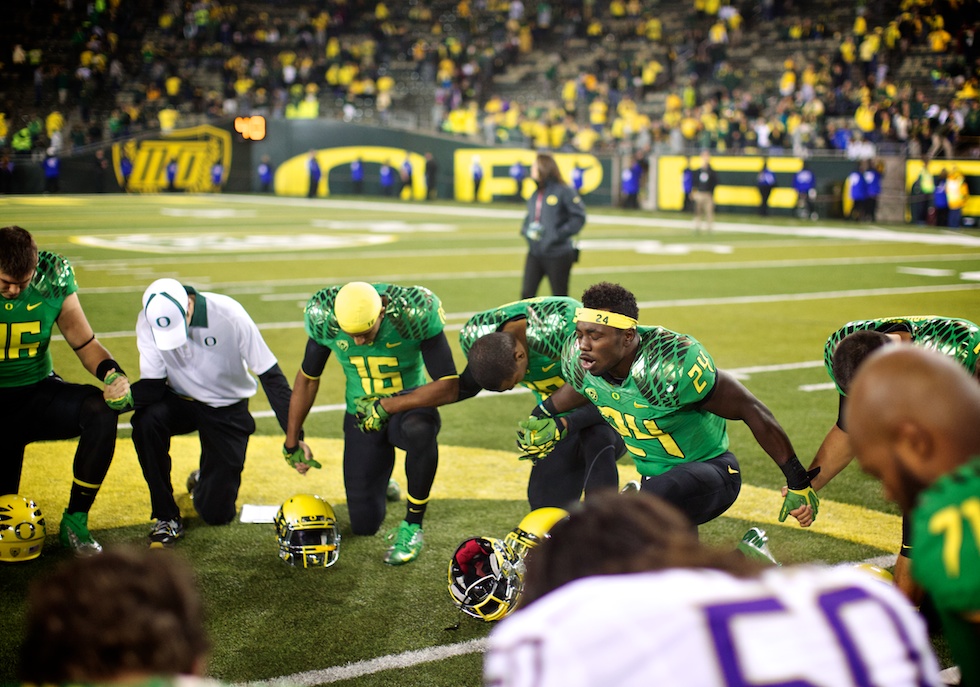
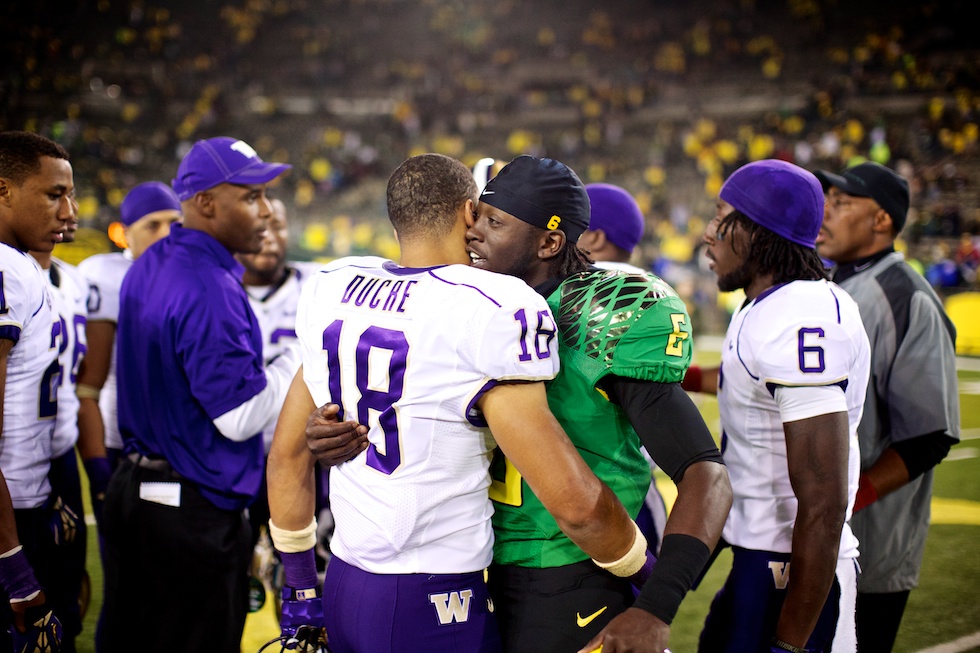
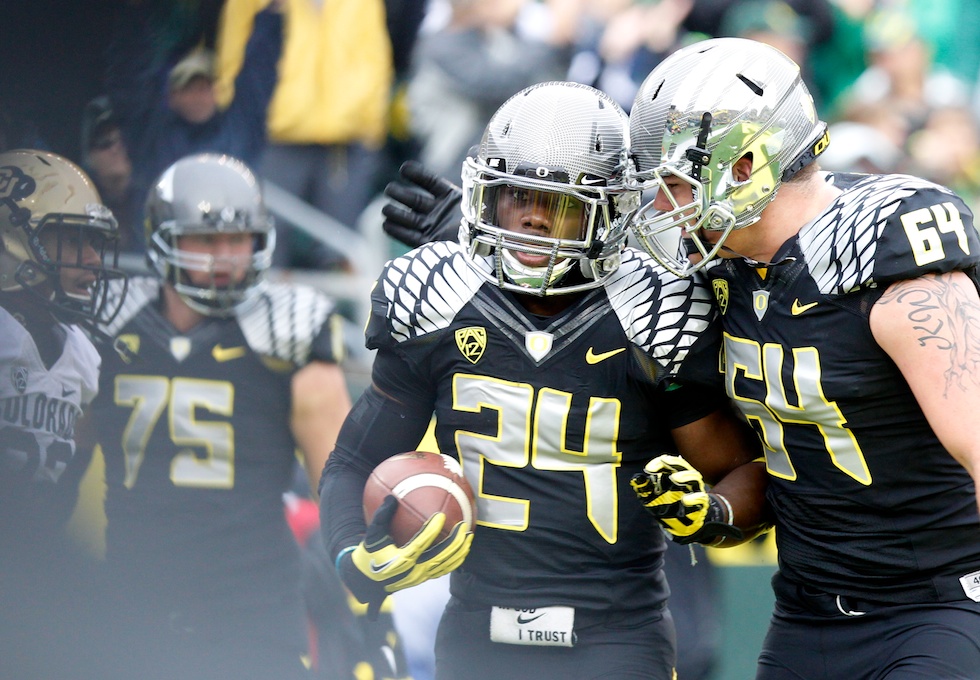
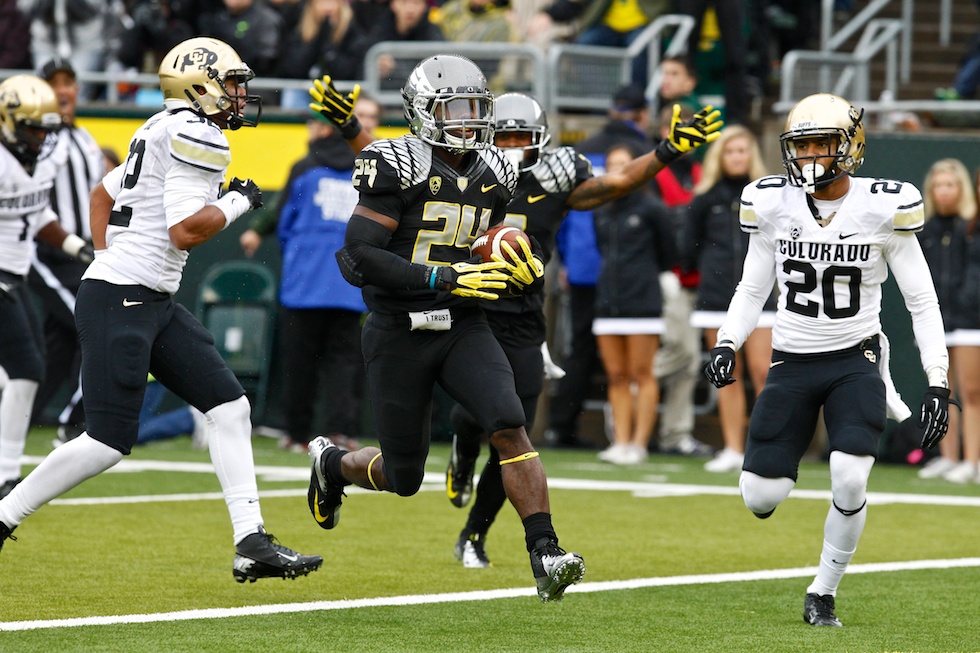
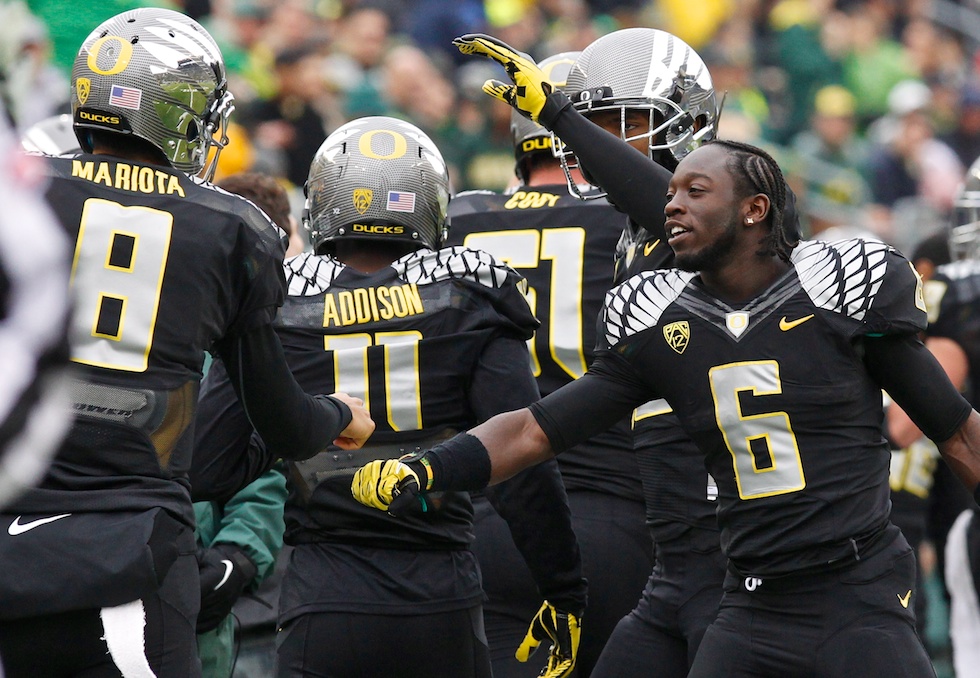
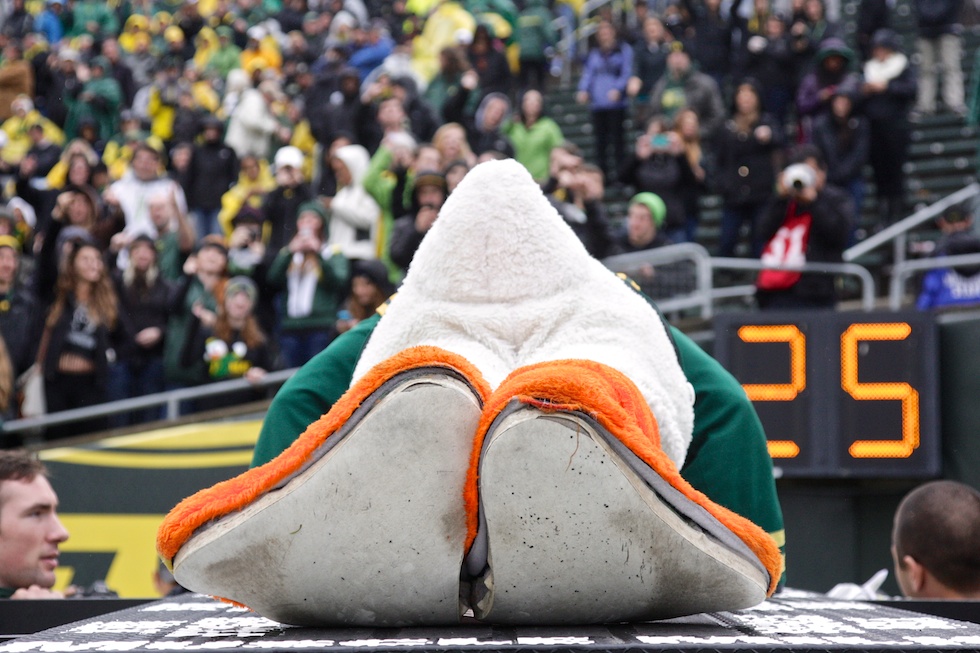
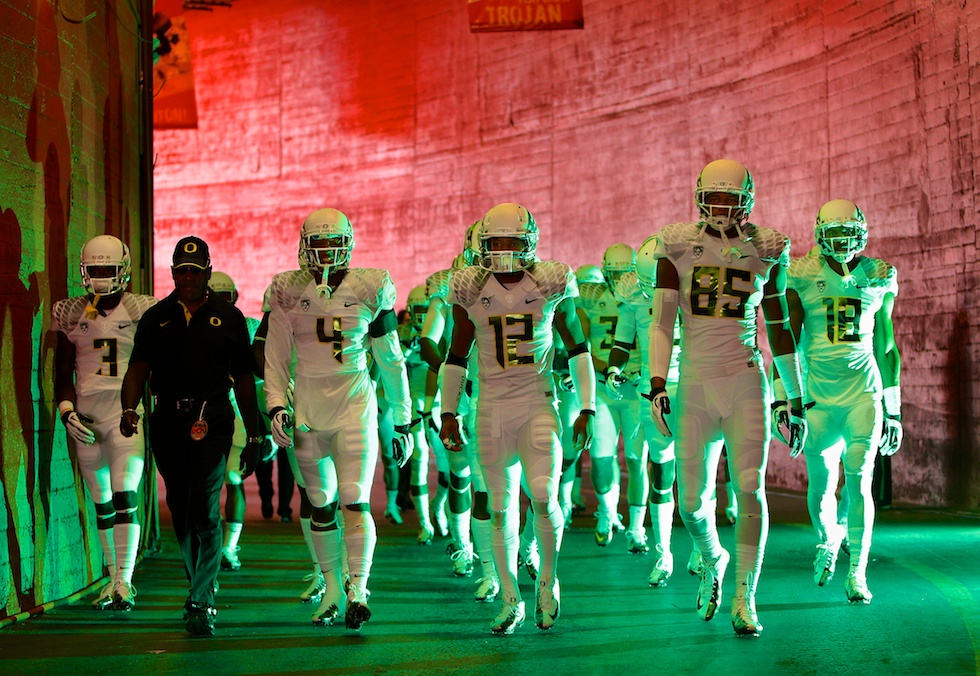
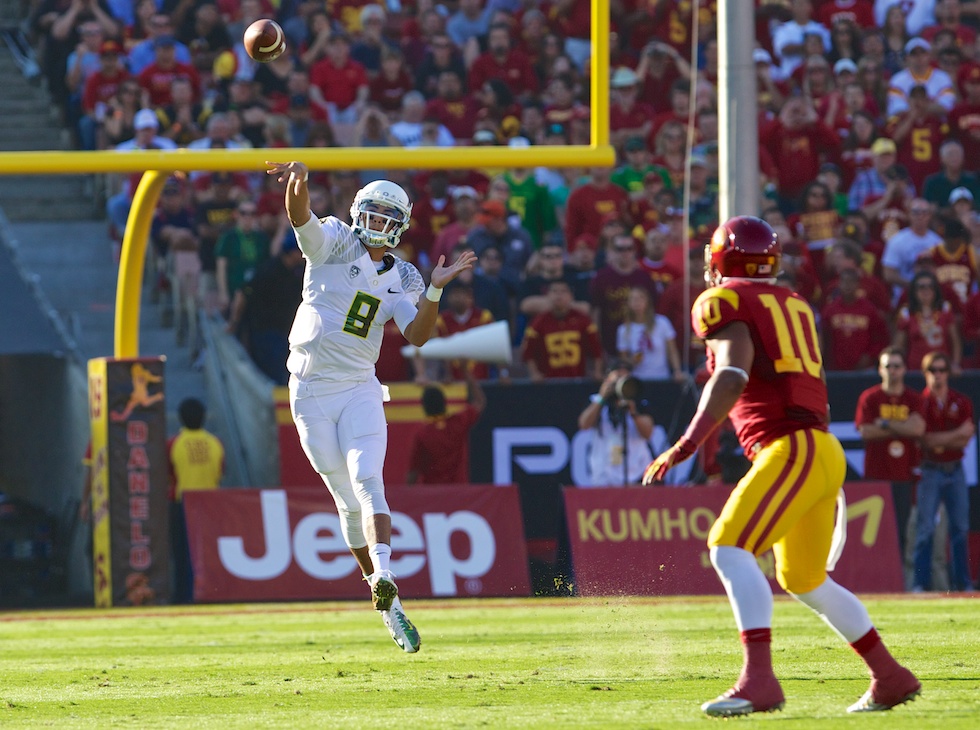
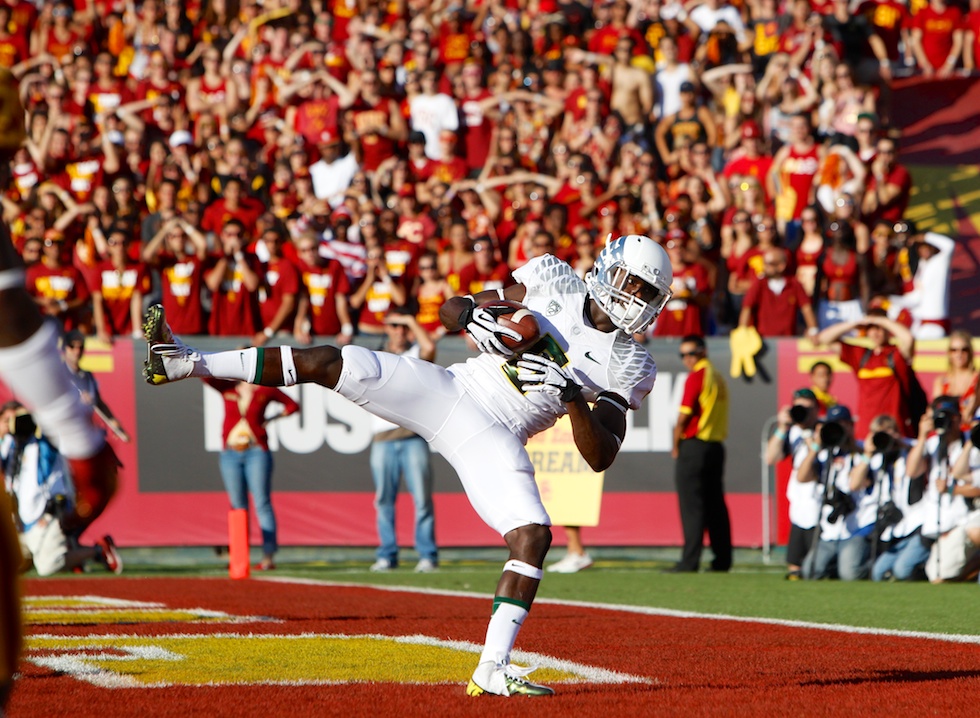
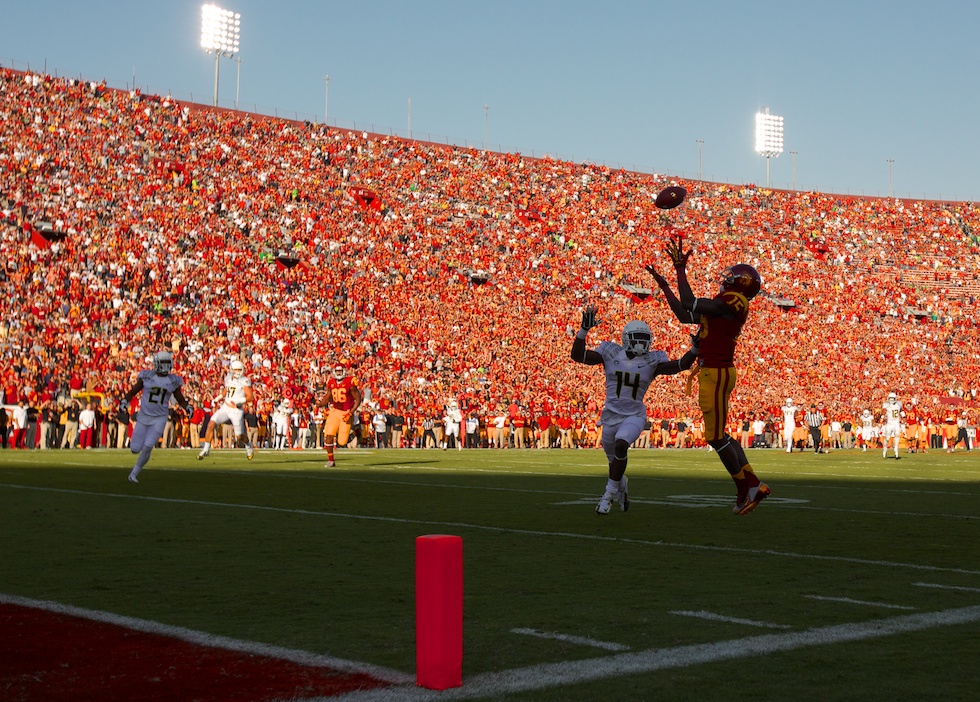
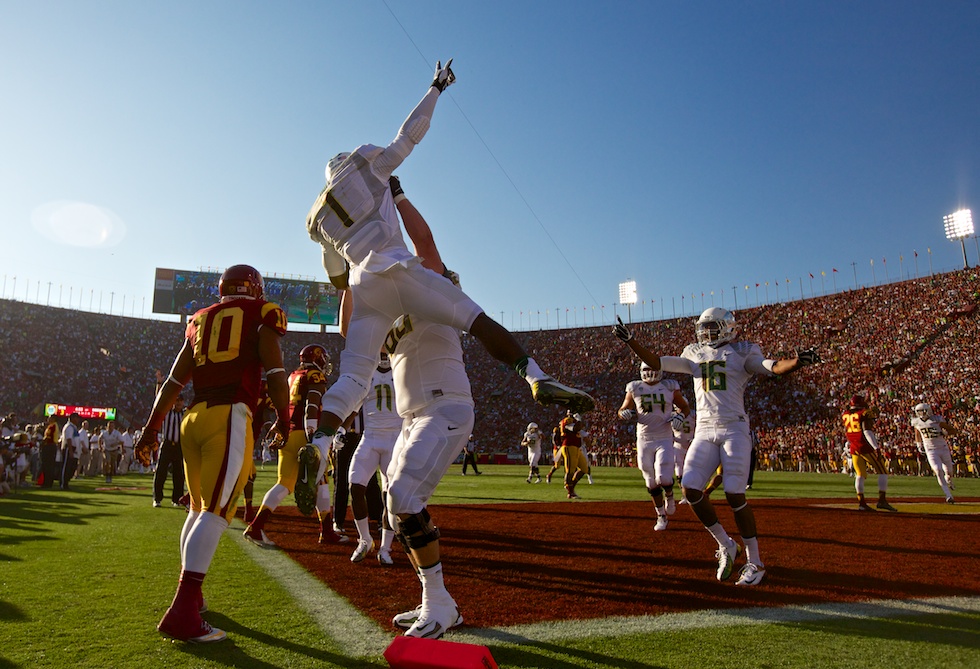

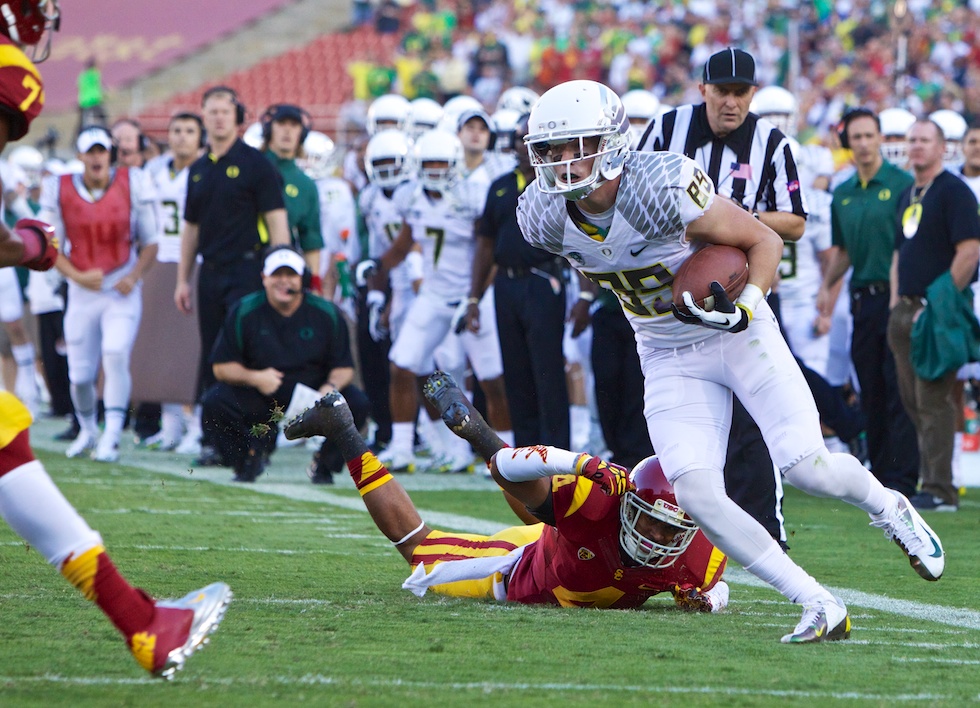
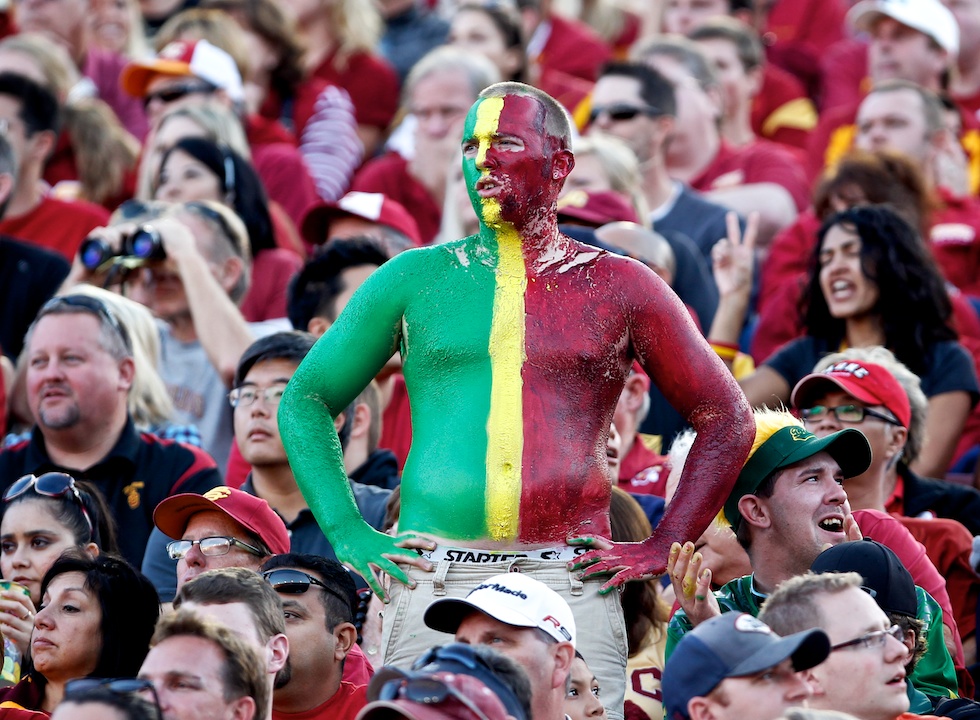
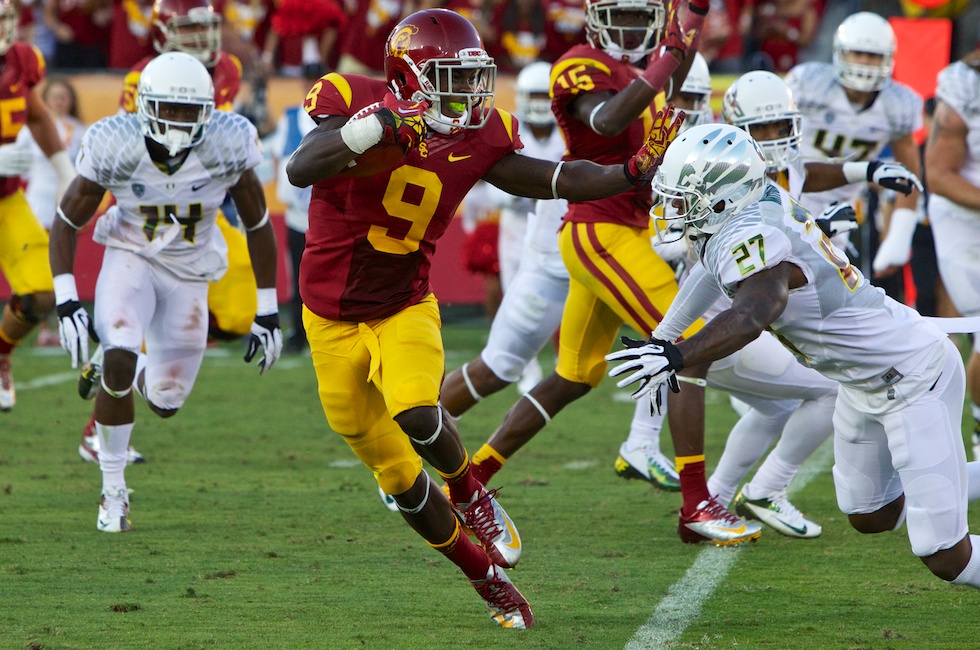
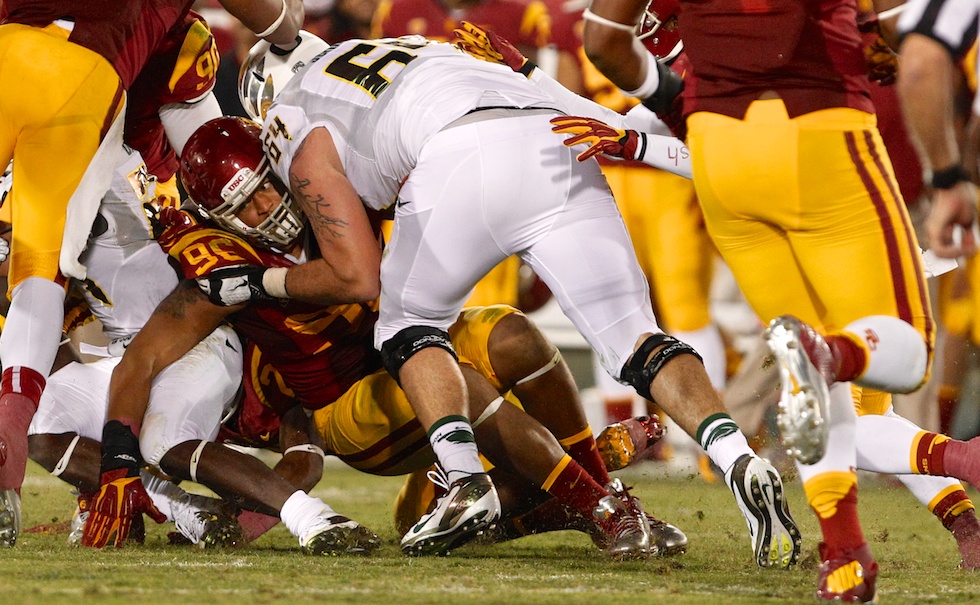

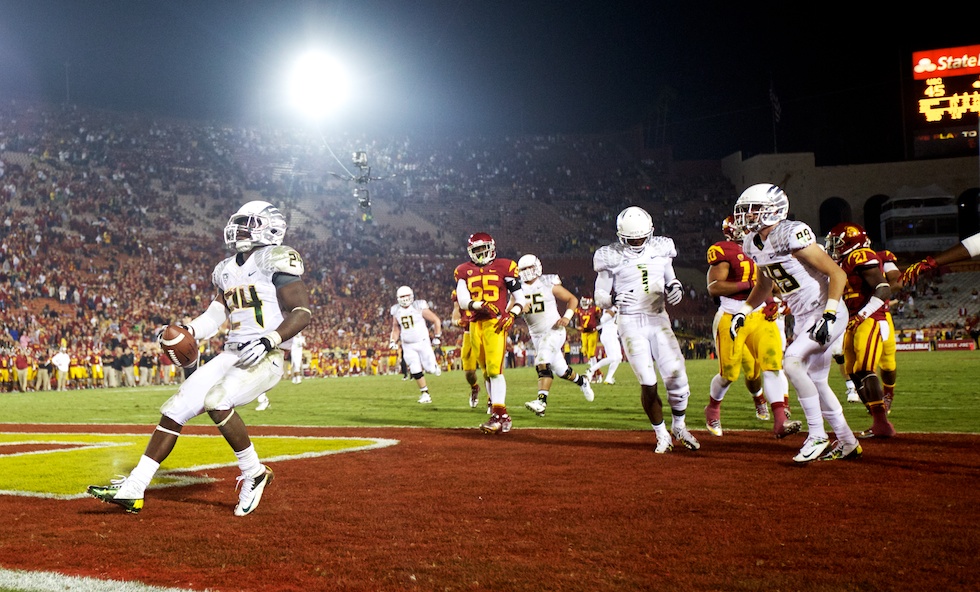
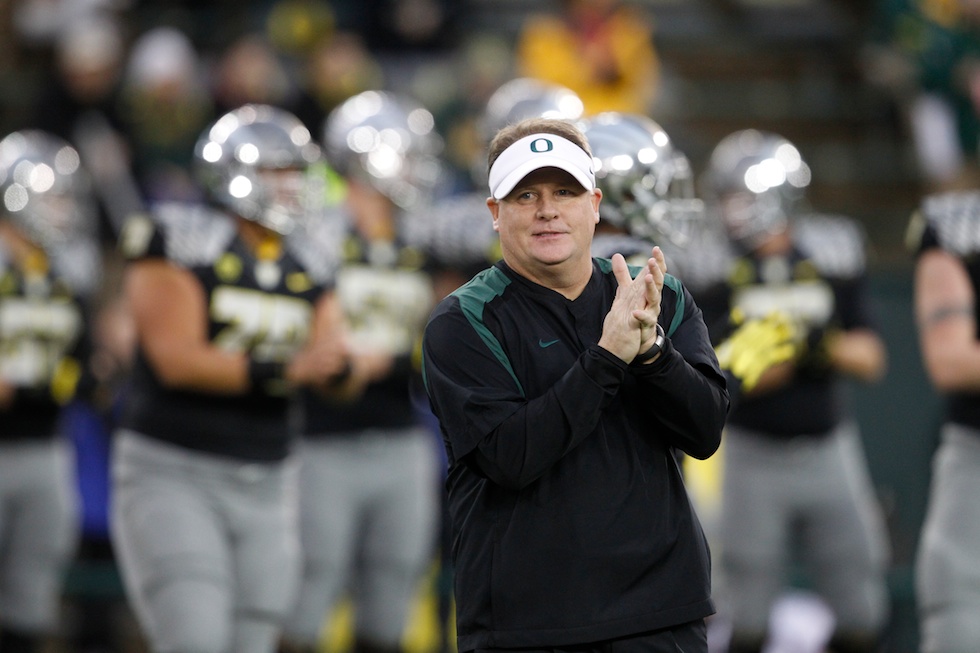
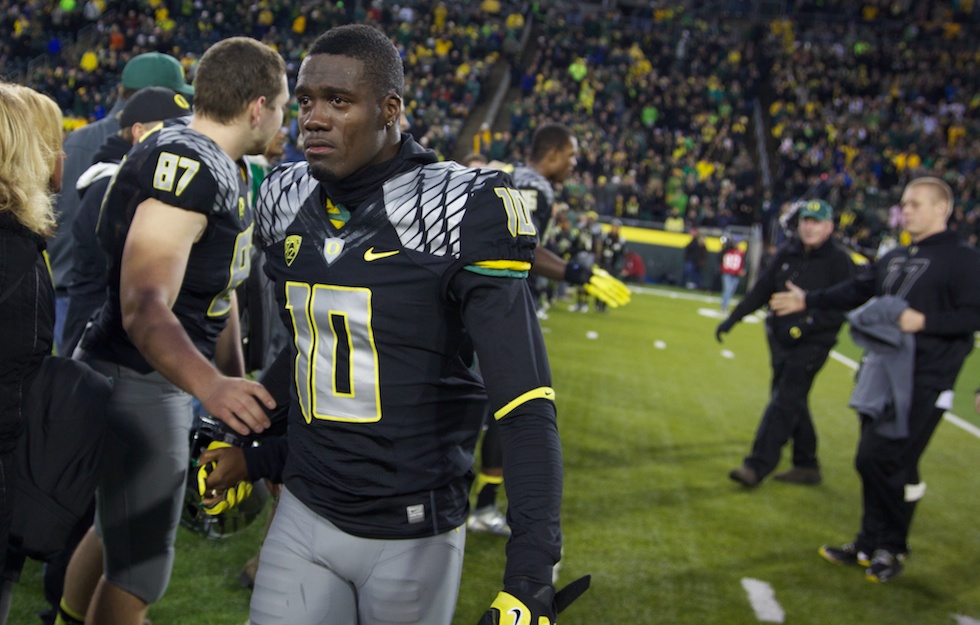
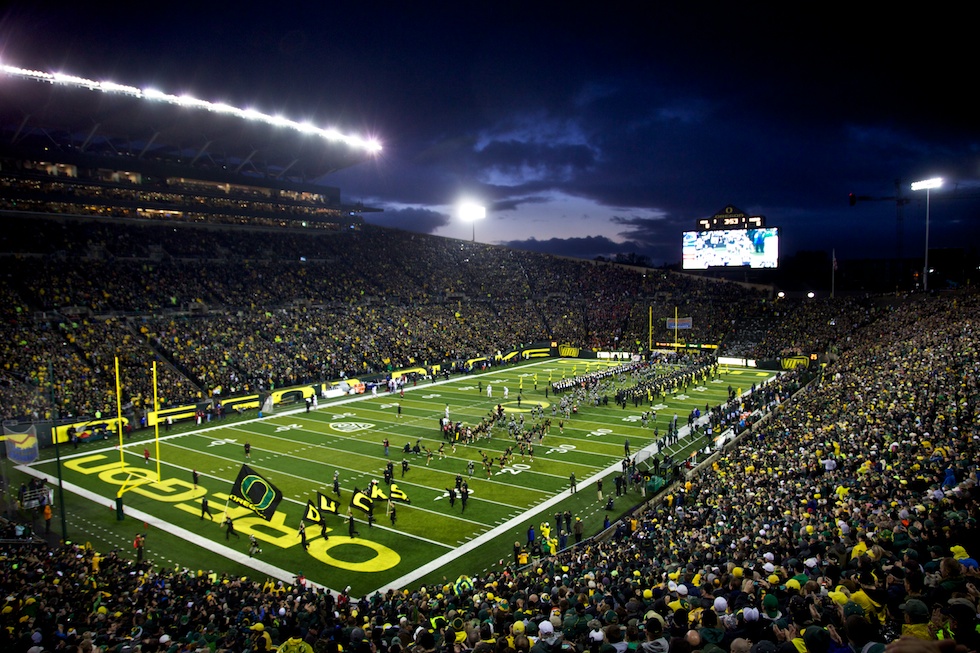
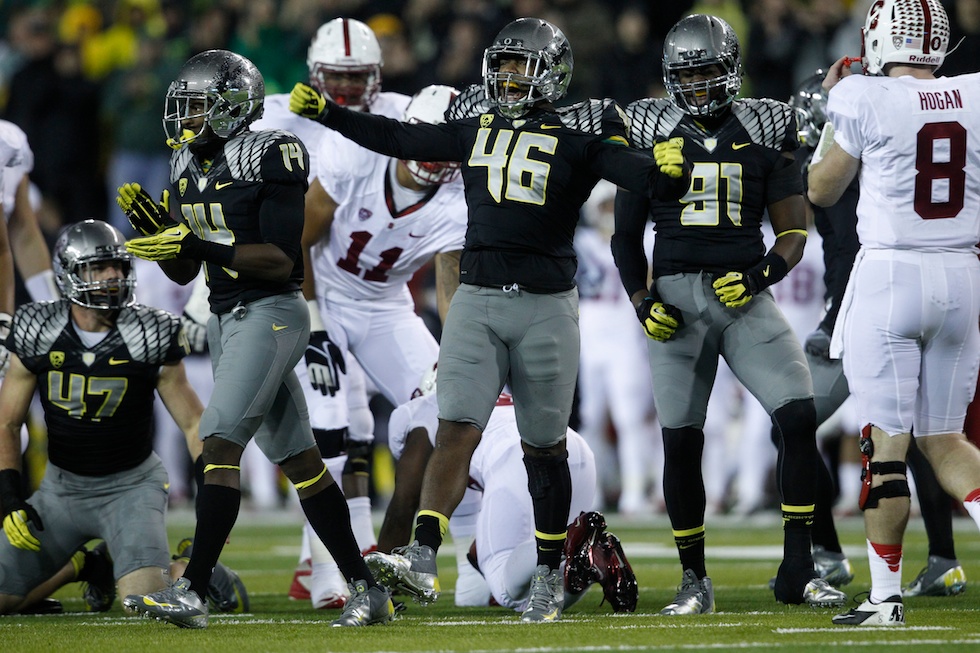
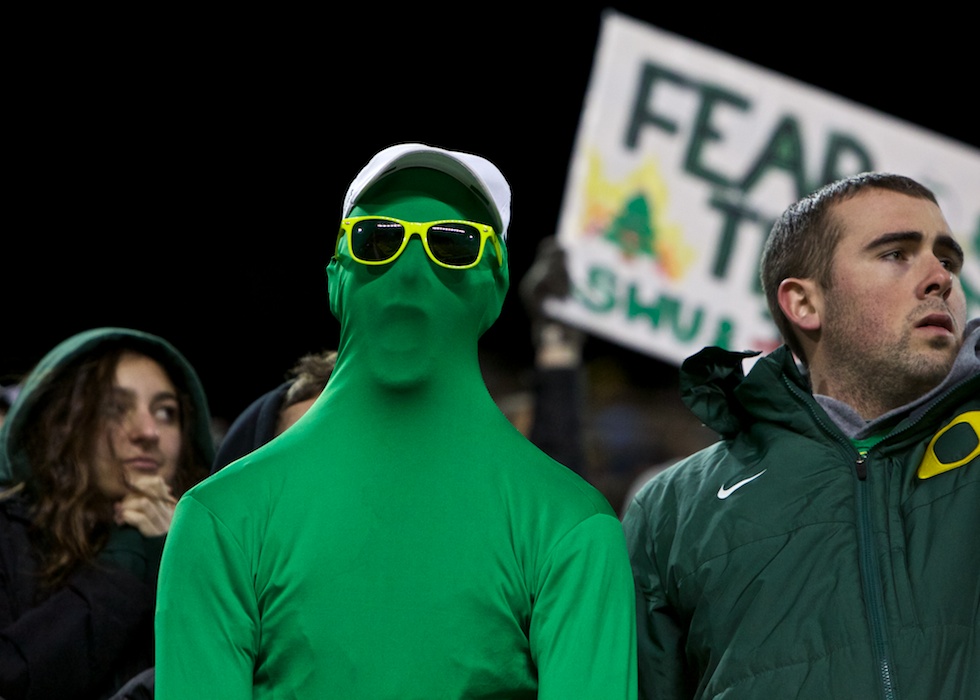
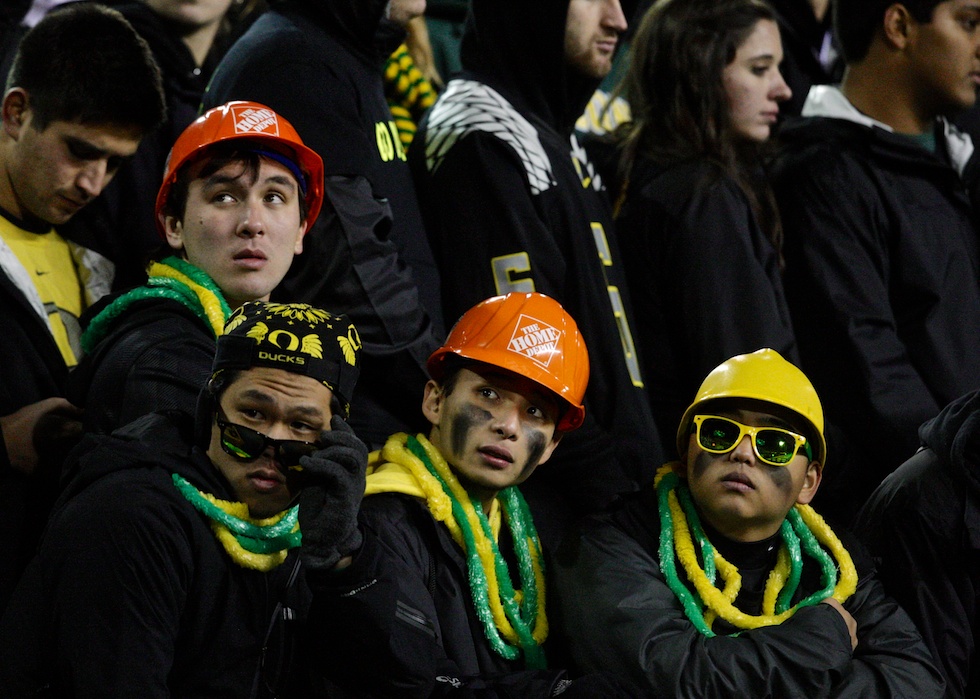
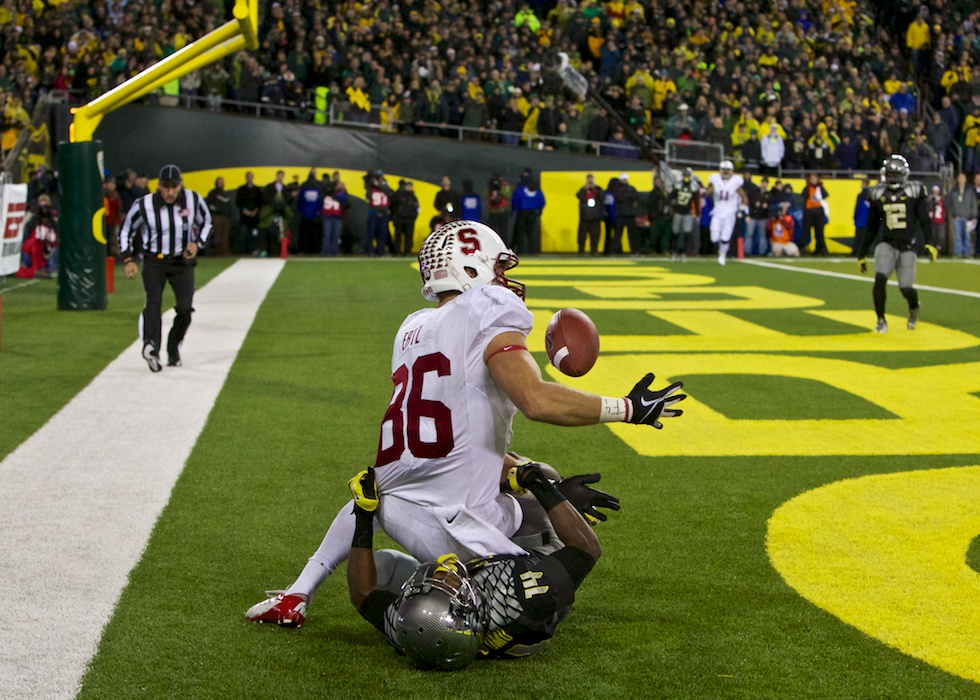
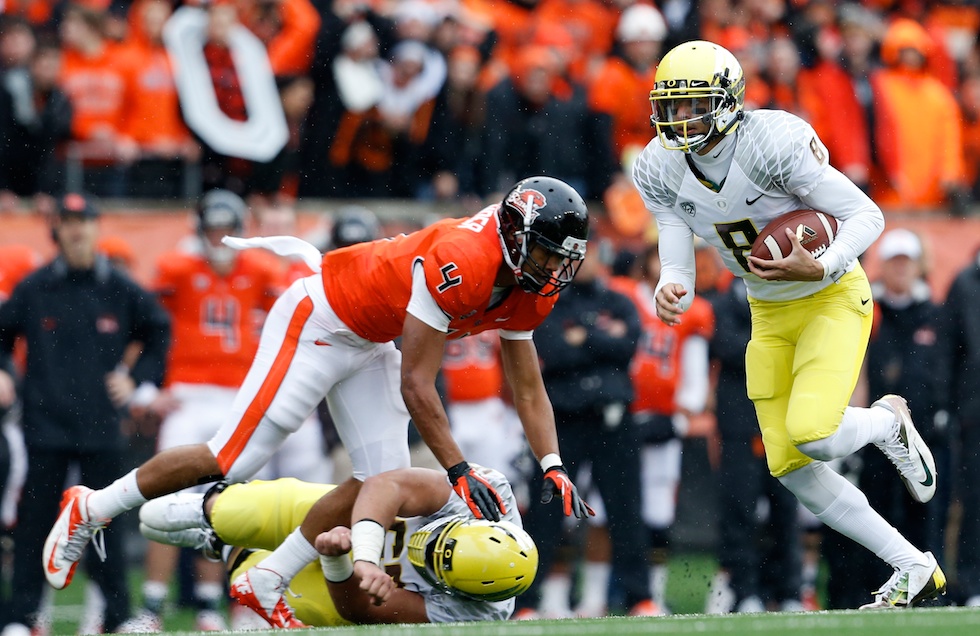
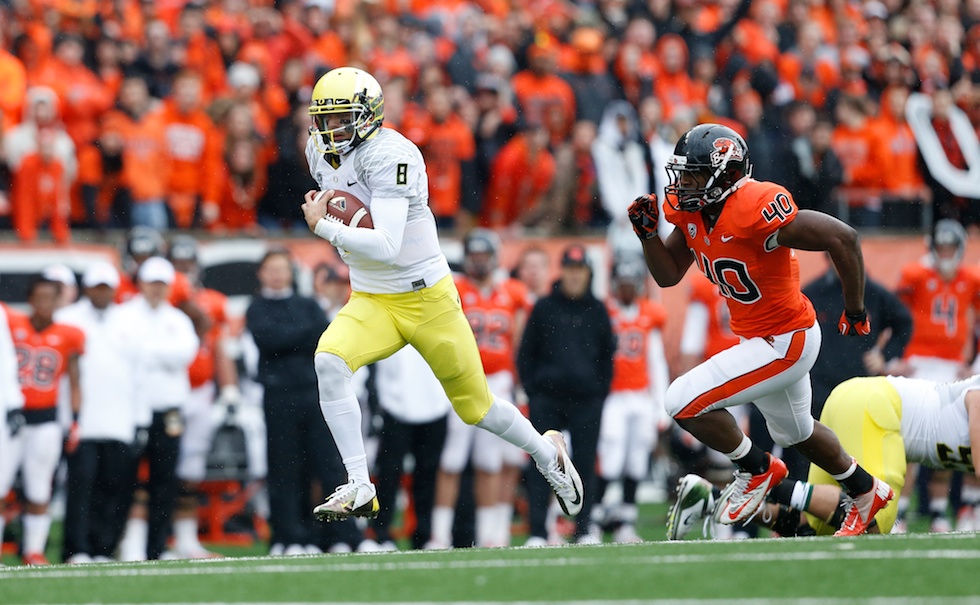
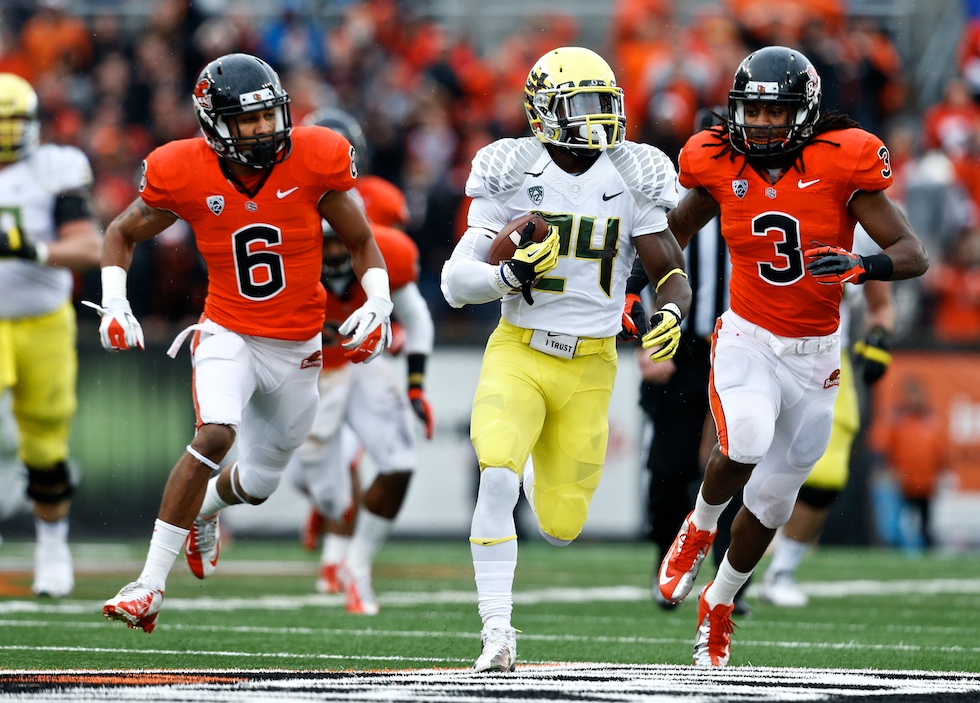
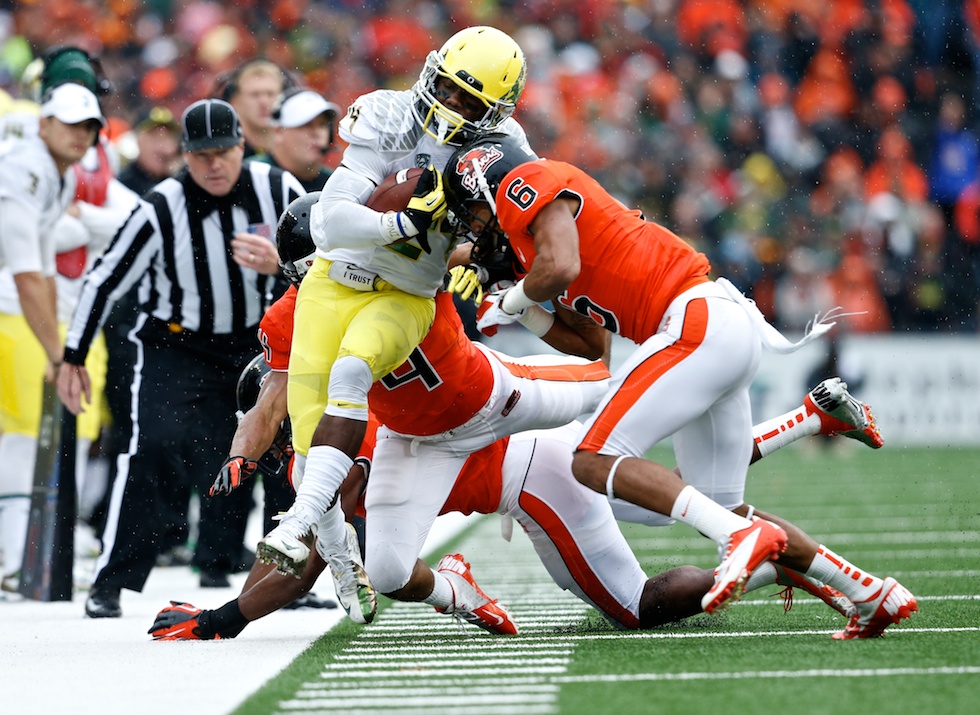
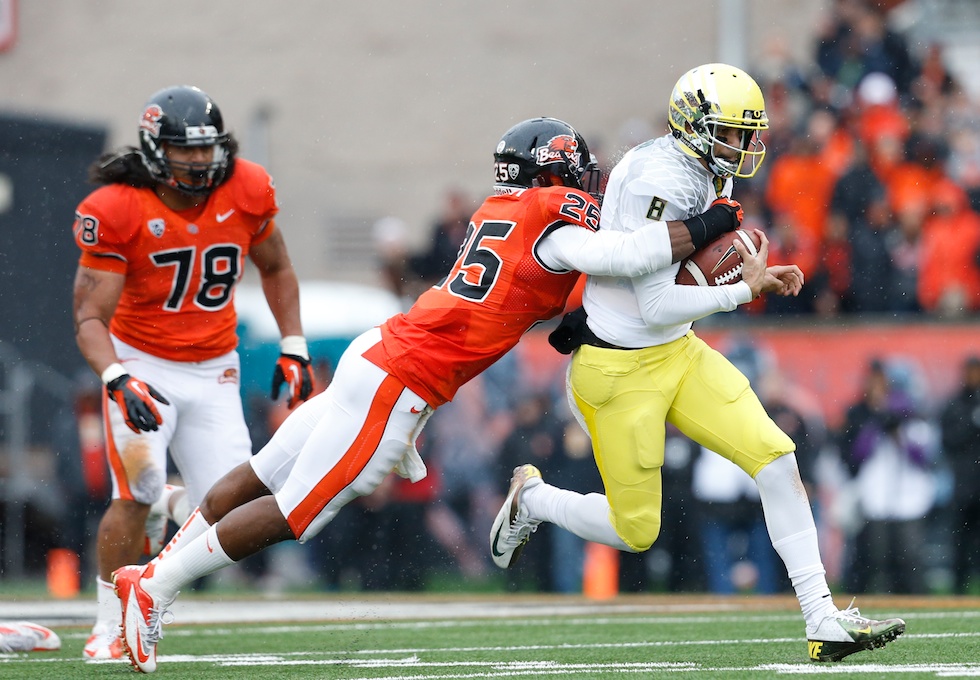
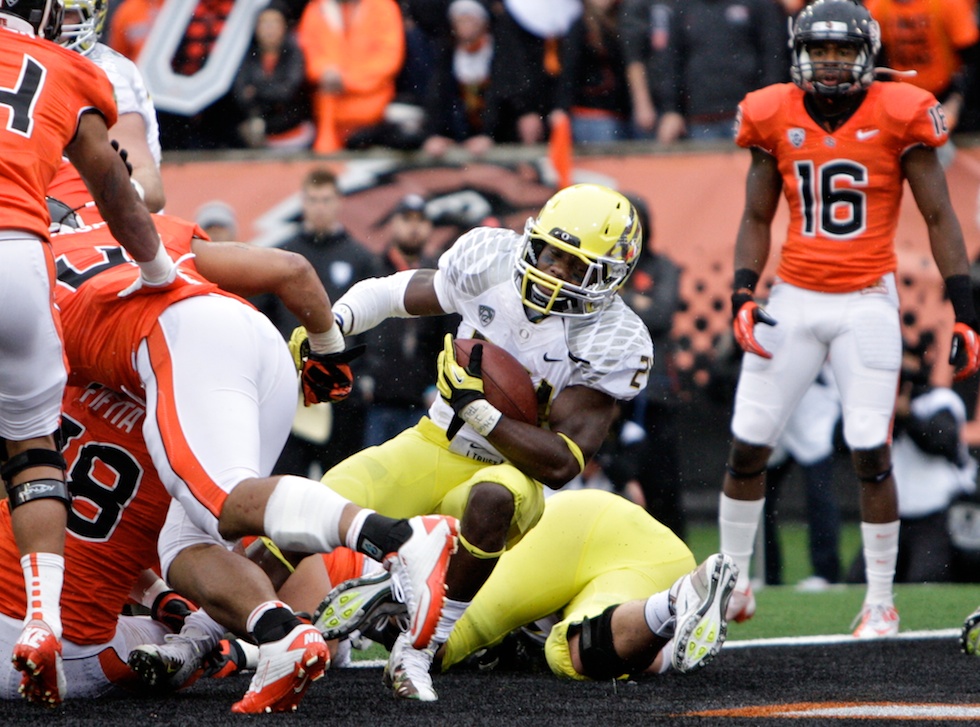
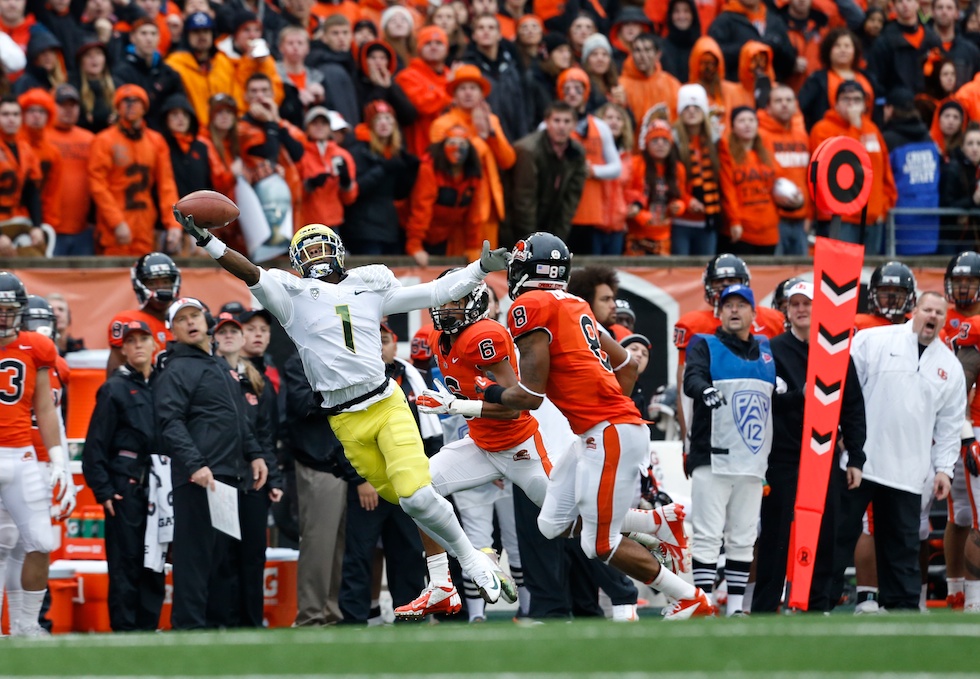
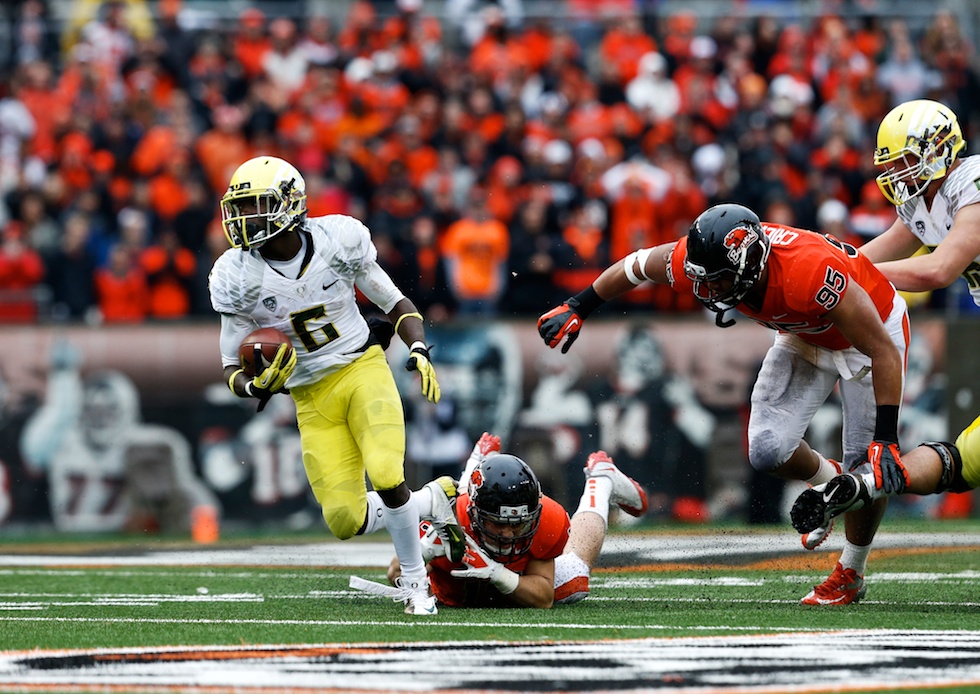
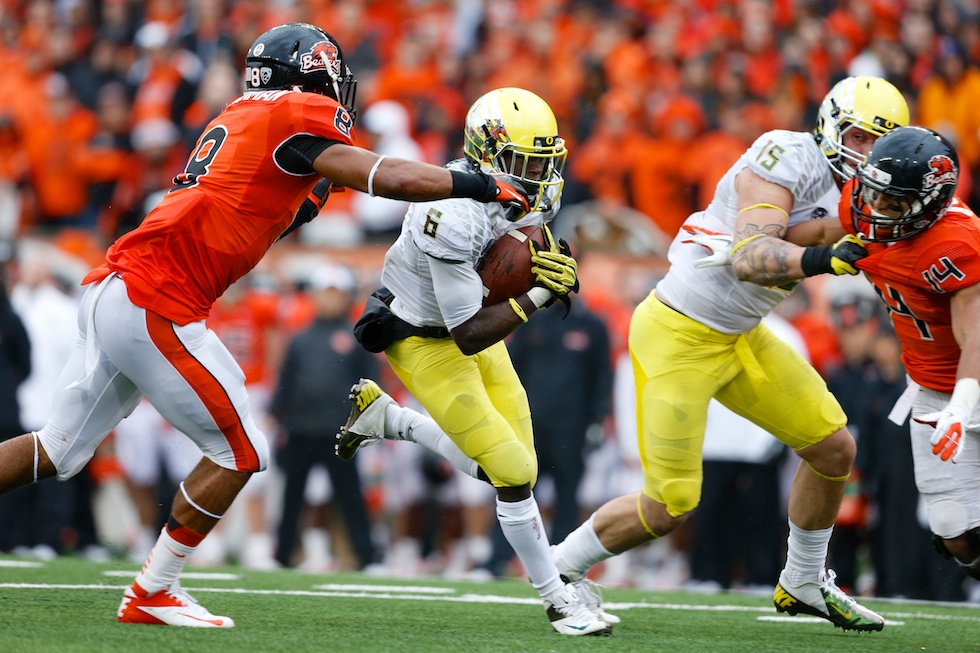
Photo Sequence of Controversial Play in Oregon vs. Stanford Game
EUGENE, OREGON - November 17, 2012 - Stanford Cardinal tight end Zach Ertz (86), catches a touchdown pass that was initially called incomplete but was later ruled as a touchdown that tied the game at 14-14, at Autzen Stadium in Eugene, Ore. Thomas Boyd/The Oregonian
Oregon Duck Football Collage
I've been thinking about doing something like this for a long time and this morning I just went ahead and whipped something out. And since I'll be shooting the Oregon Ducks play the Washington Huskies tonight, I thought made some sense. This is really only a test to see if my technique will work. I think it did but I'd like to have a better reason to put it to use. If it do it again I'll probably get someone to help me with better handwriting. In any event, I think the distressing method worked out pretty well.
A Seattle Trip
This assignment was to shoot several spots around Seattle including the University of Washington and Bainbridge Island. Pike Place Market was not on my list, but it was nice to go to some places I hadn't been to before. I always love a good ferry ride and it as actually fun to run around shooting seriously for the 40 minutes I had. I was at the Seattle Great Wheel at the perfect time for make some photos. I got on moments after the sun dropped and by the time I got off it was almost totally dark. Ten minutes earlier would have been awful light and ten minutes later same thing.
©The Oregonian/2012
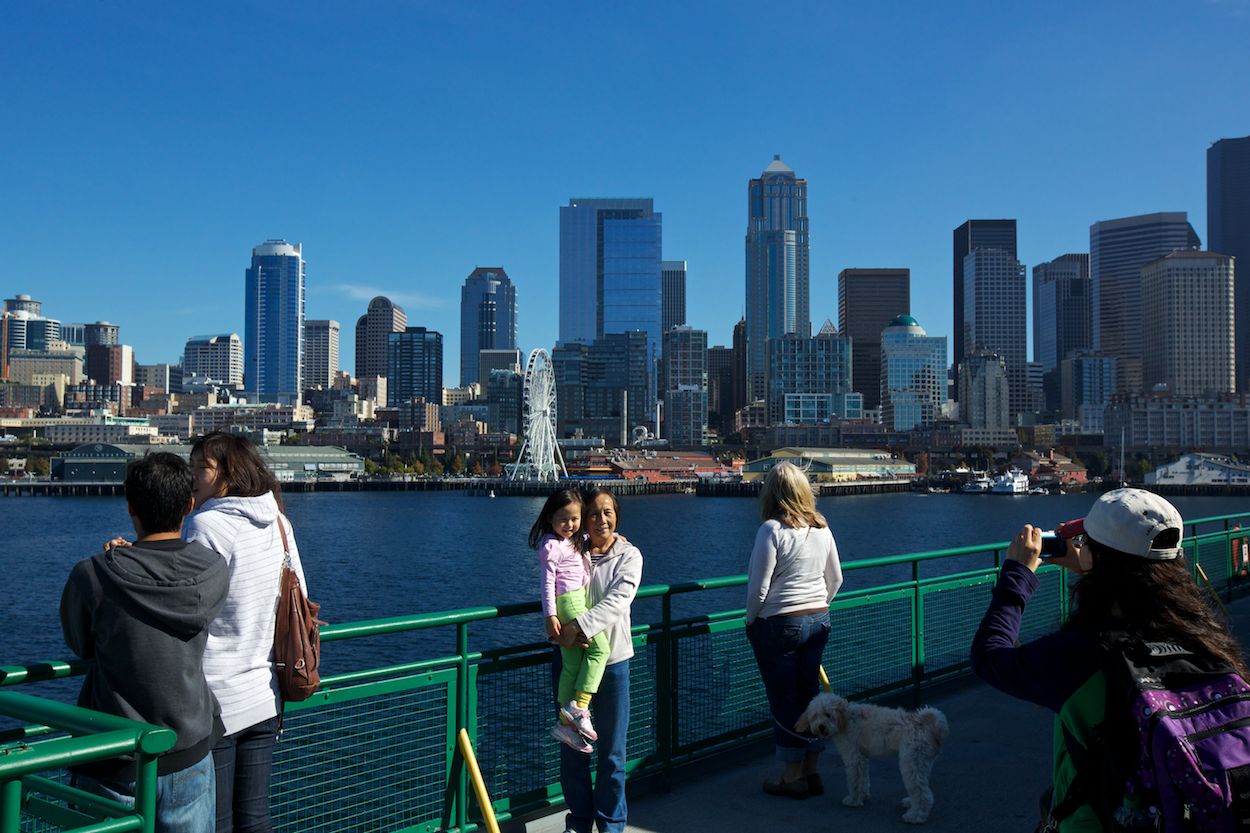
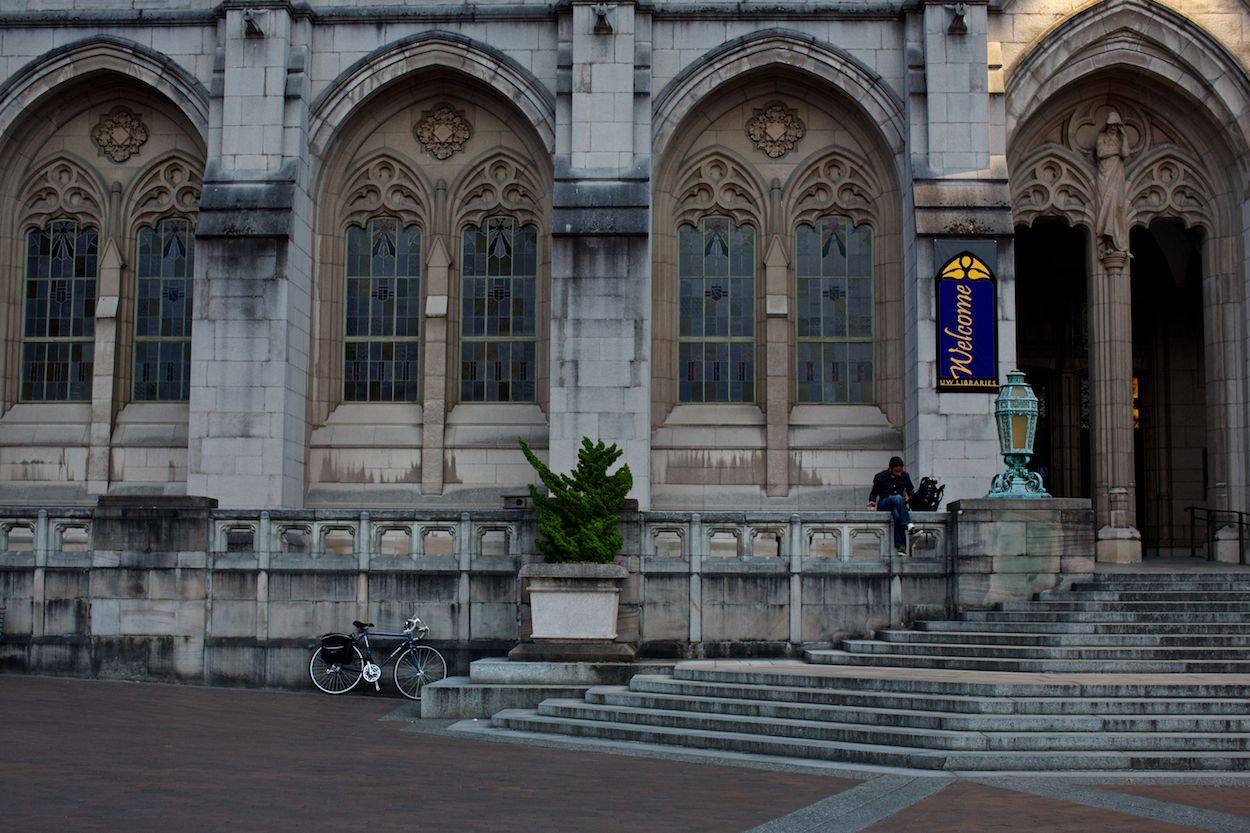
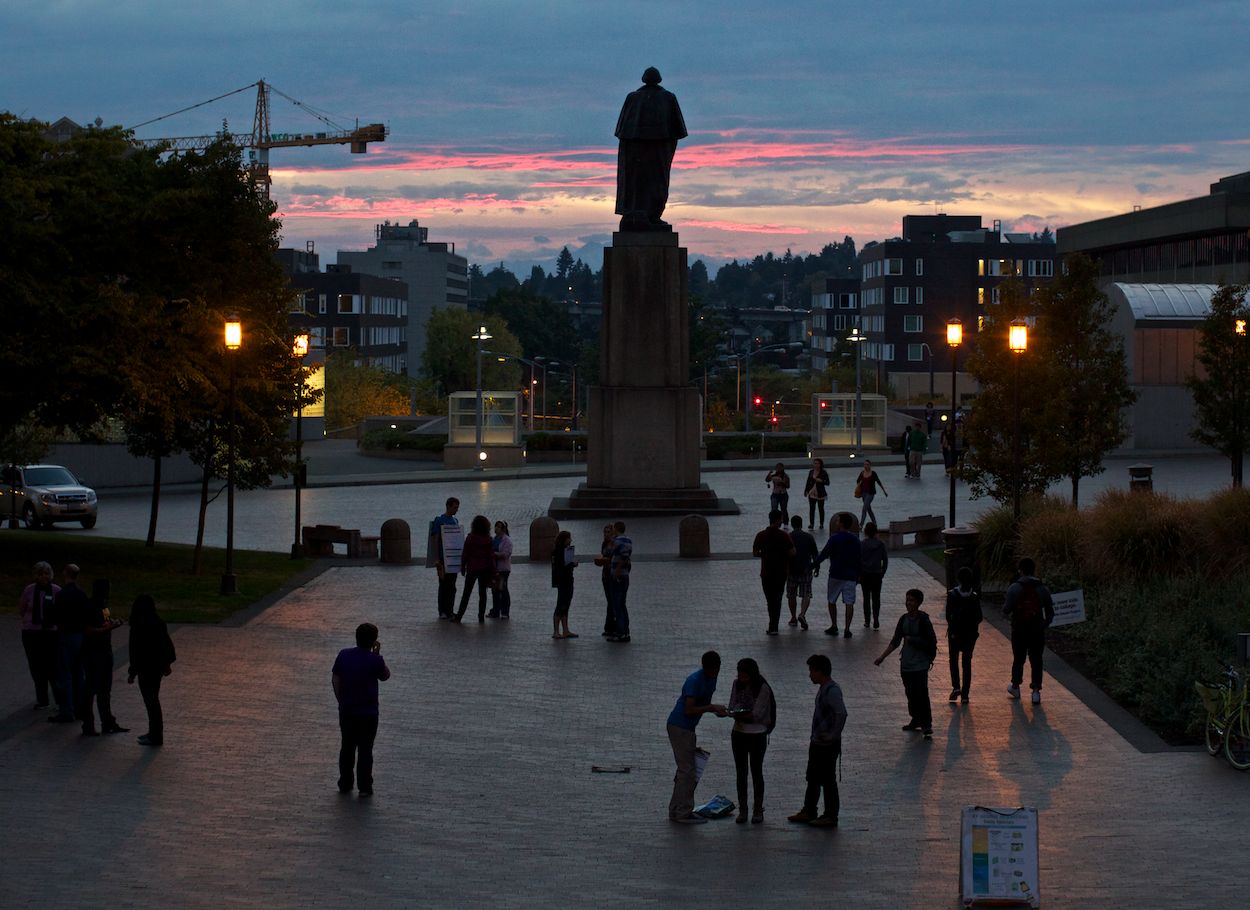
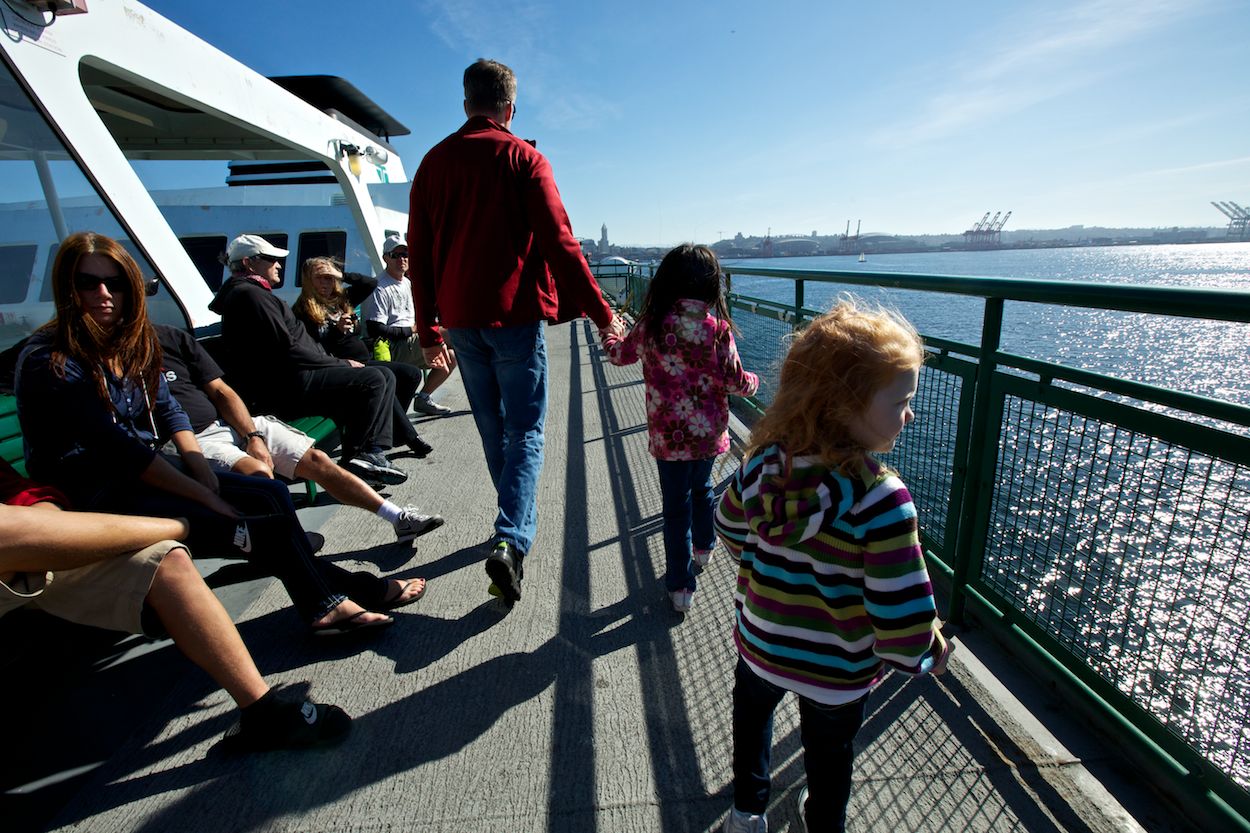
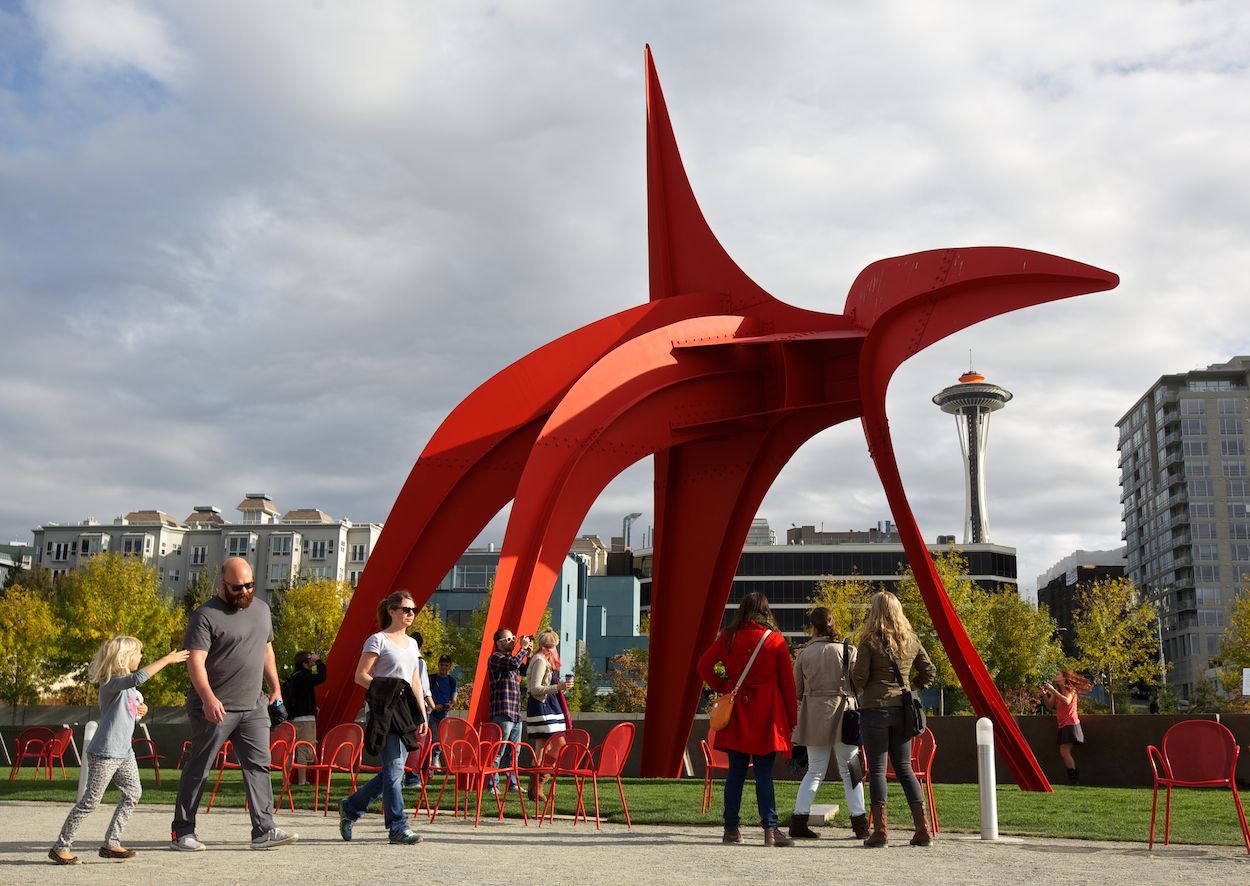
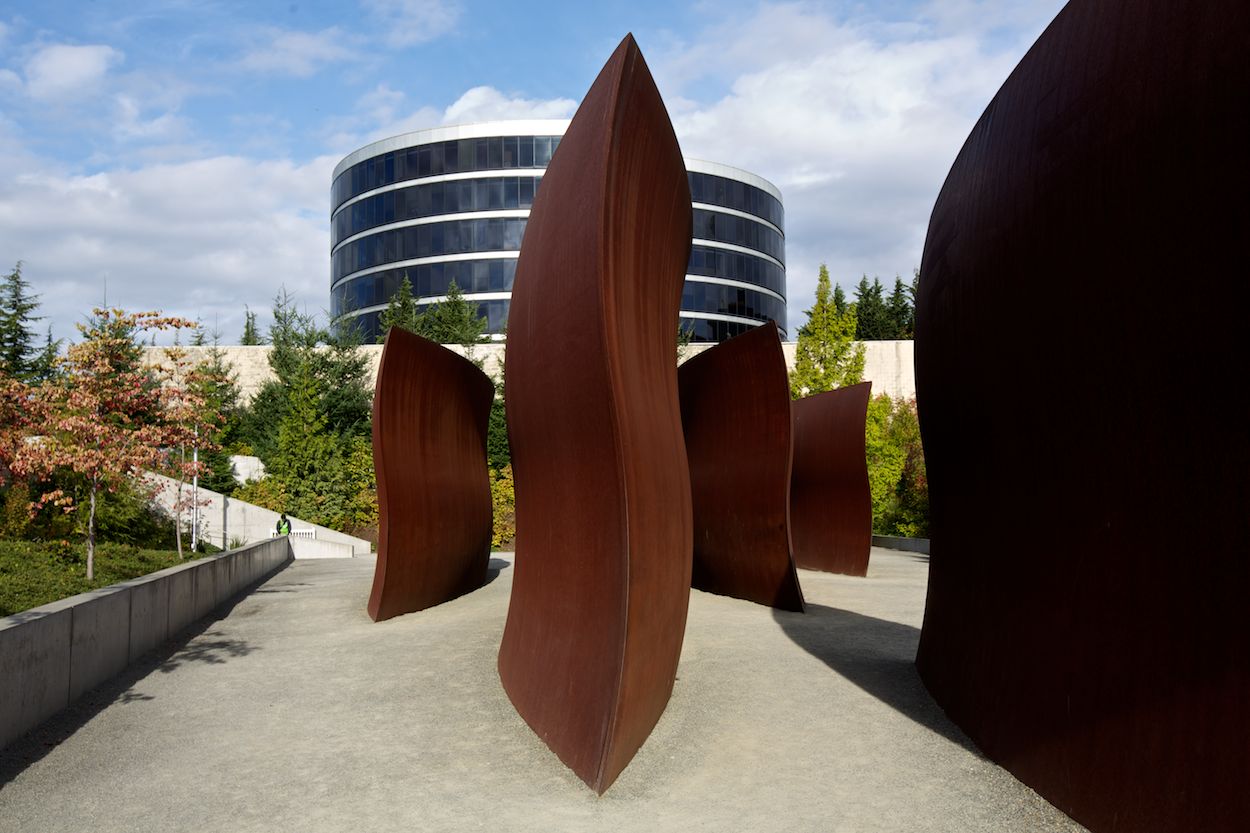
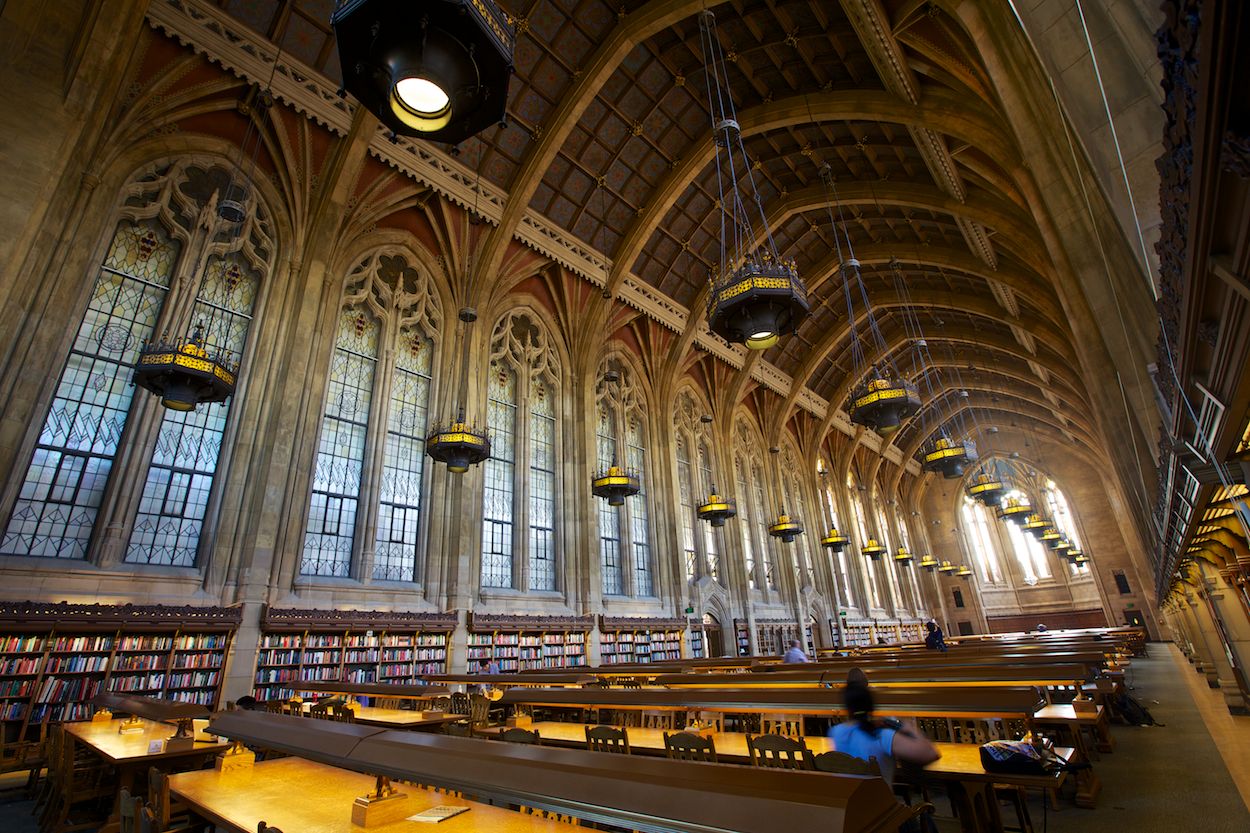

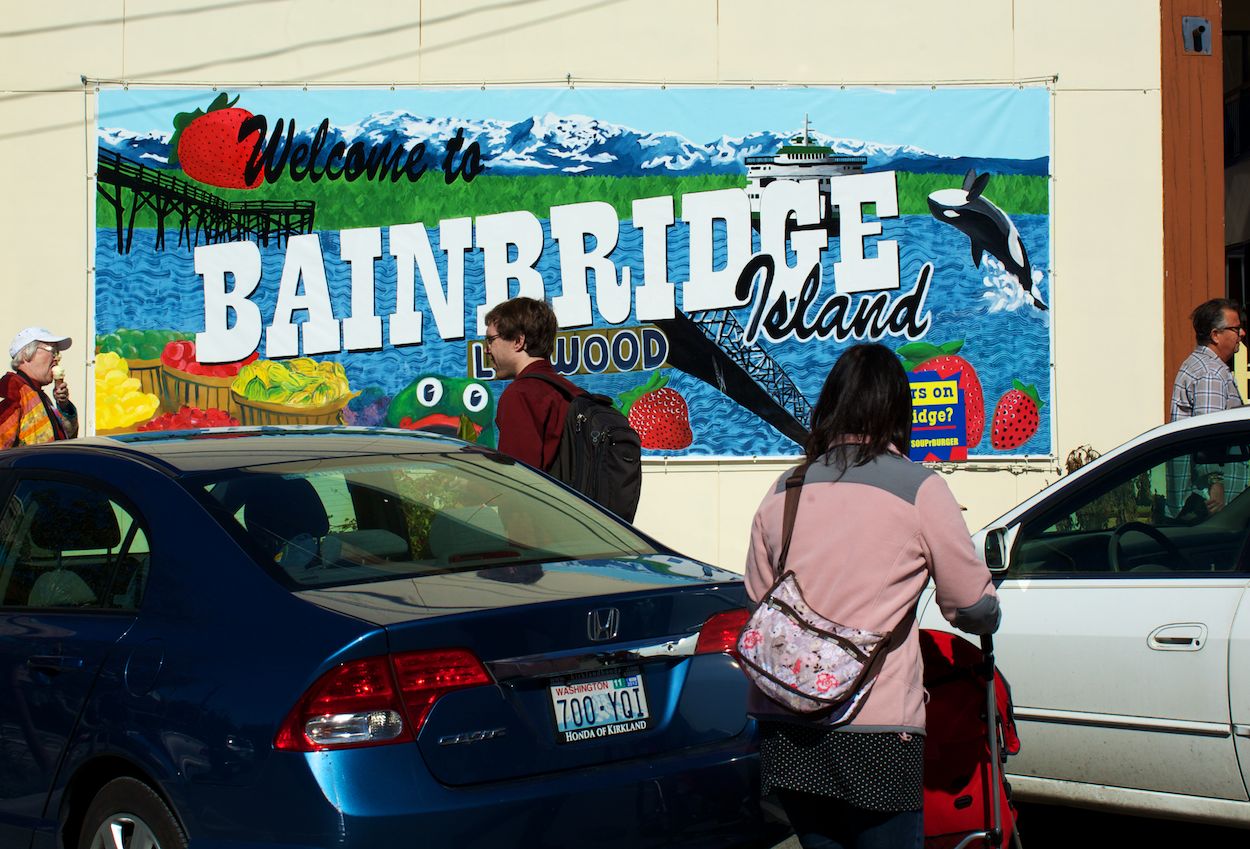
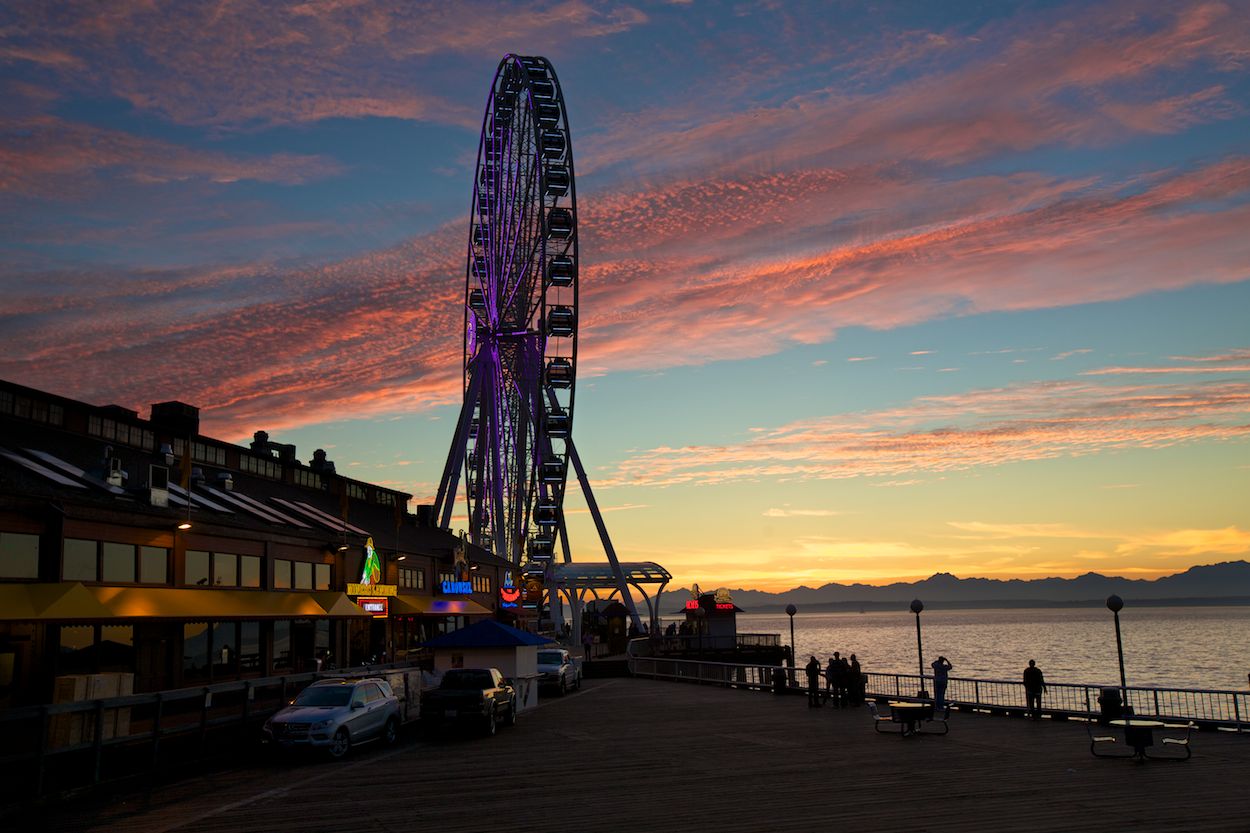
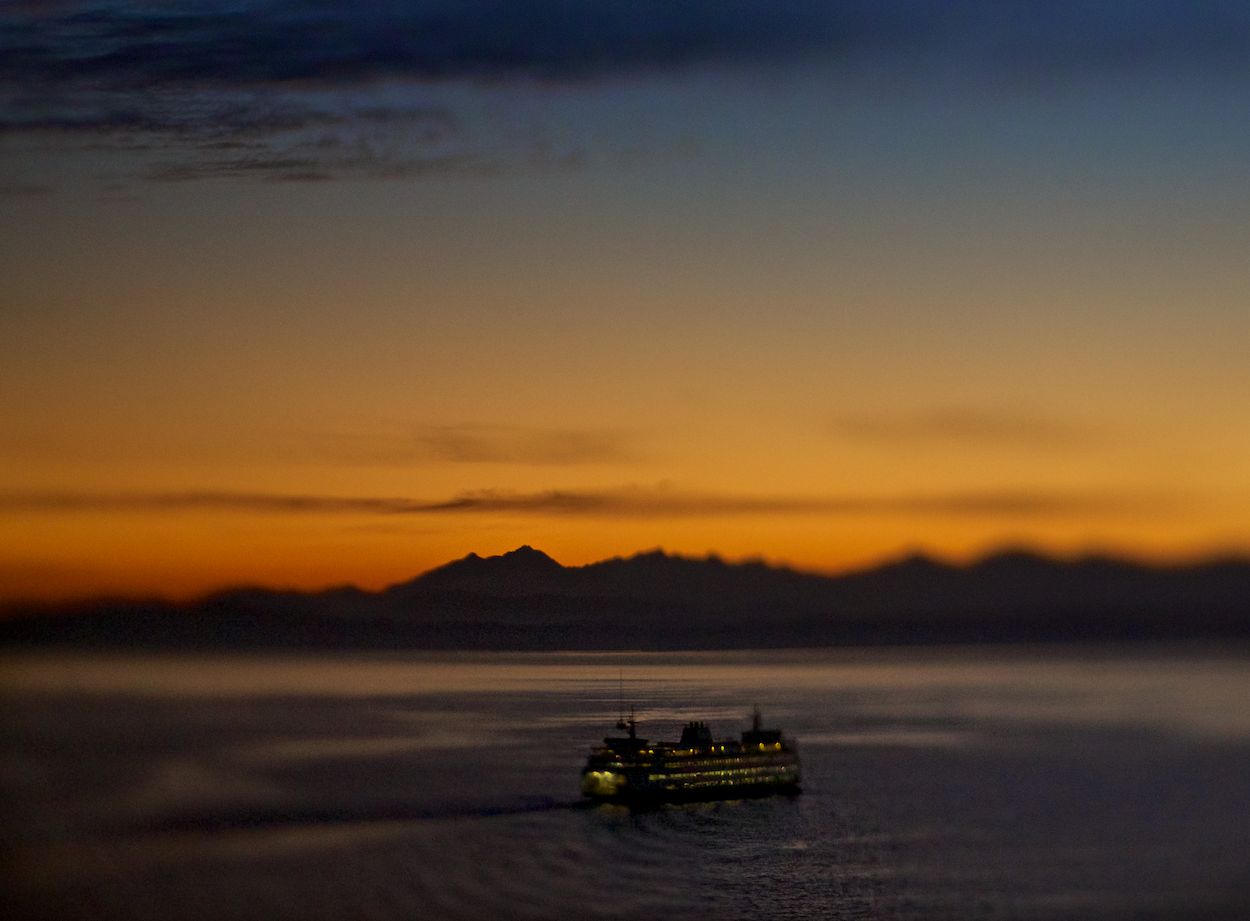
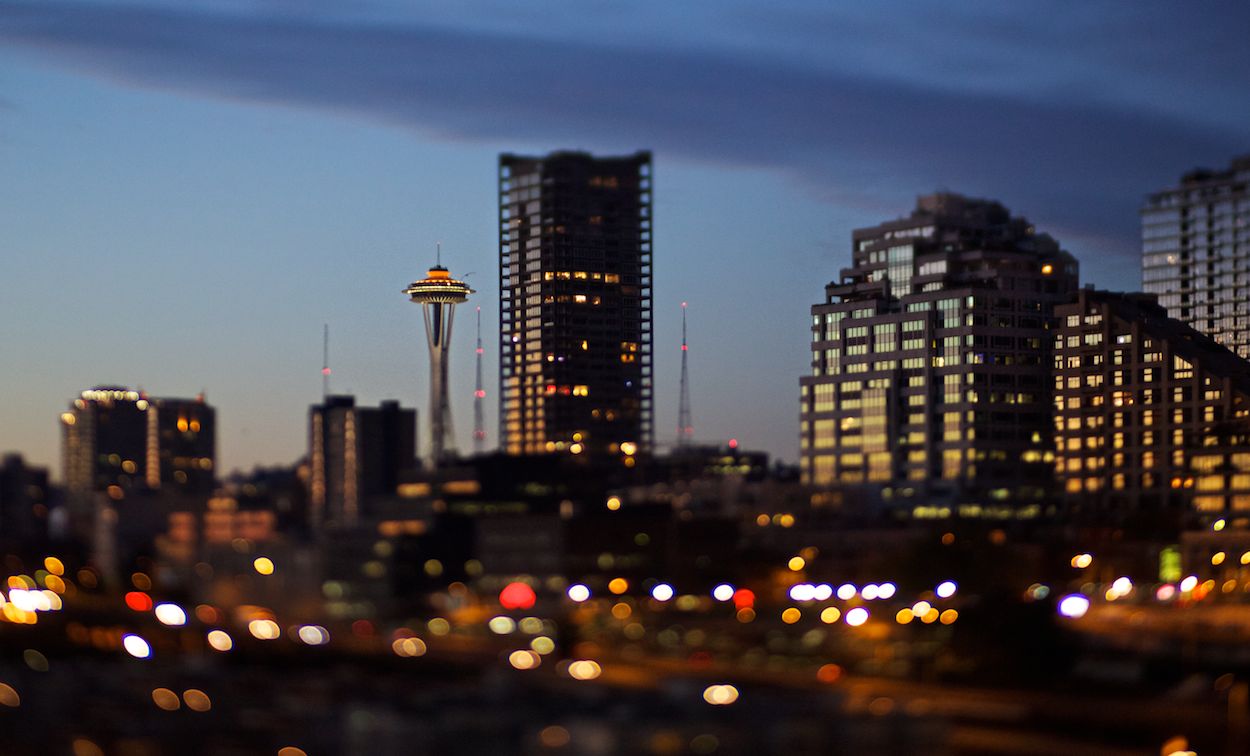
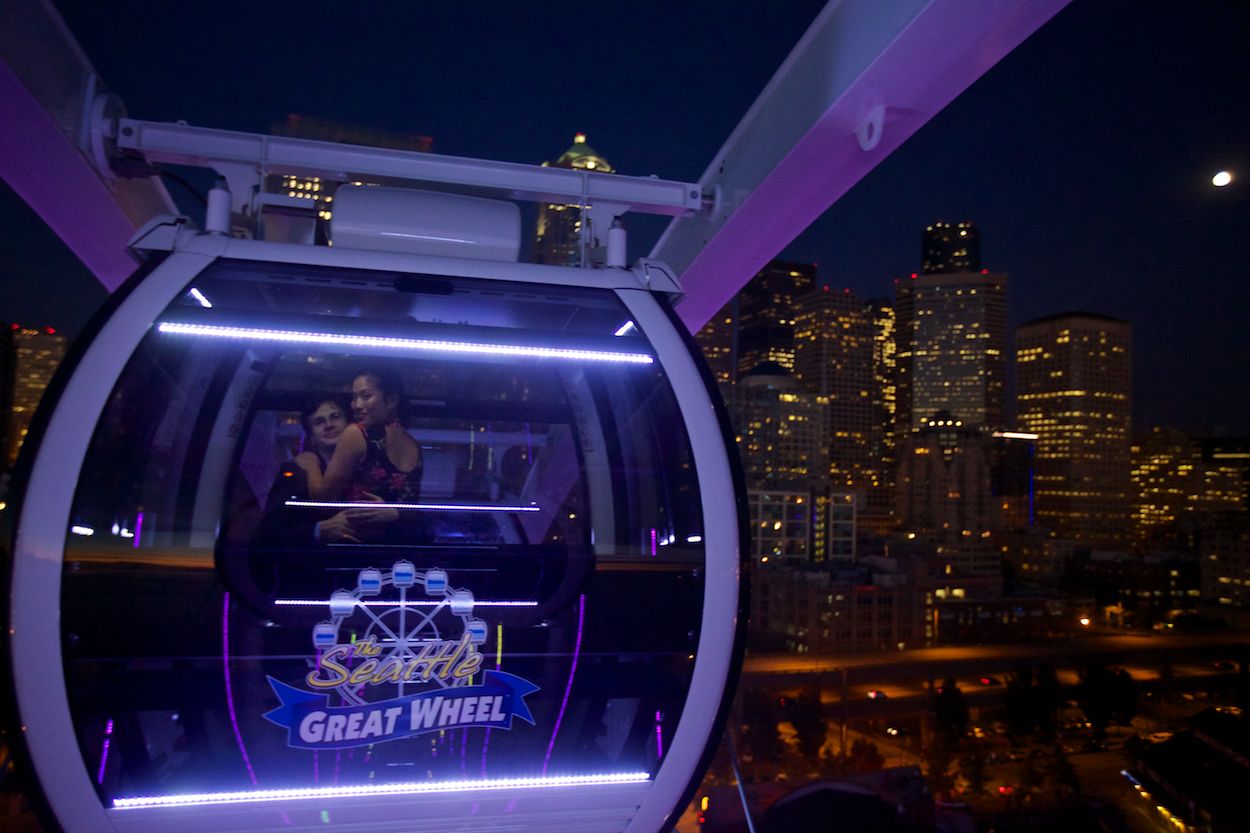
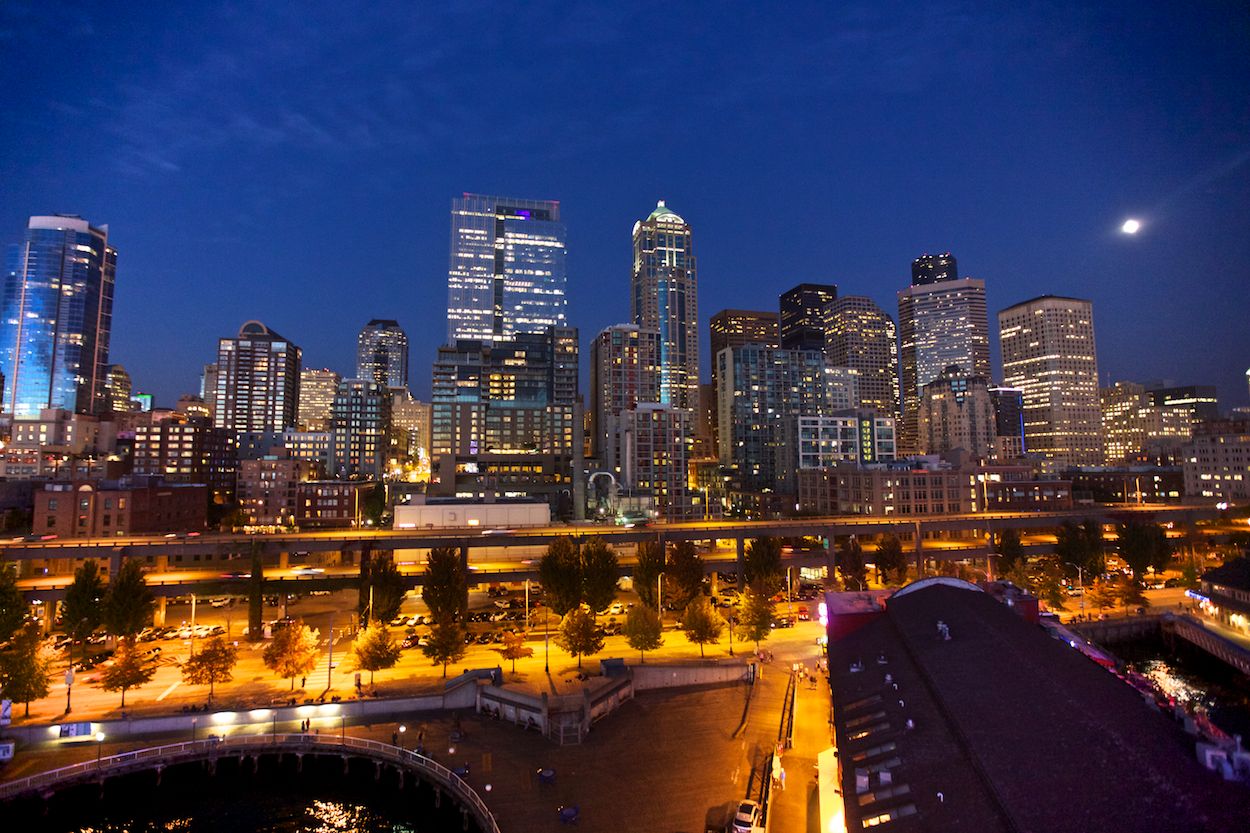

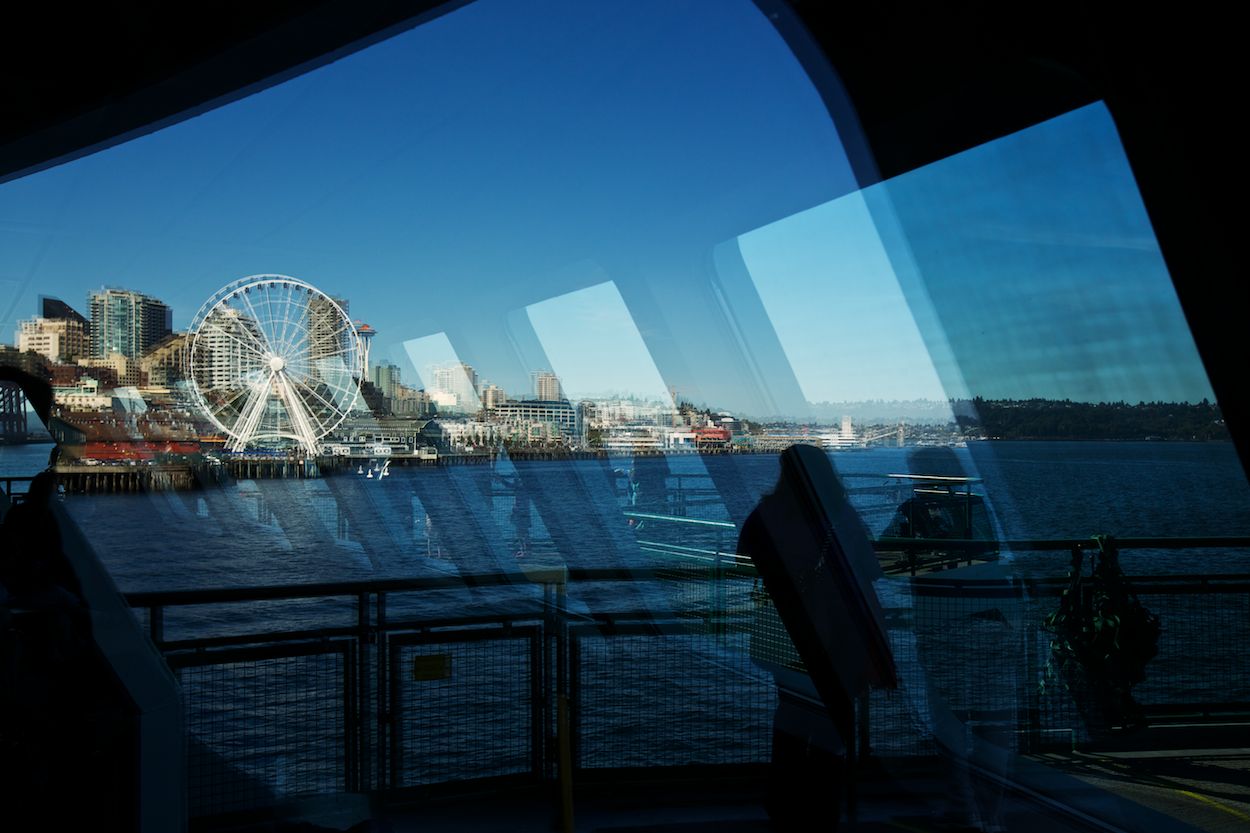
Video: Curt Carlyle, professional juggler in Portland, Oregon
Rob Finch enlisted me to work on this short demonstration video with juggler Curt Carlyle. He wrote a nice blog post here. We ran four cameras and did a 20-minute interview with him. Curt did a great job and had some impressive moves.
©The Oregonian
Sculpture Park Seattle
Video: Dip-Netting Chinook on the Klickitat River
I spent the evening hanging out at Klickitat Falls watching the Yakama Indians dip net fish. They are true experts at catching fish this way. James Kiona grew up as boy watching his grandfather dip-net salmon at the Celilo Falls and has taught his own son how to dip-net on the Klickitat at Lyle Falls. Even though 60 percent of the chinook have already passed through, the were still catching a lot of fish.
©The Oregonian
